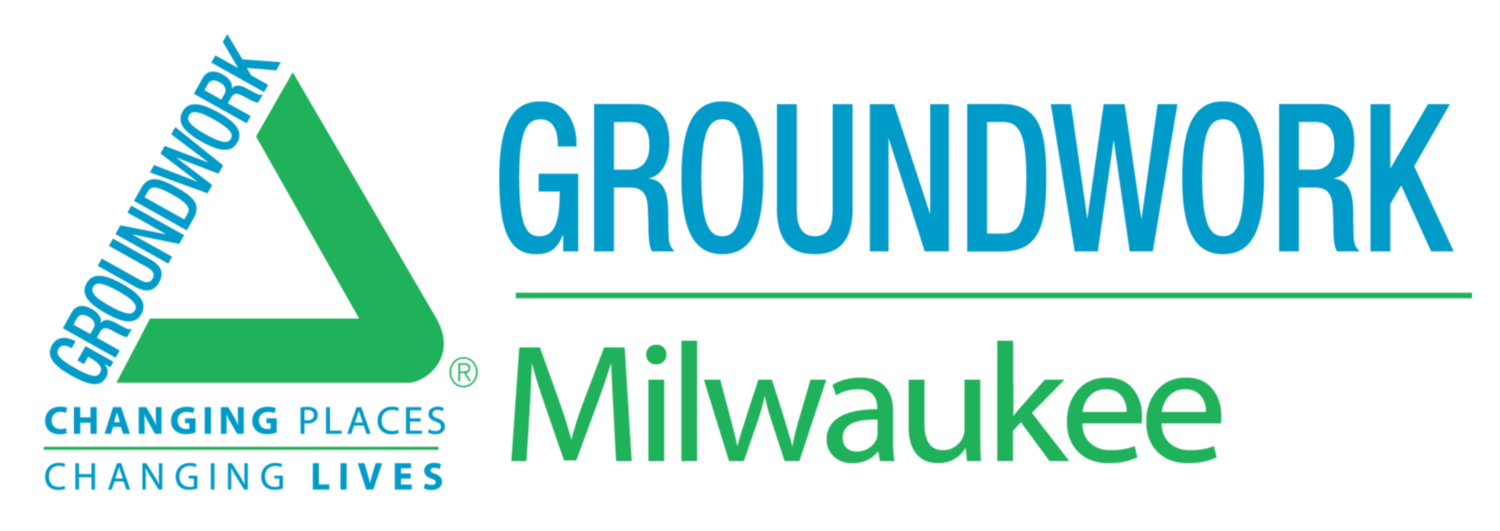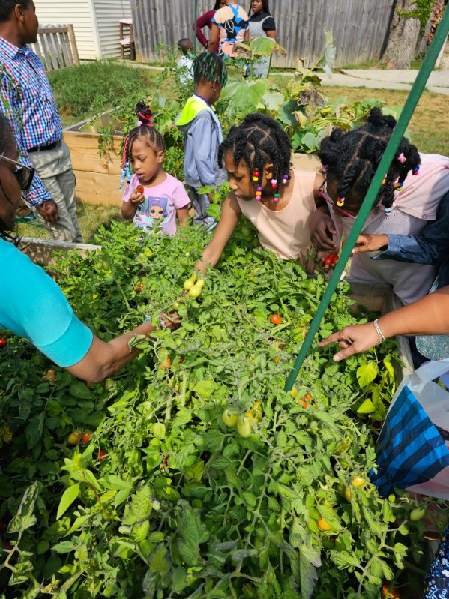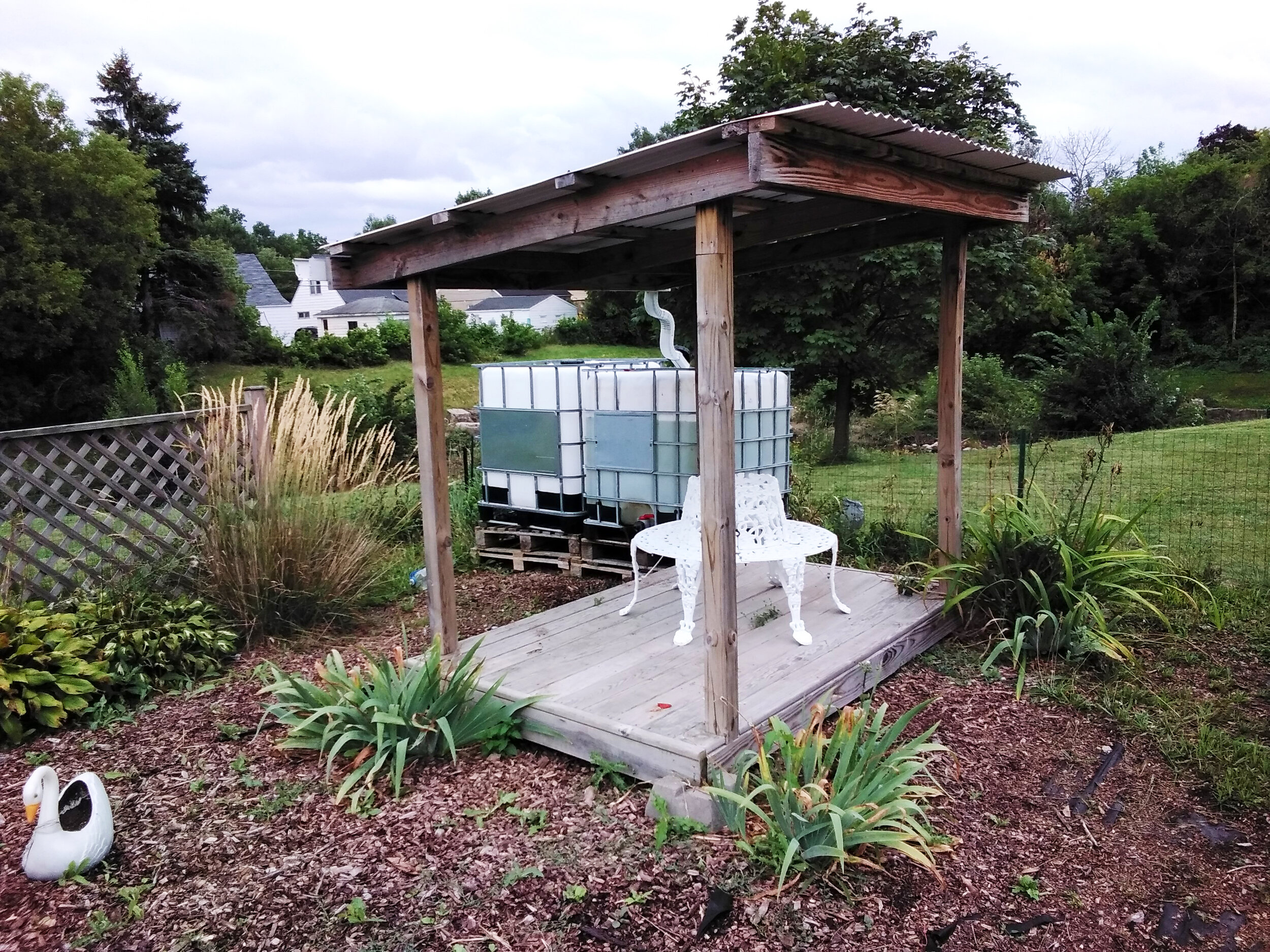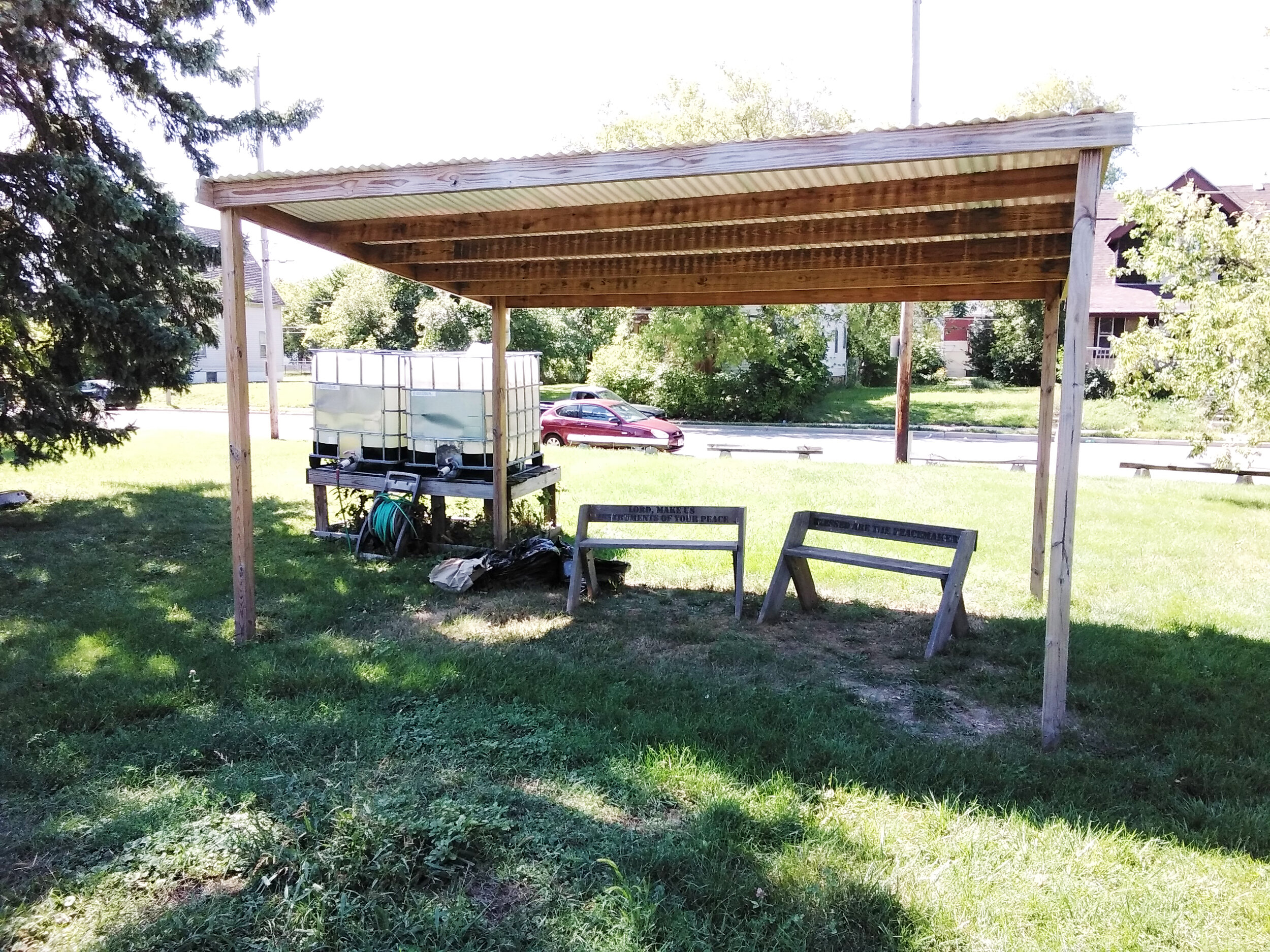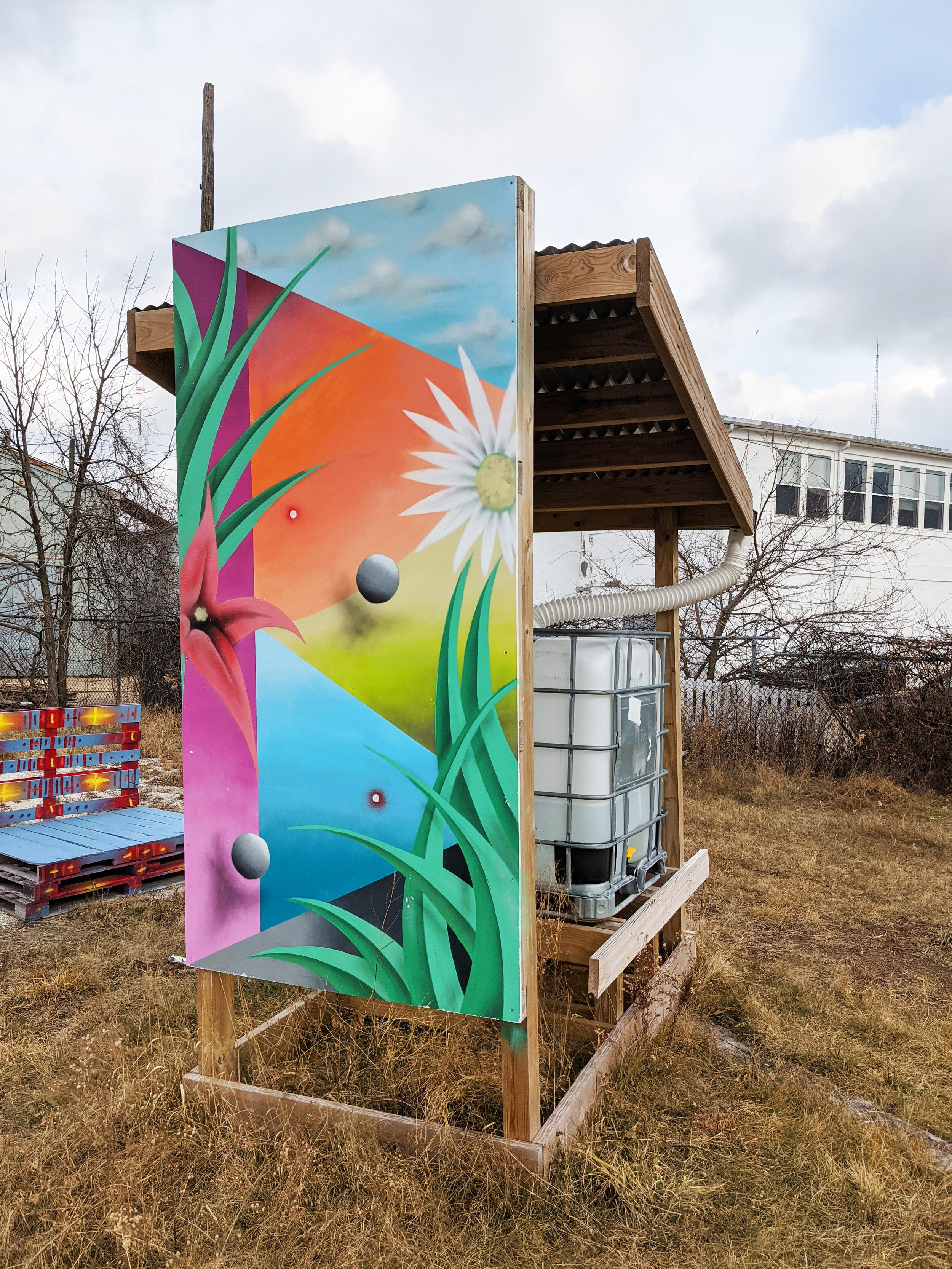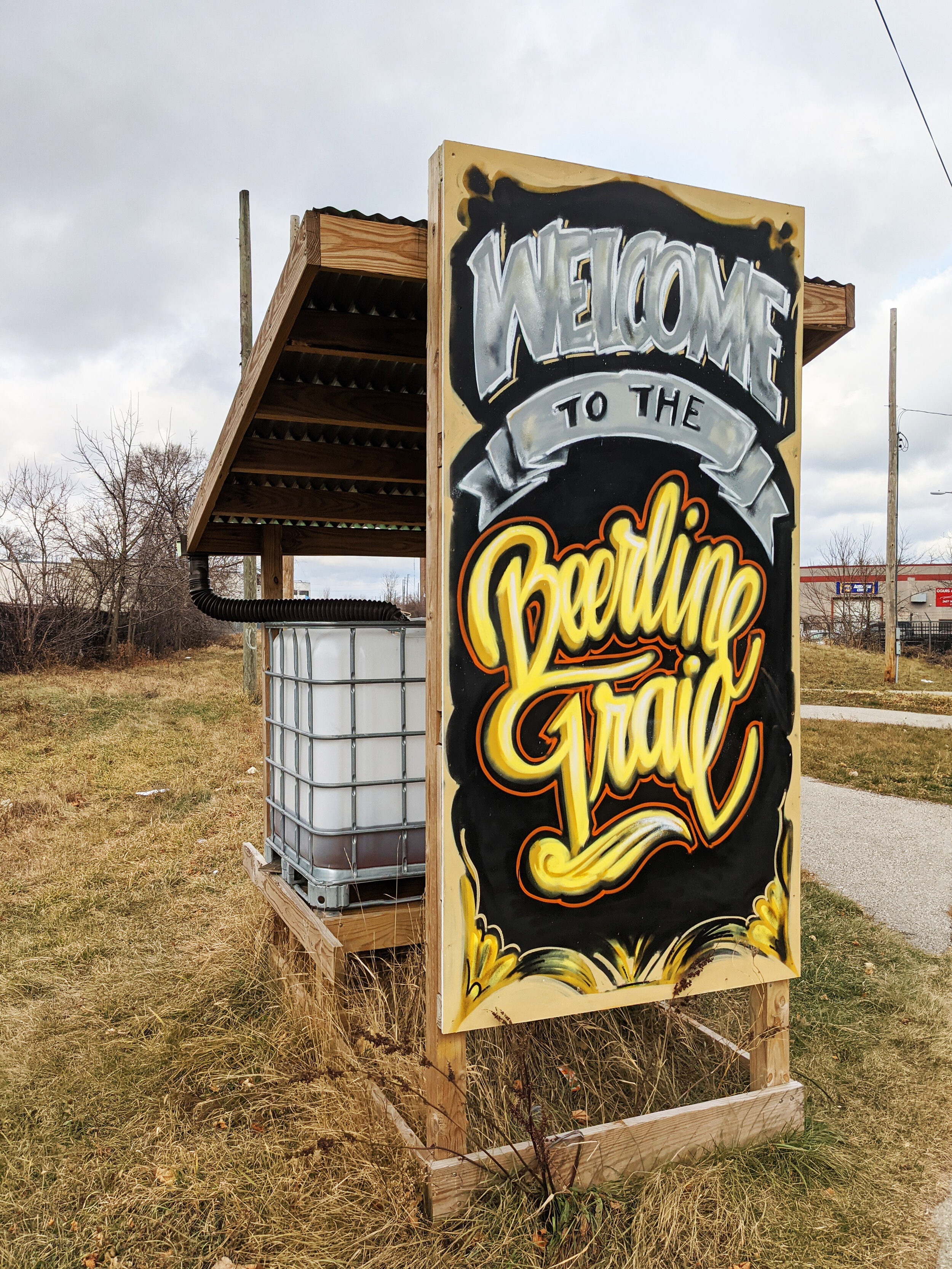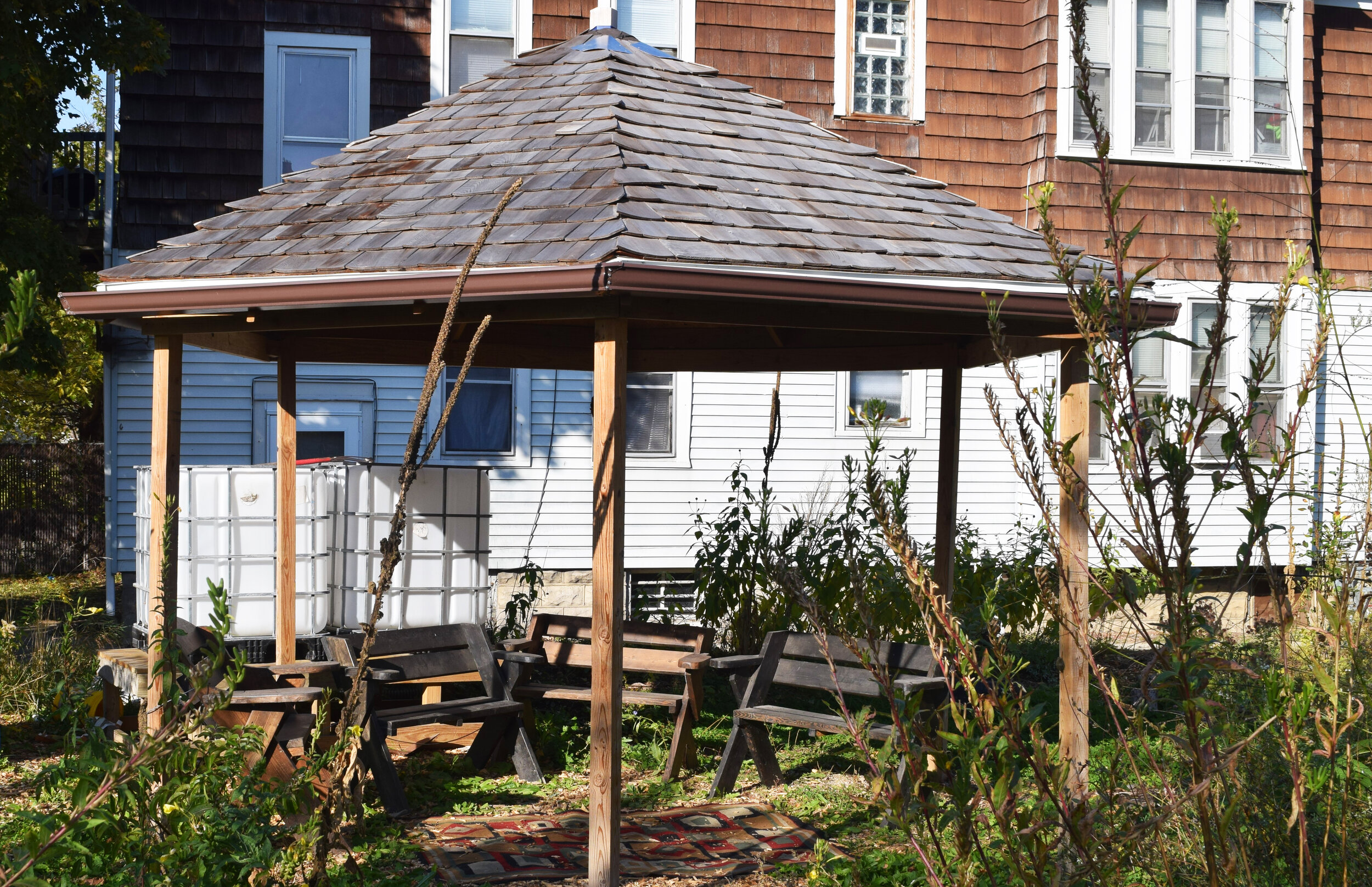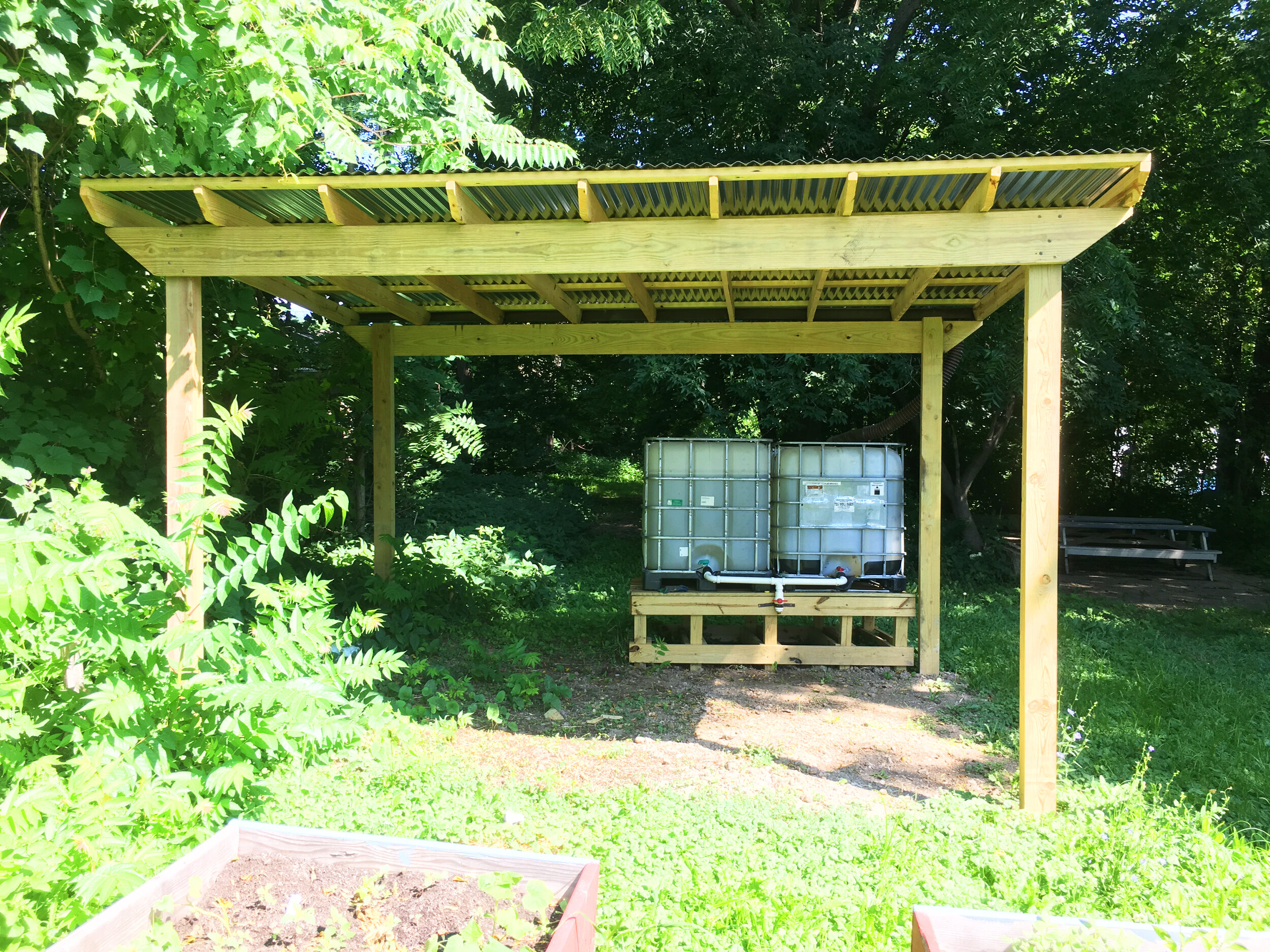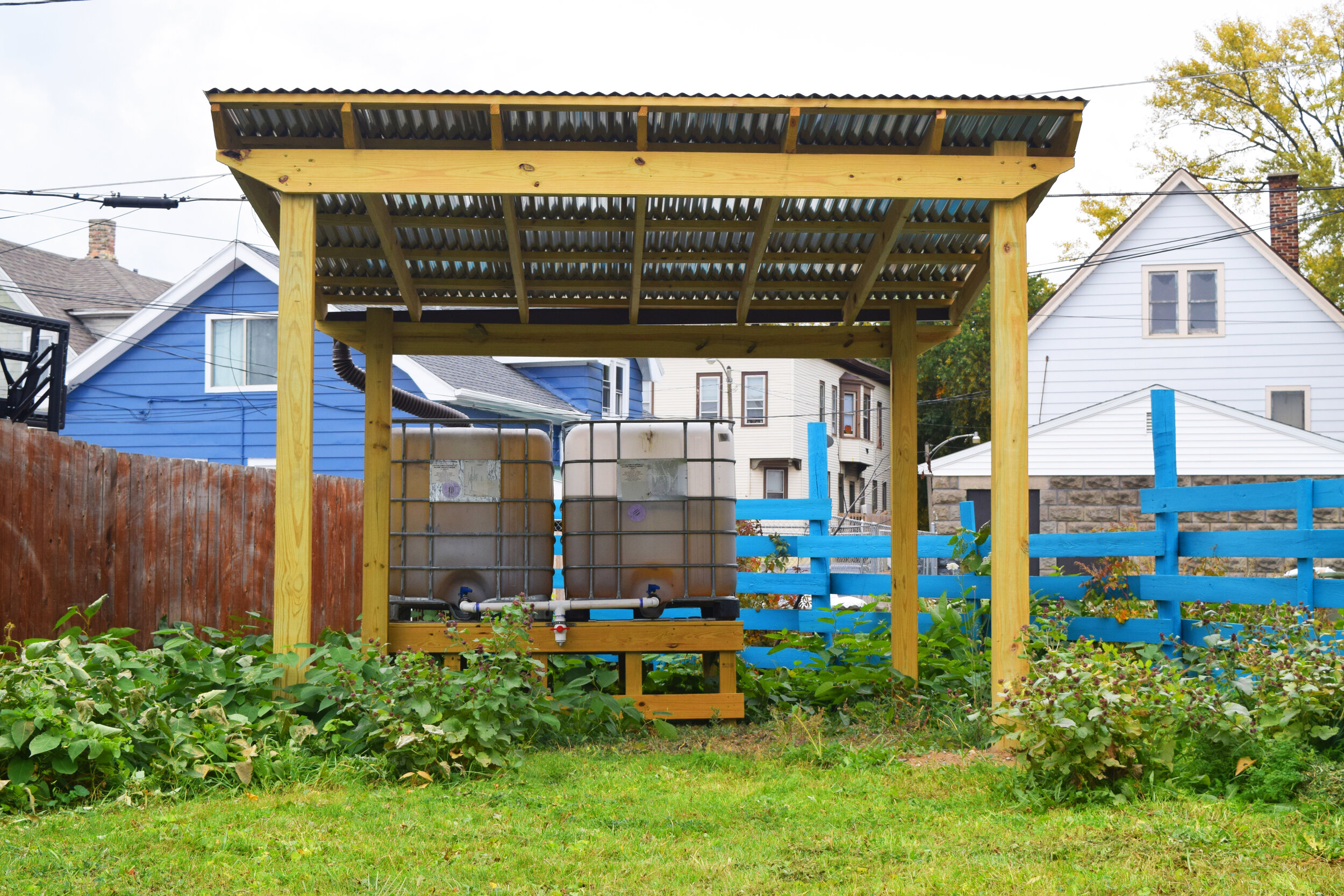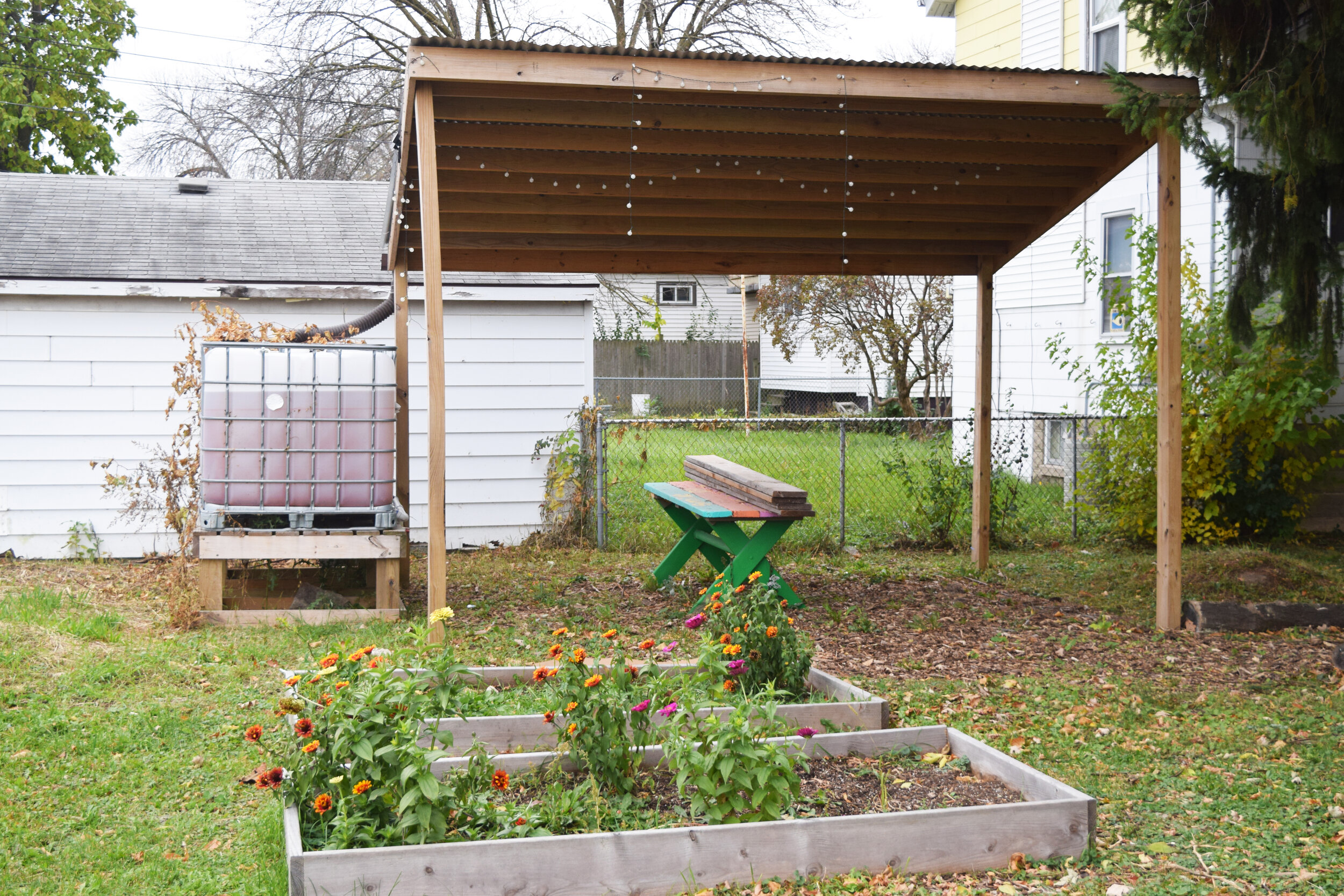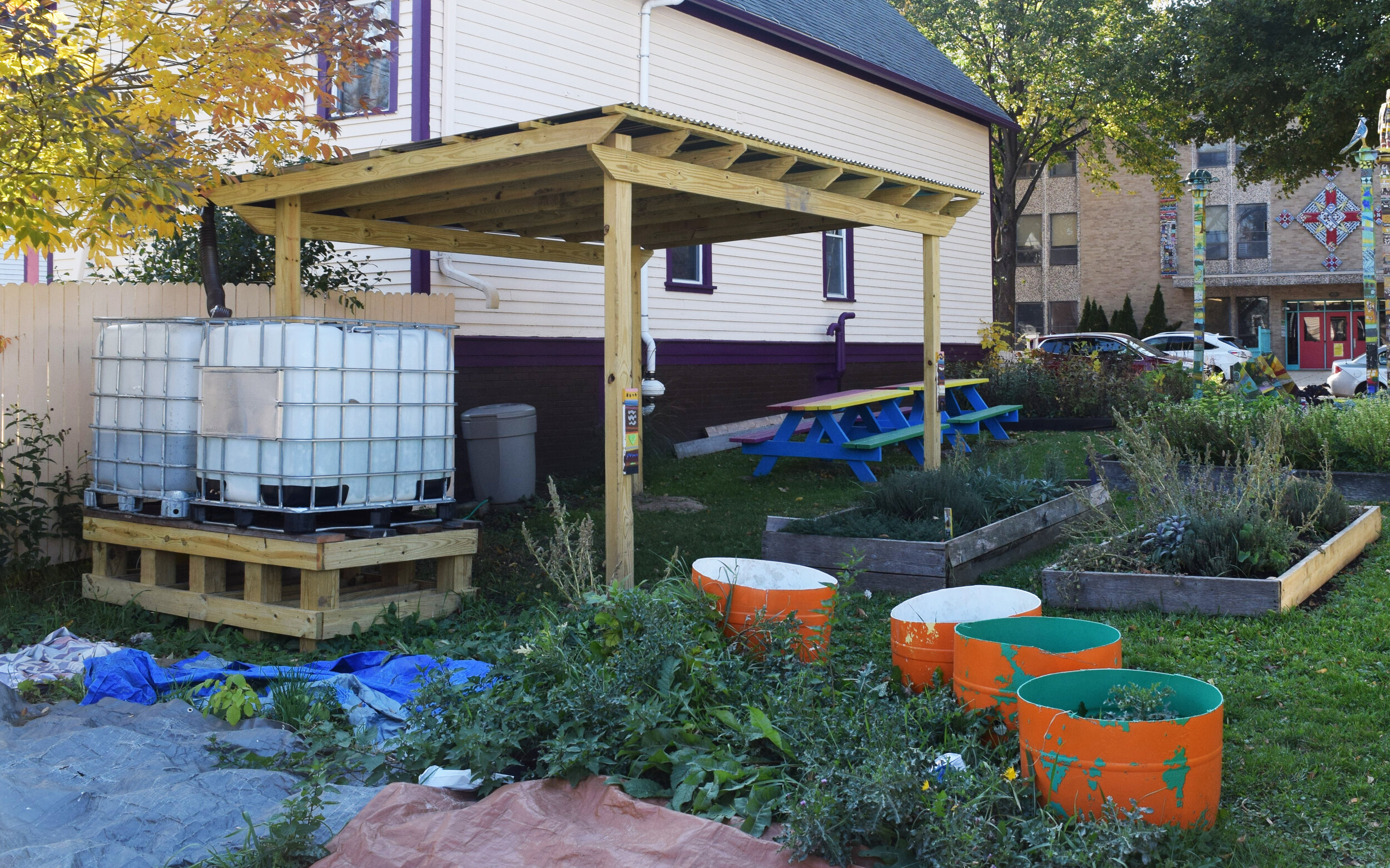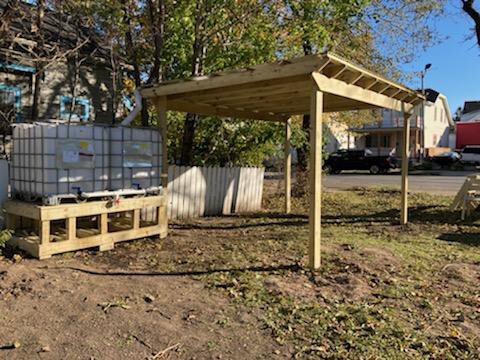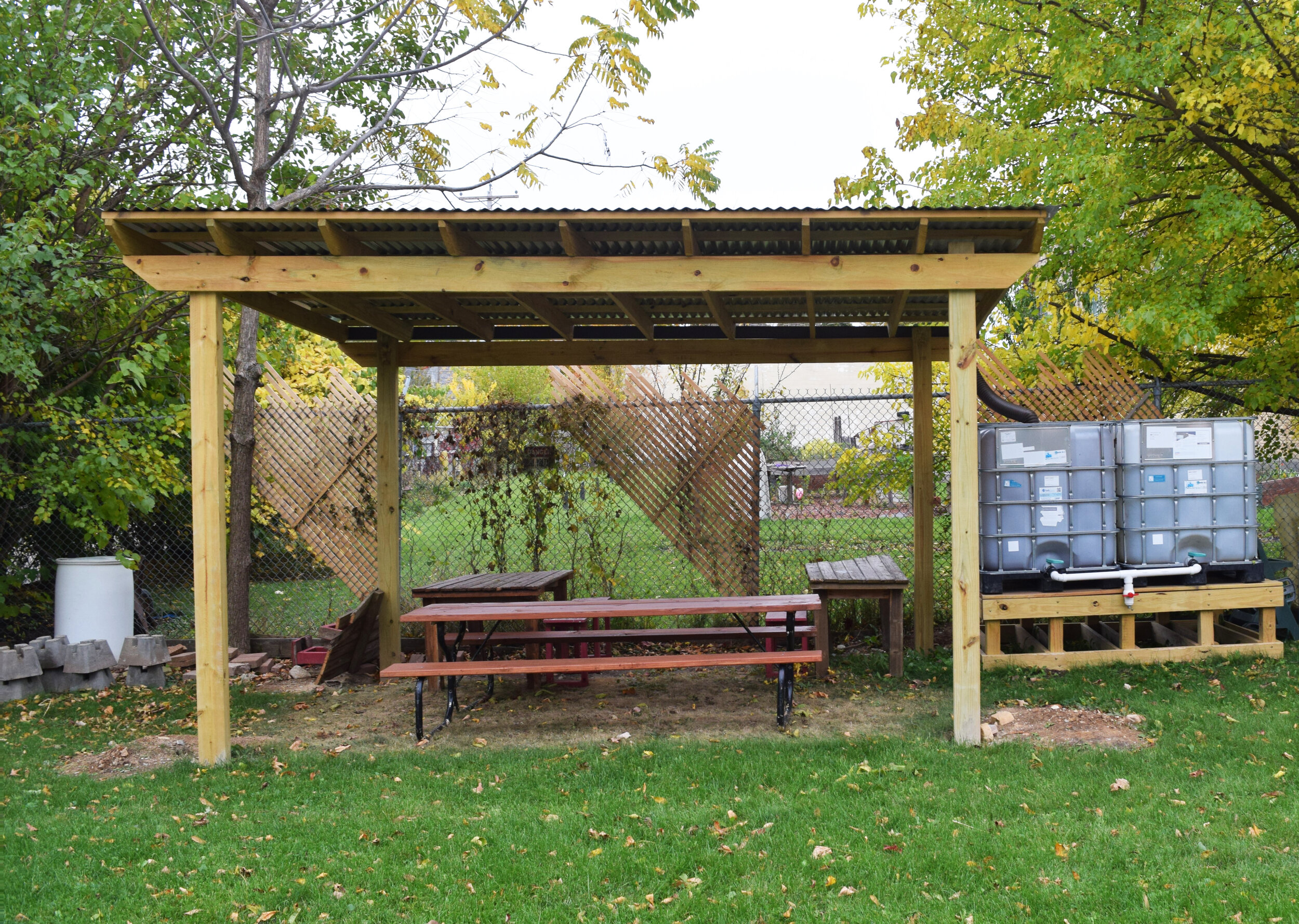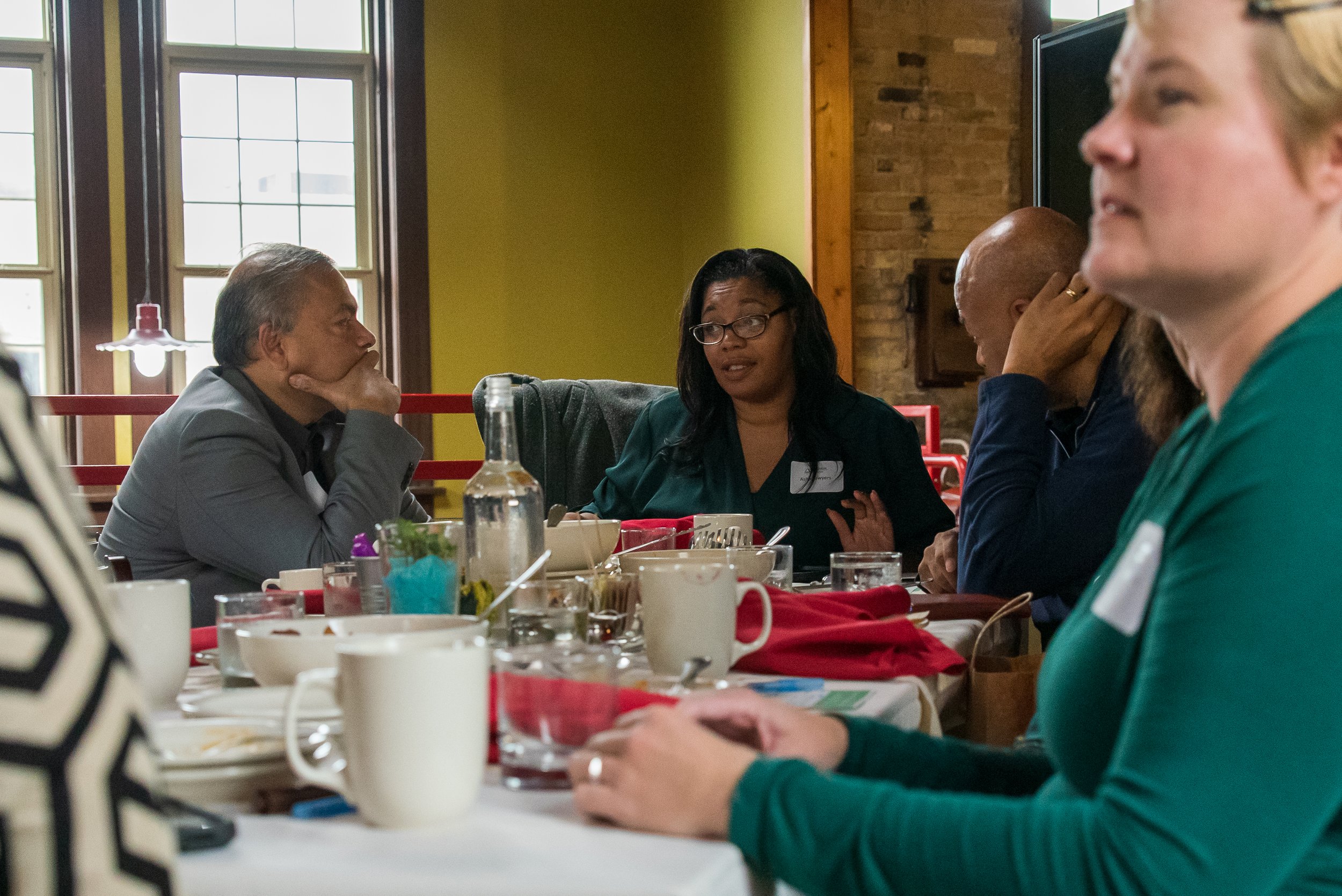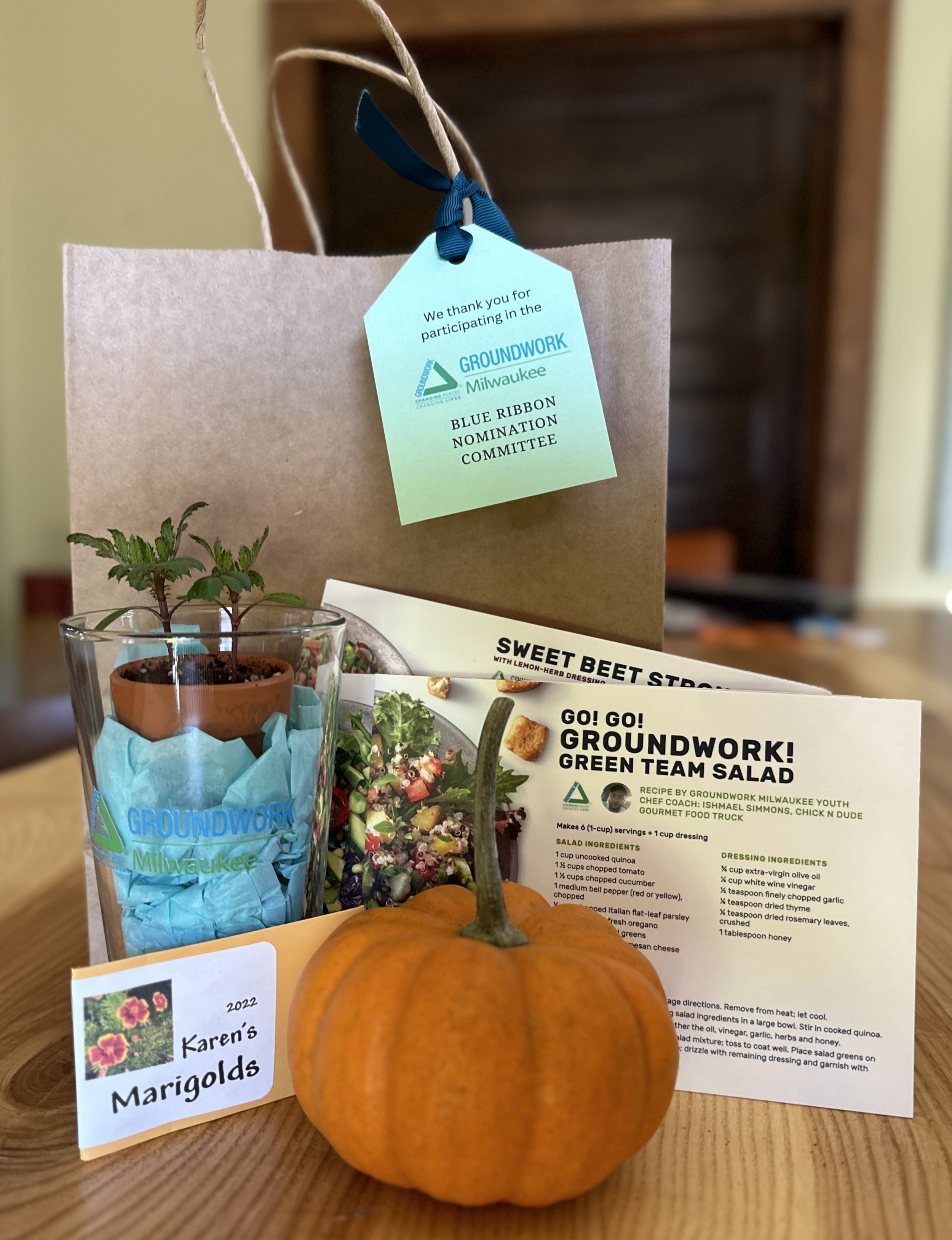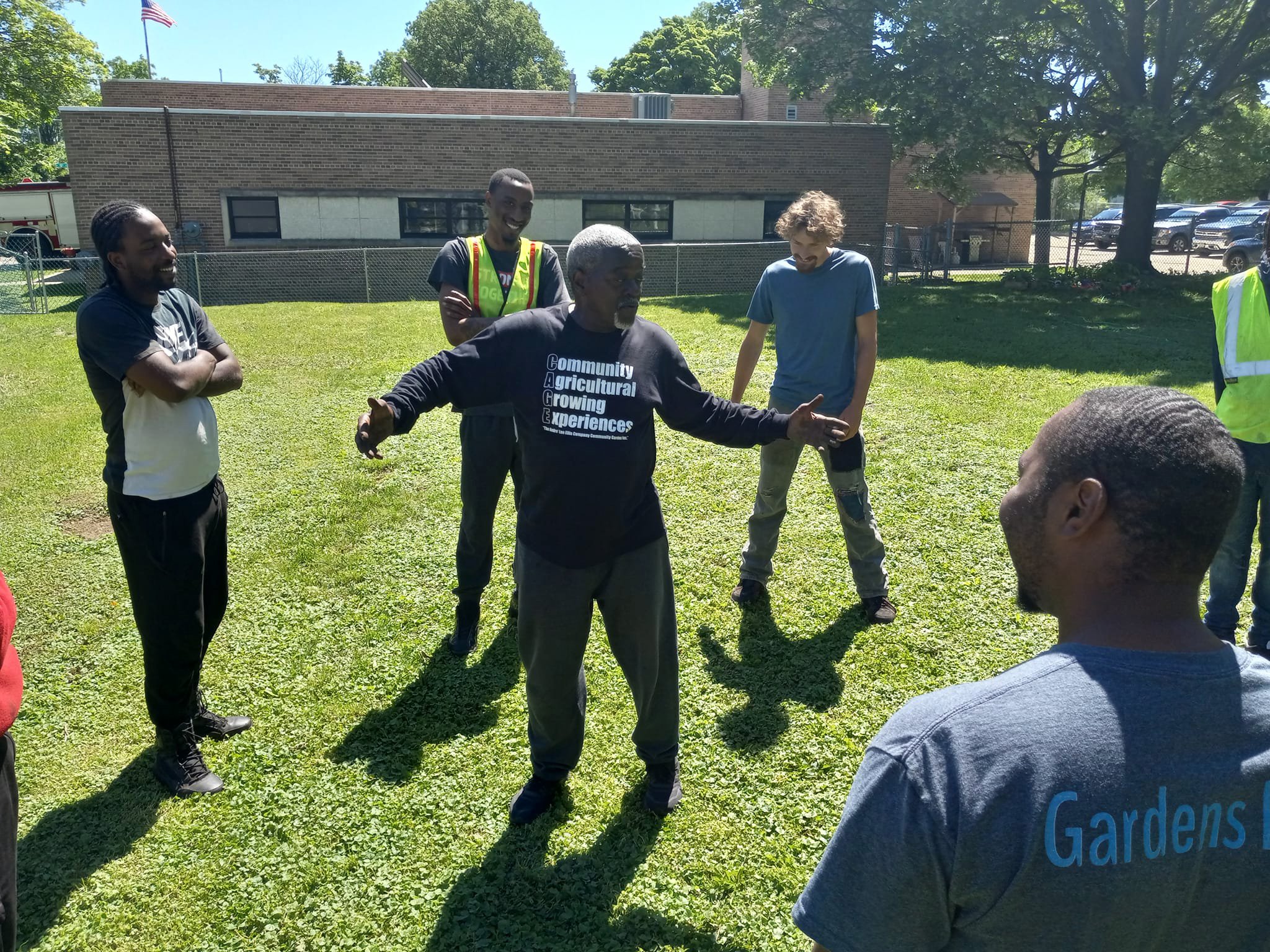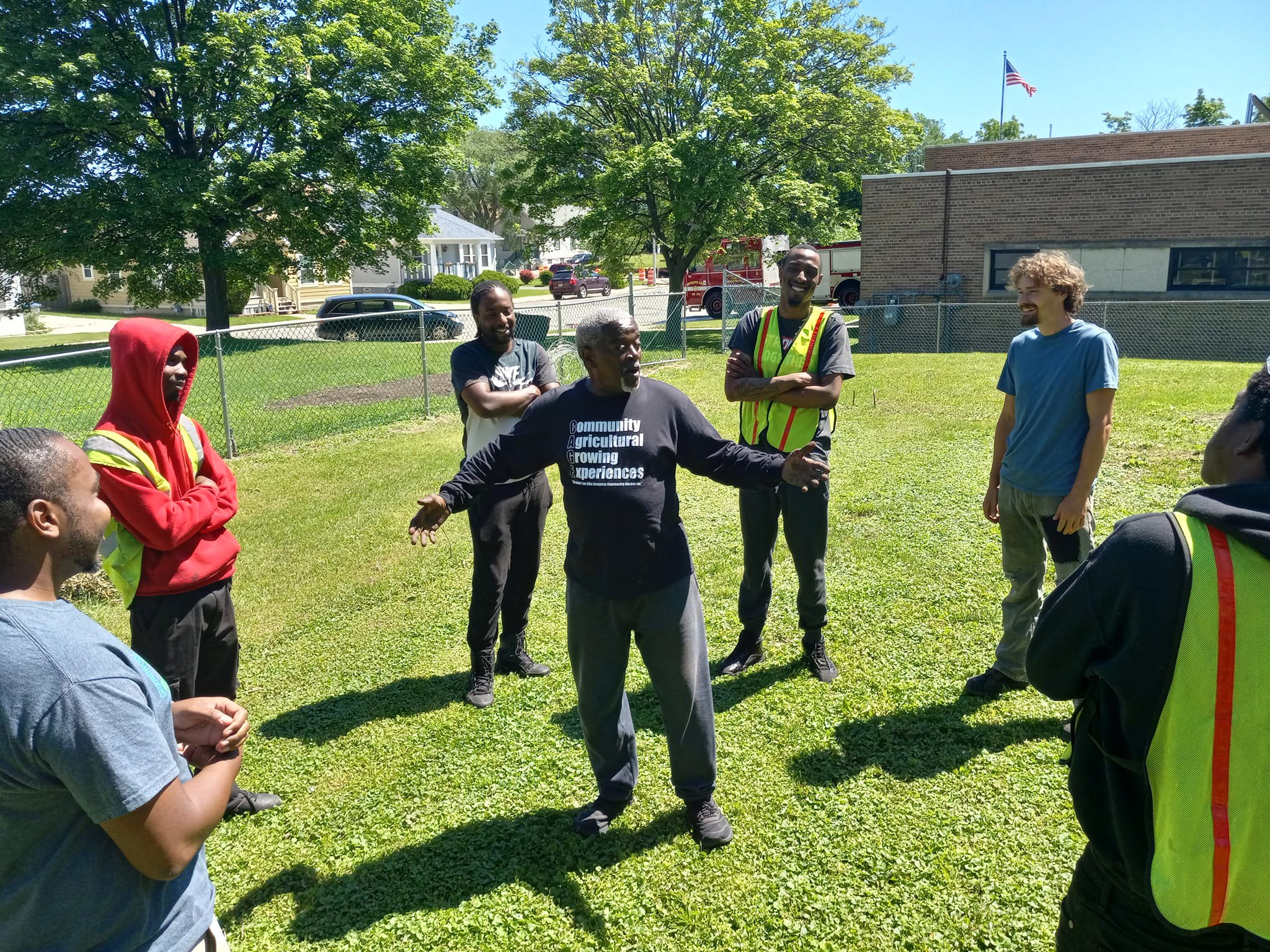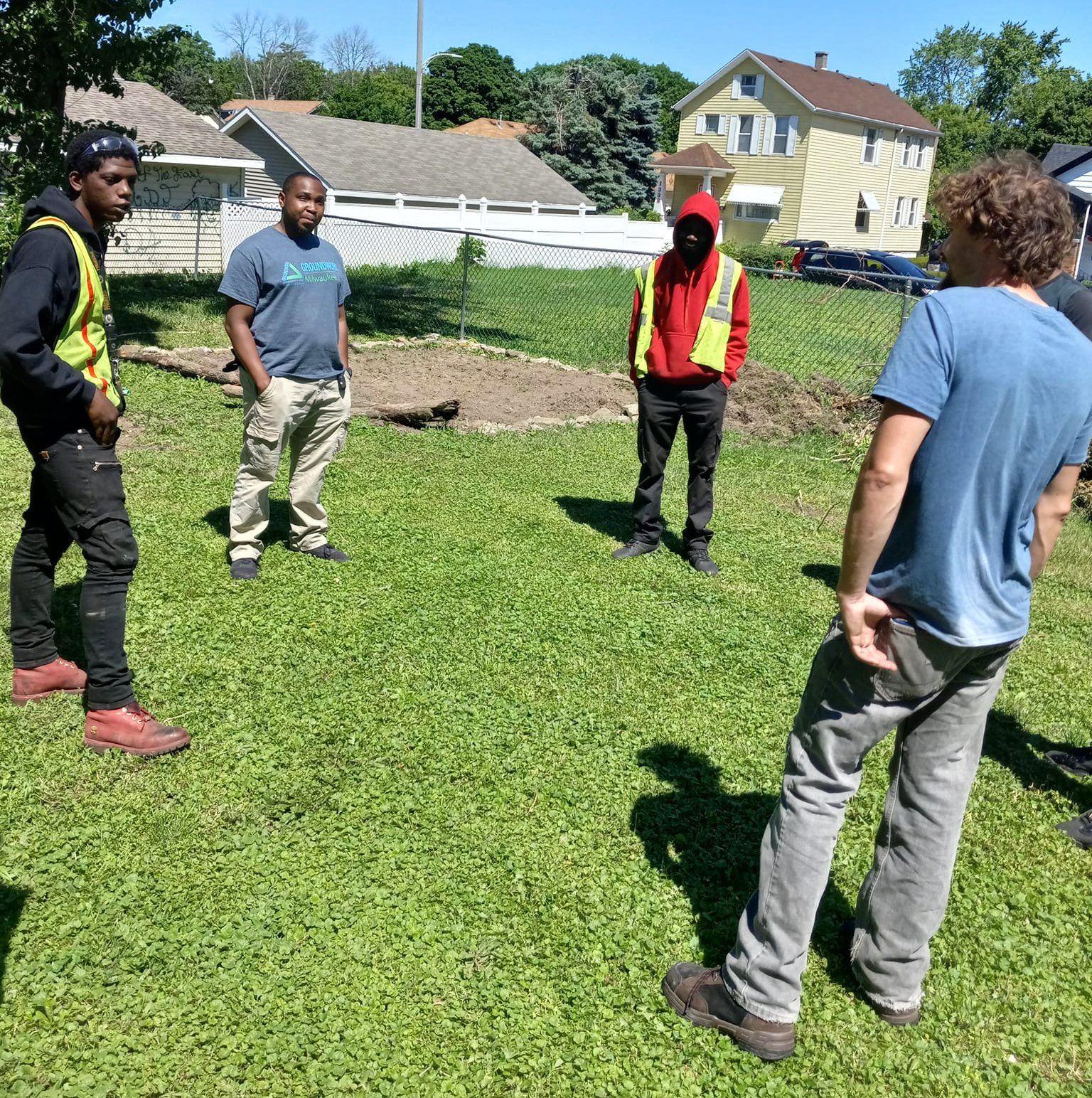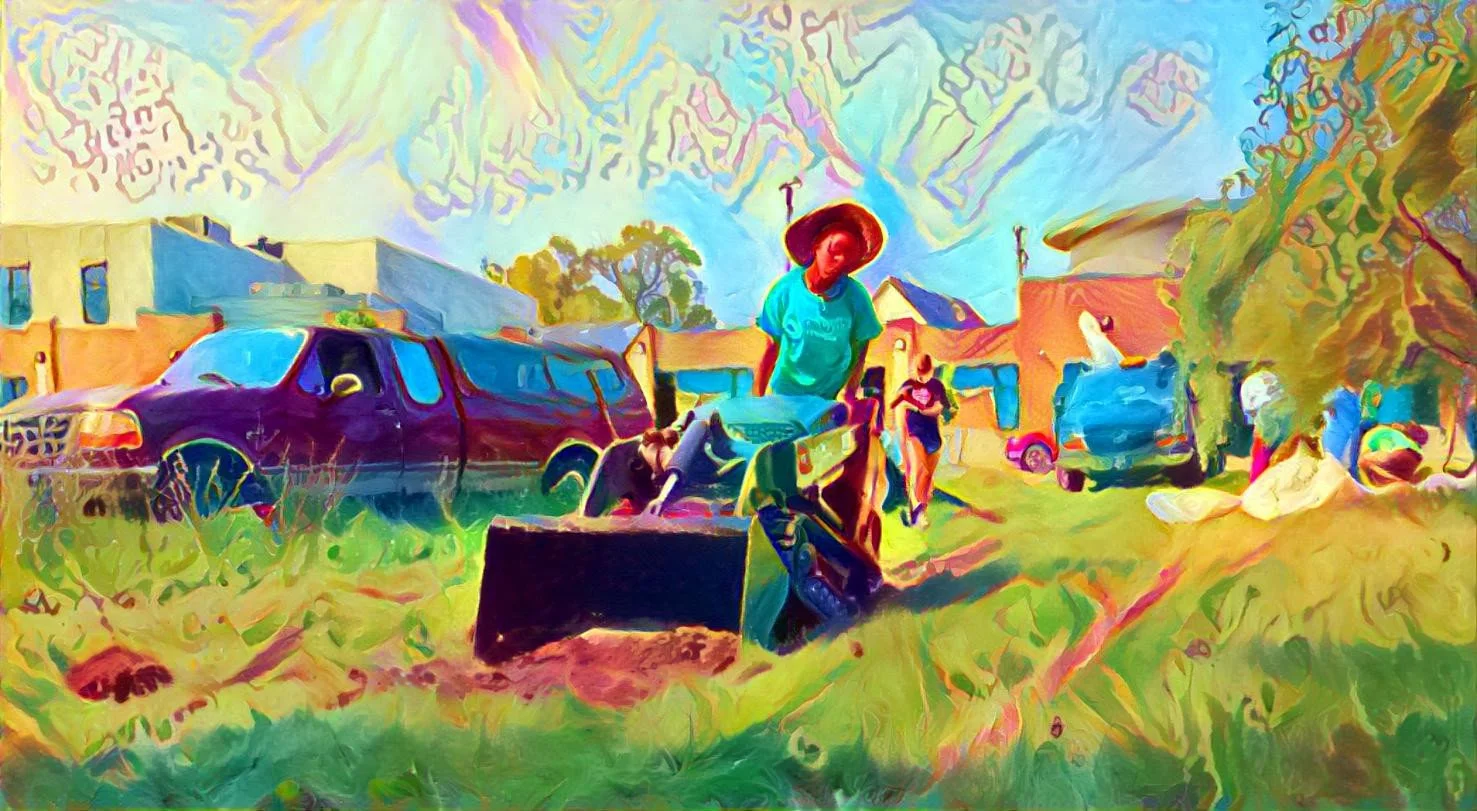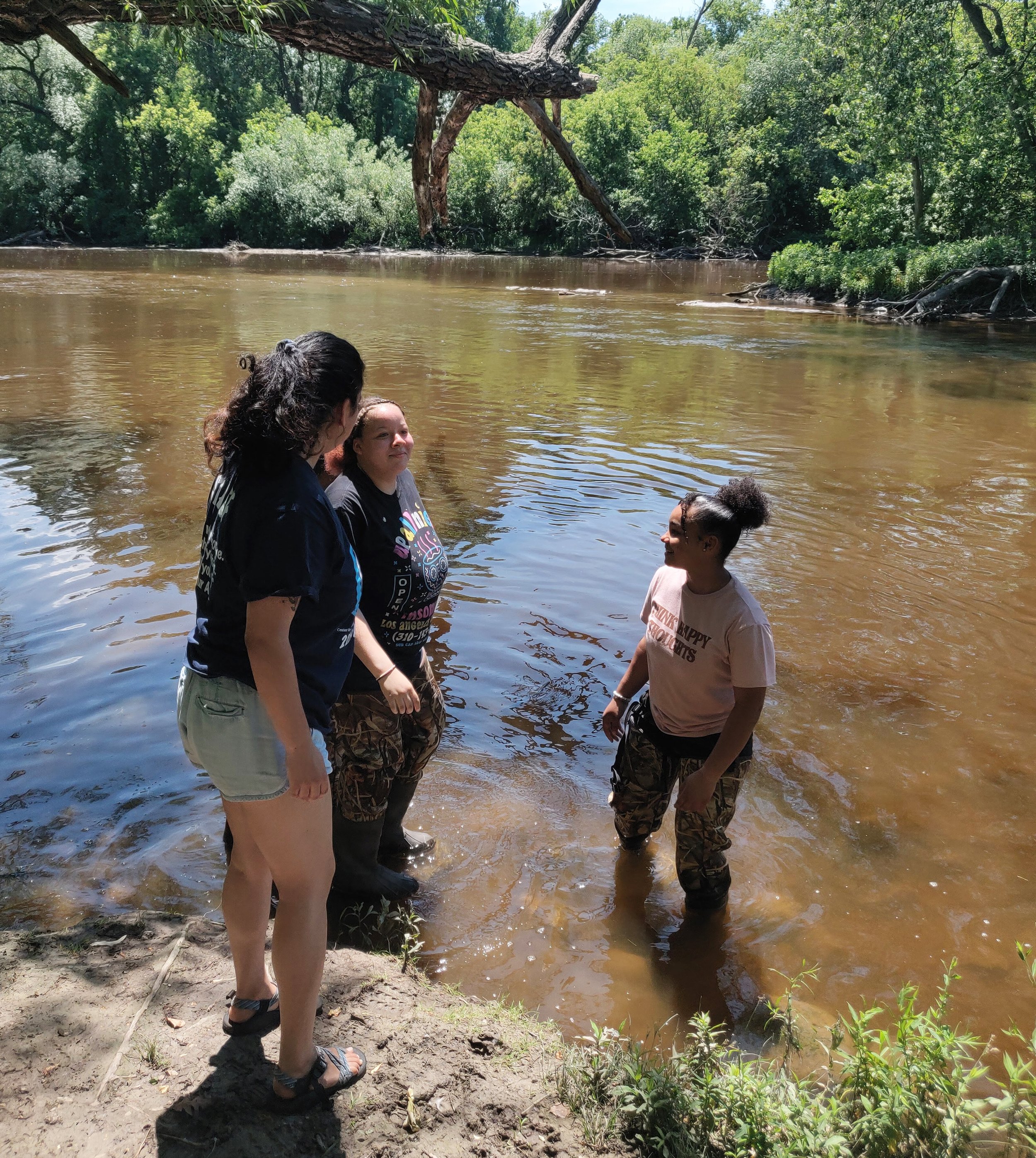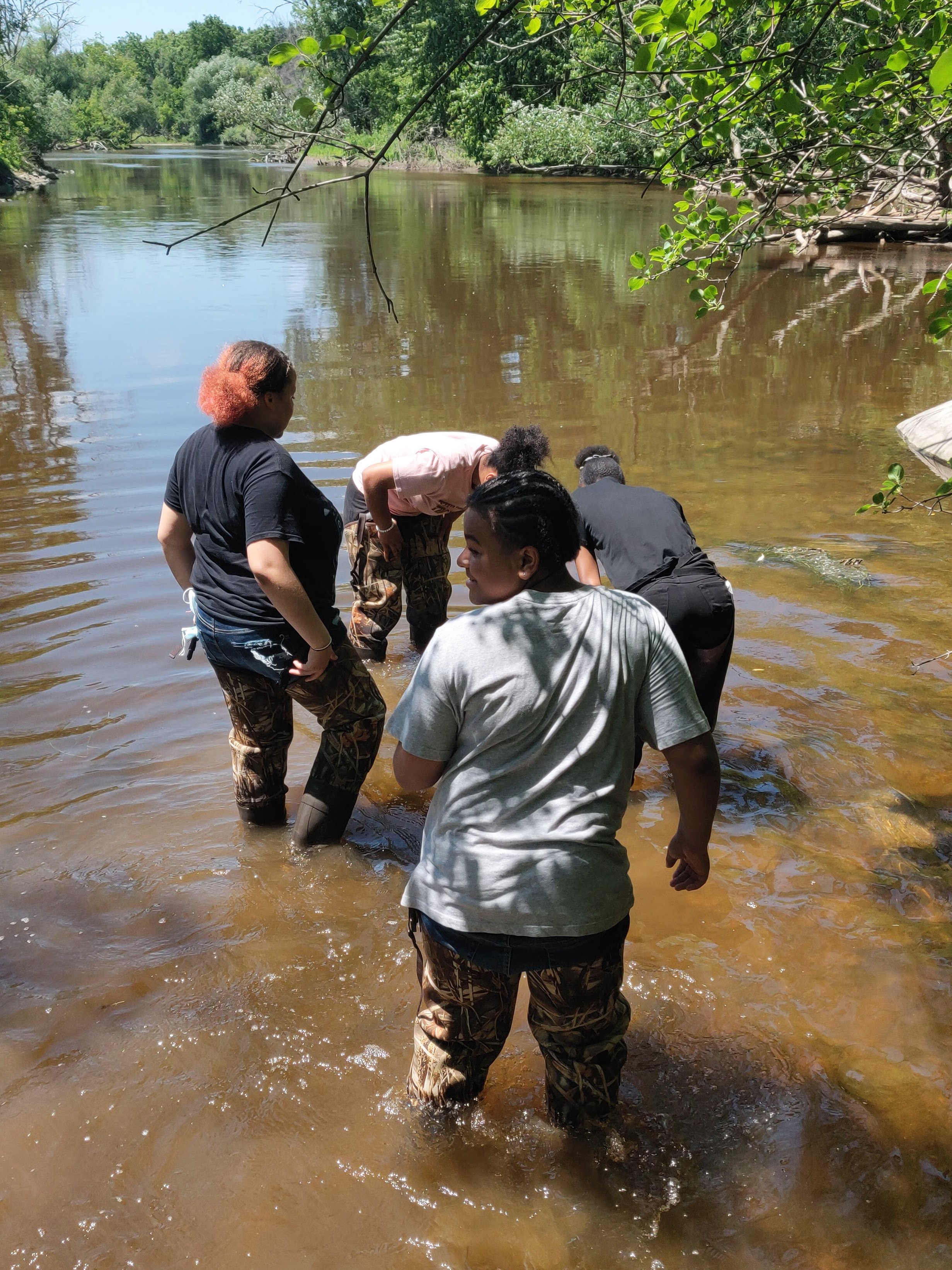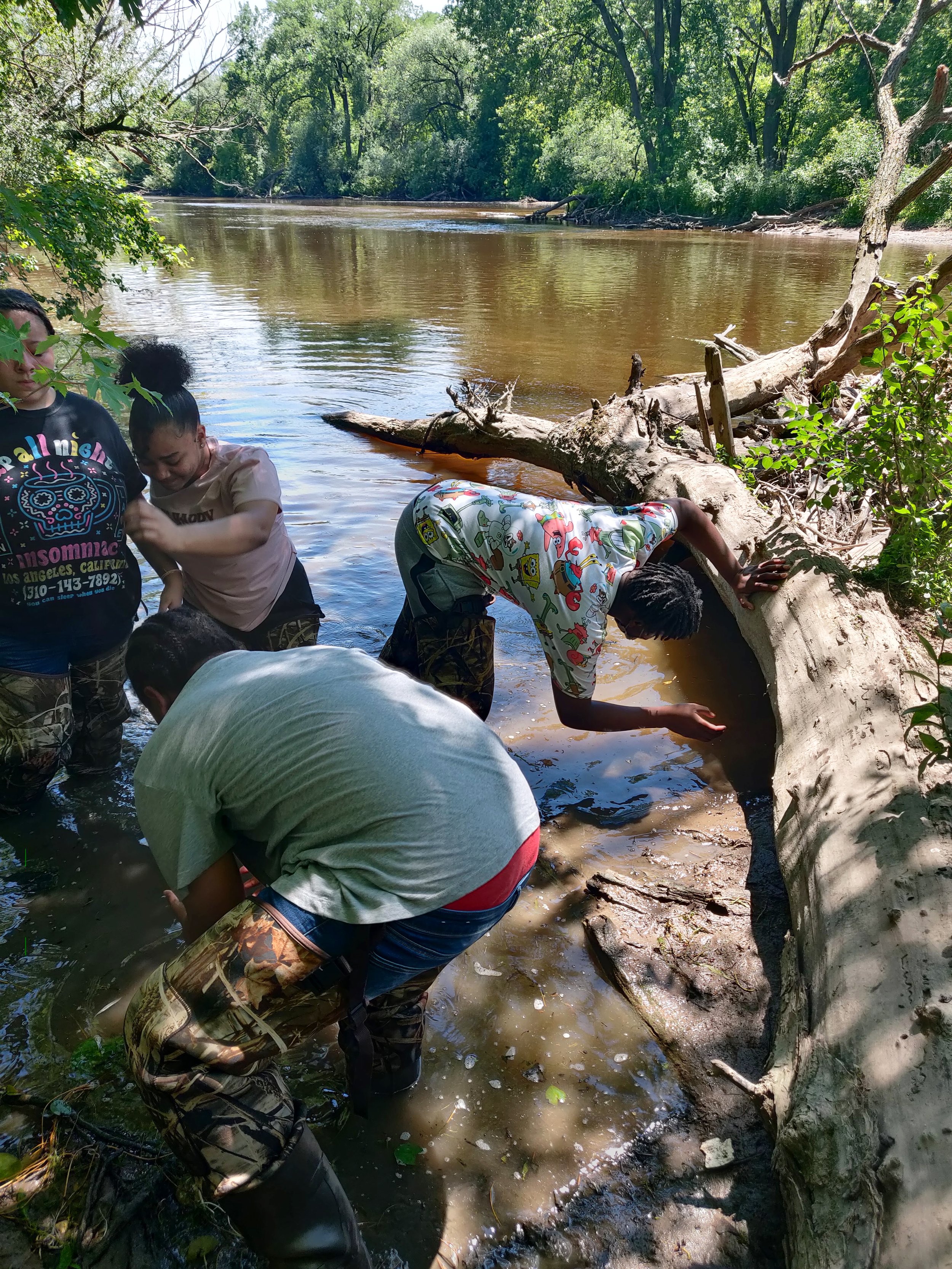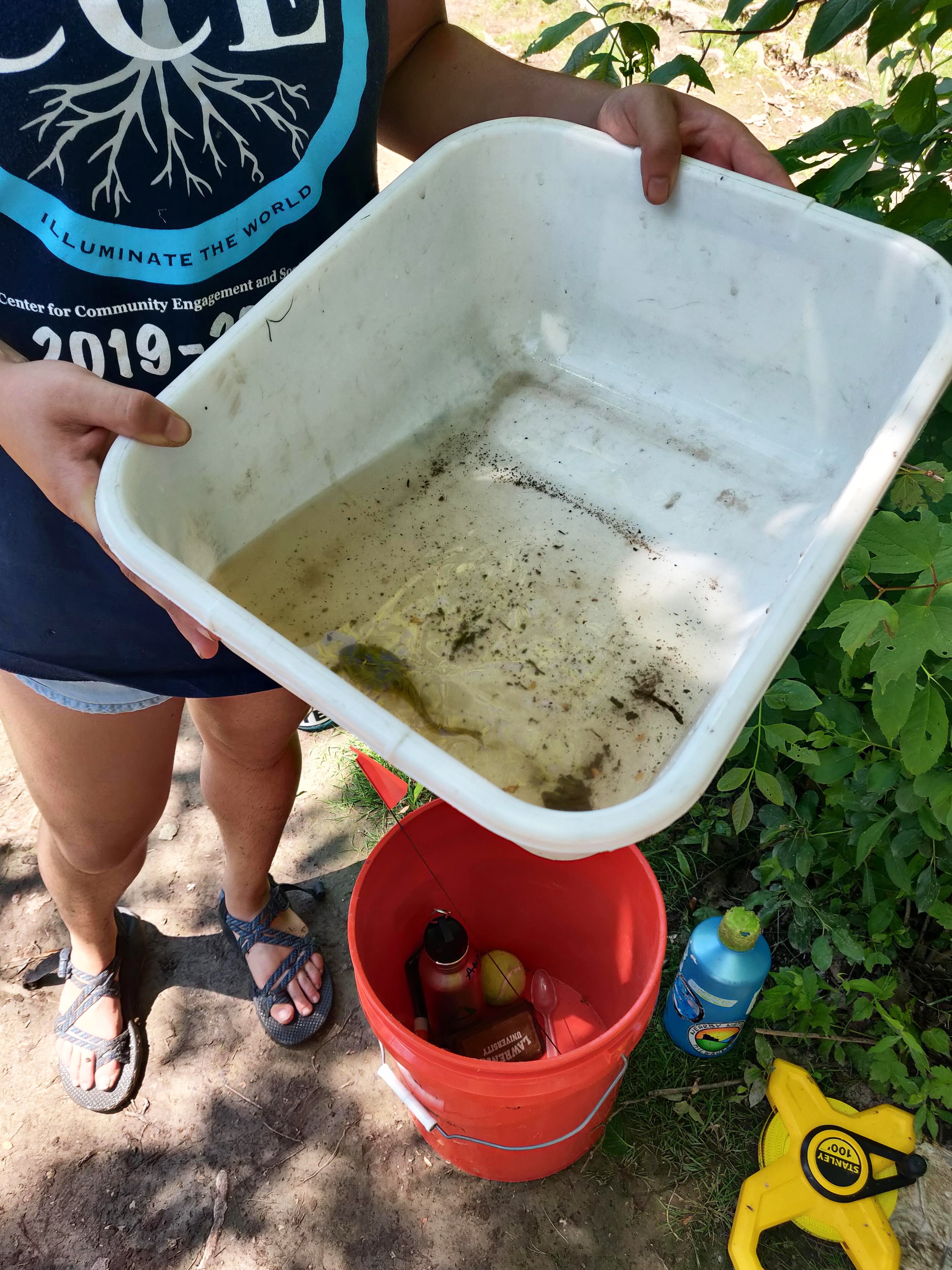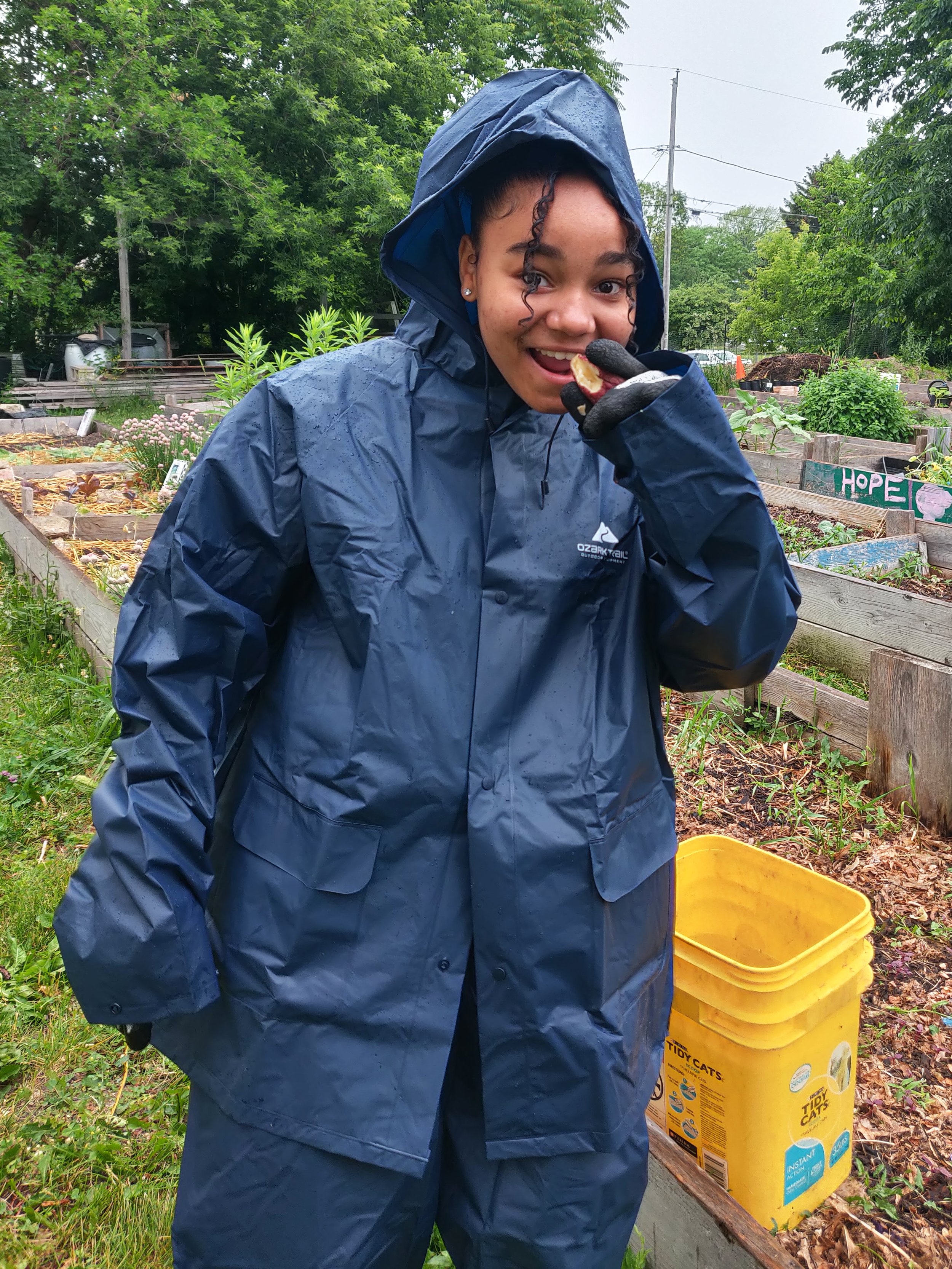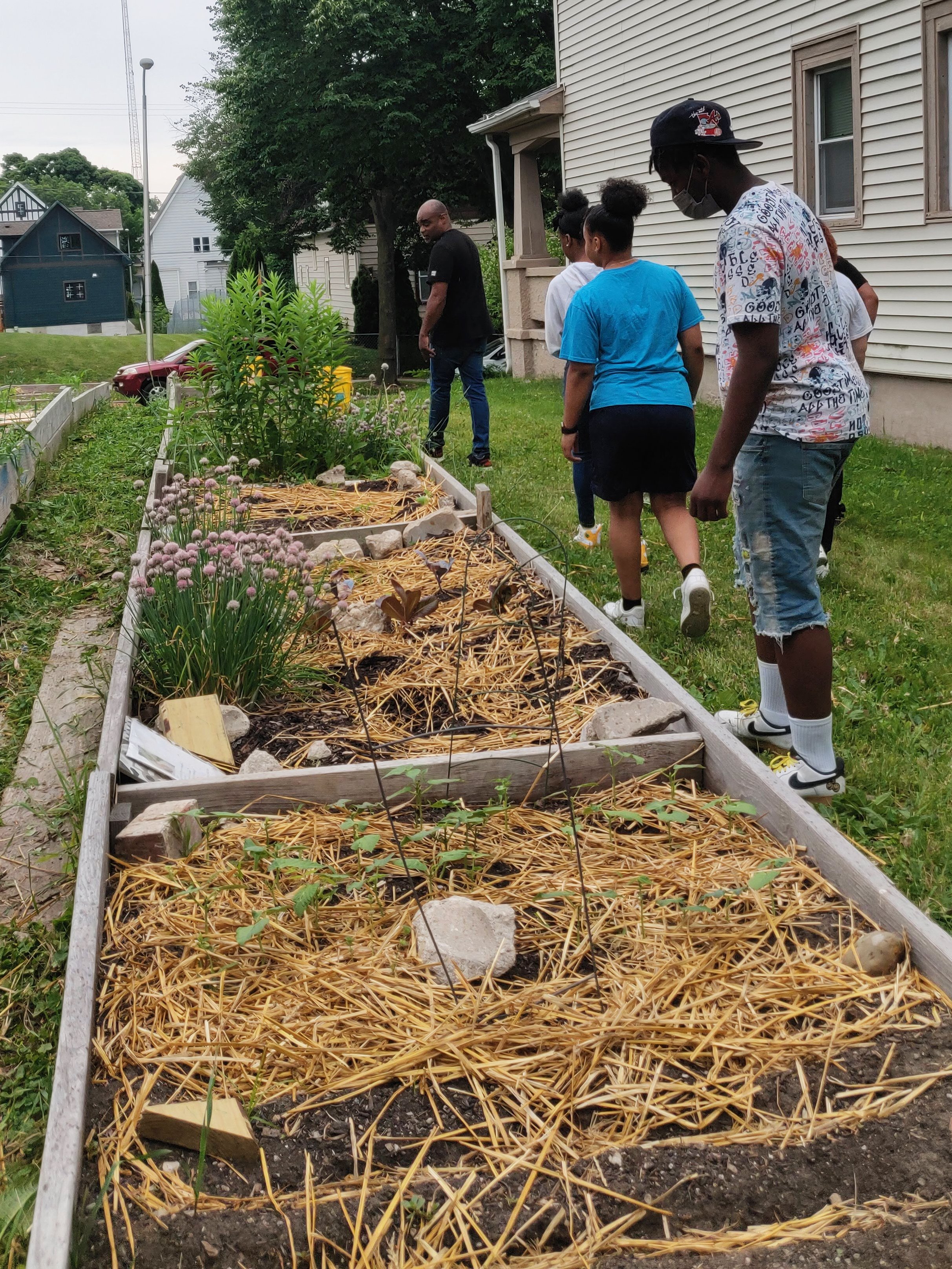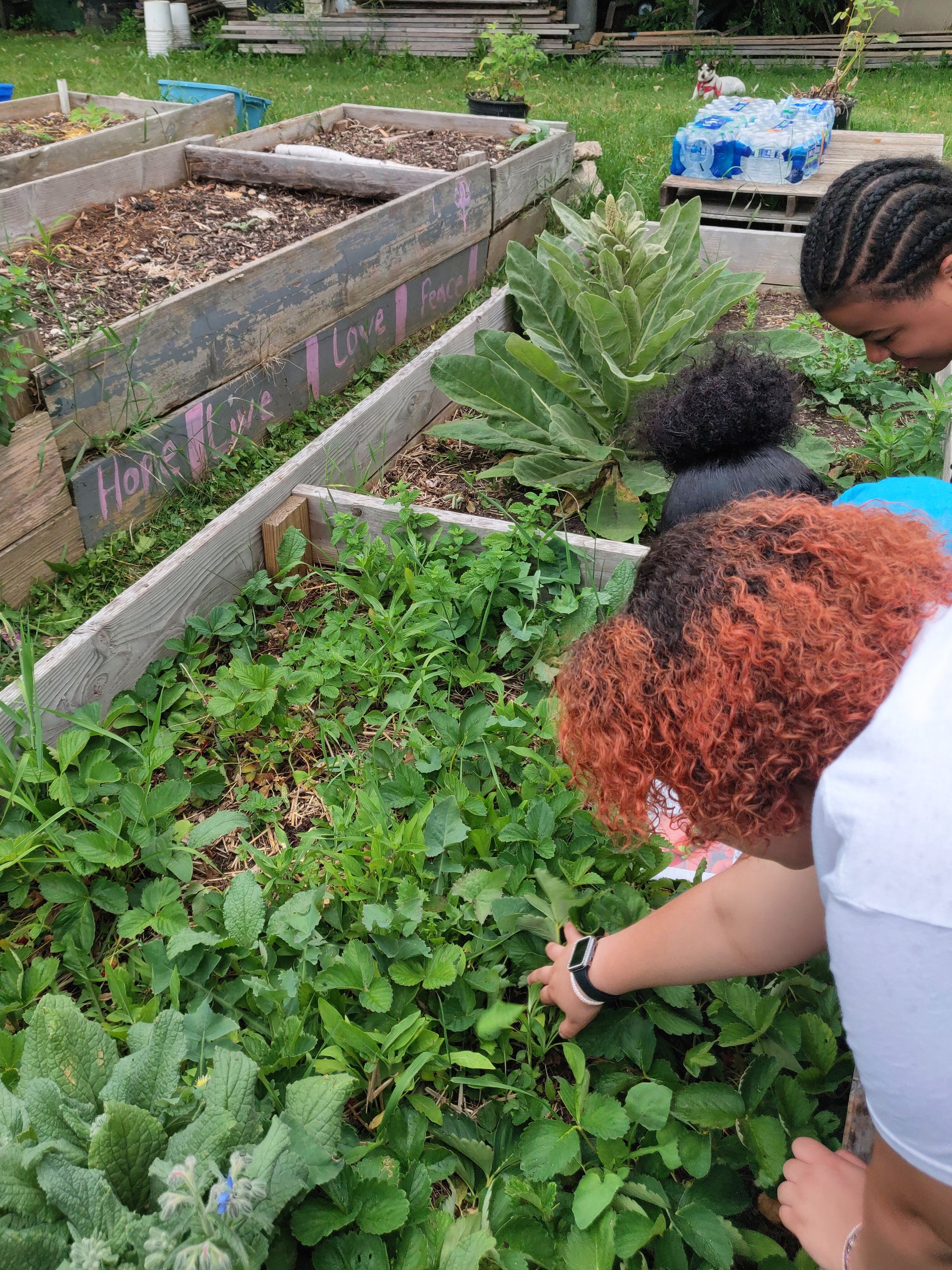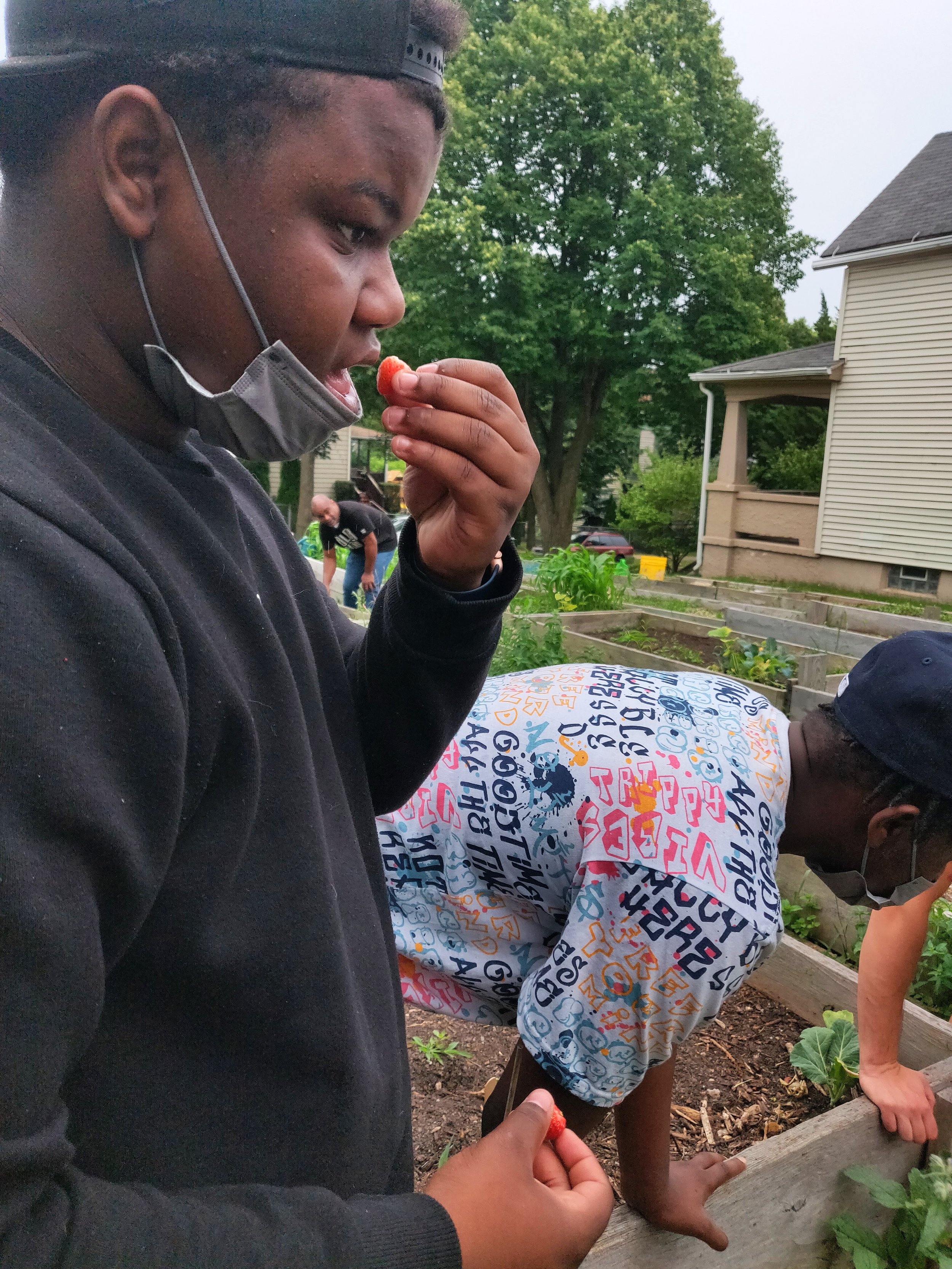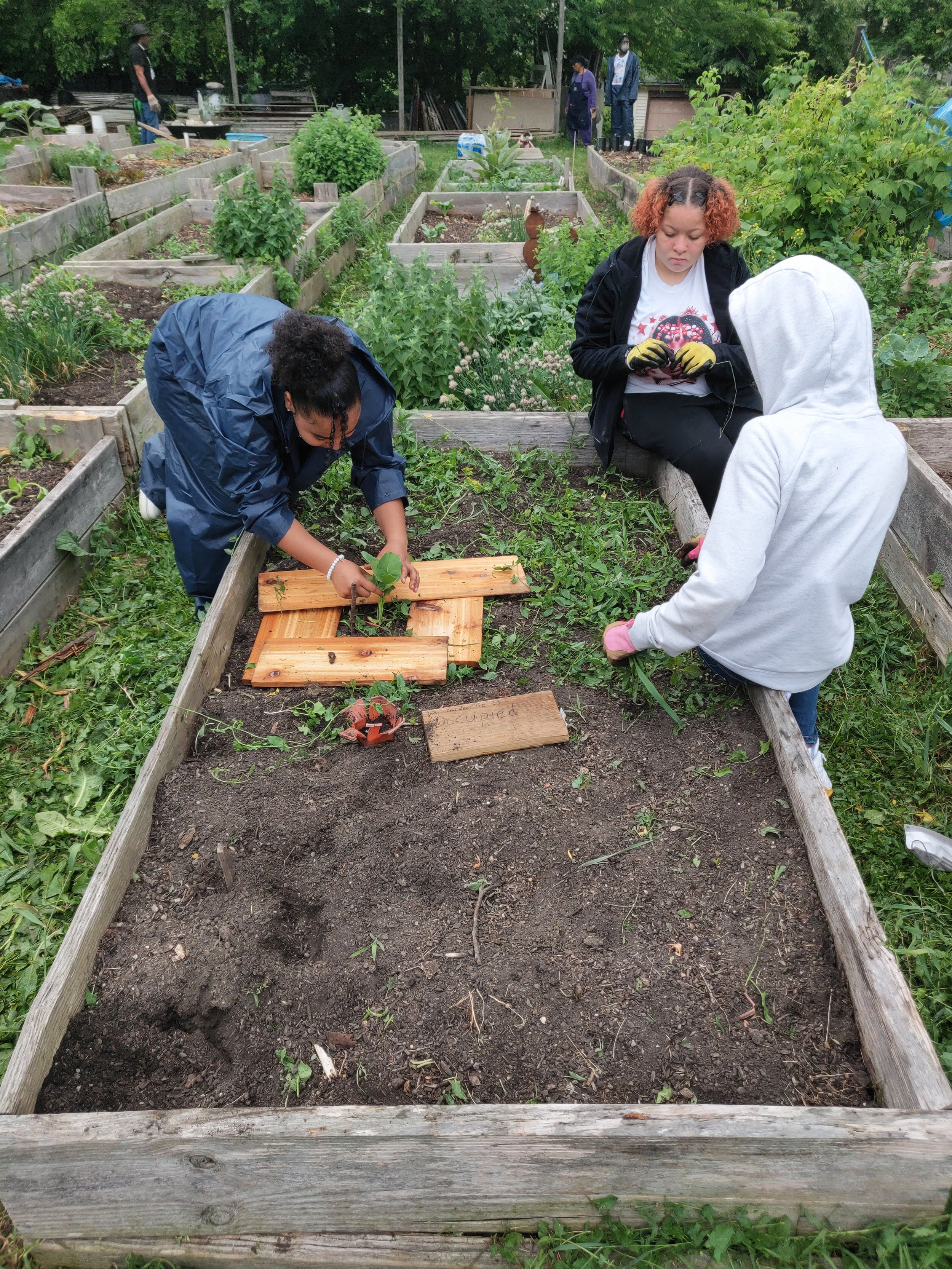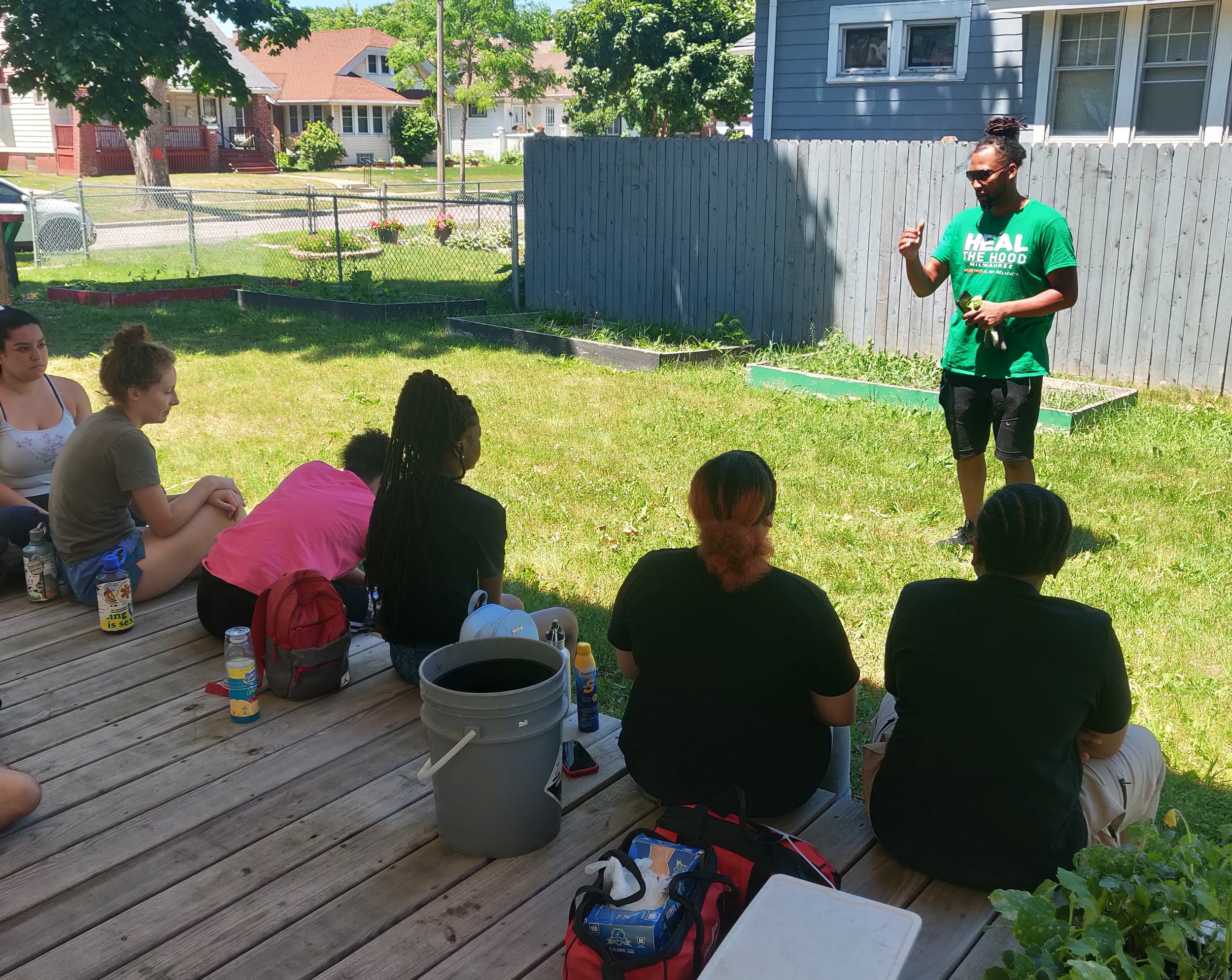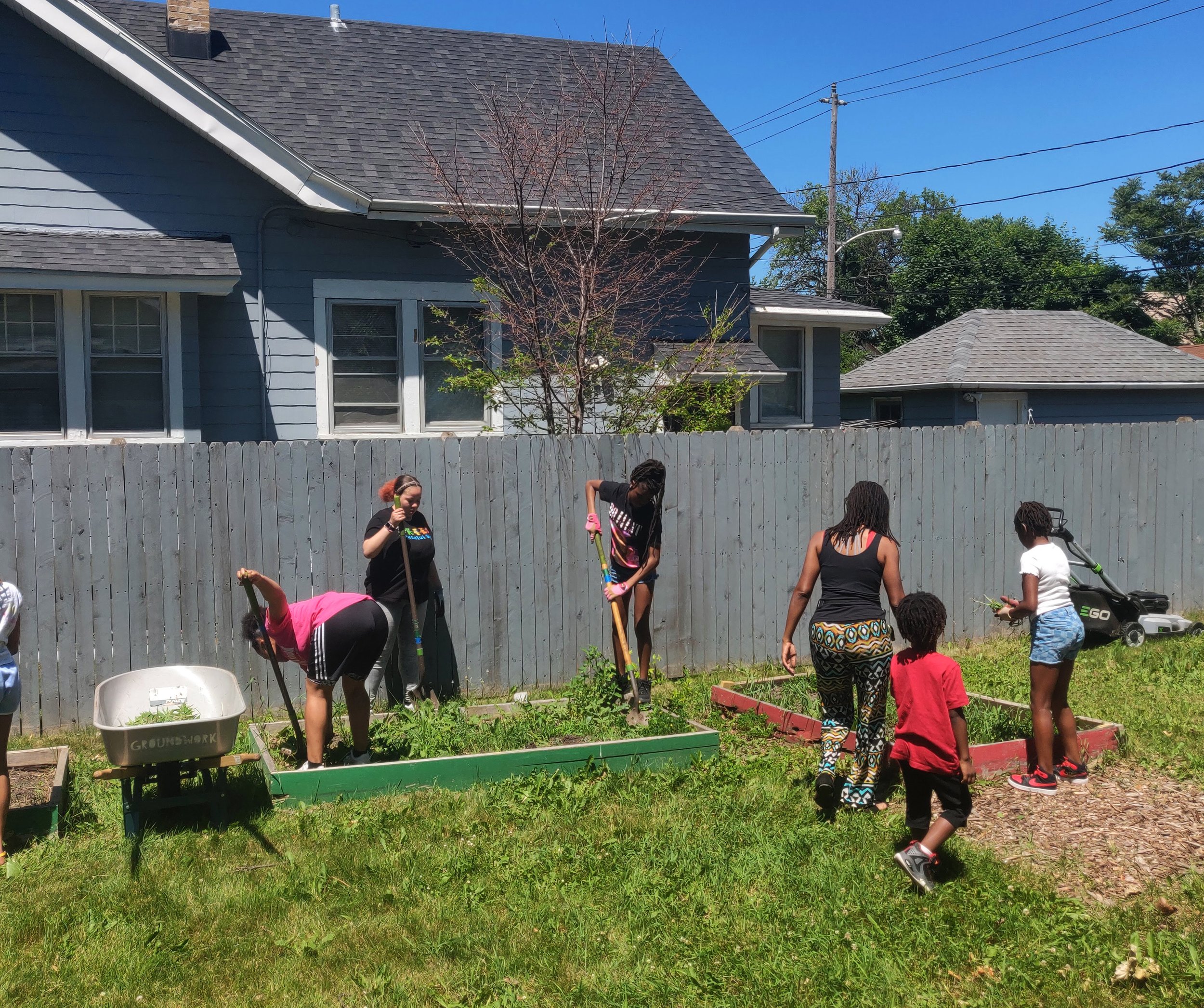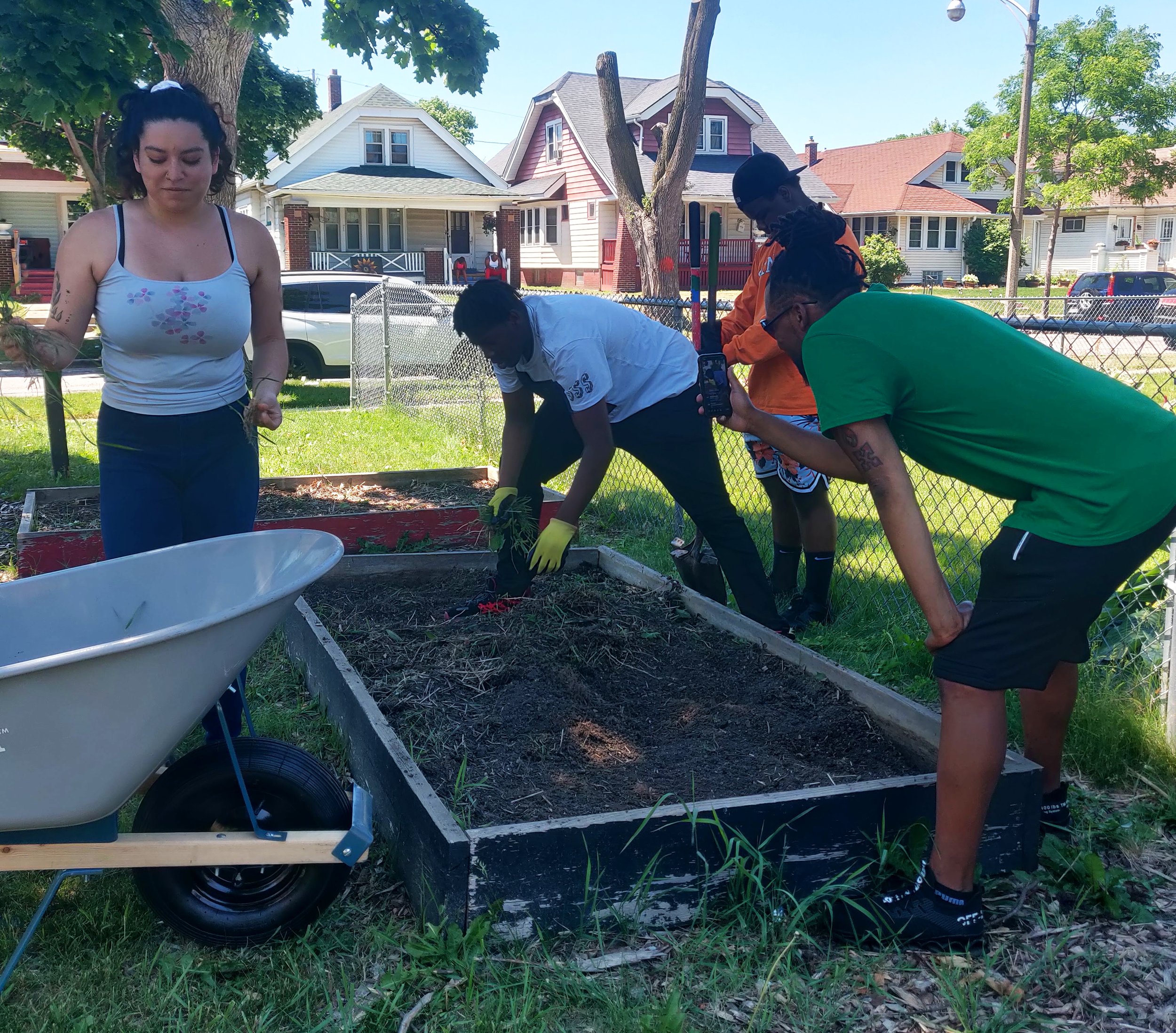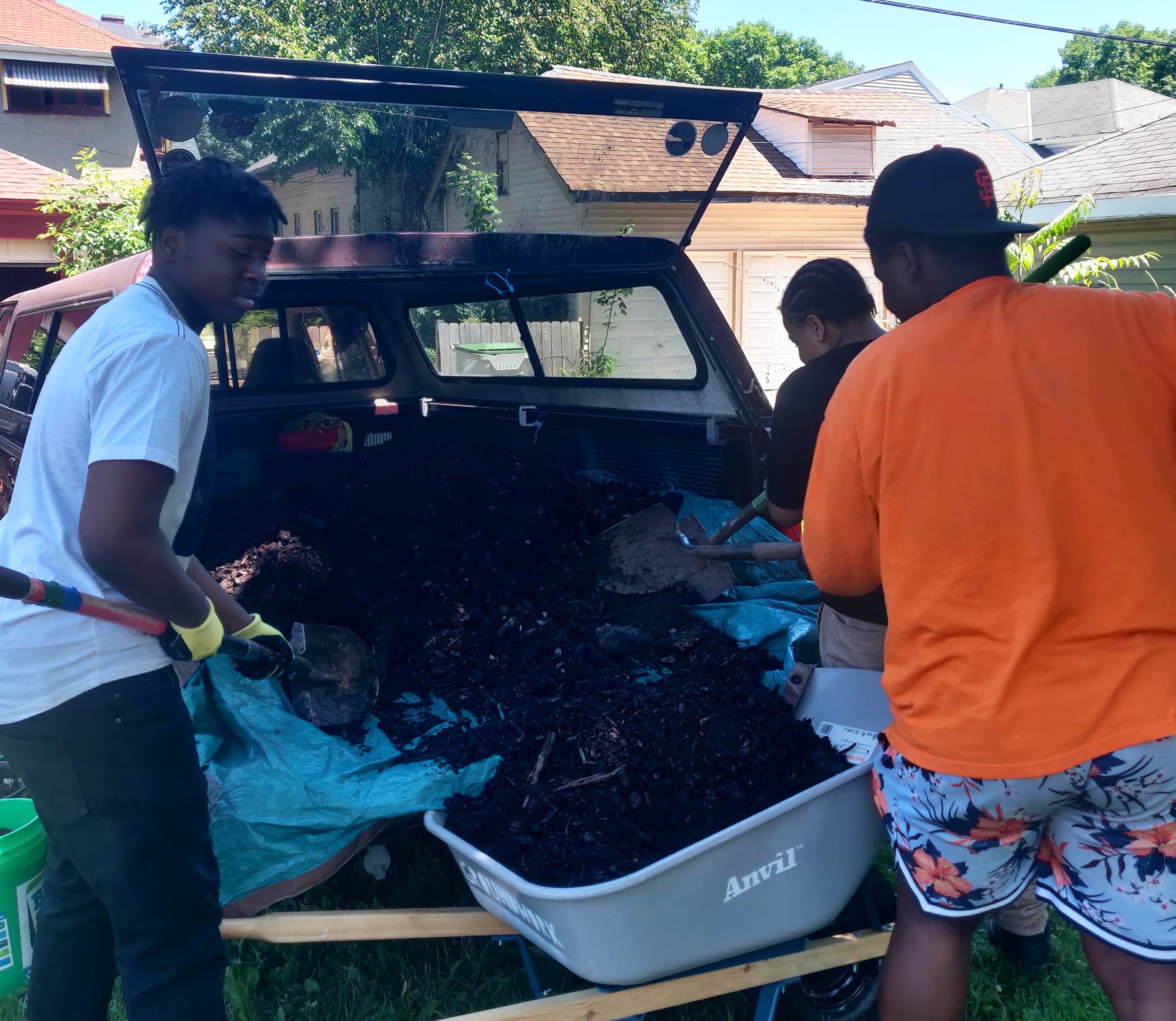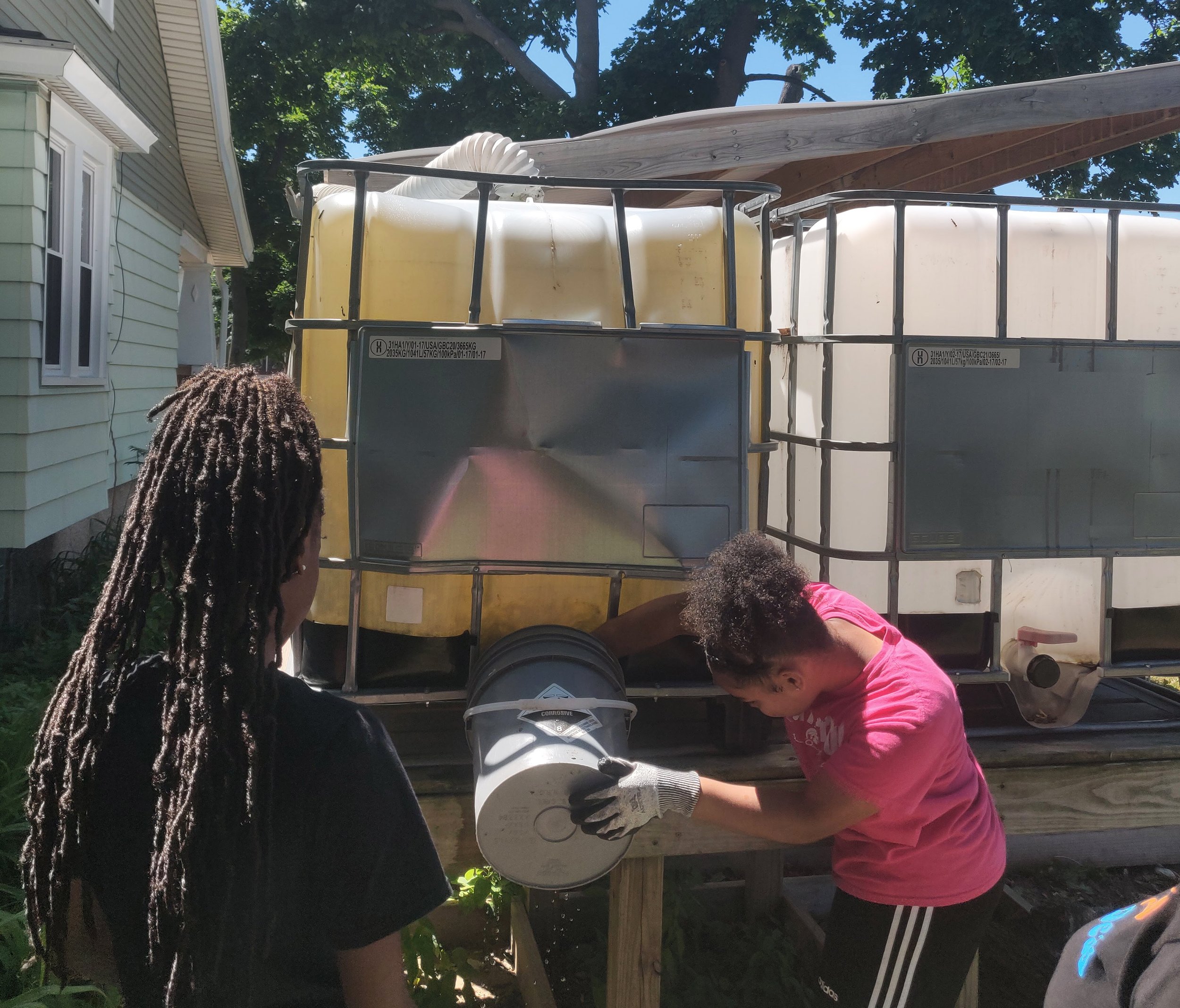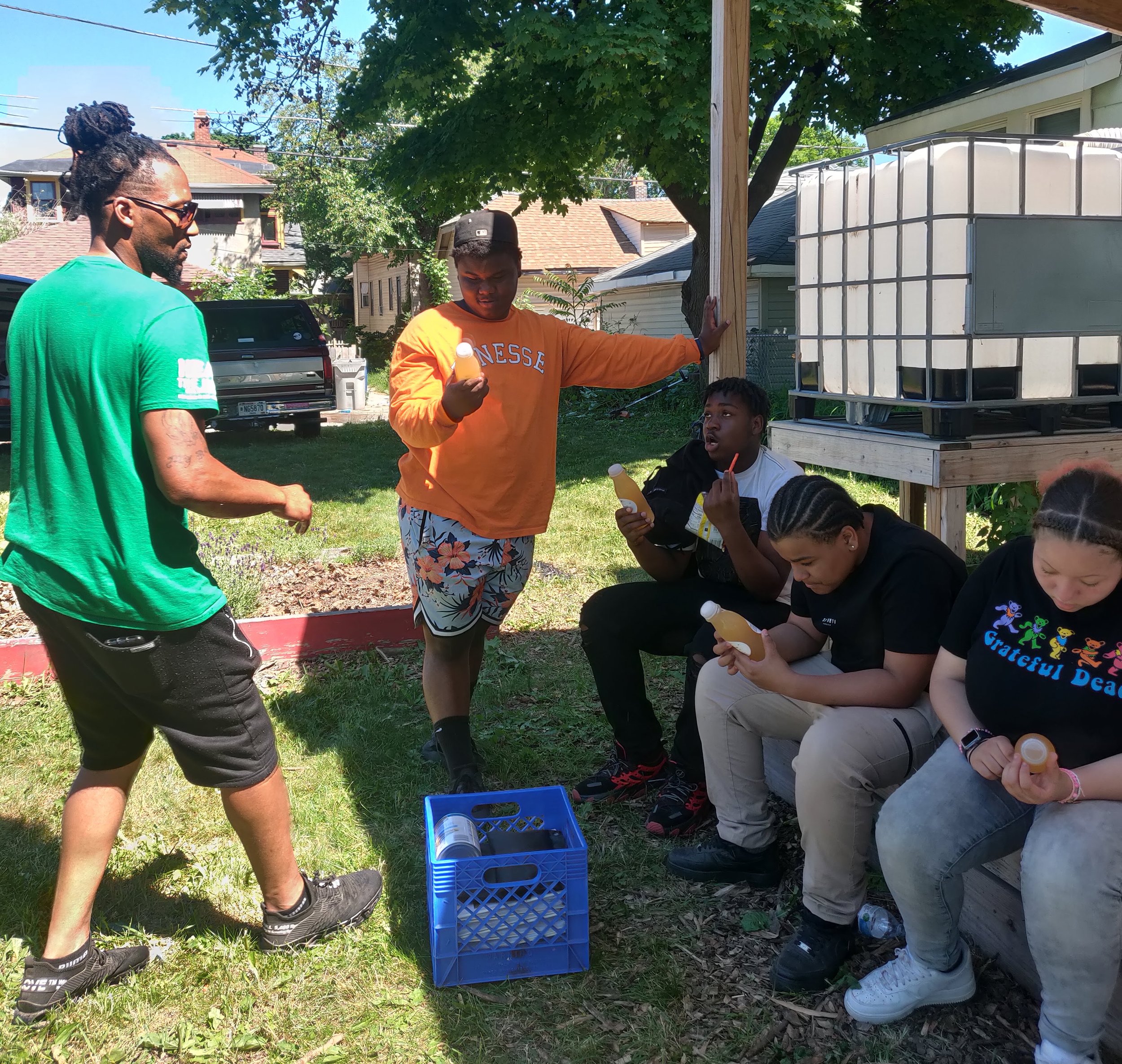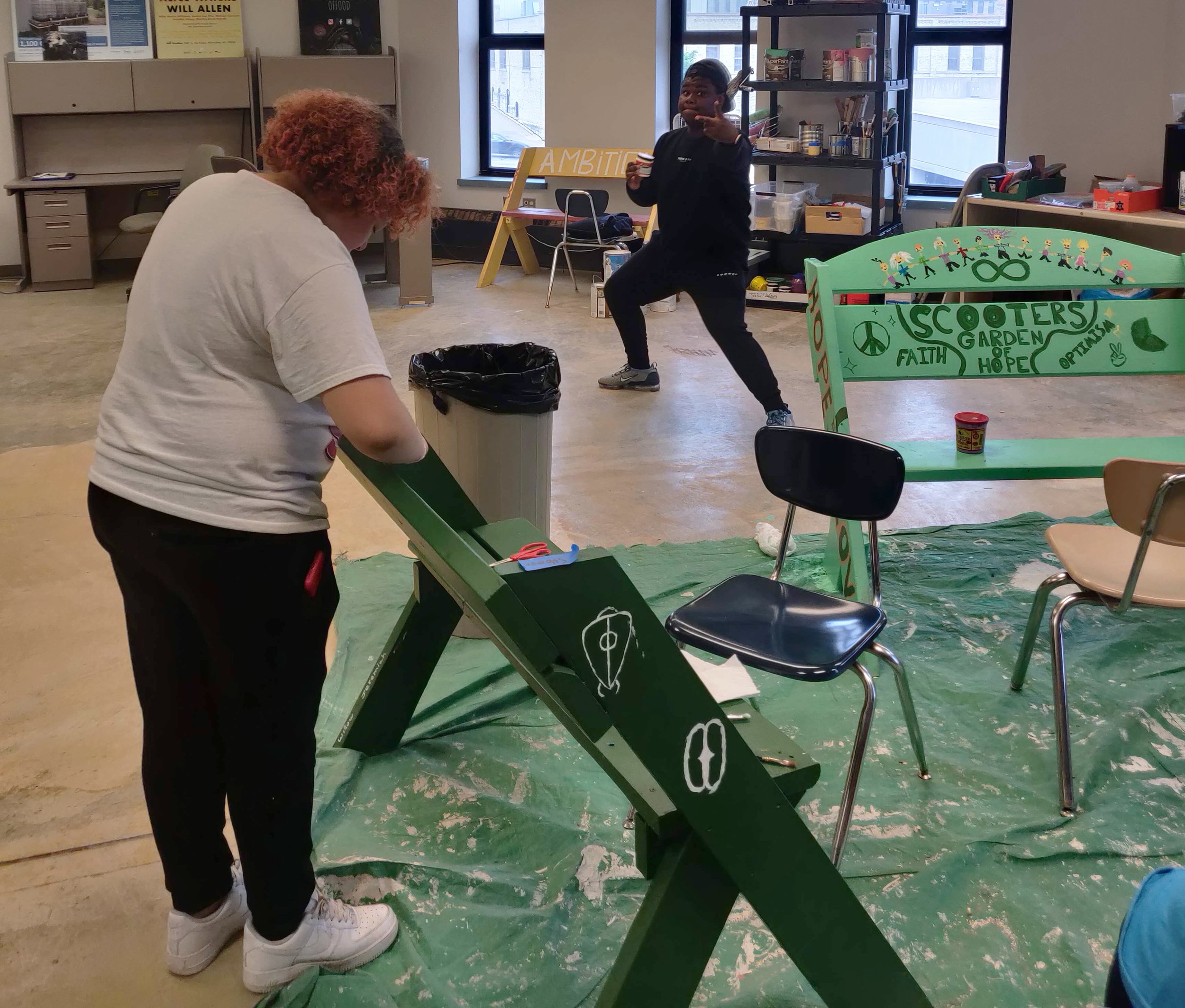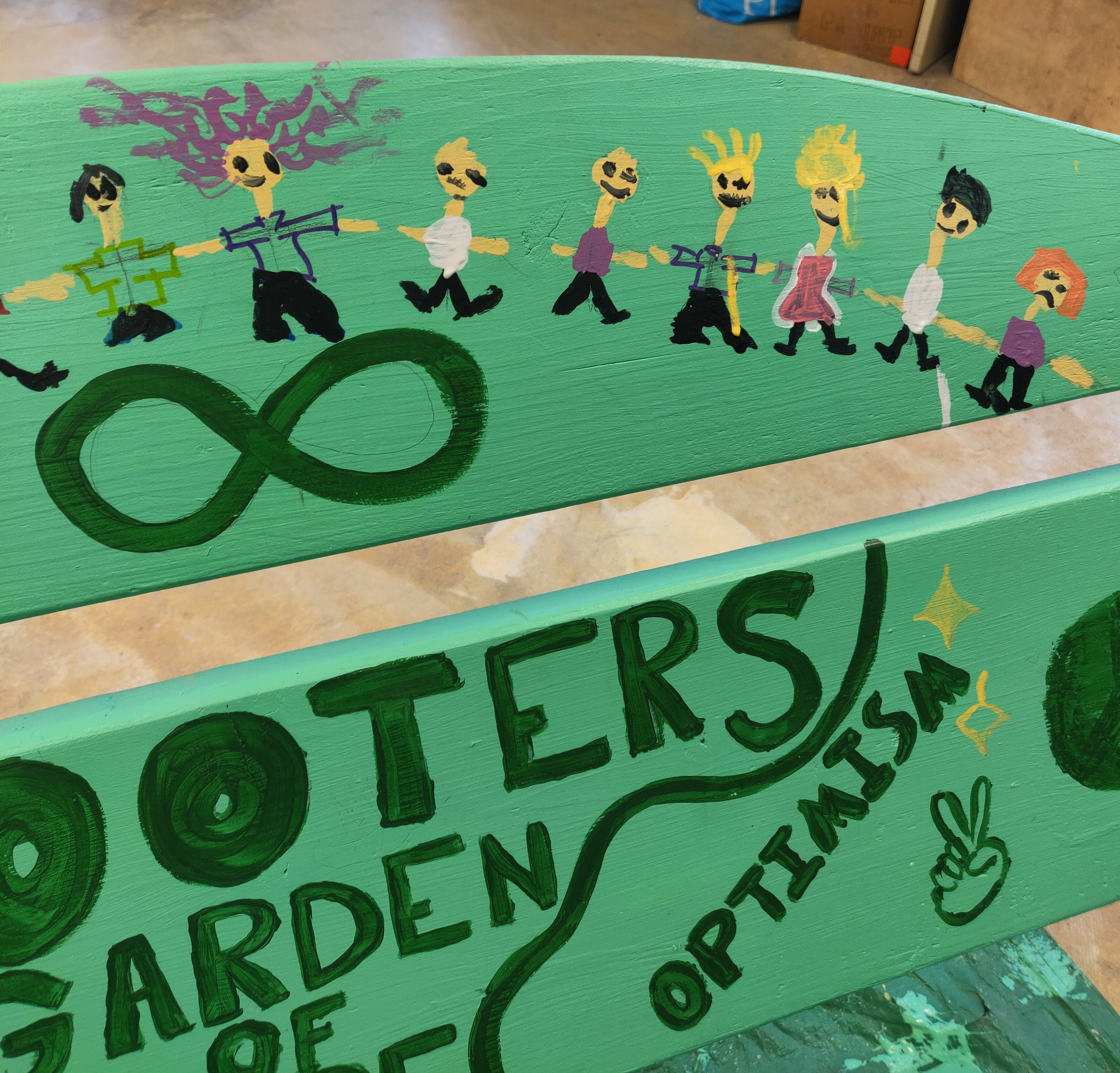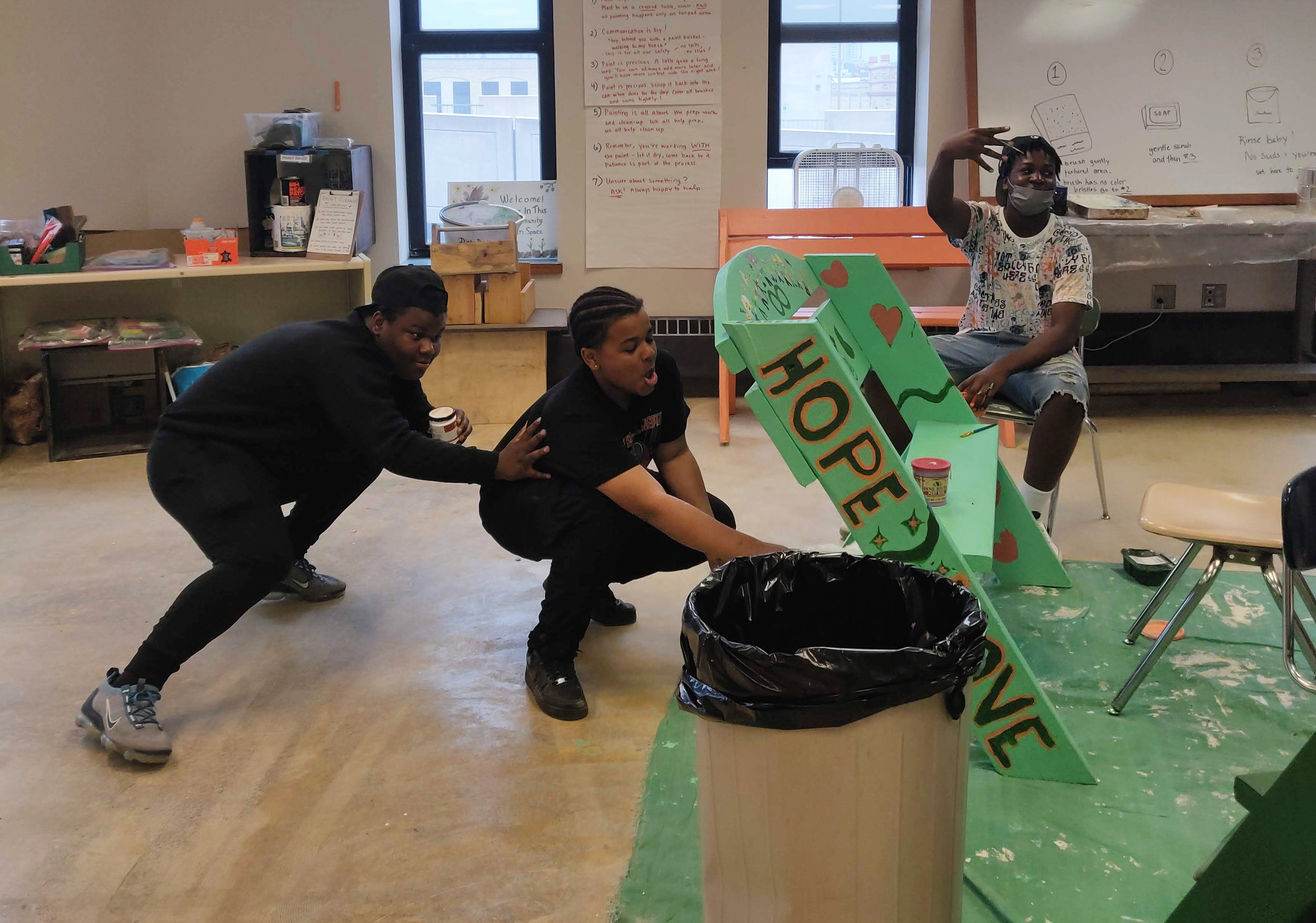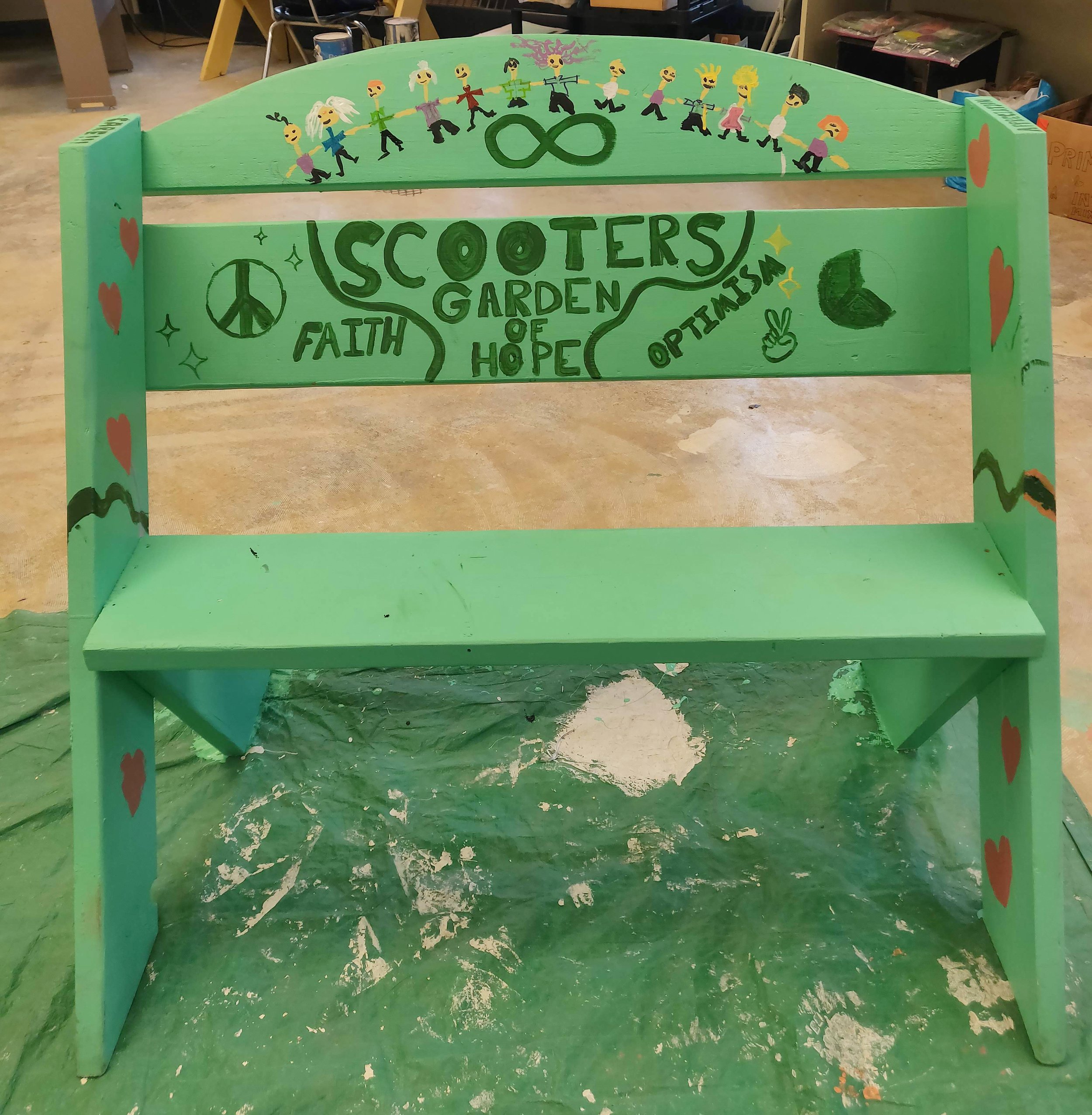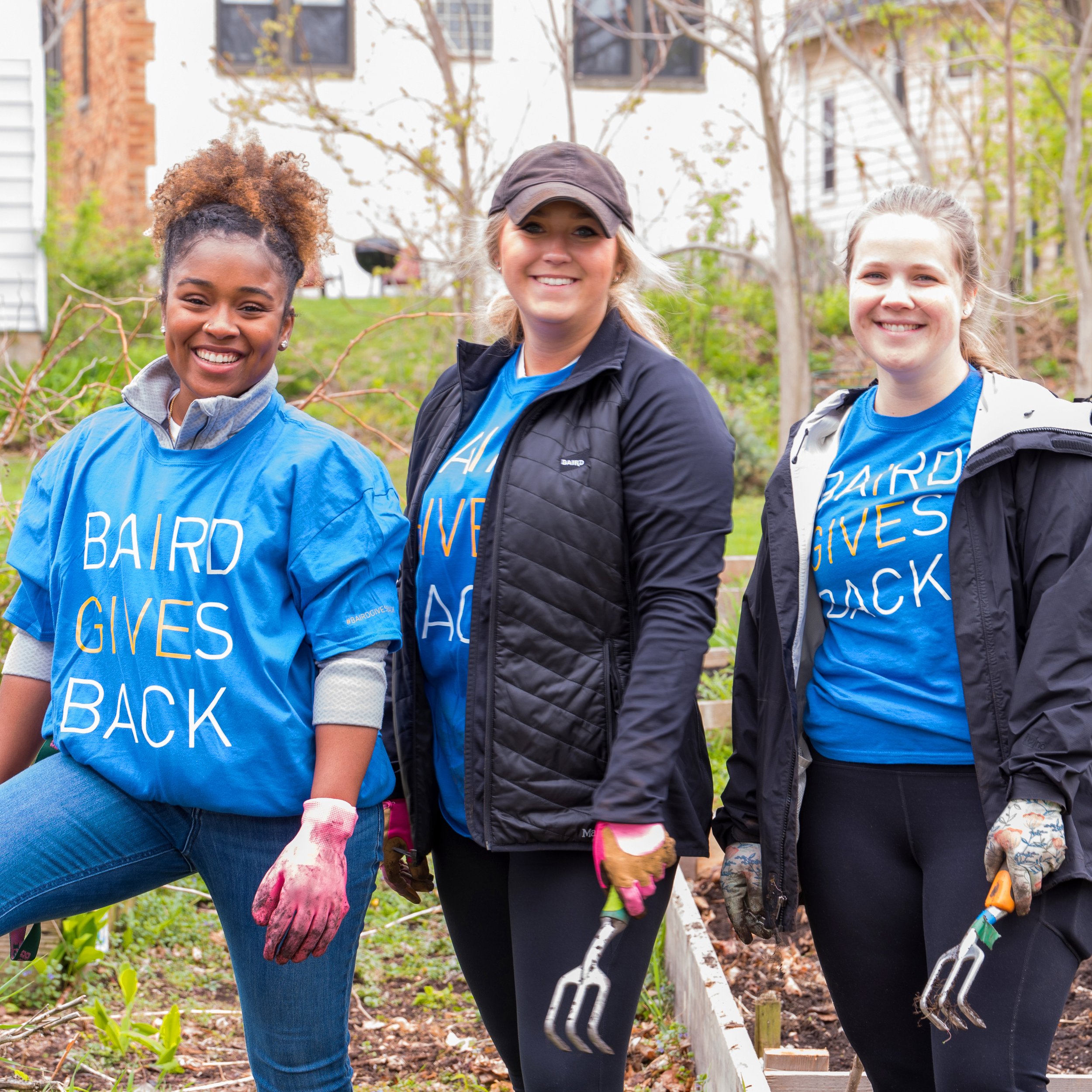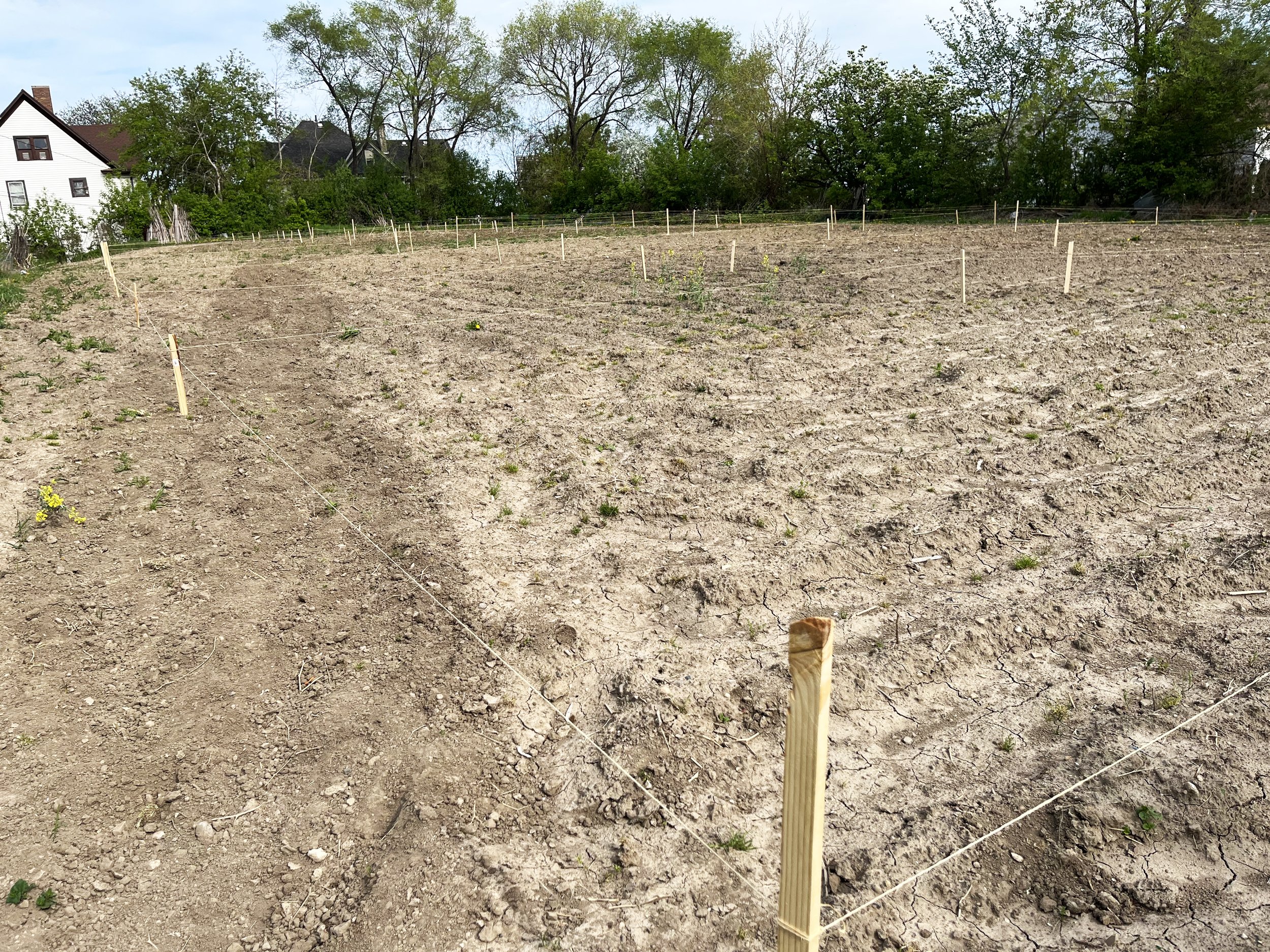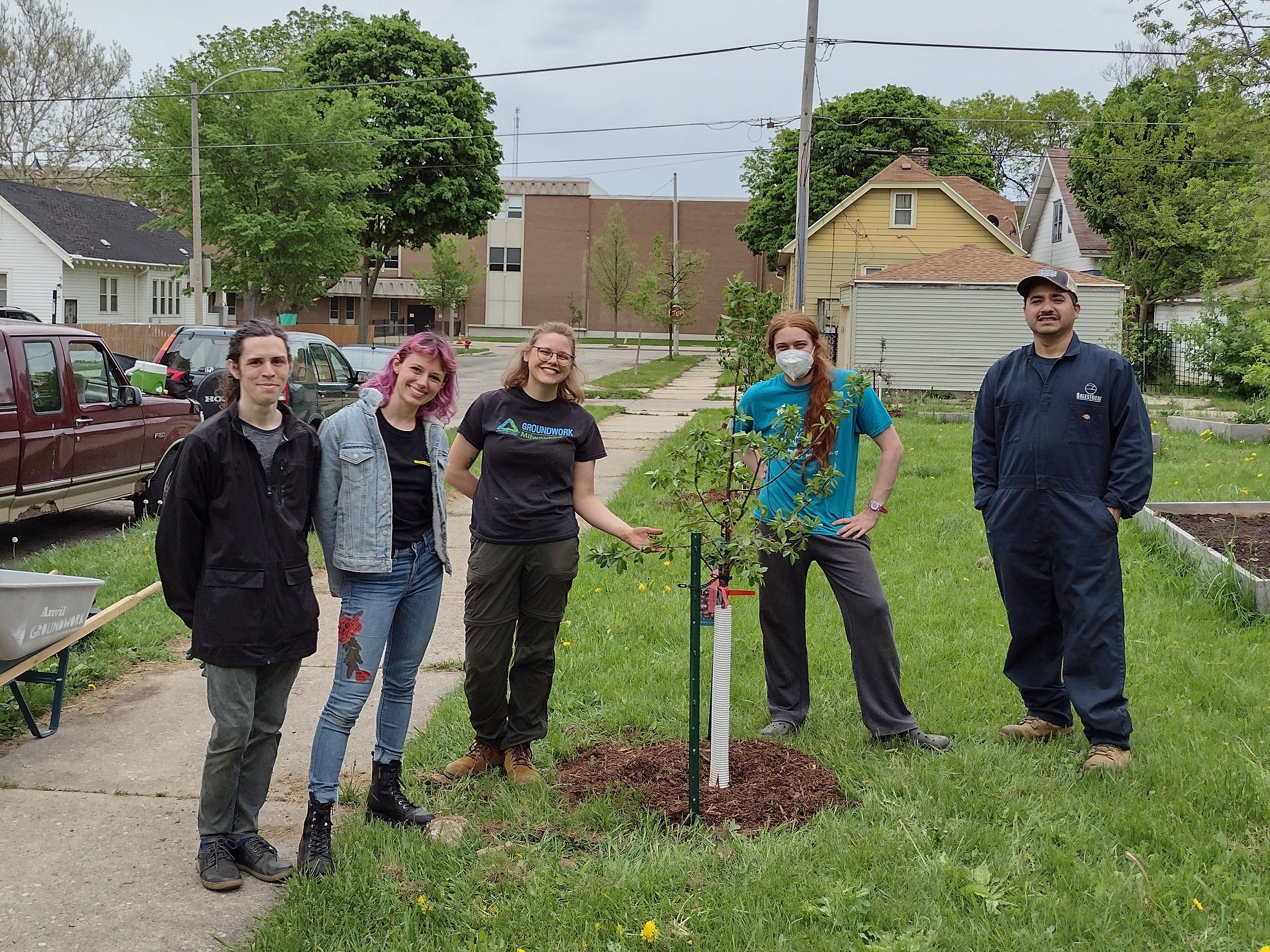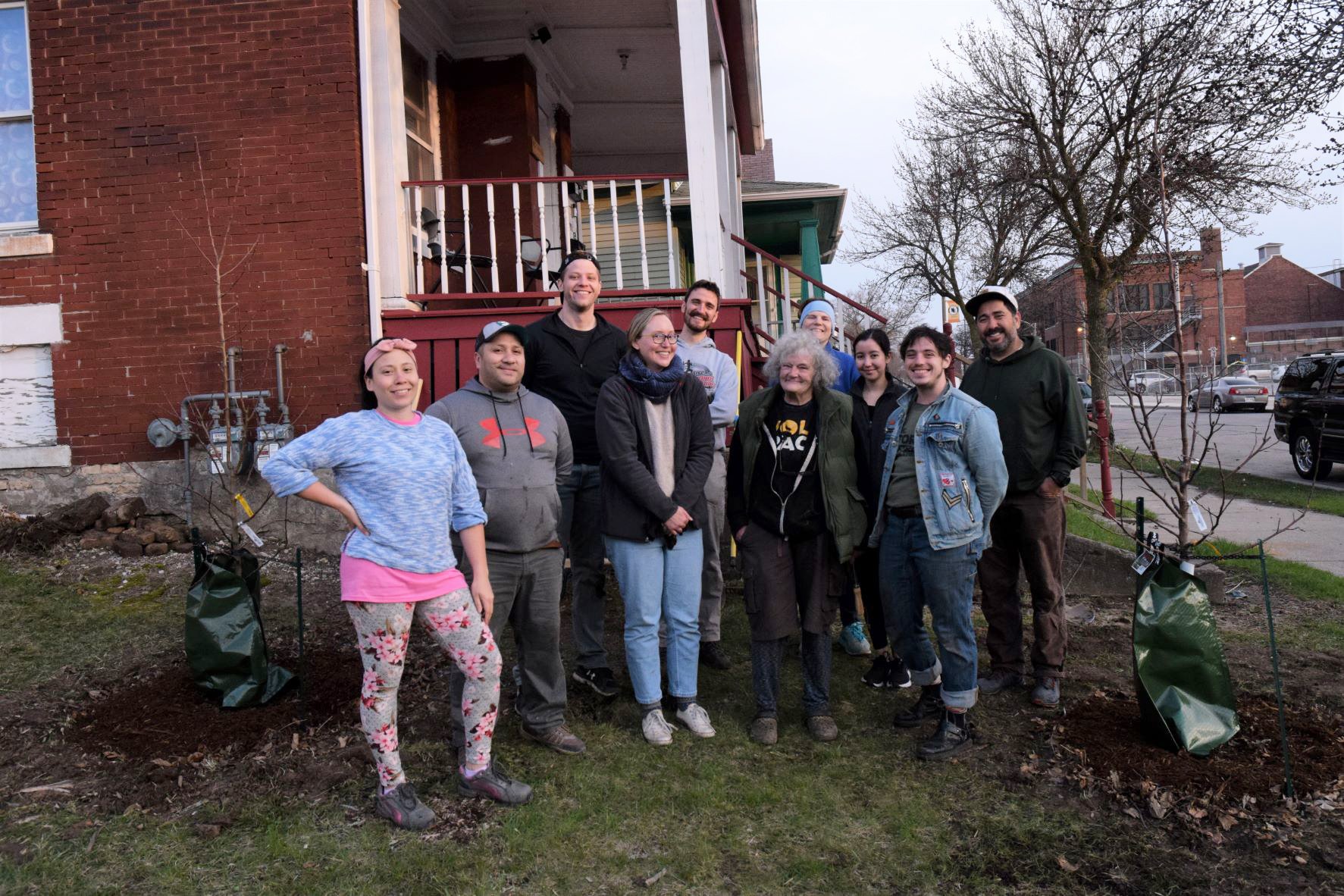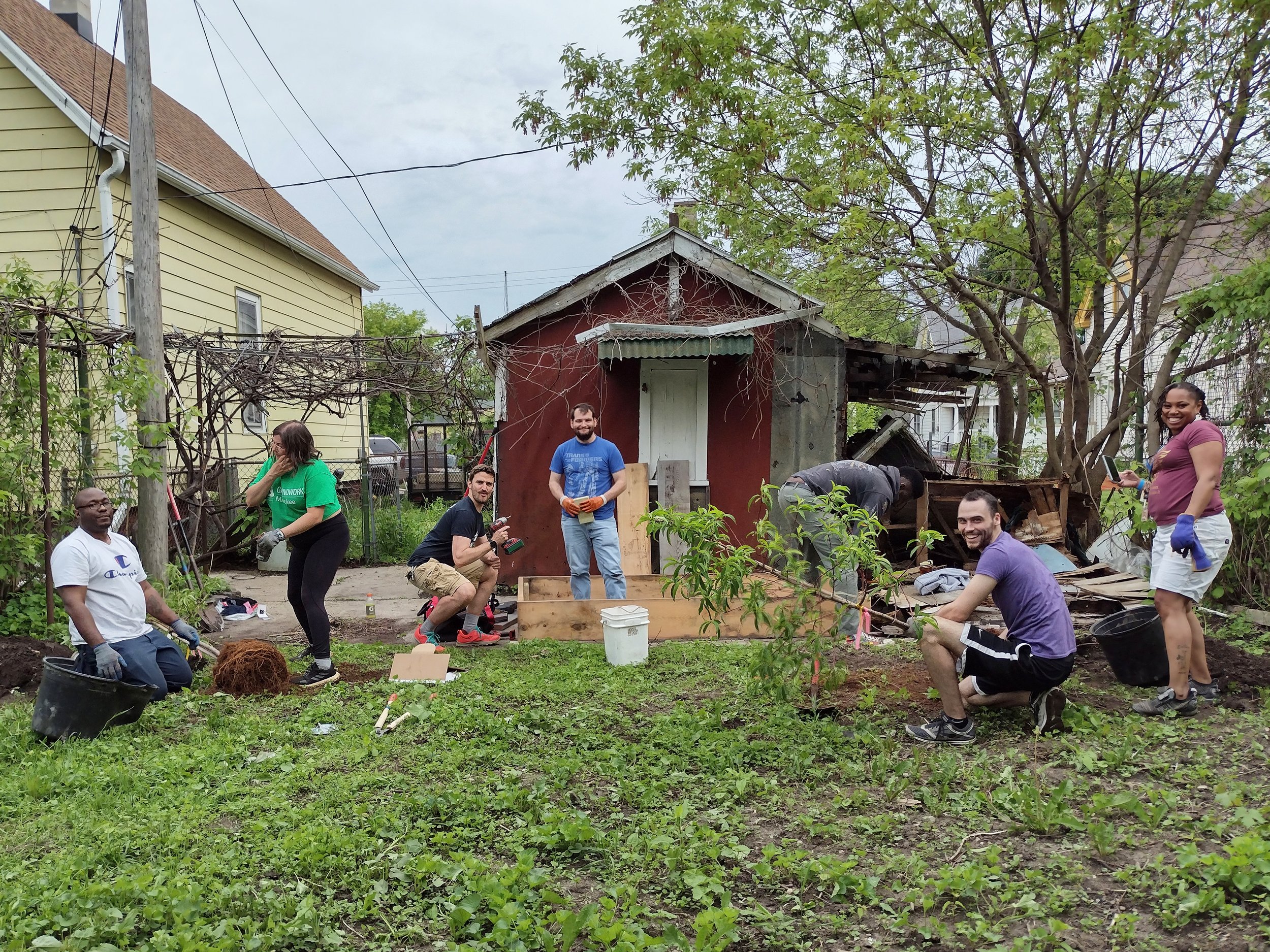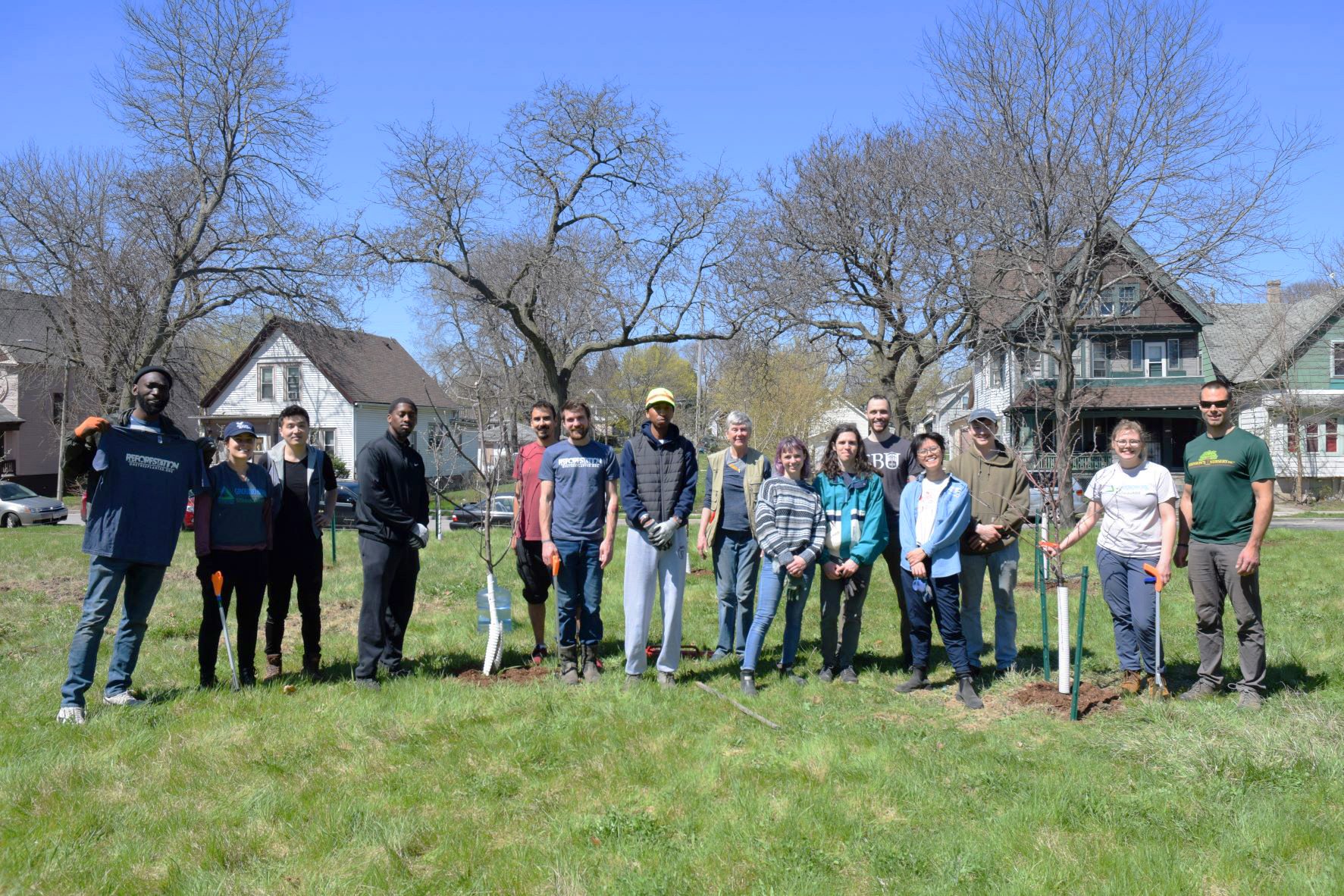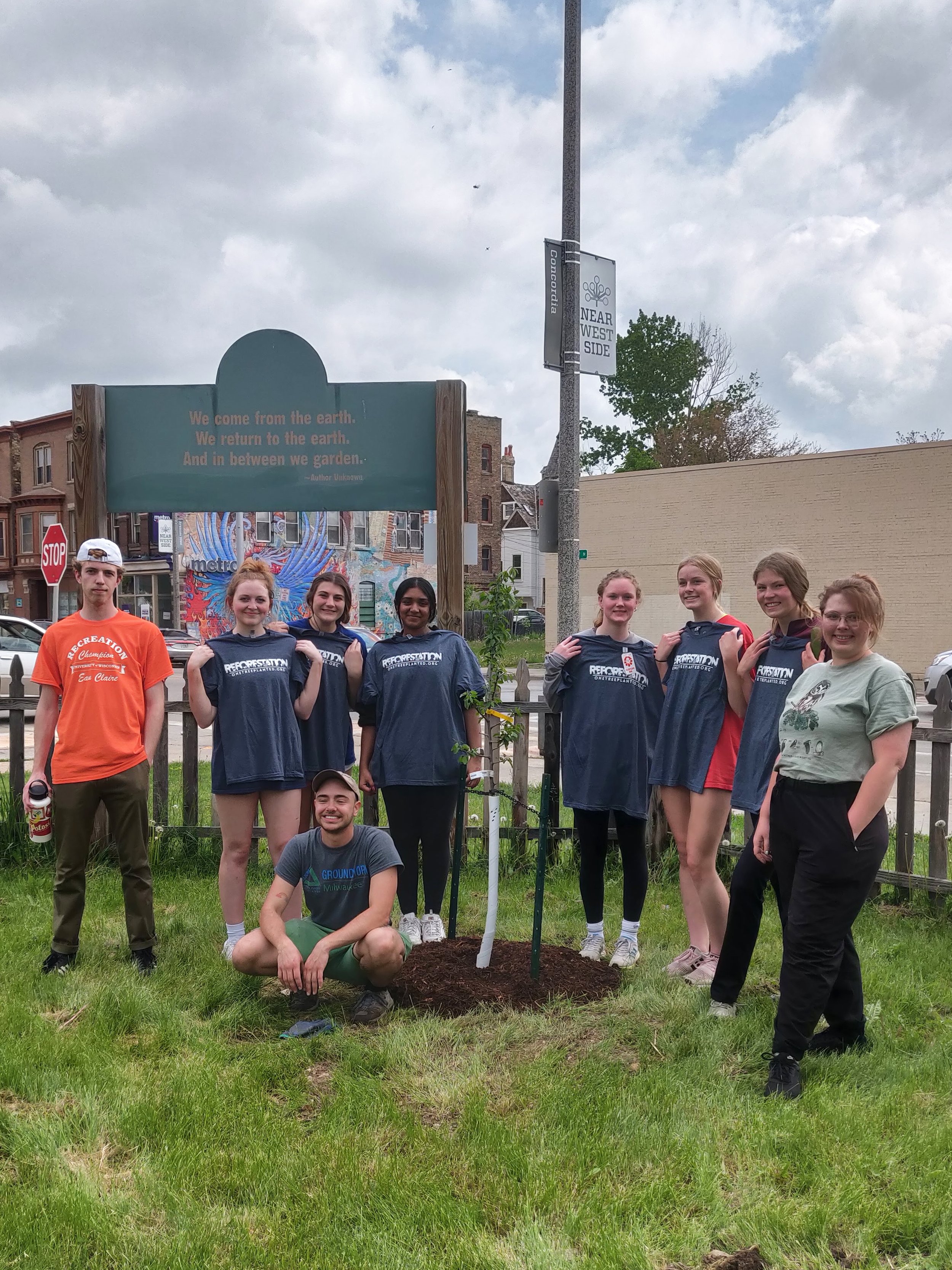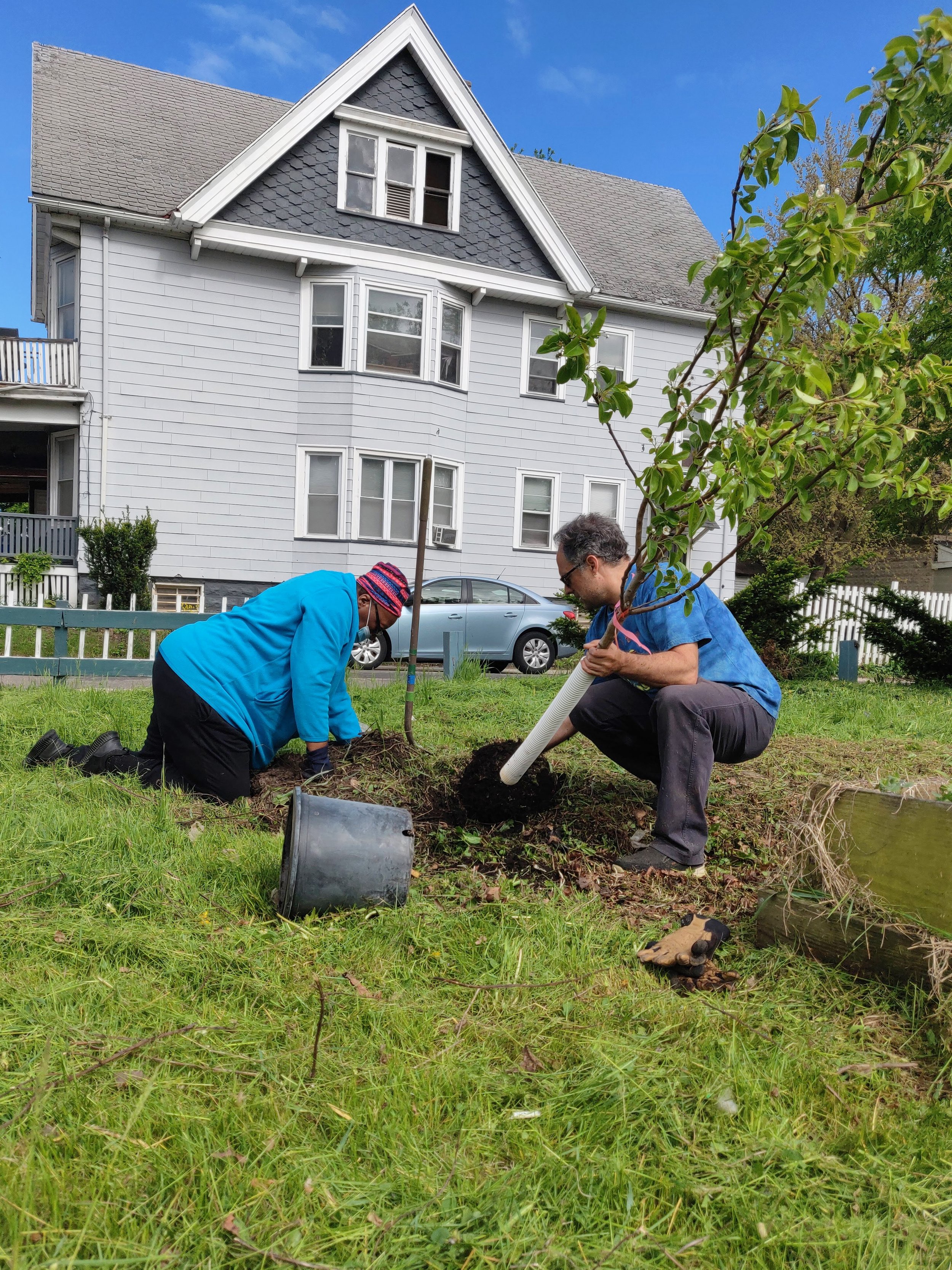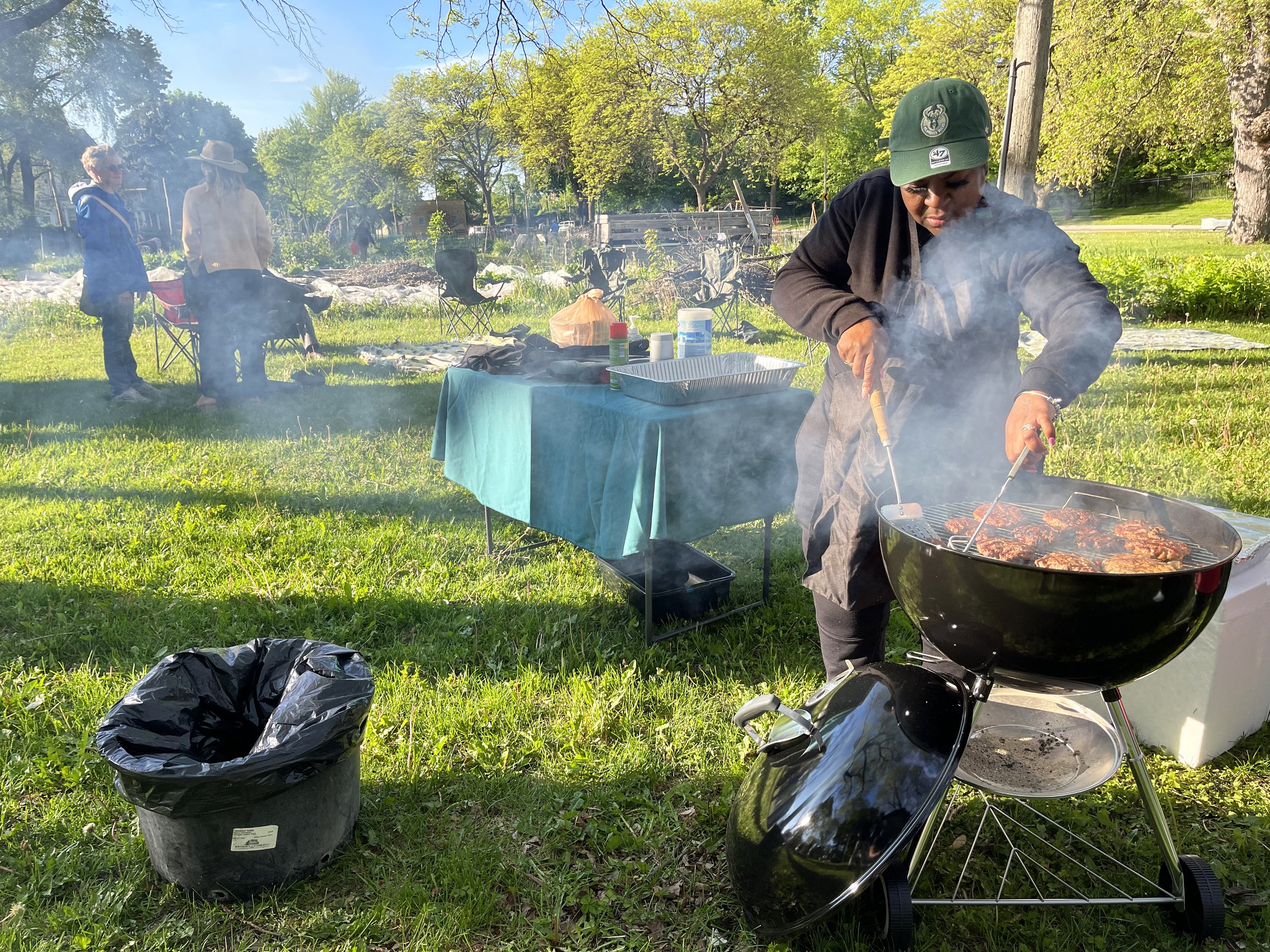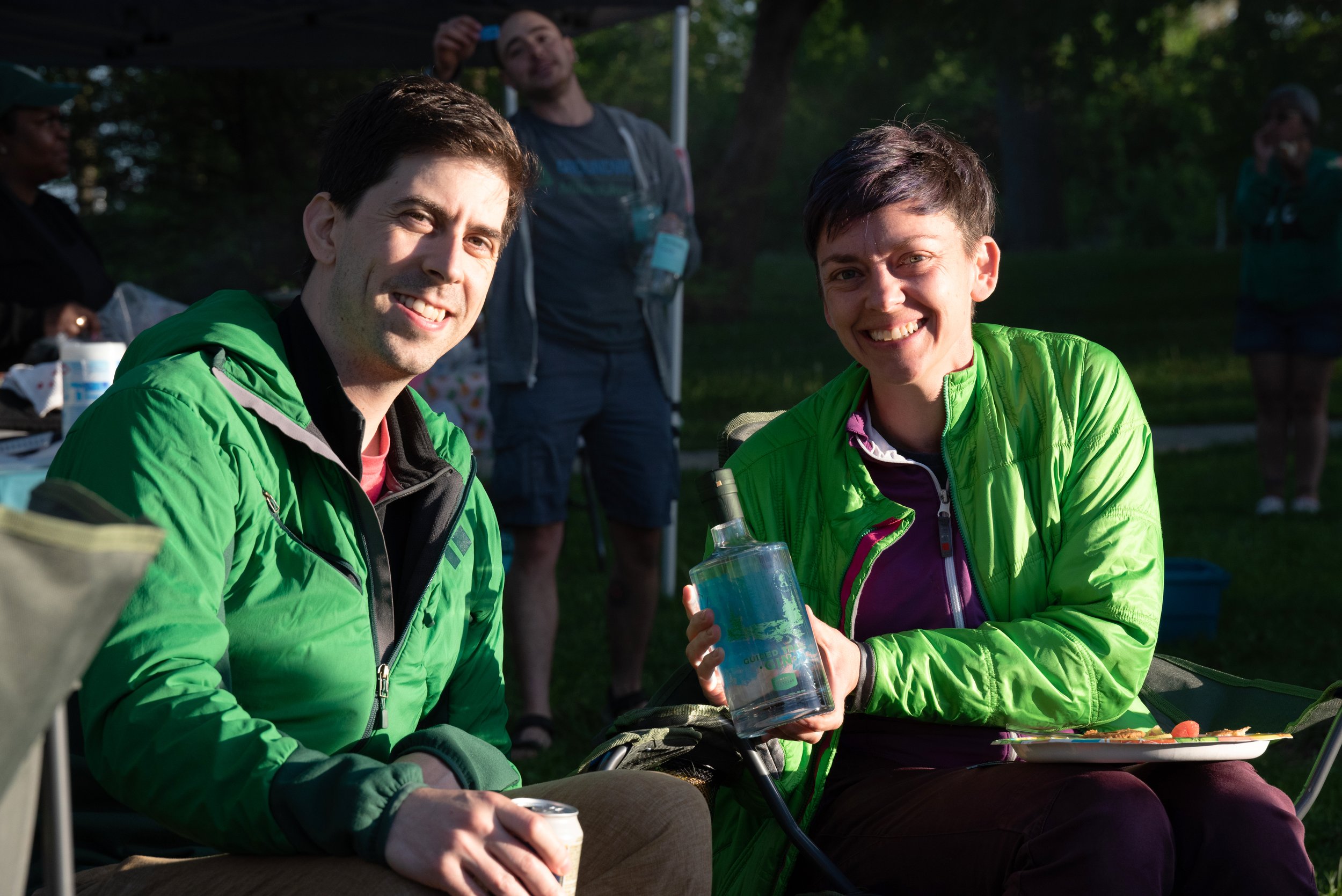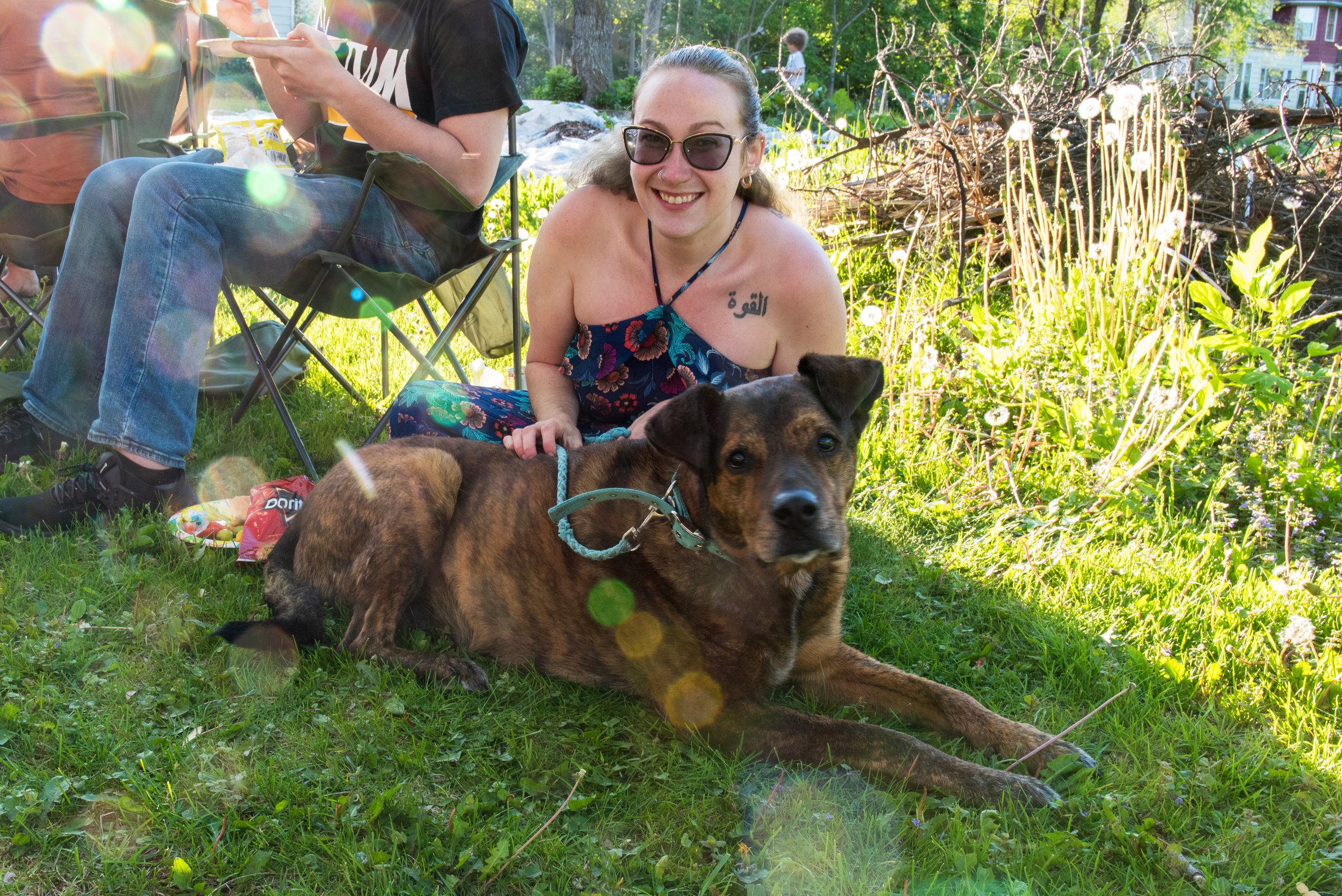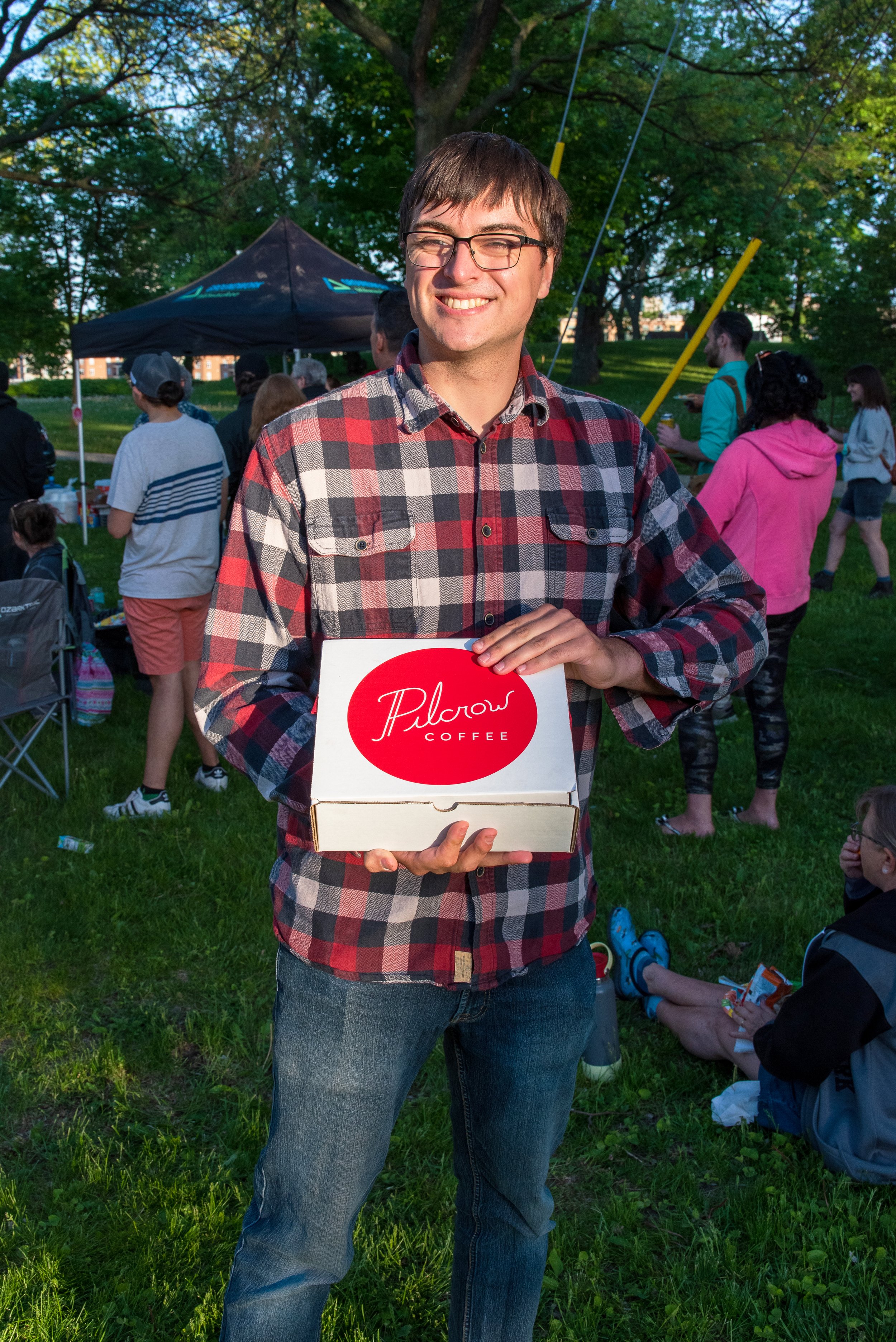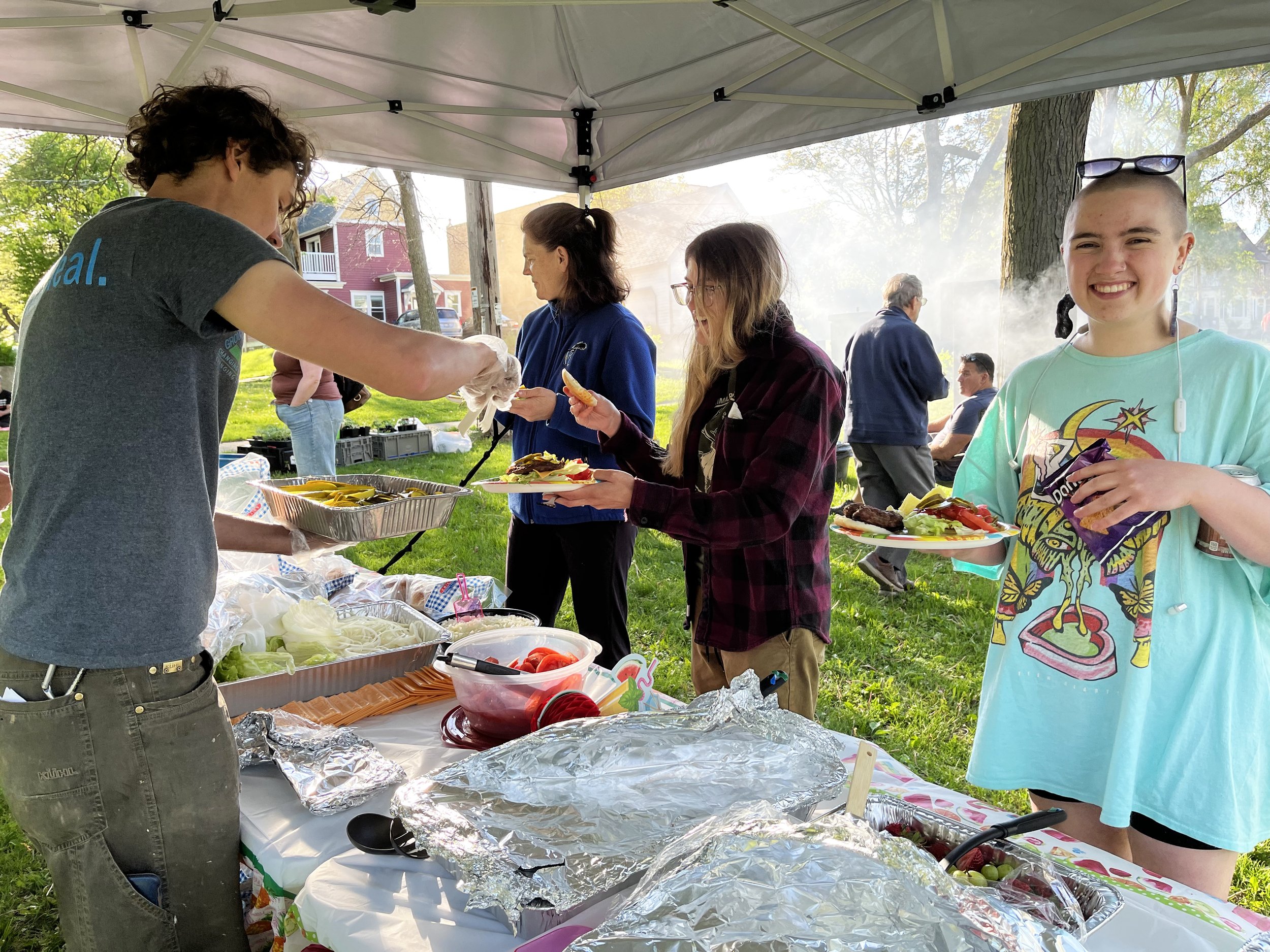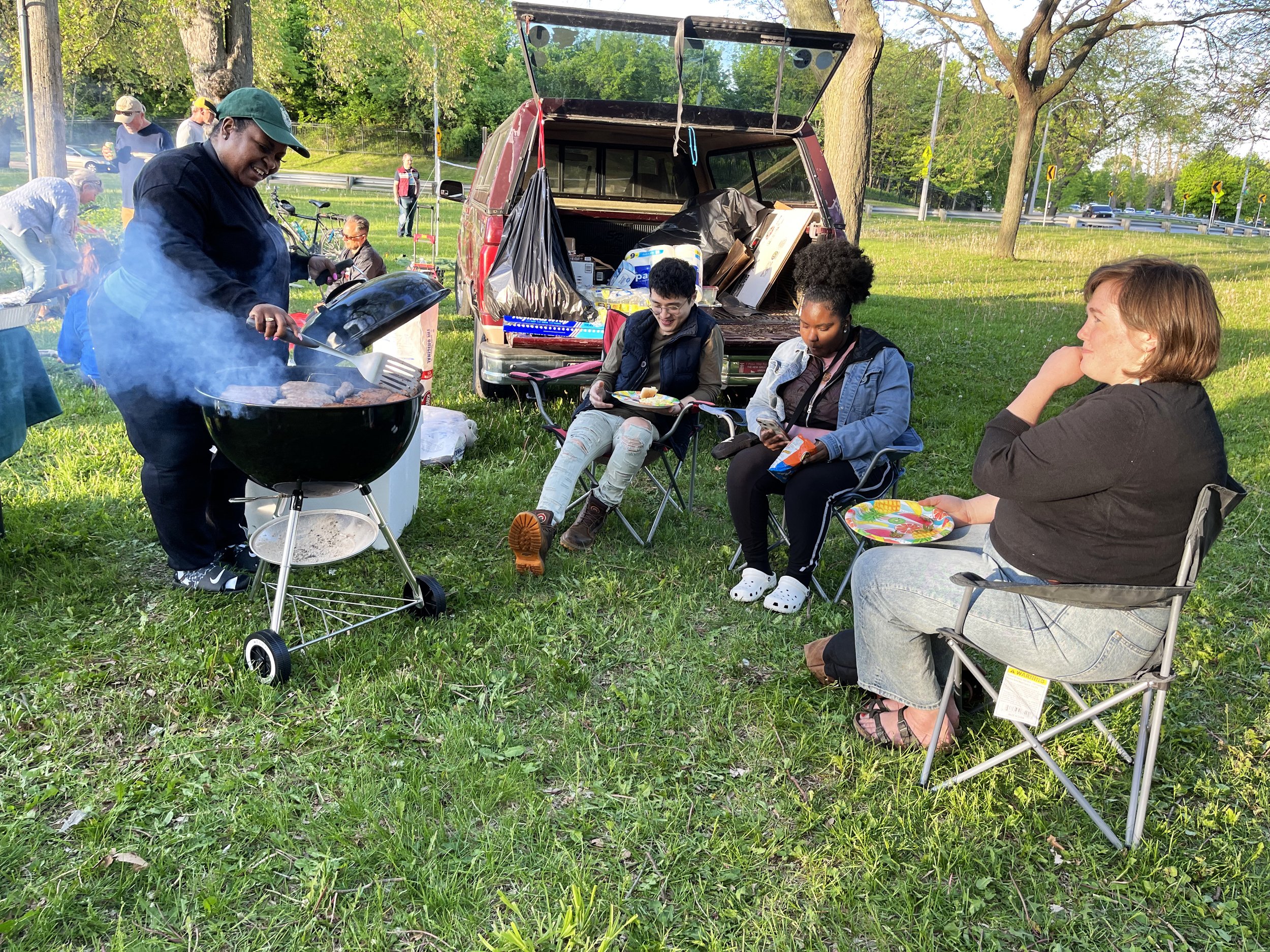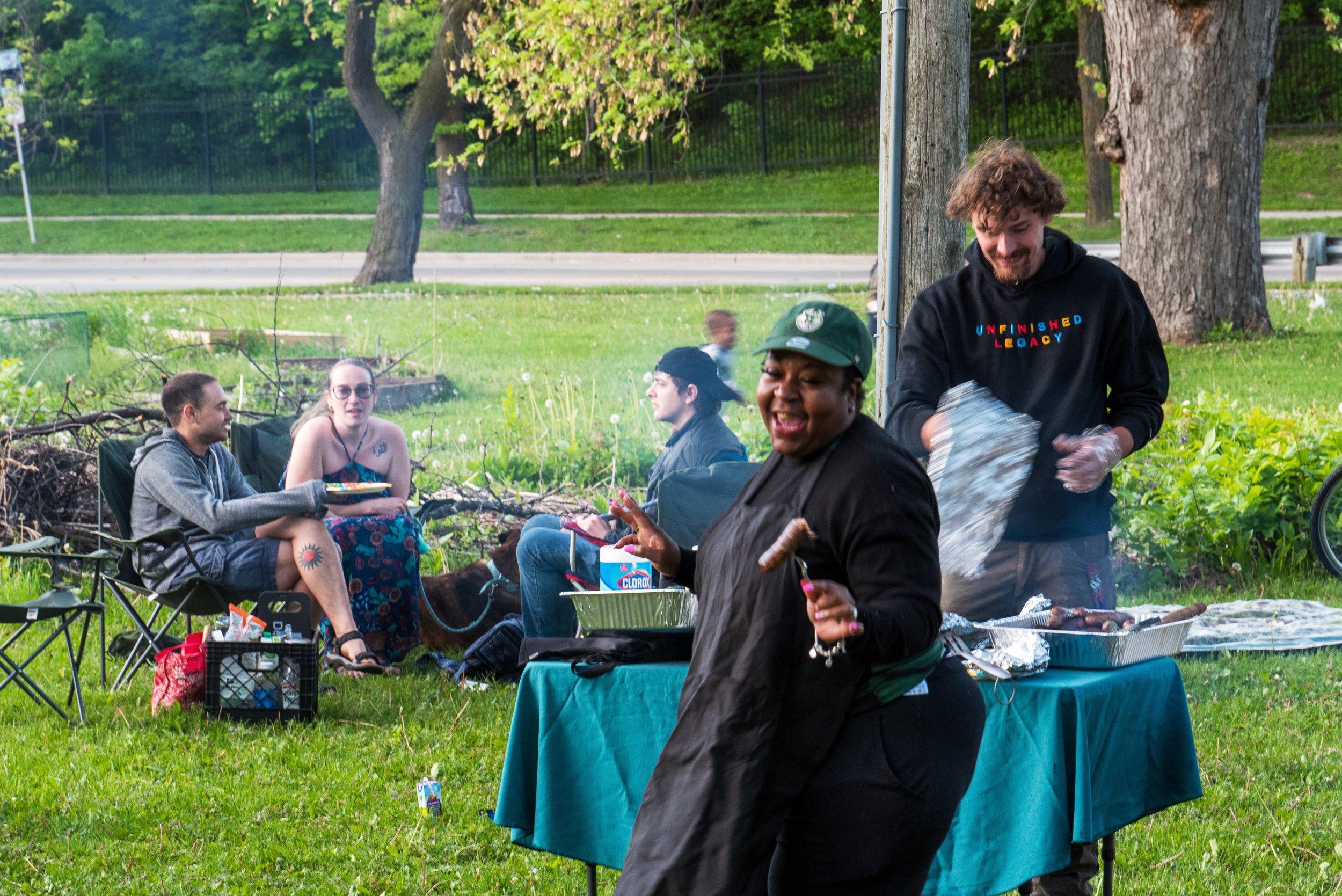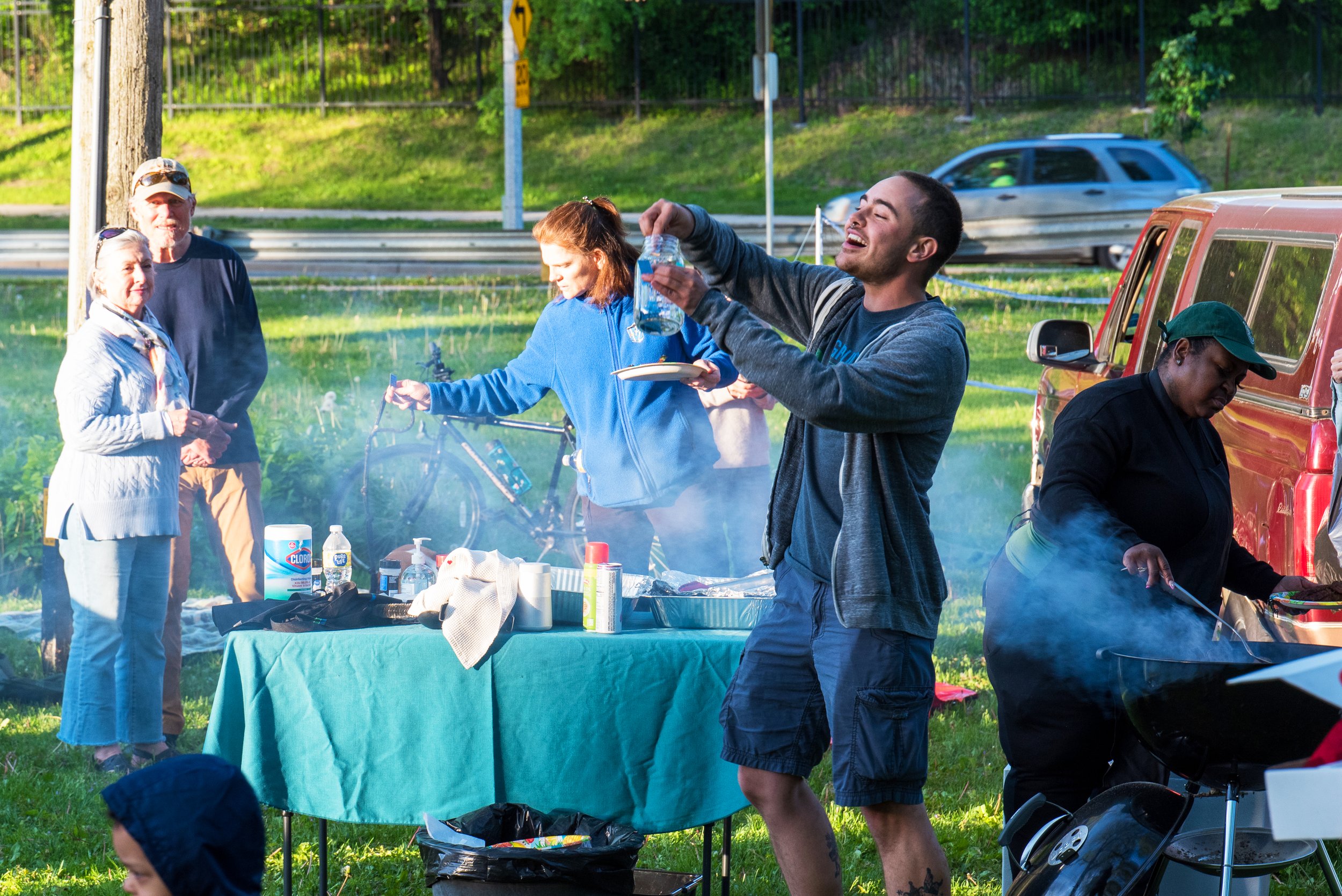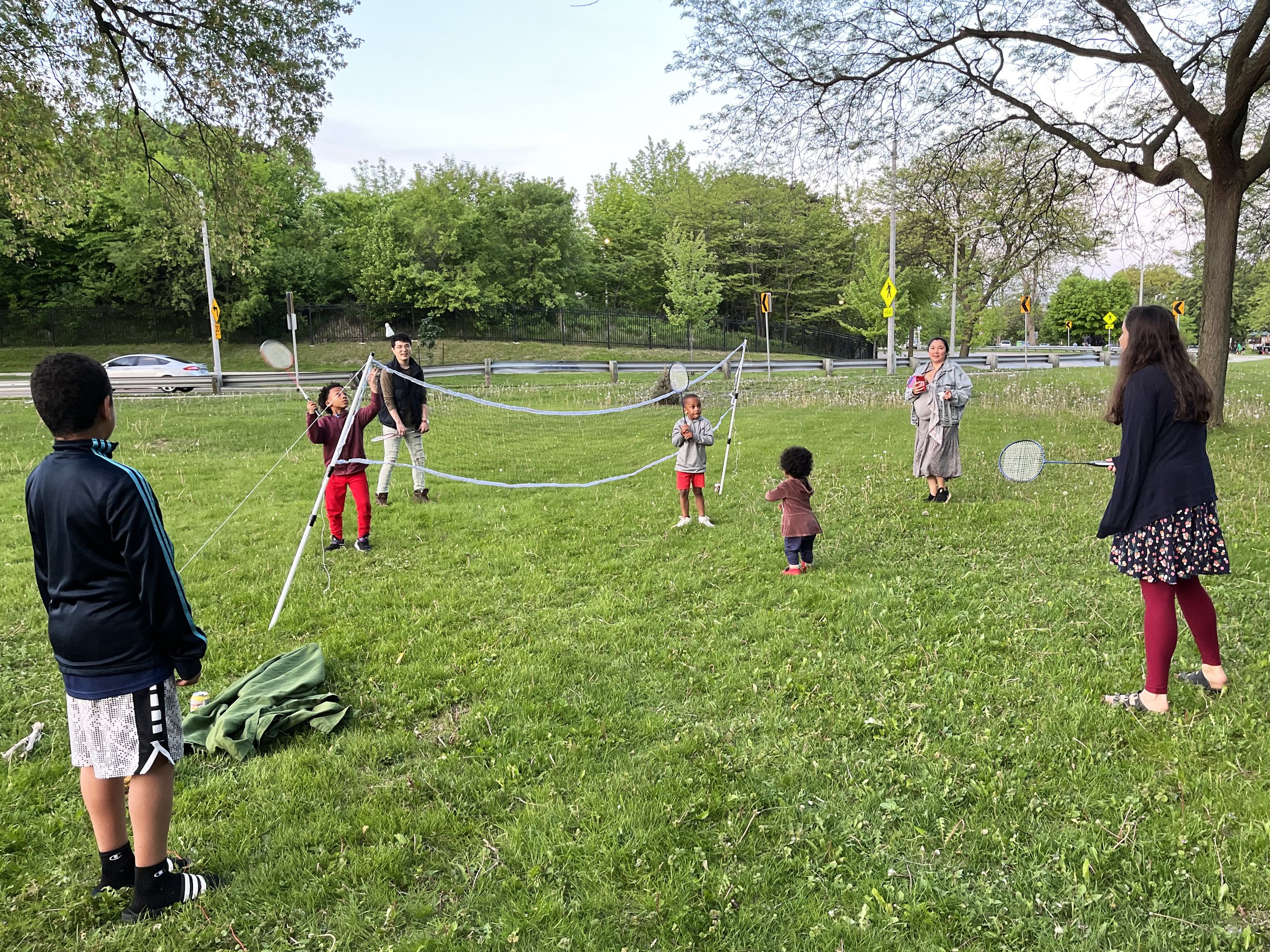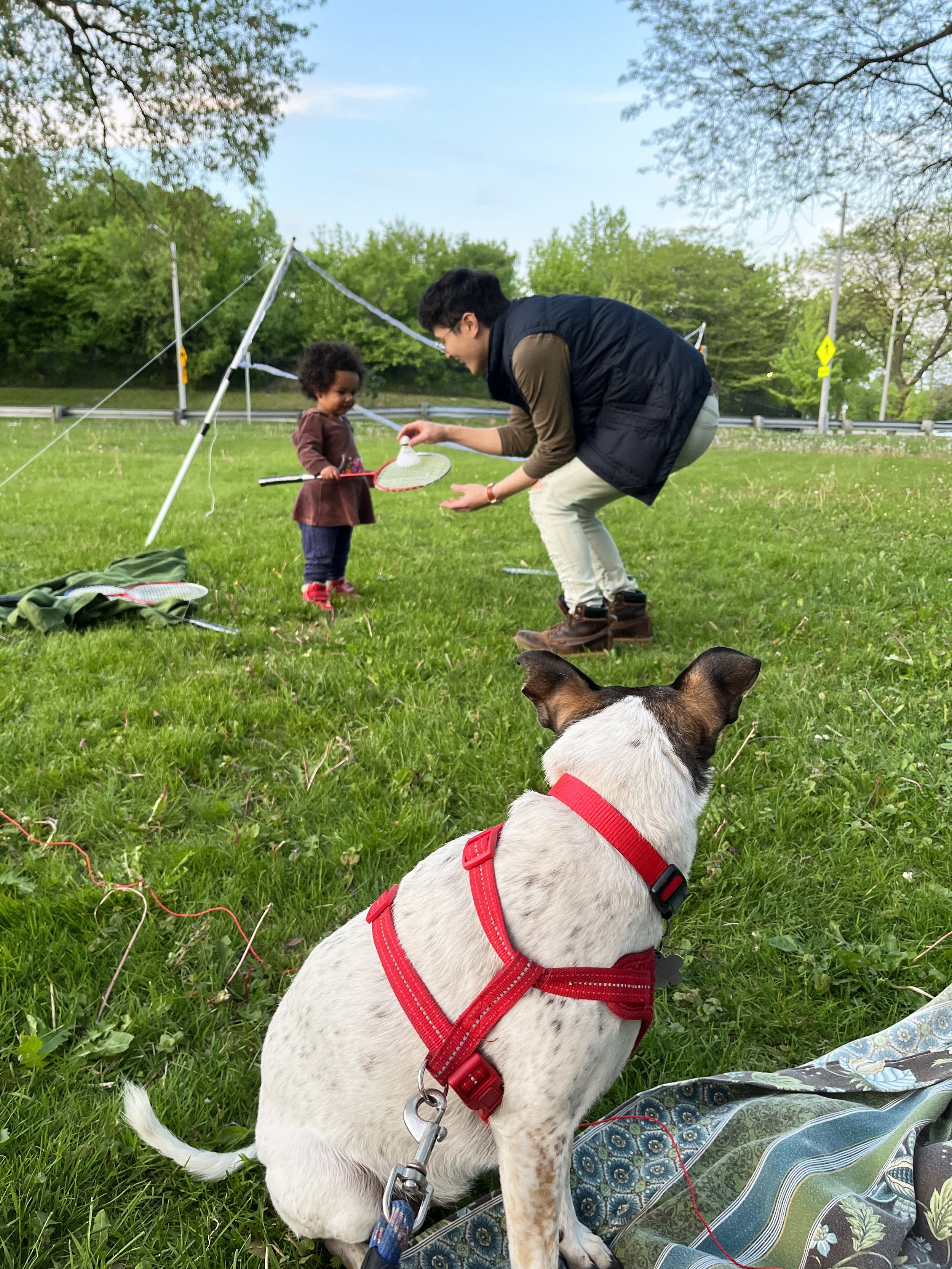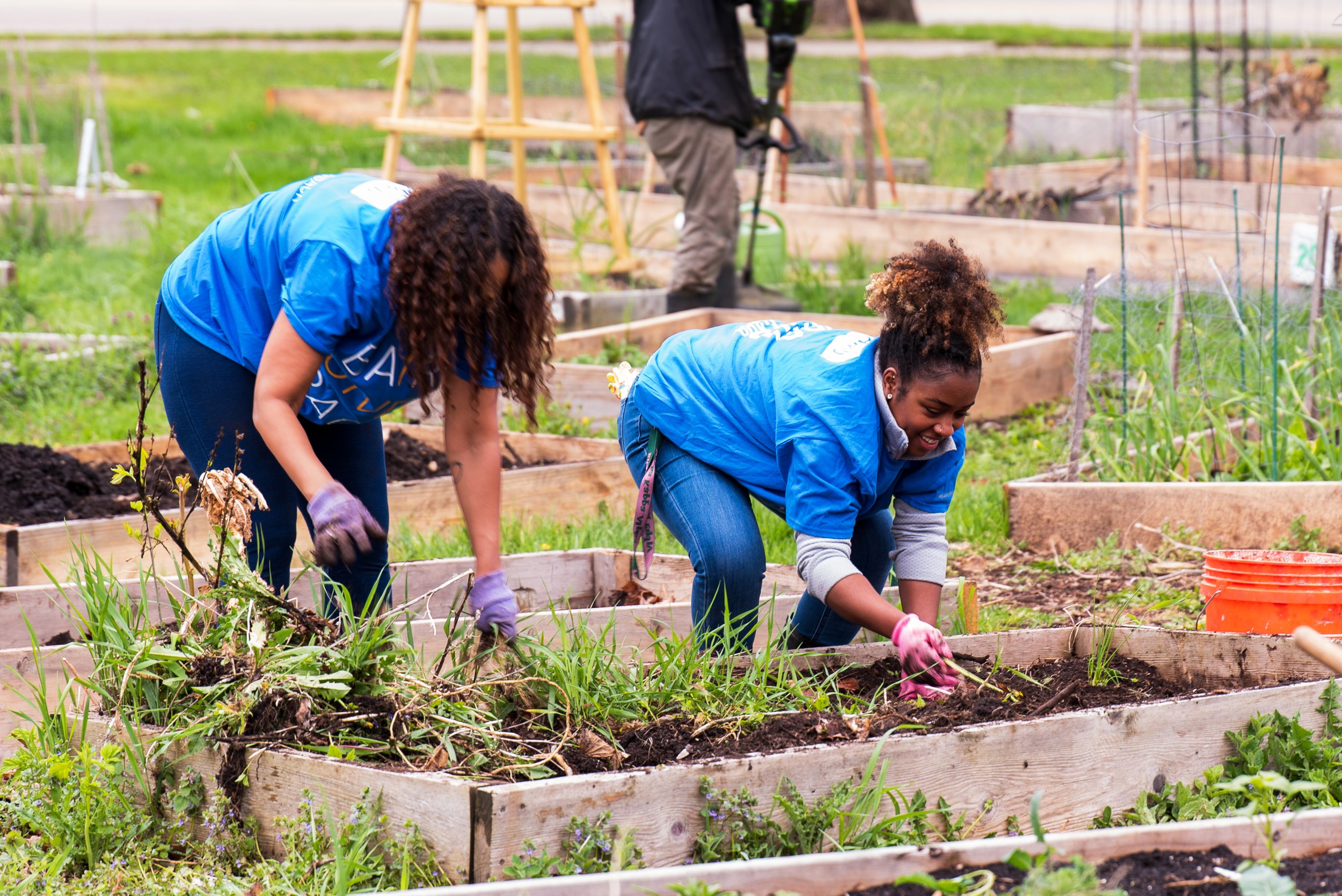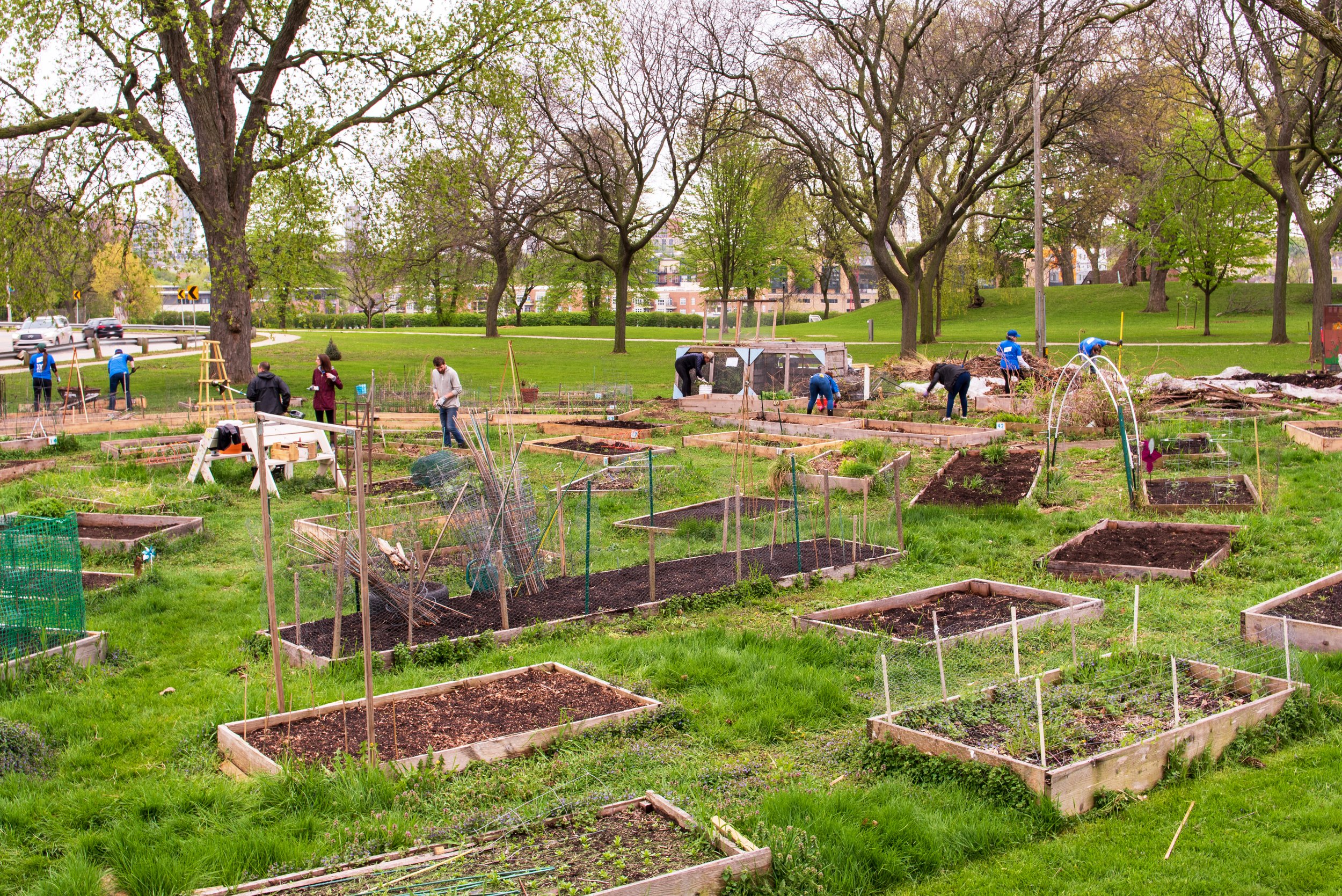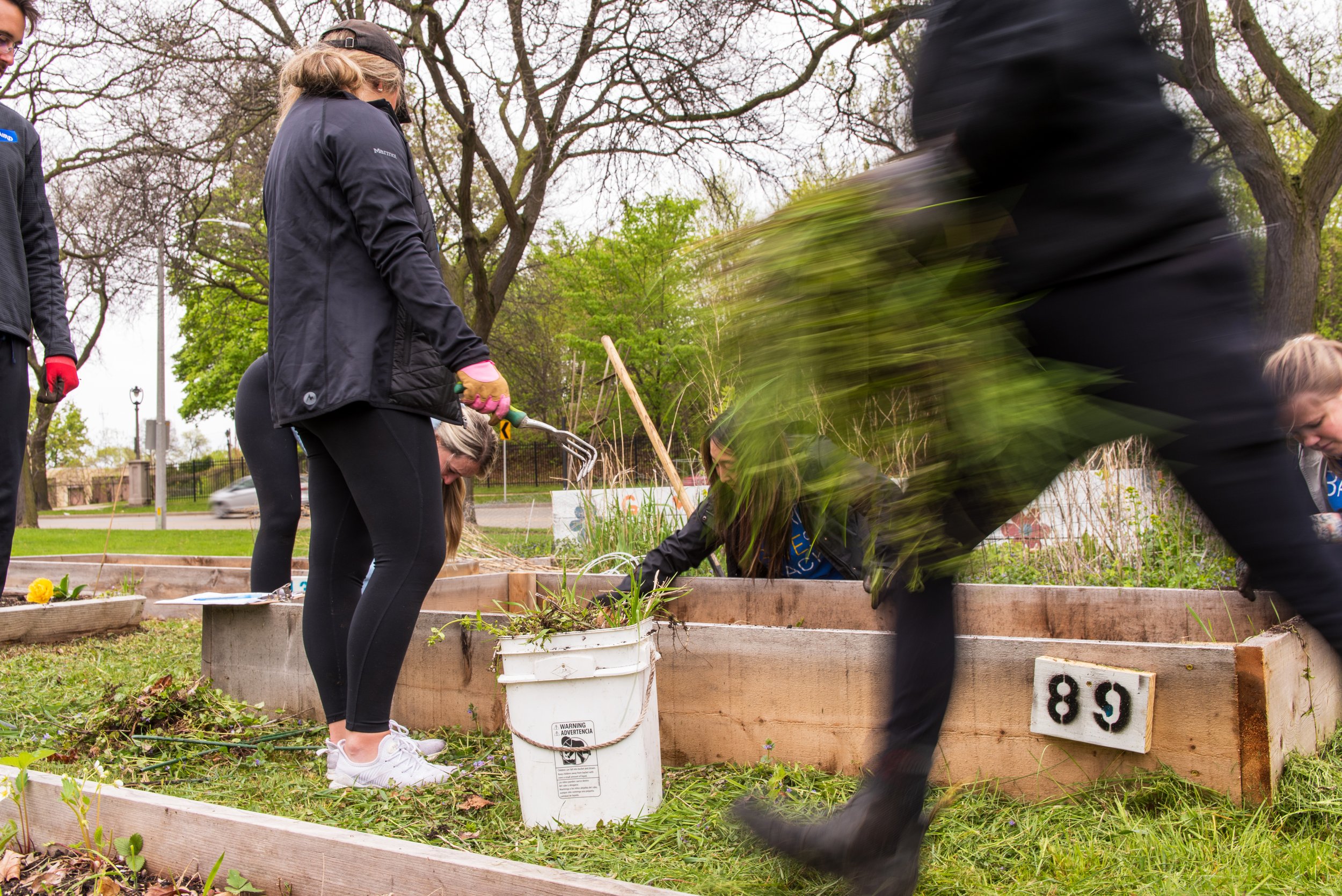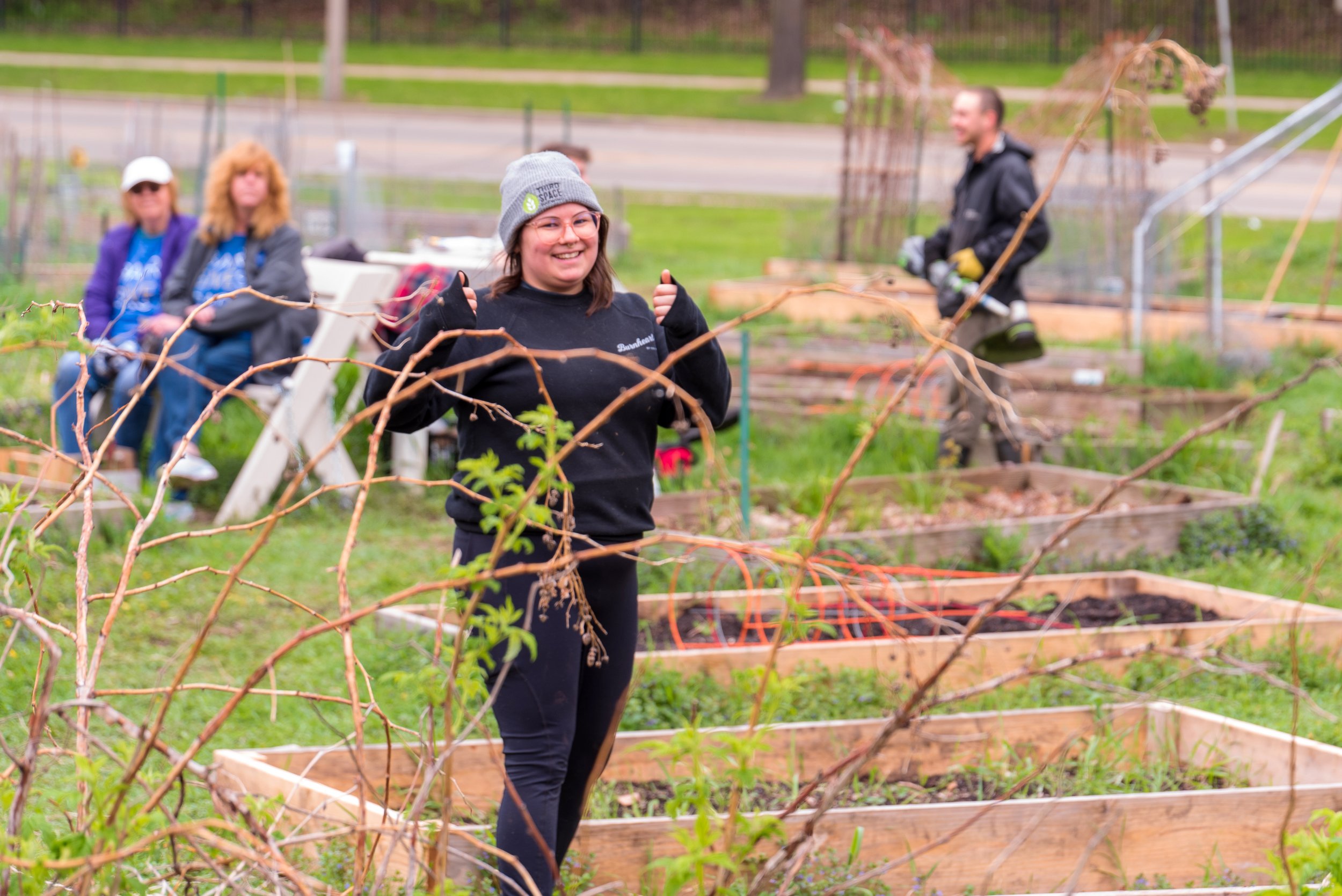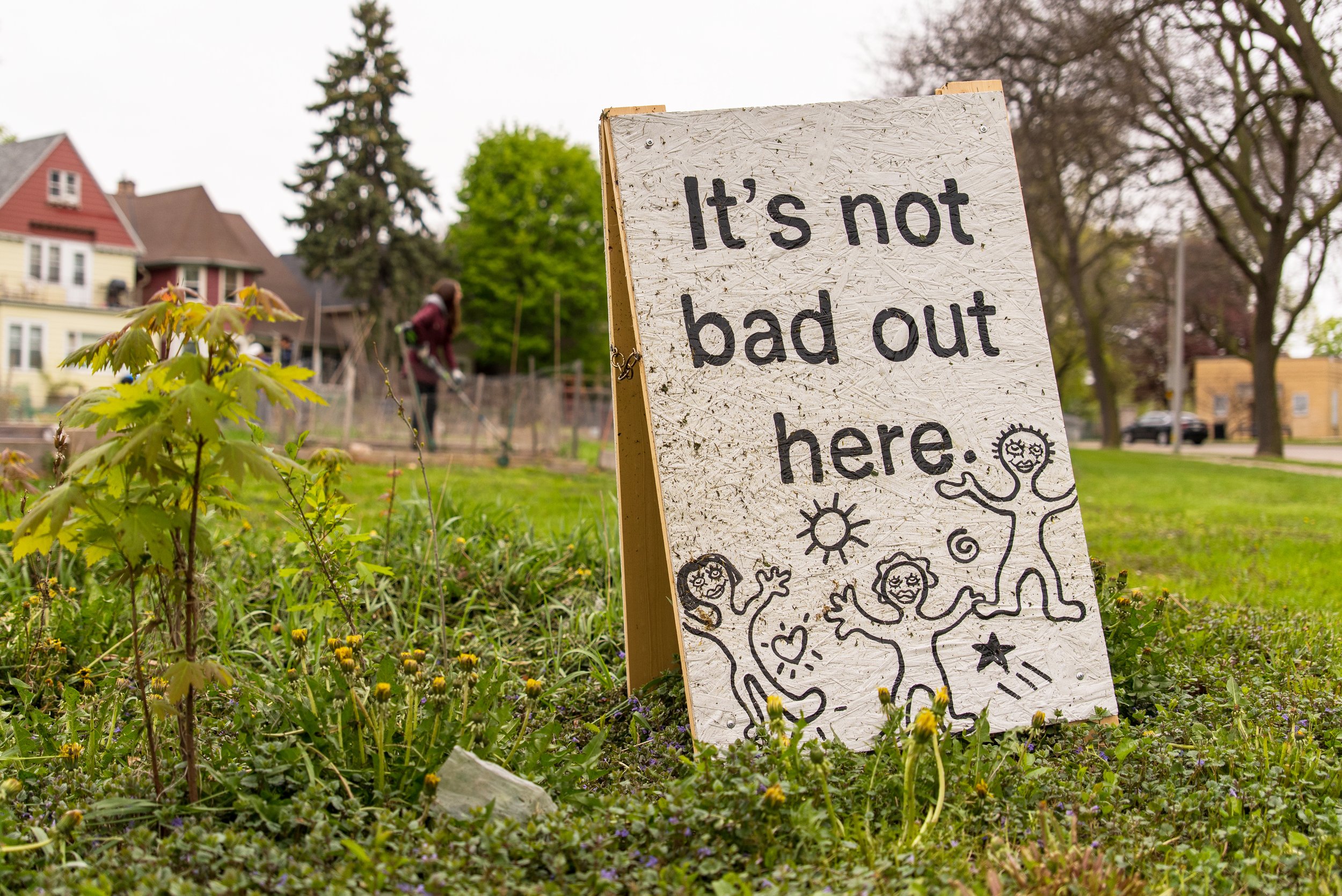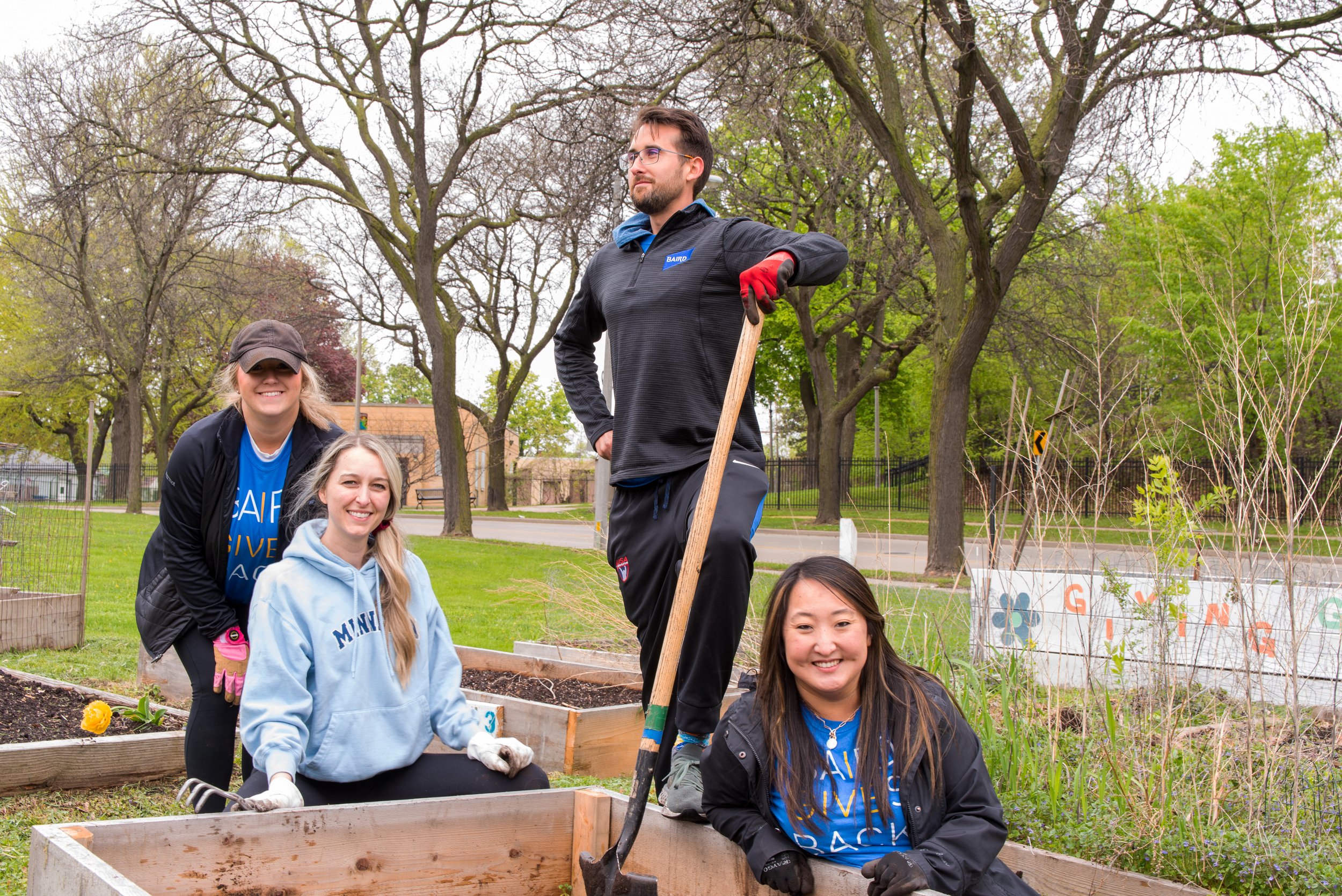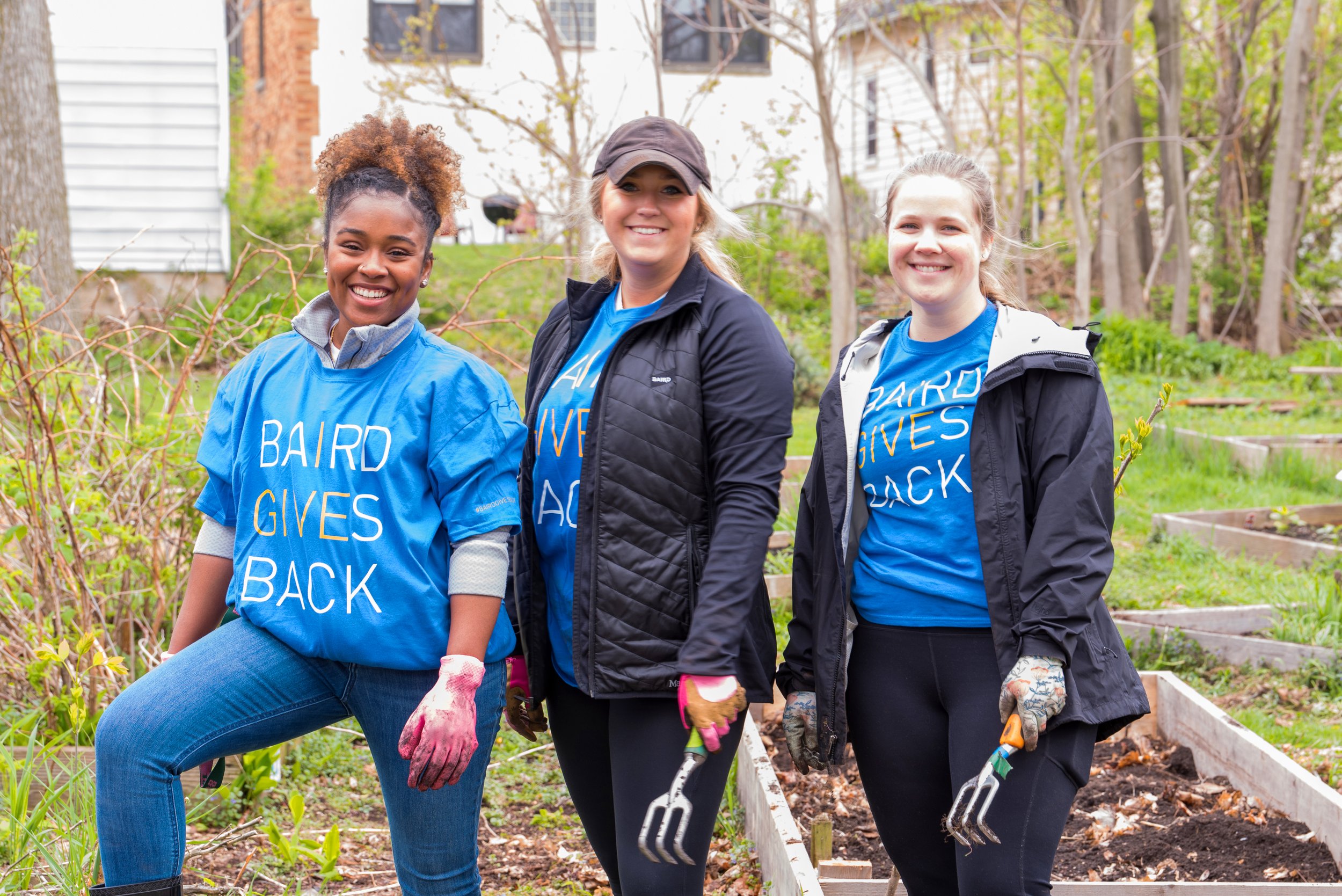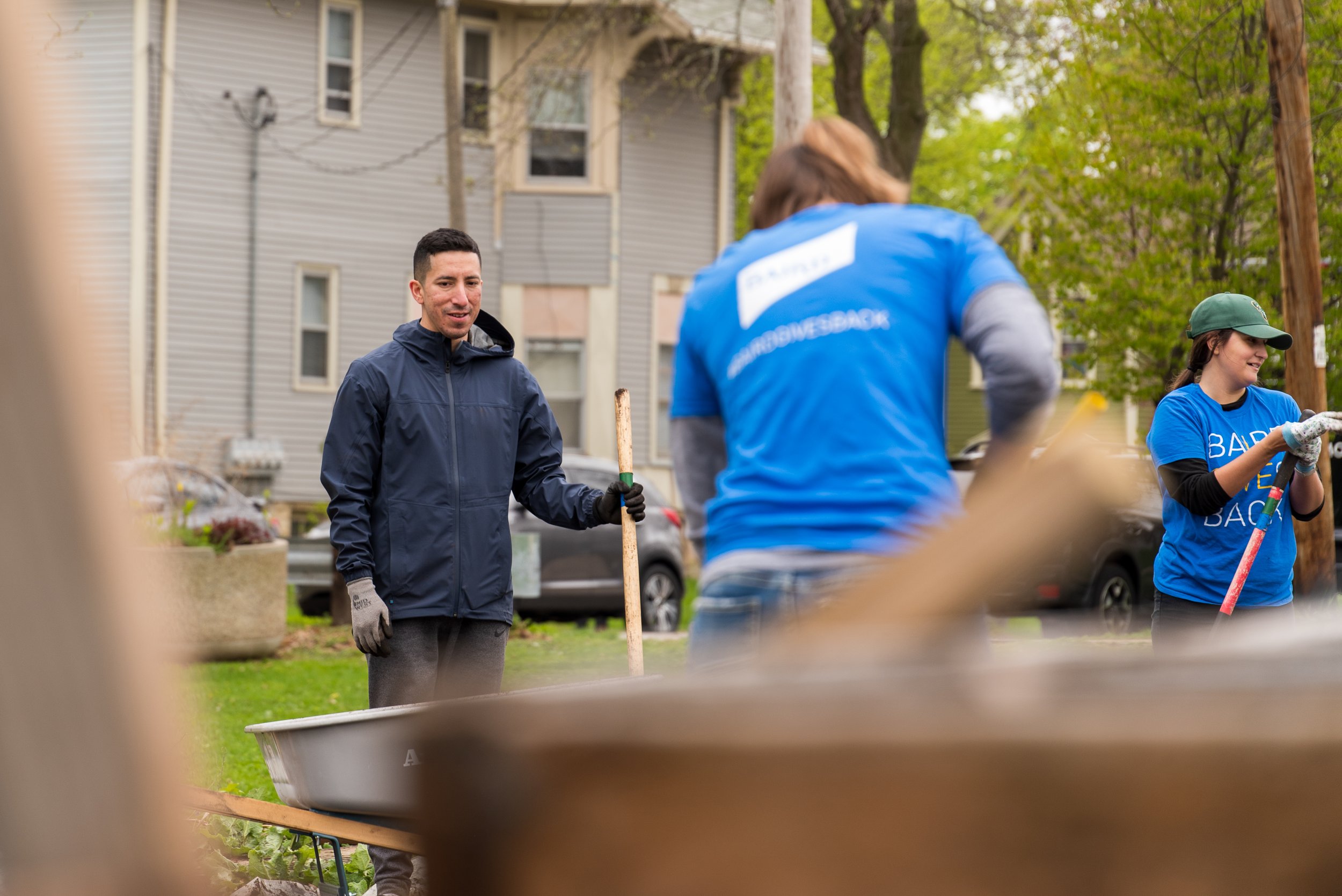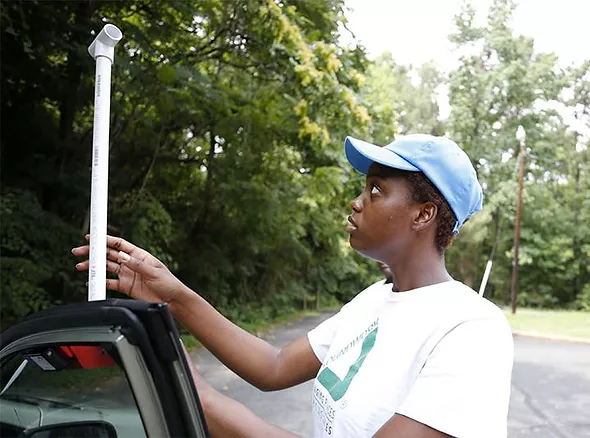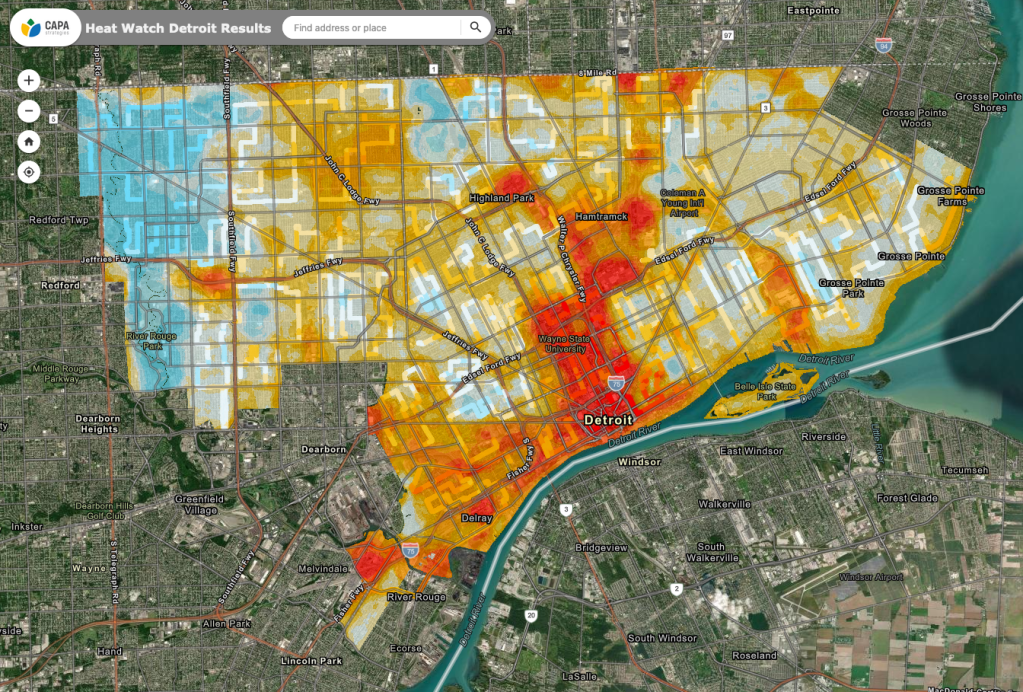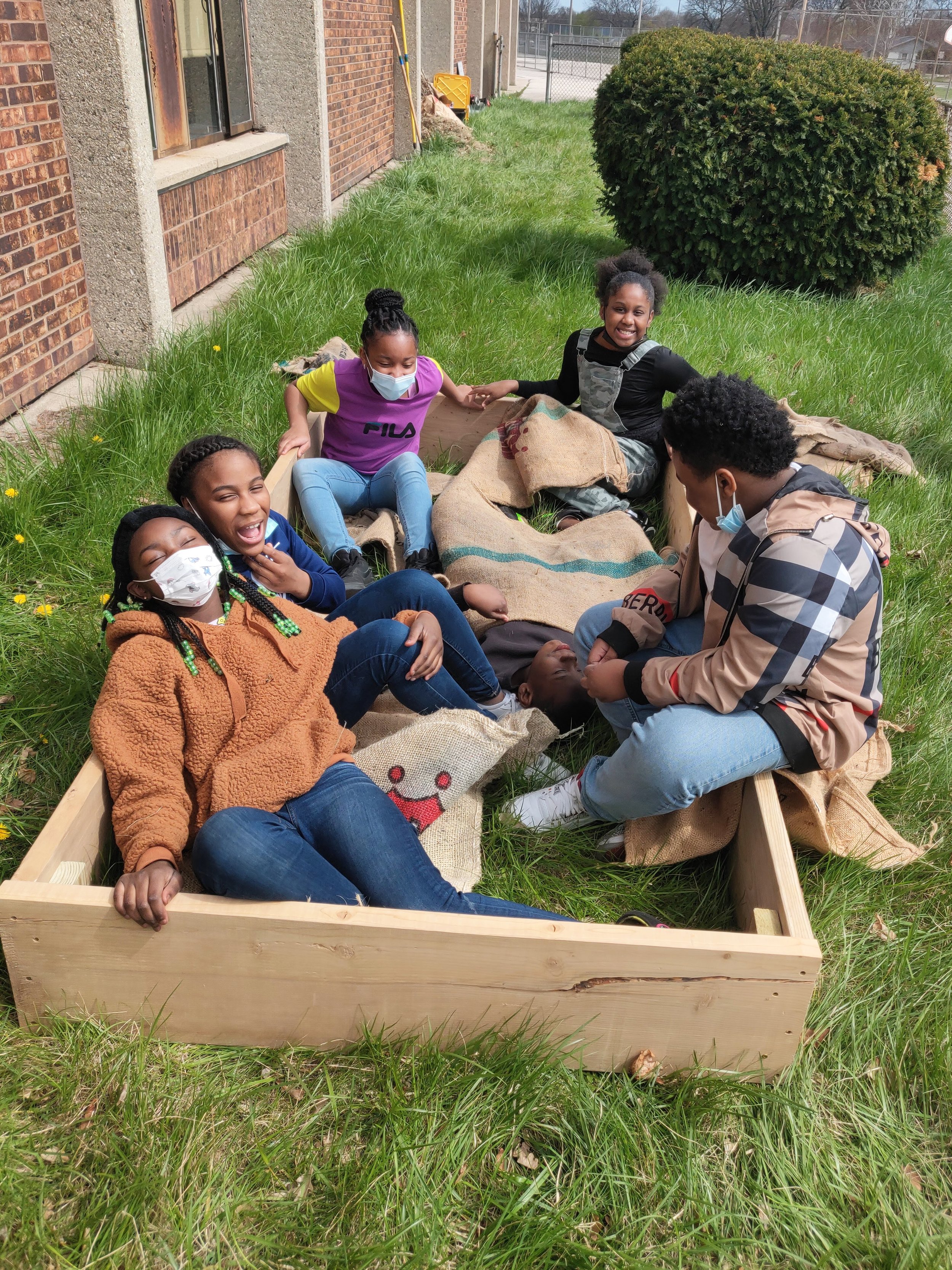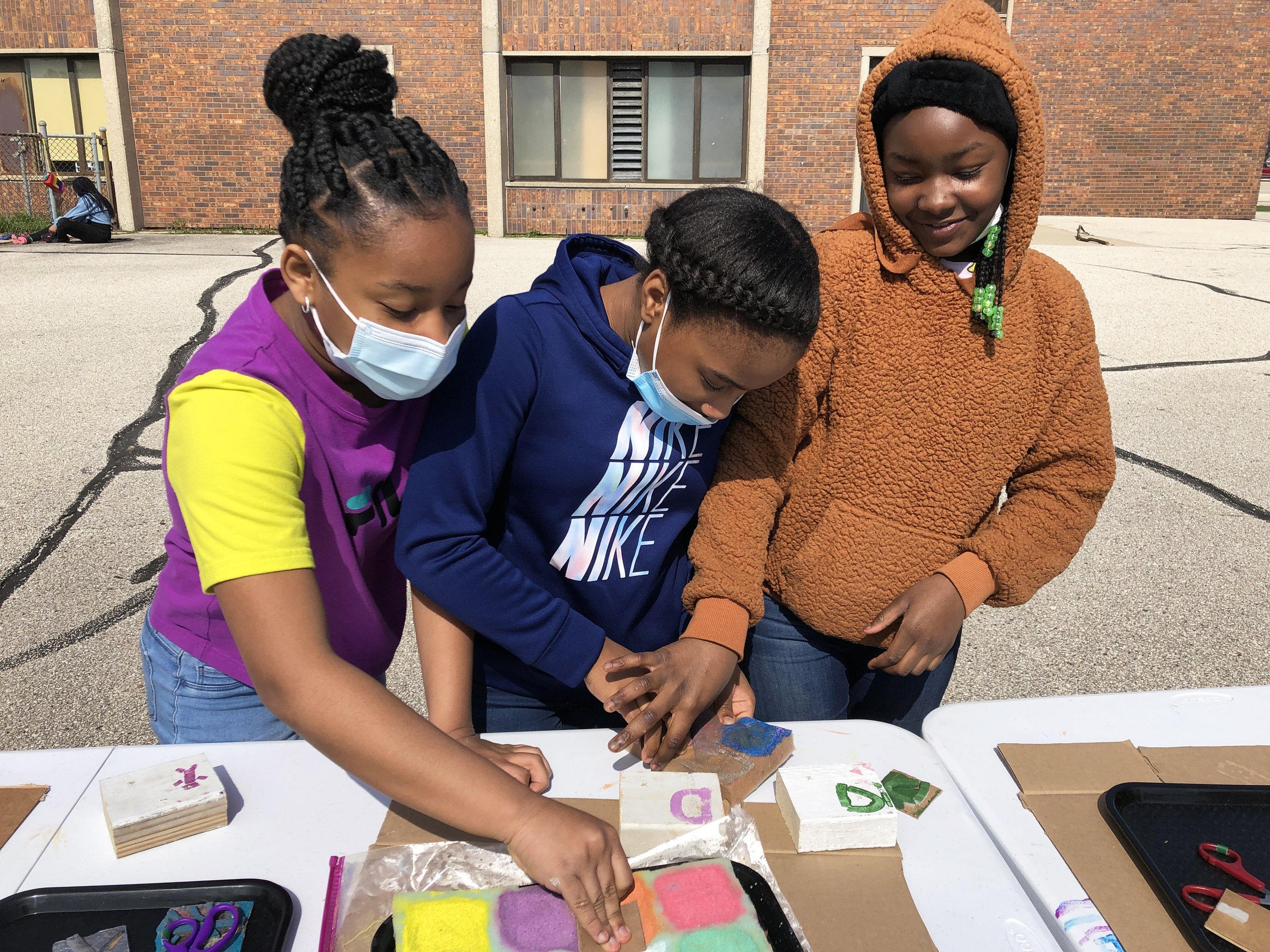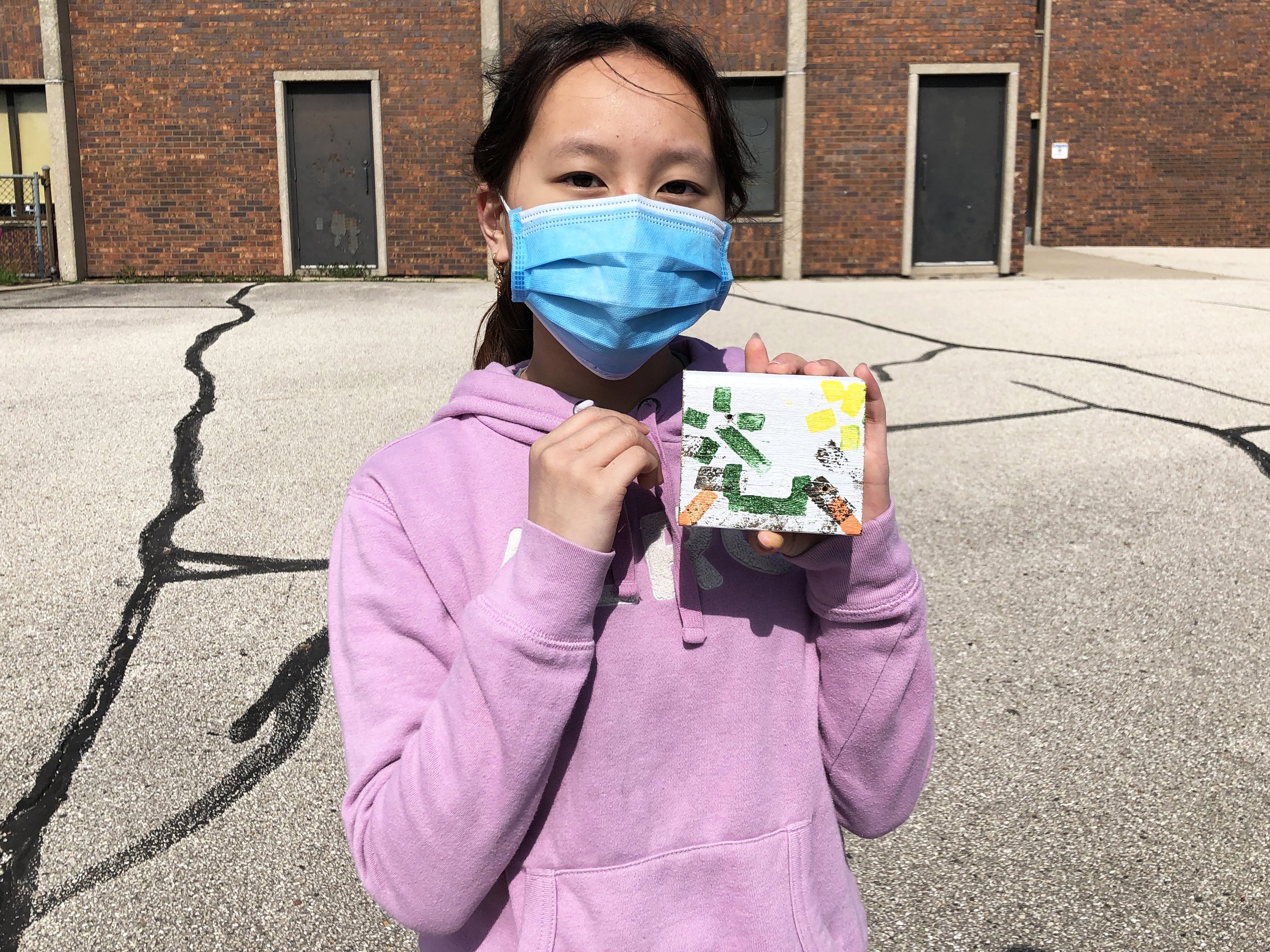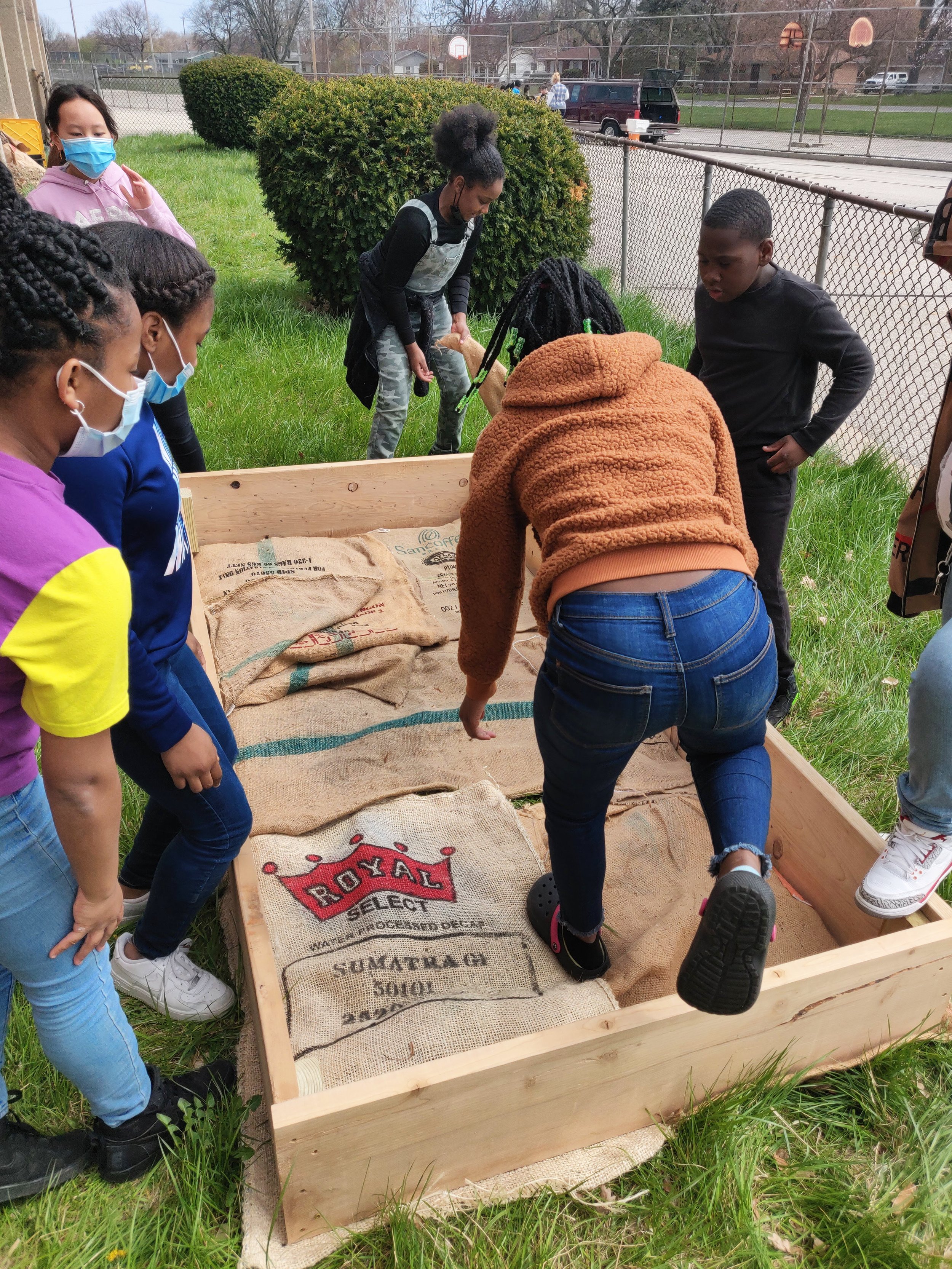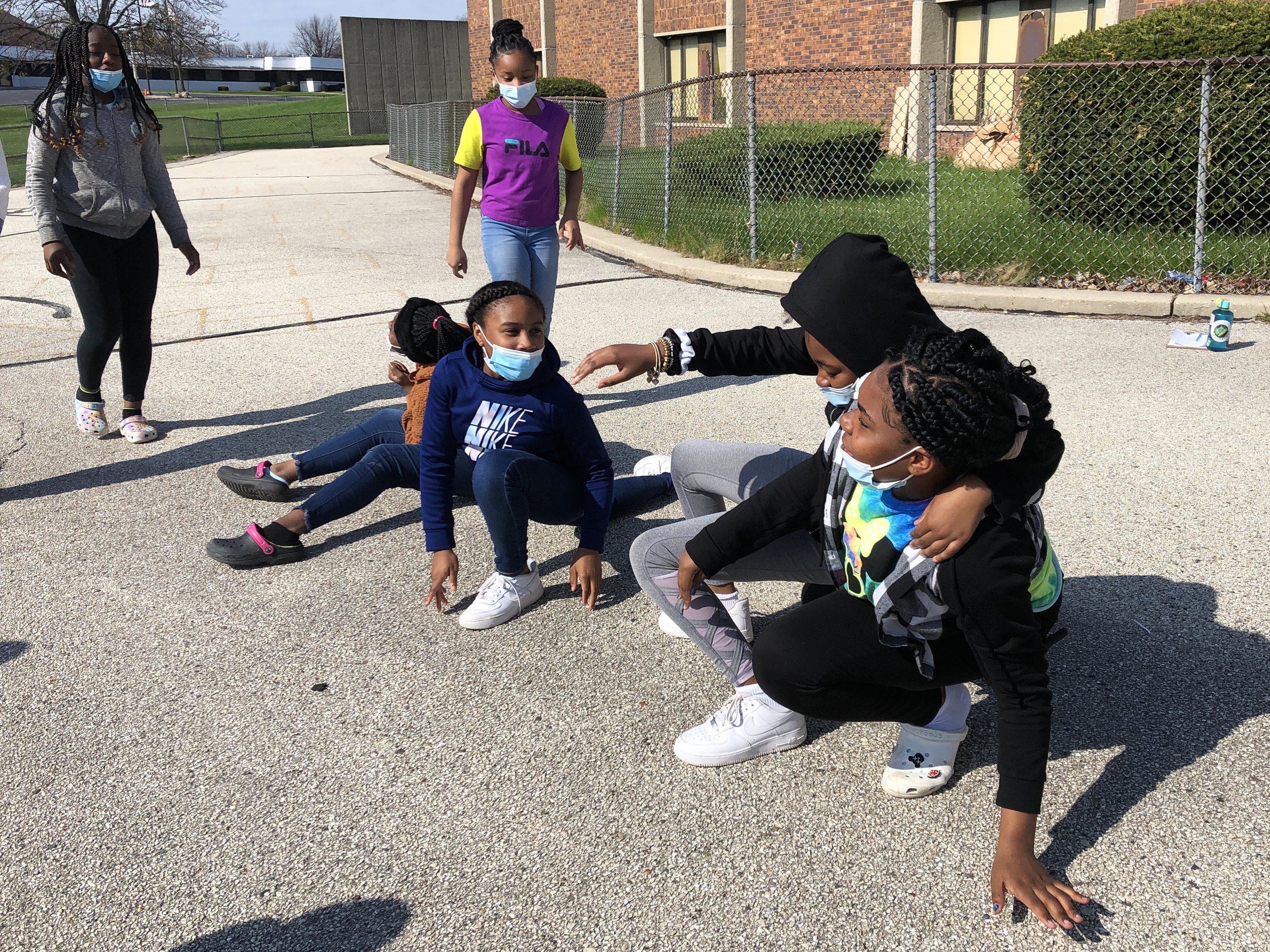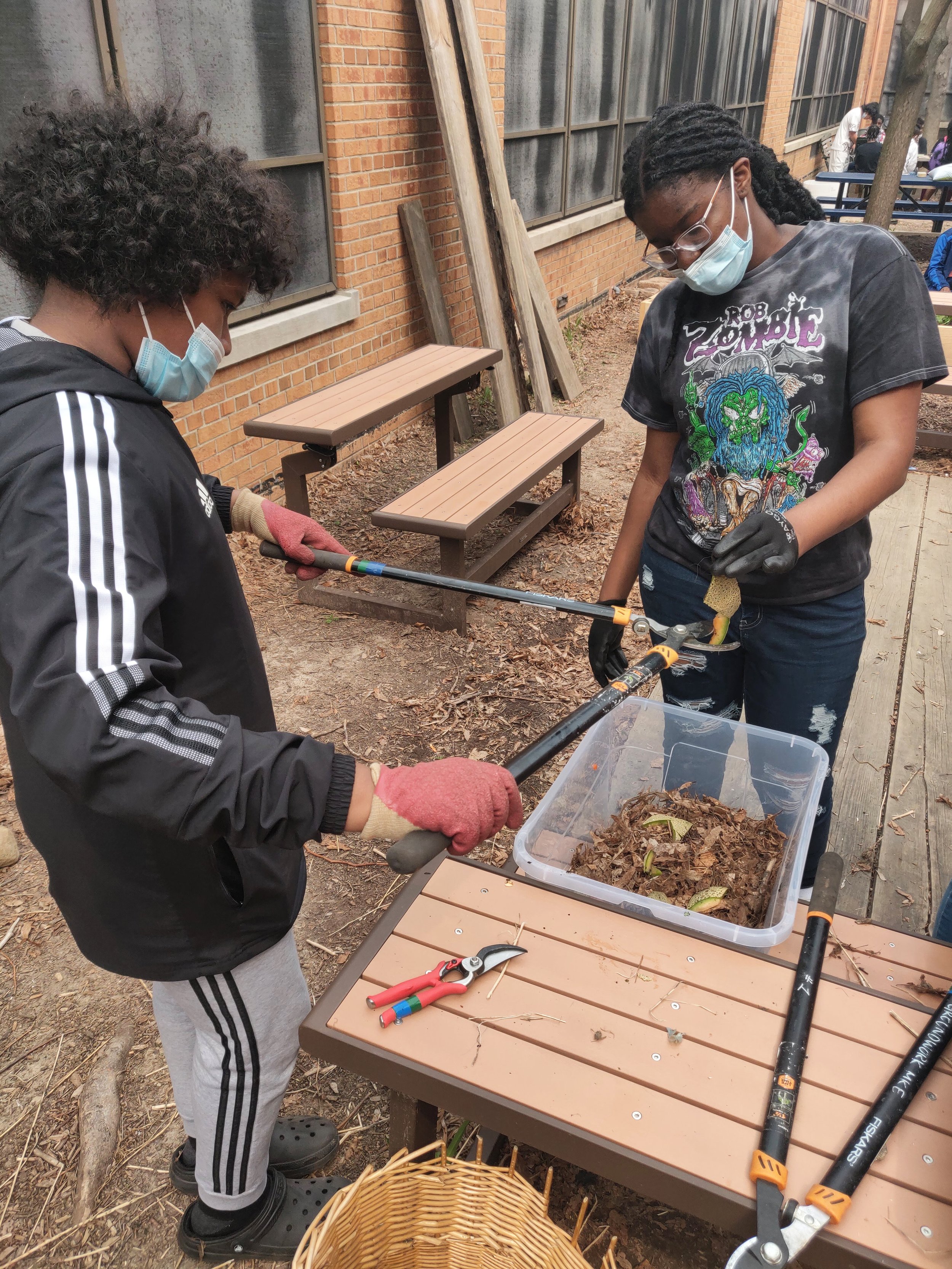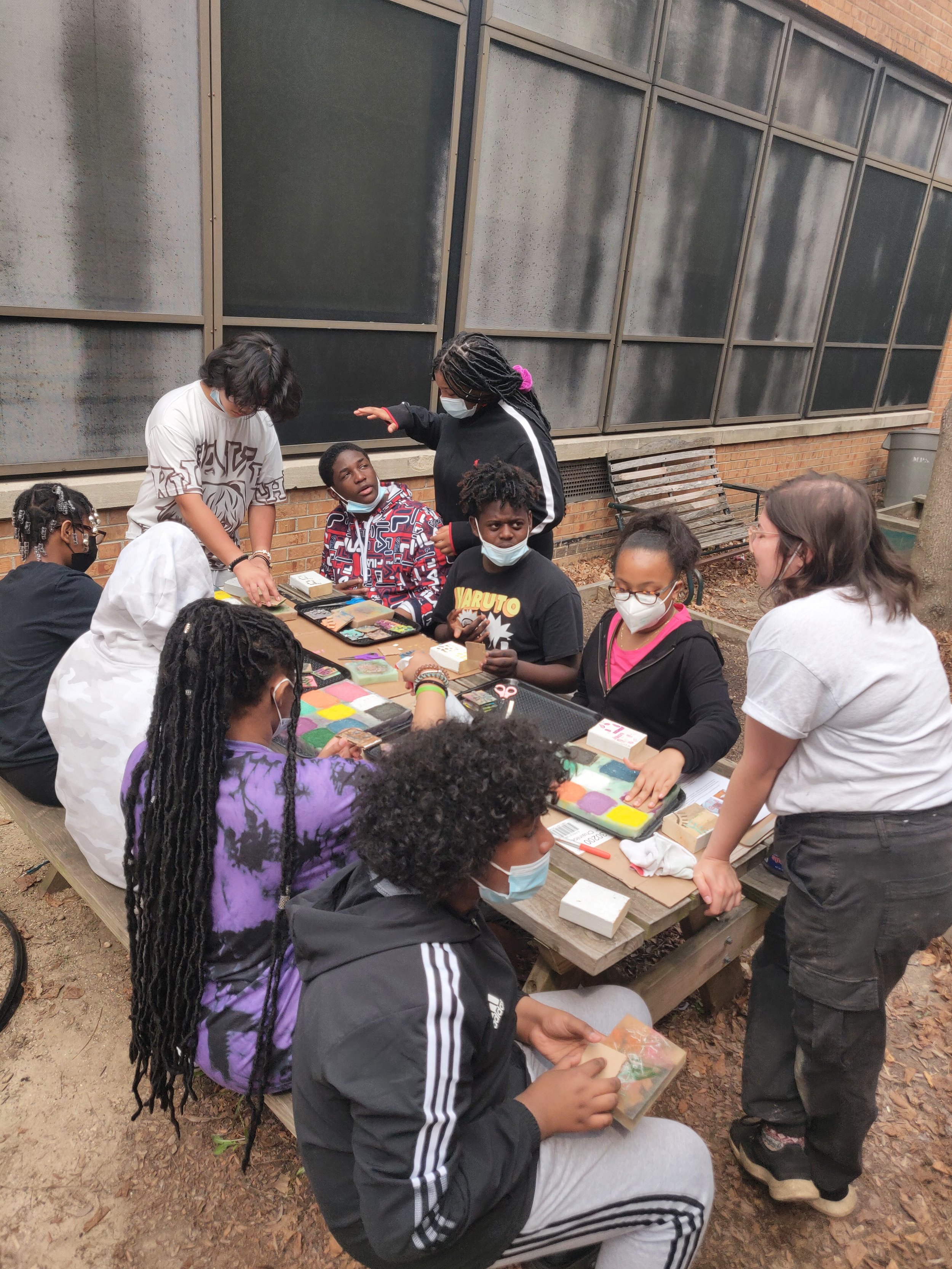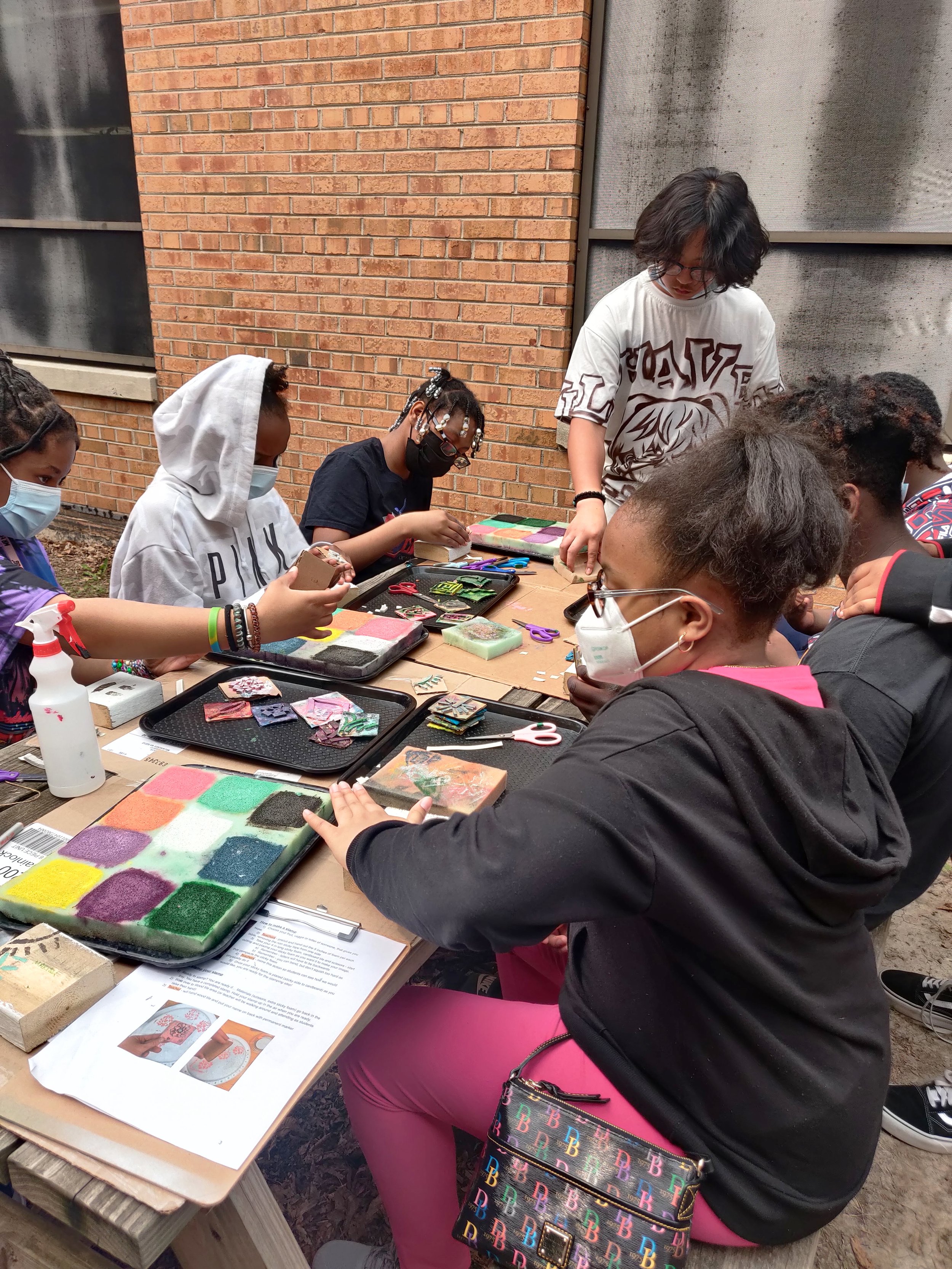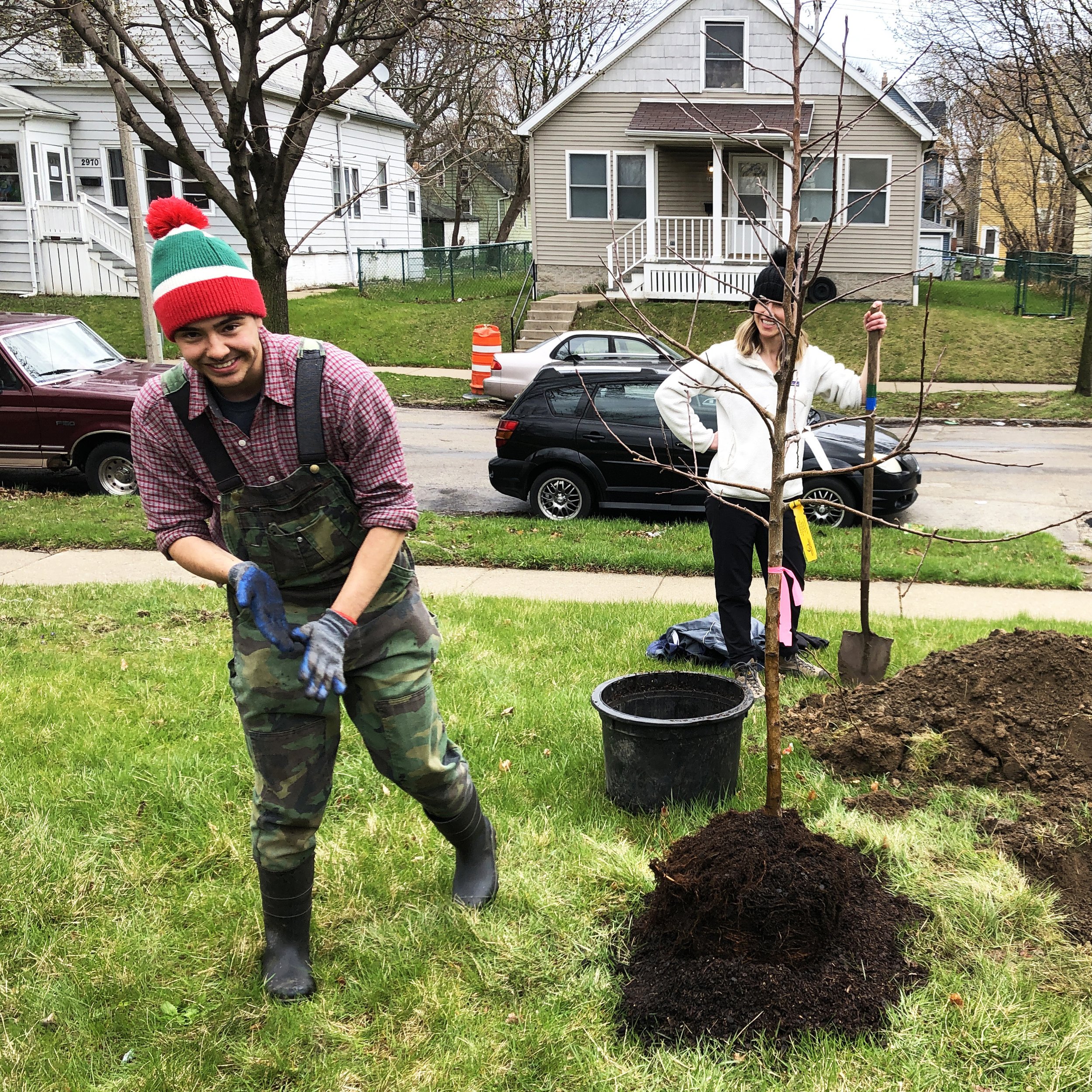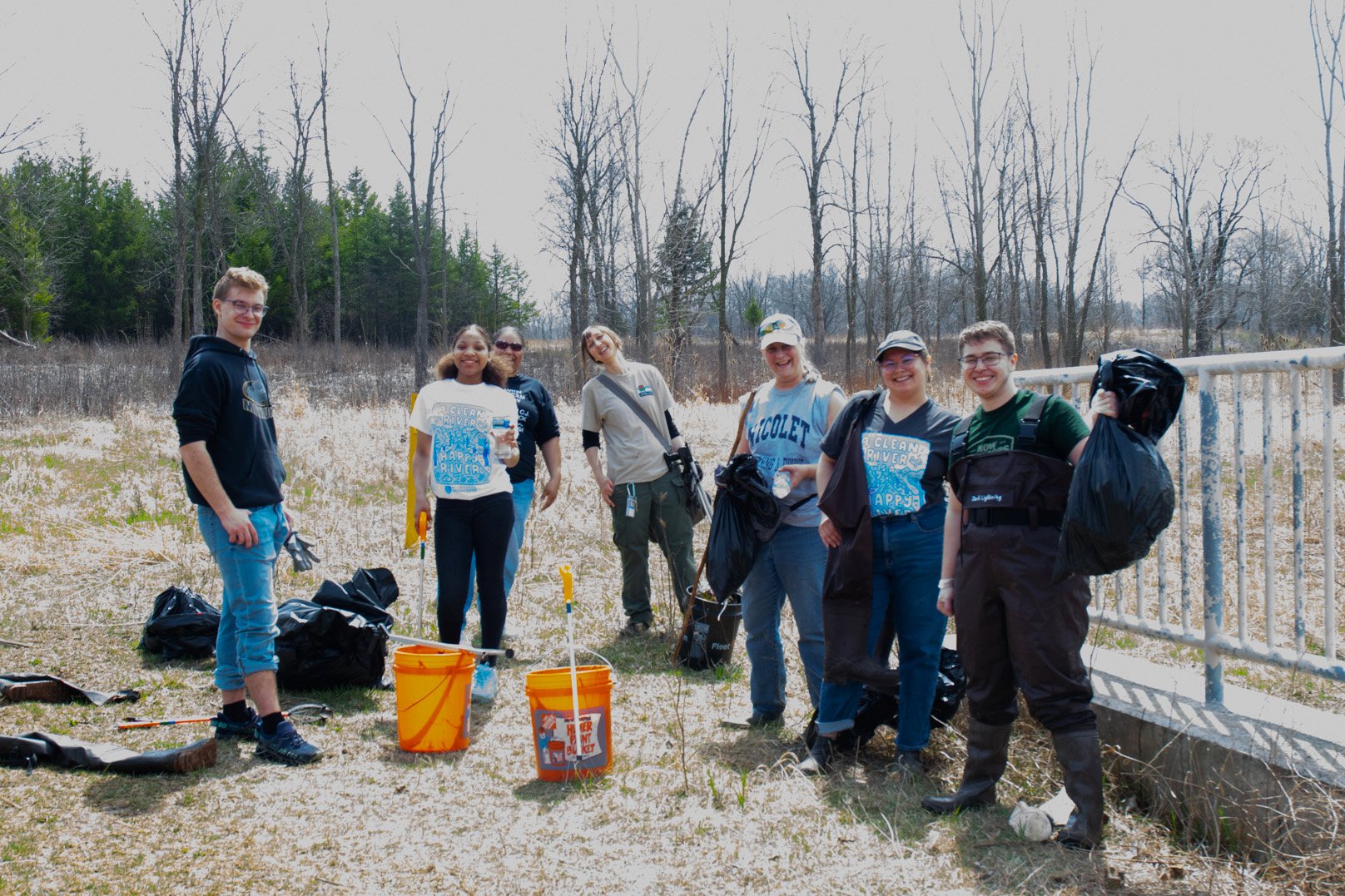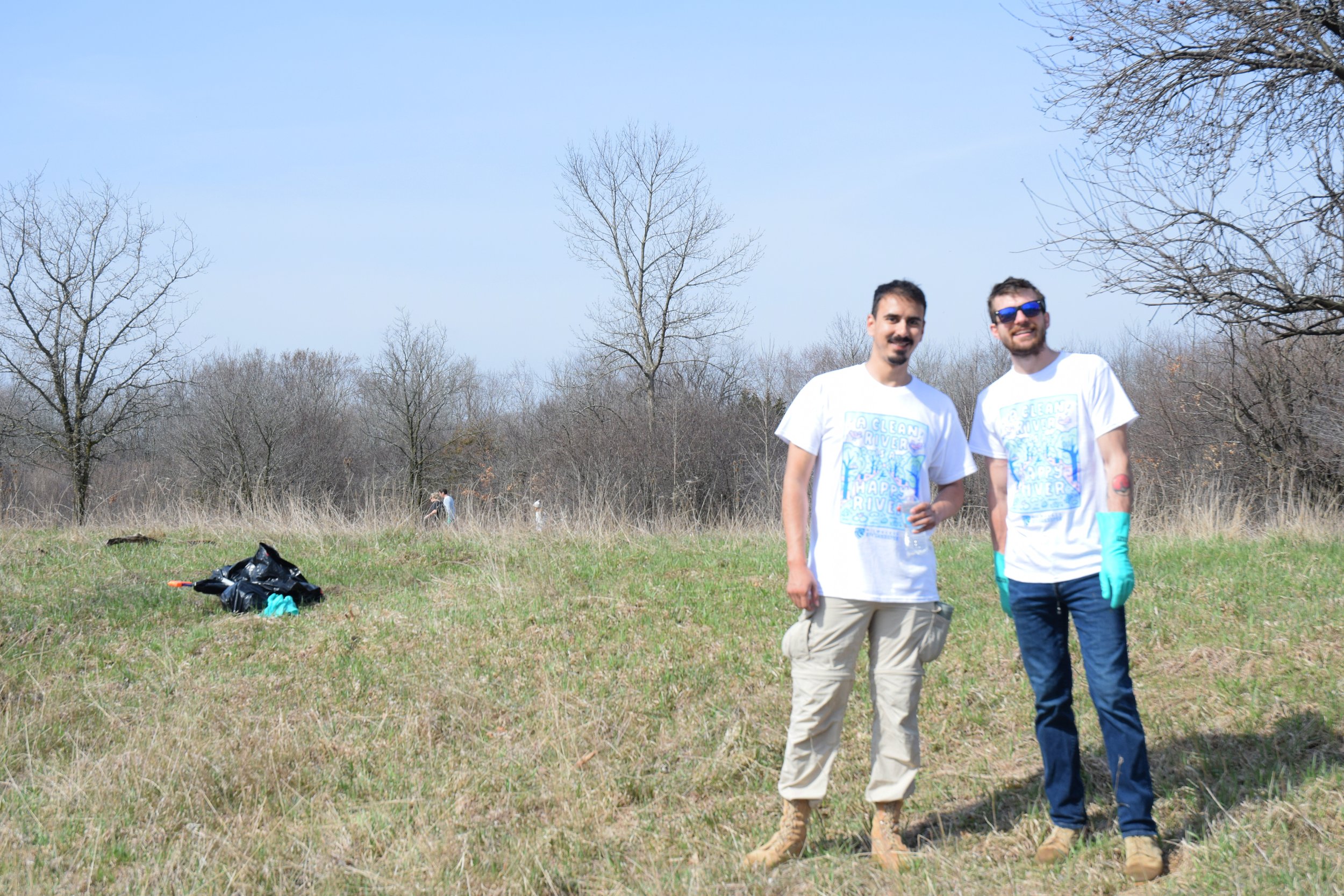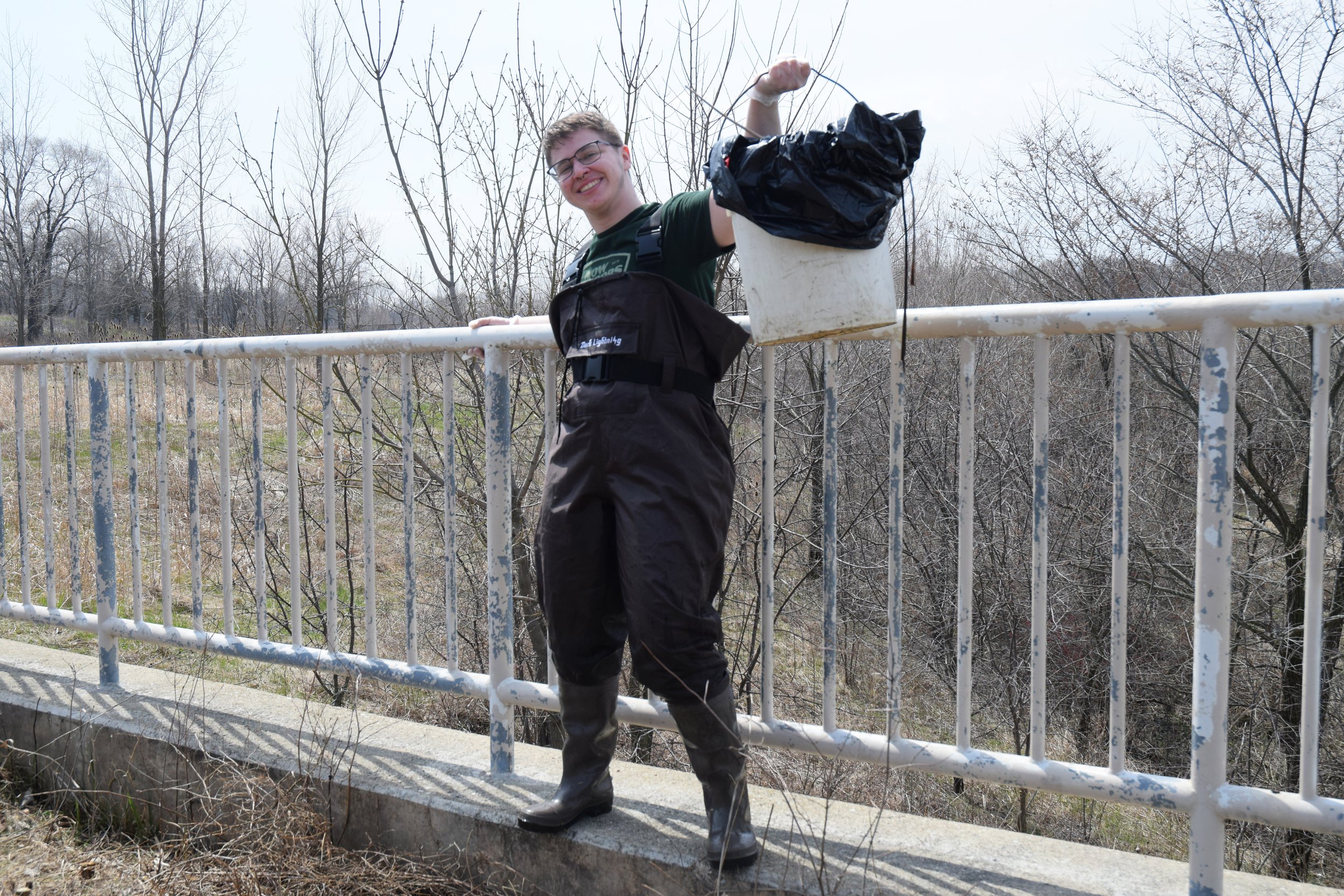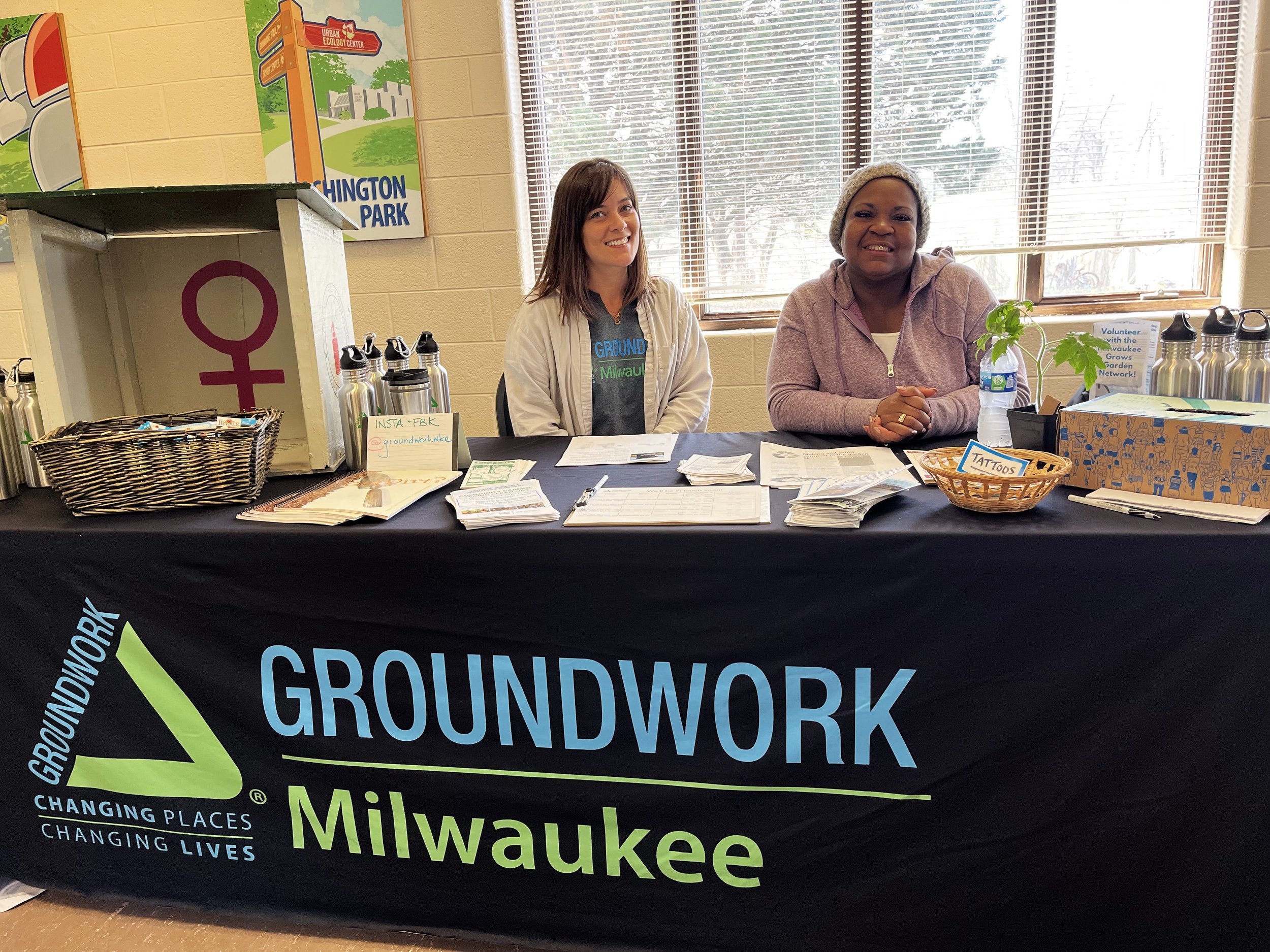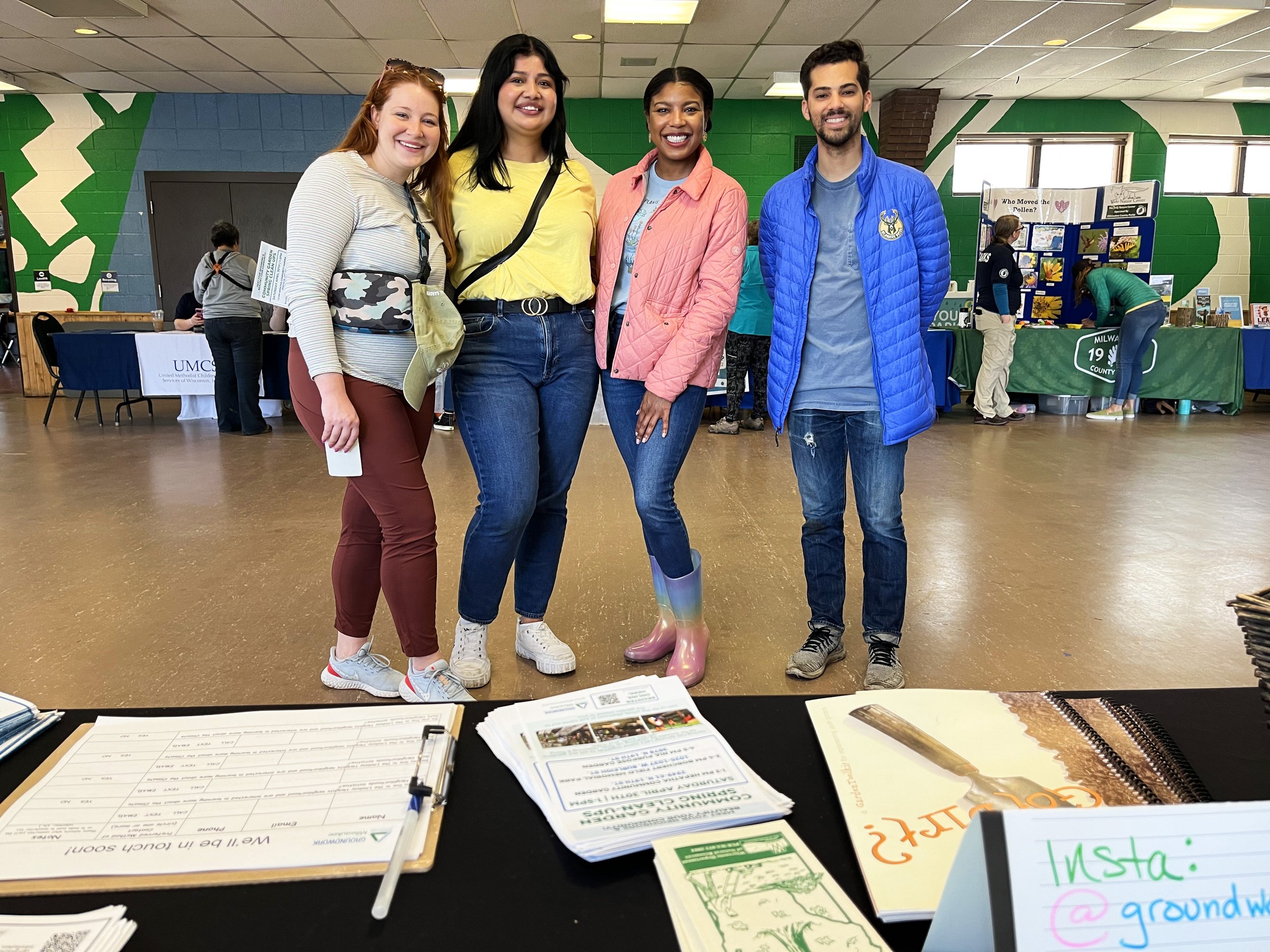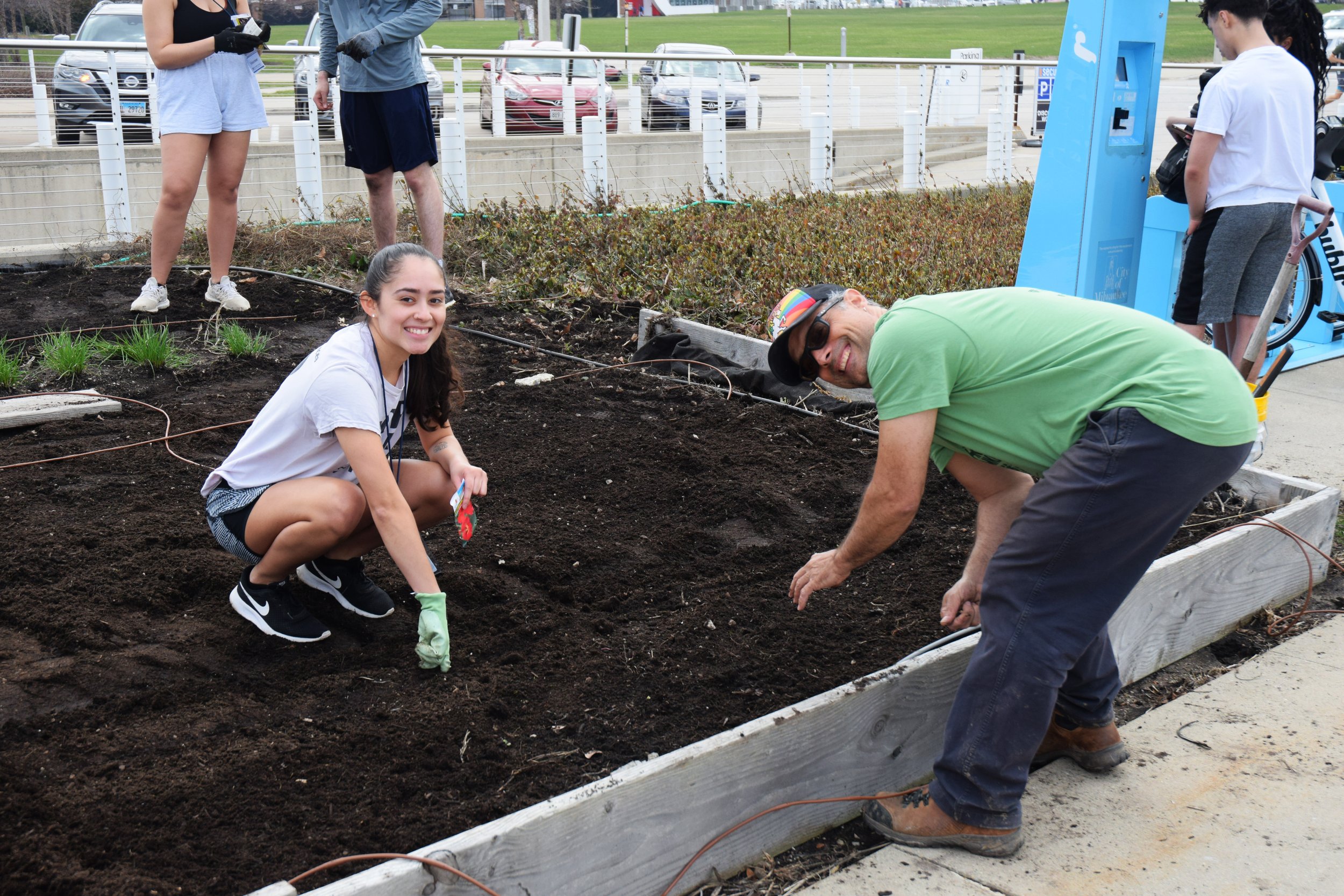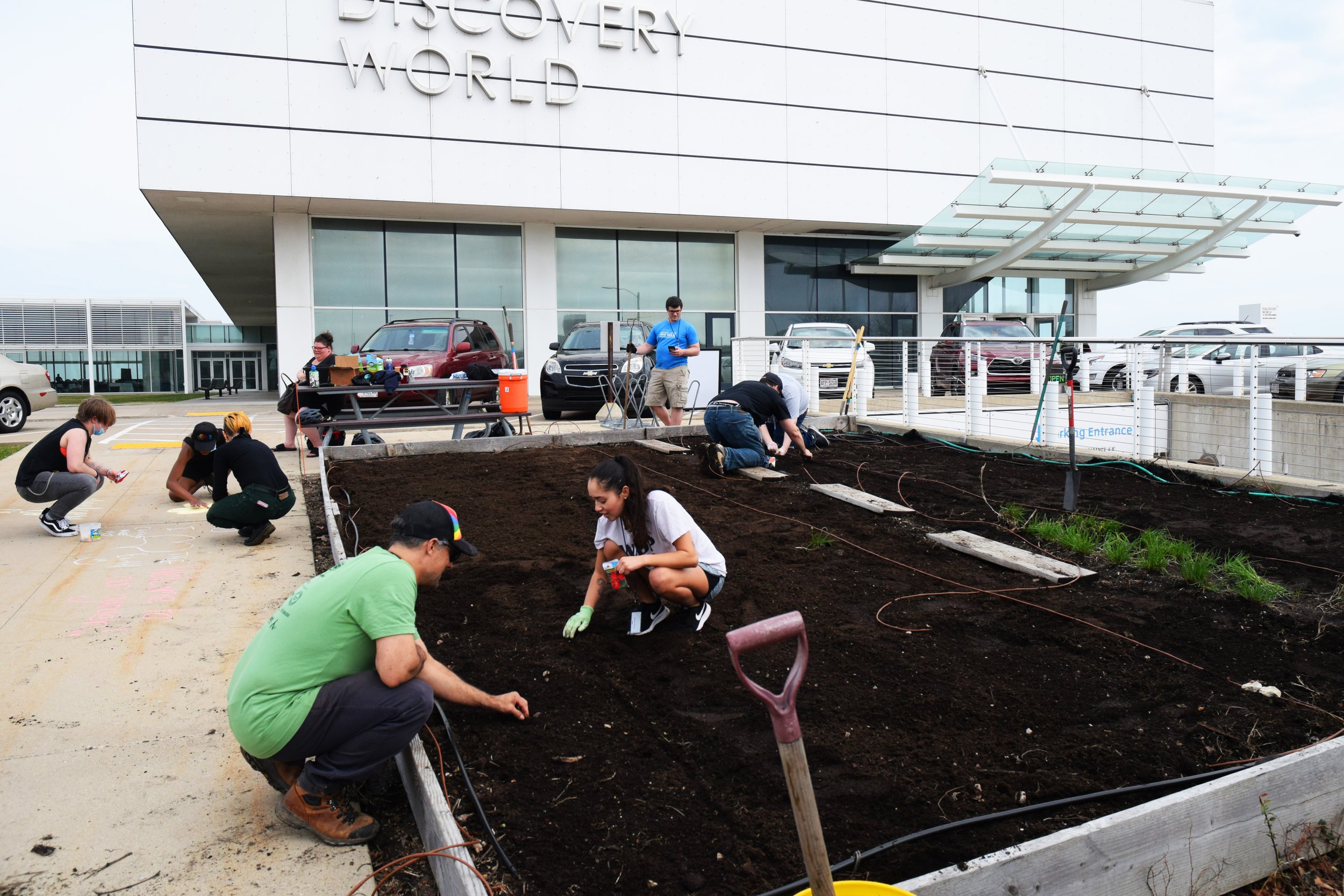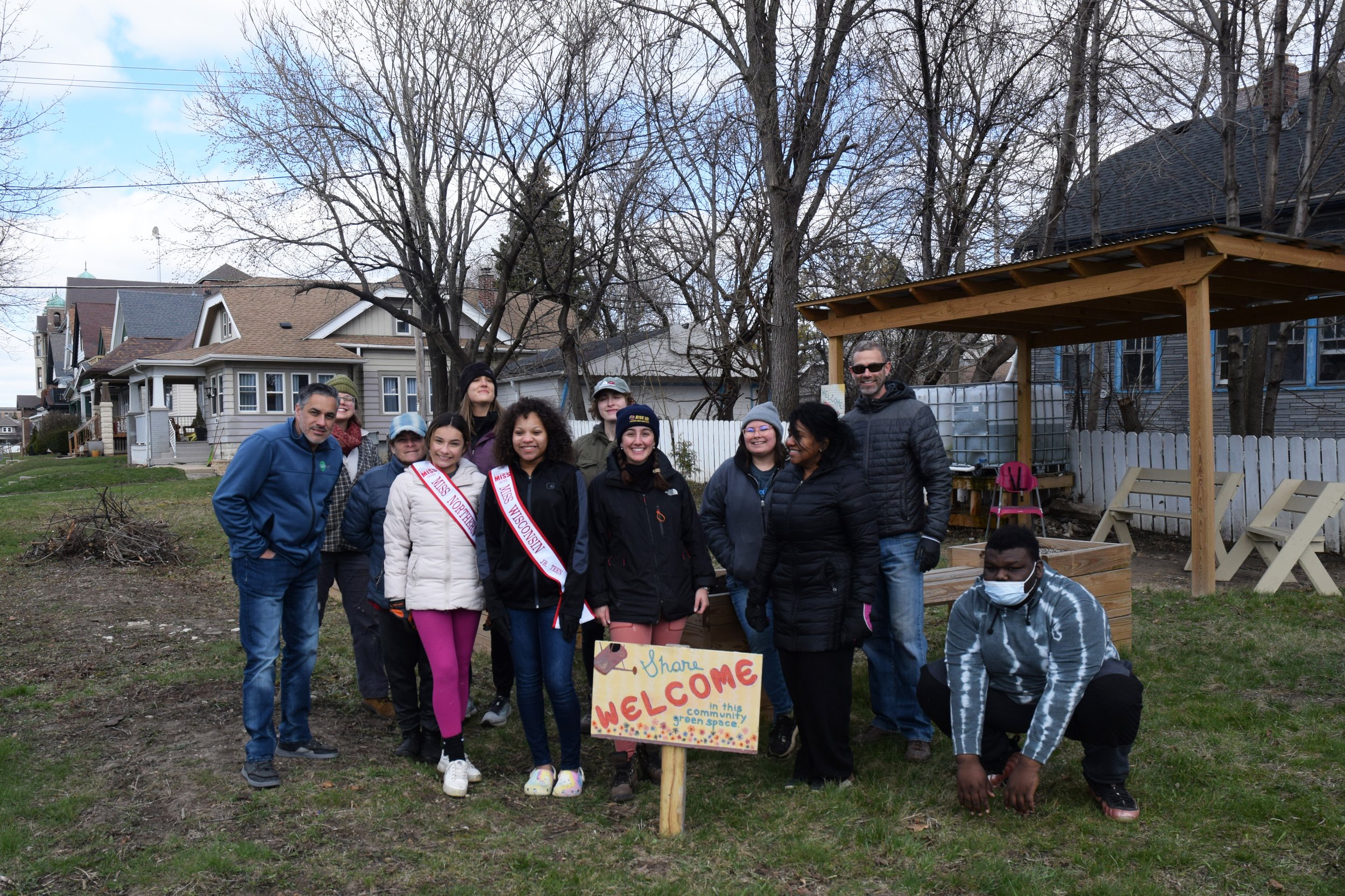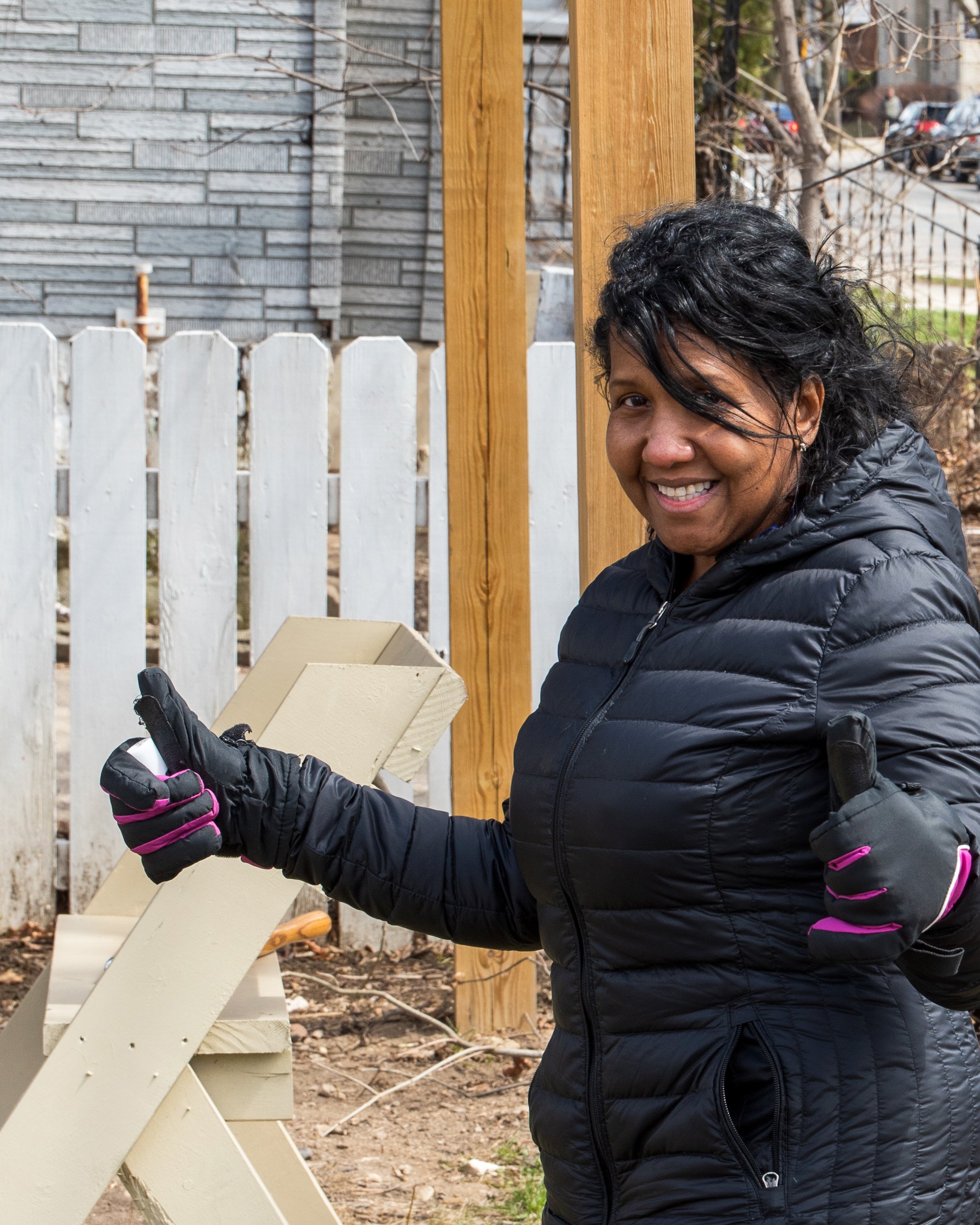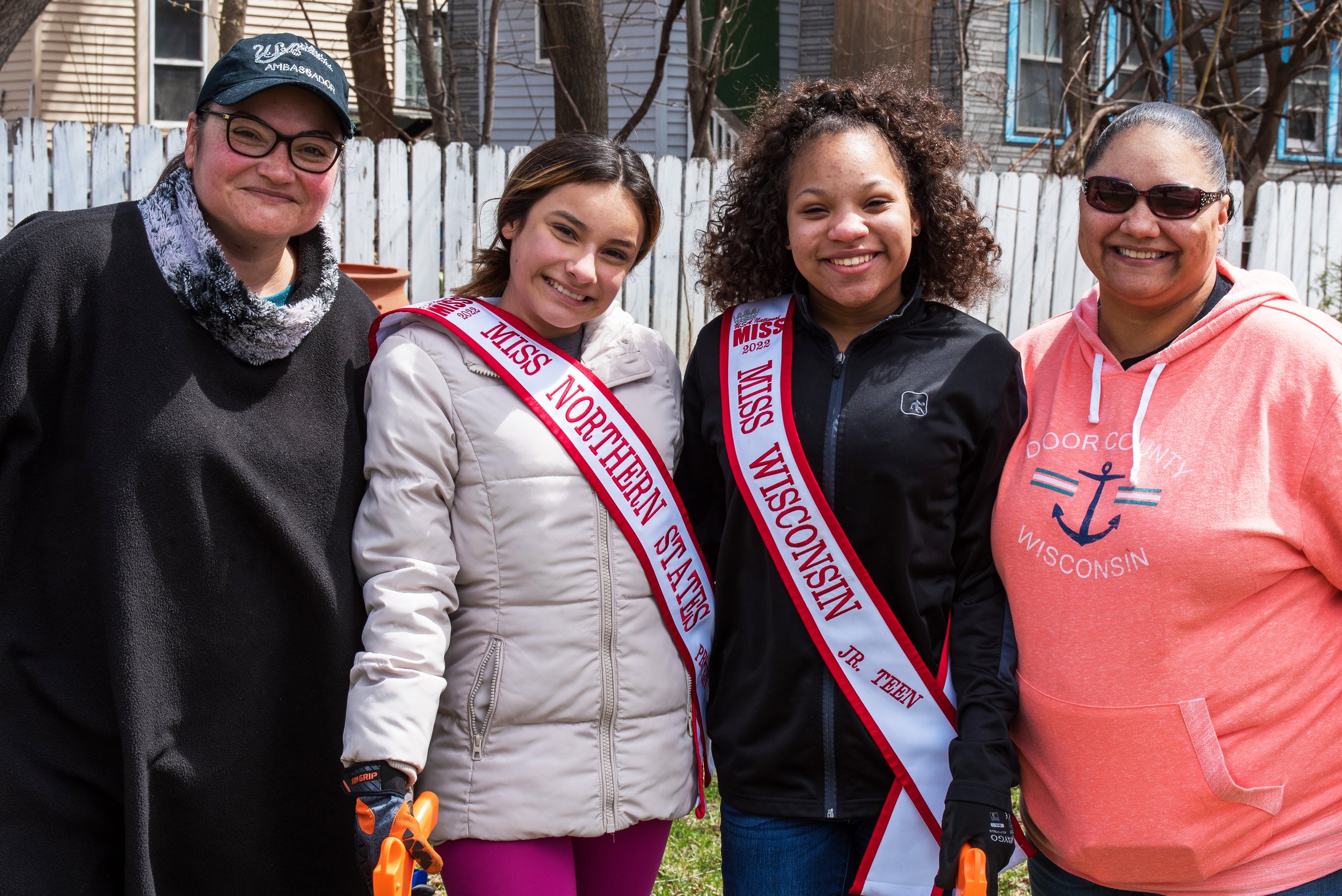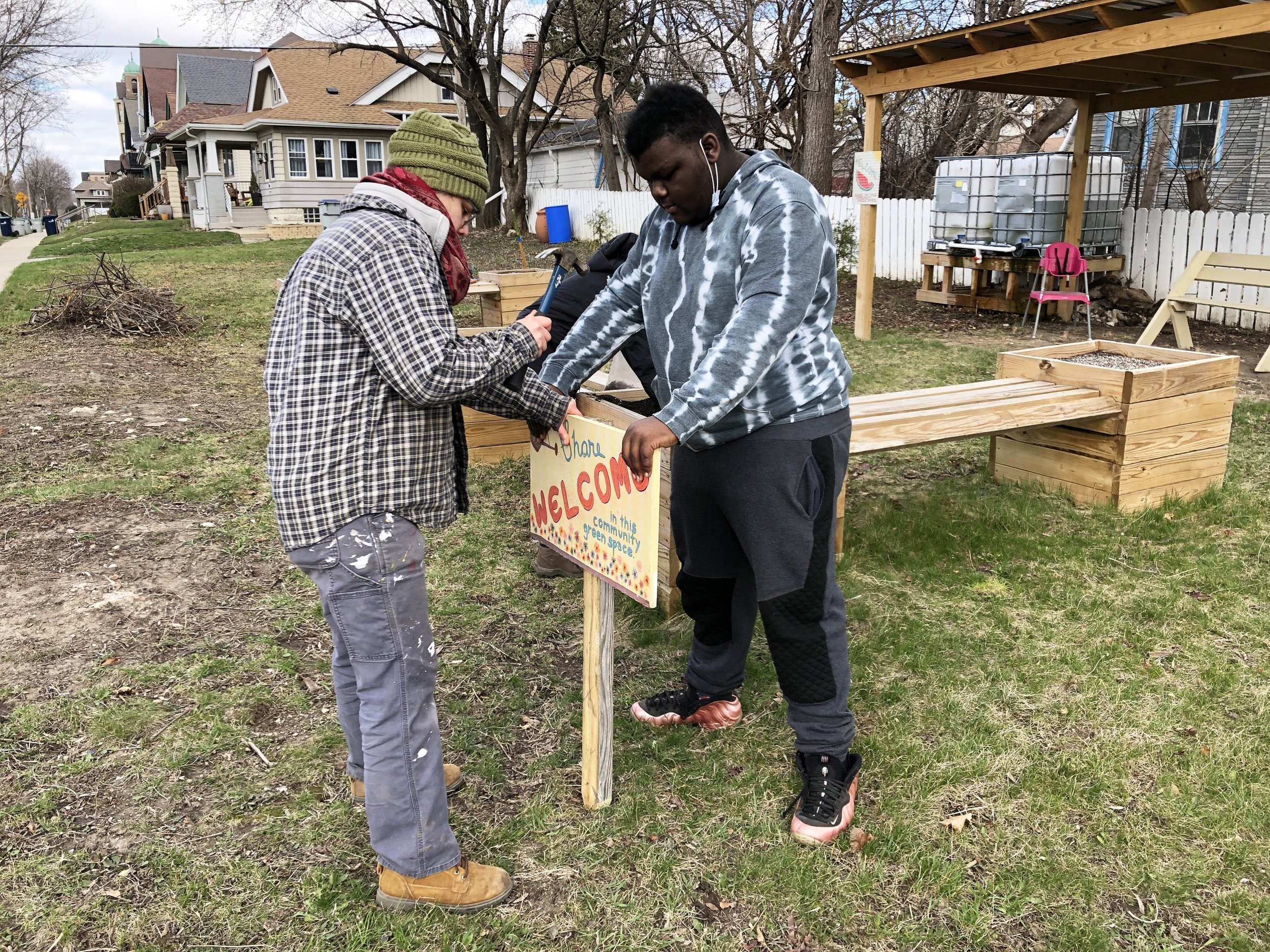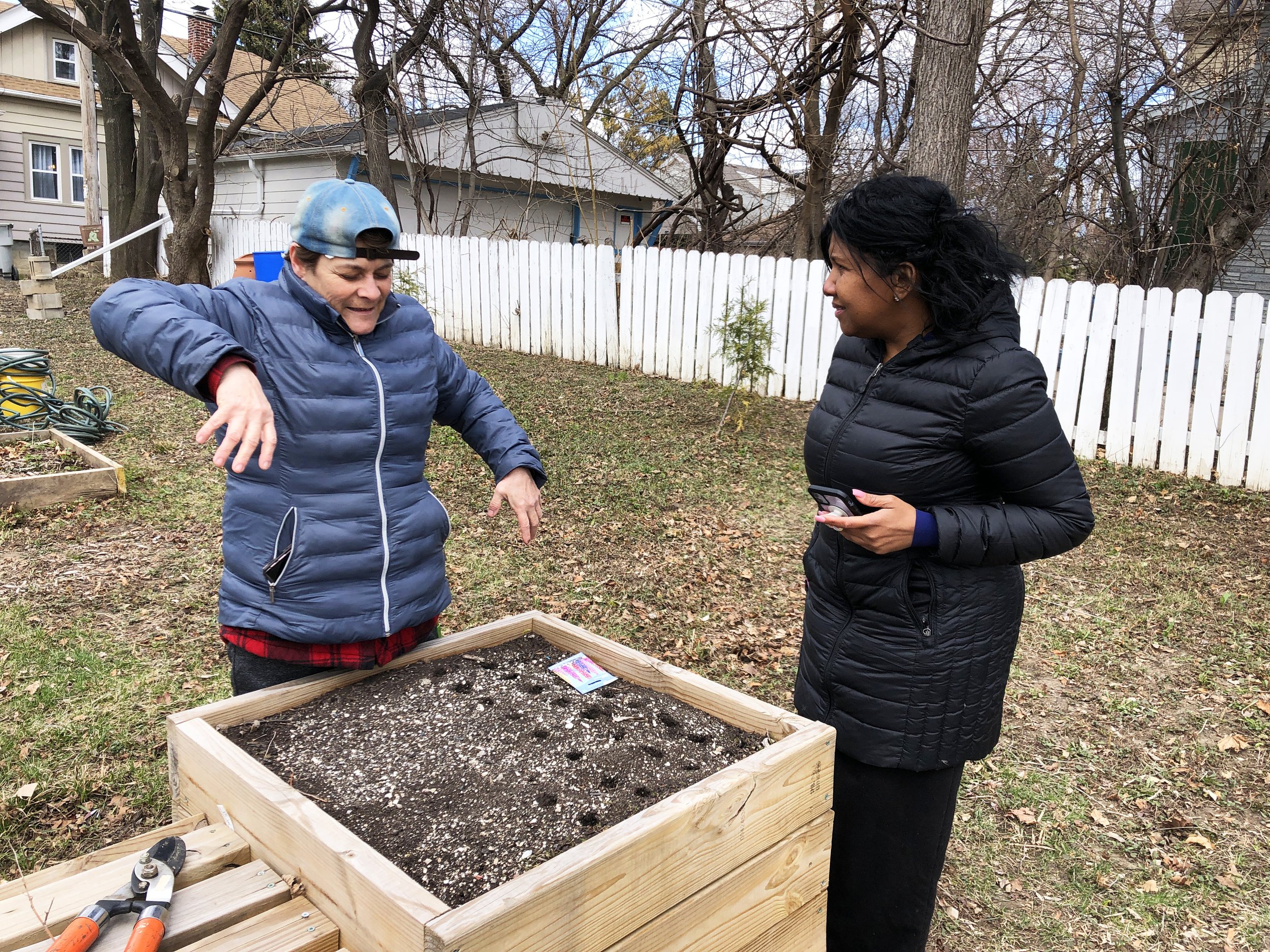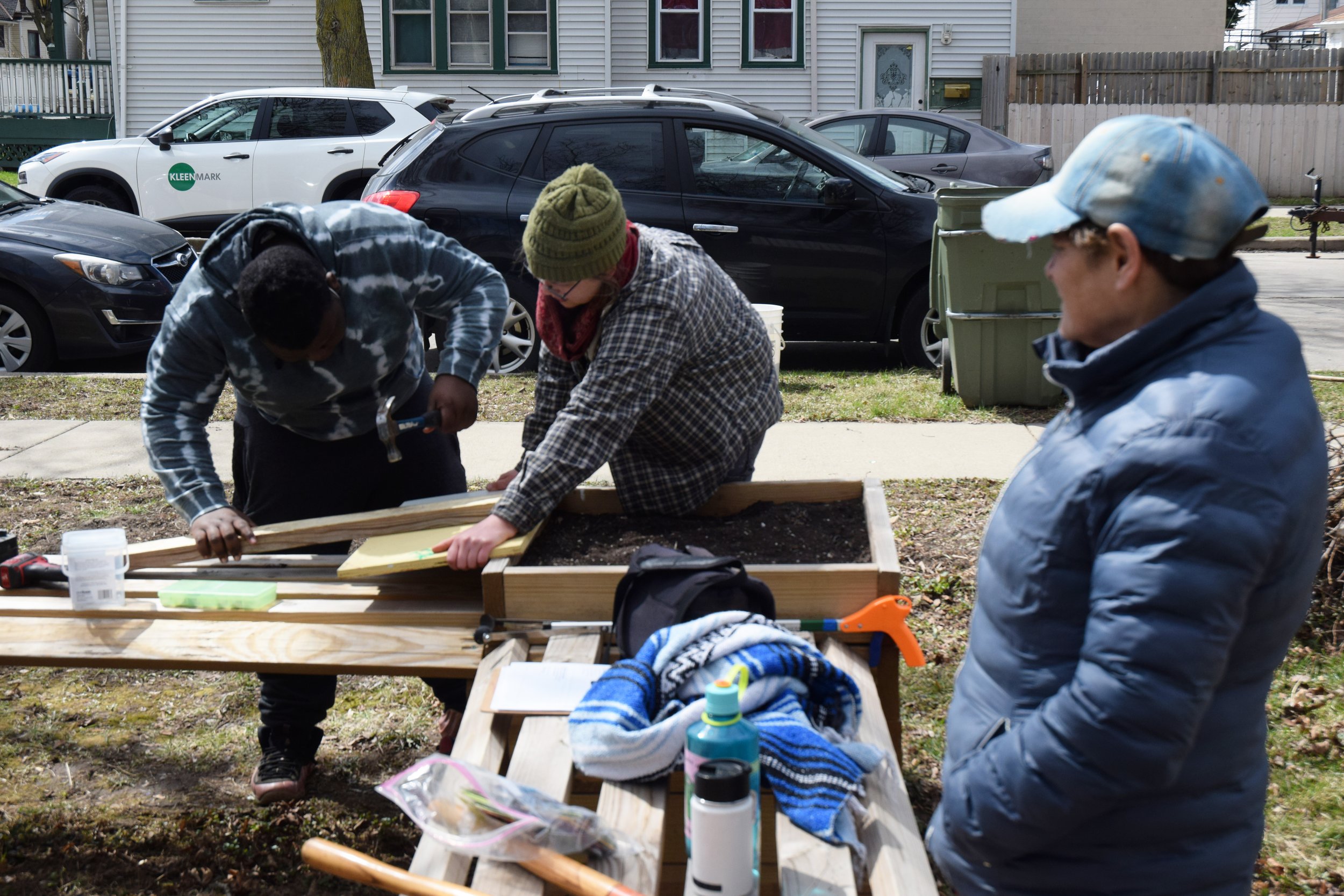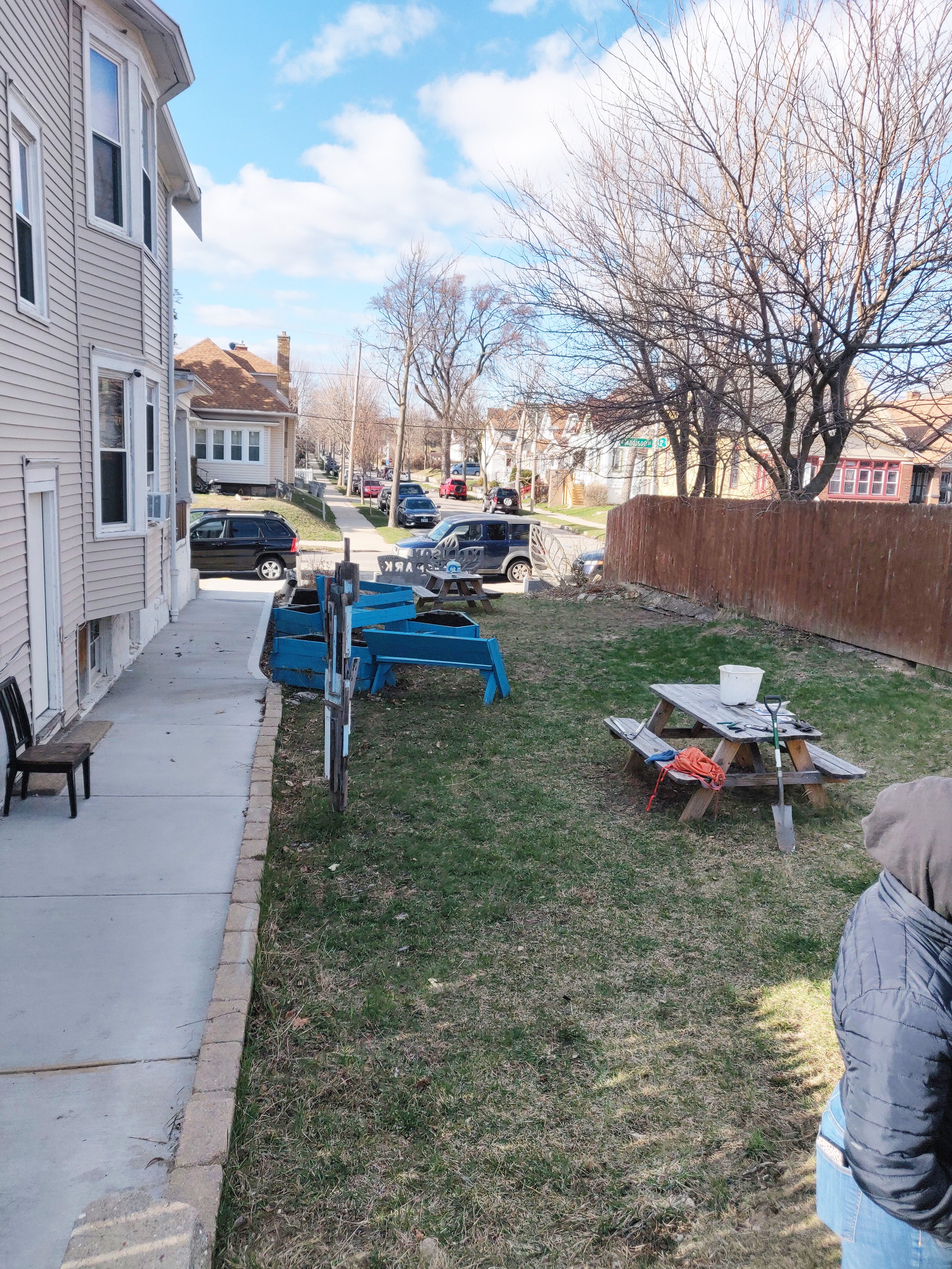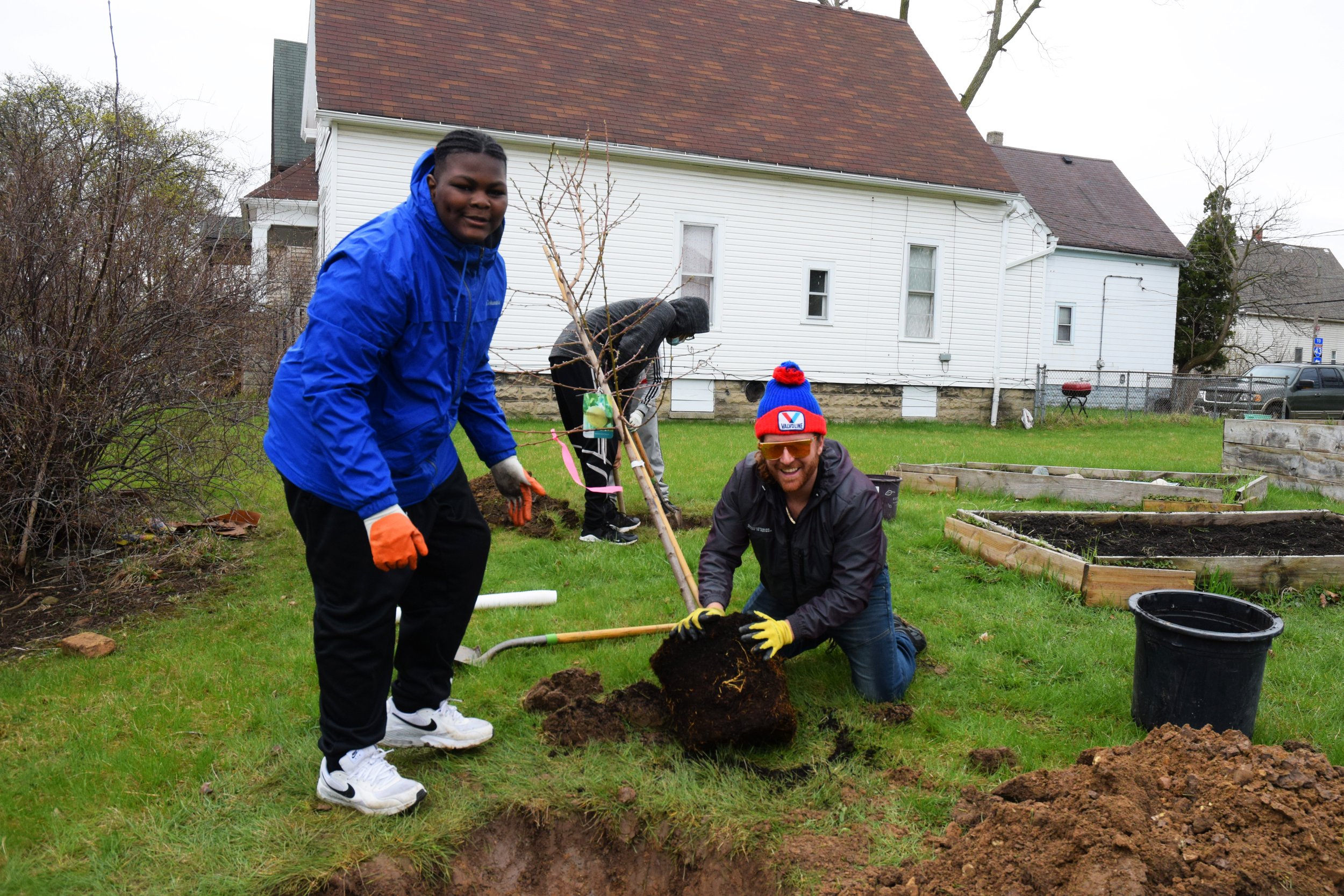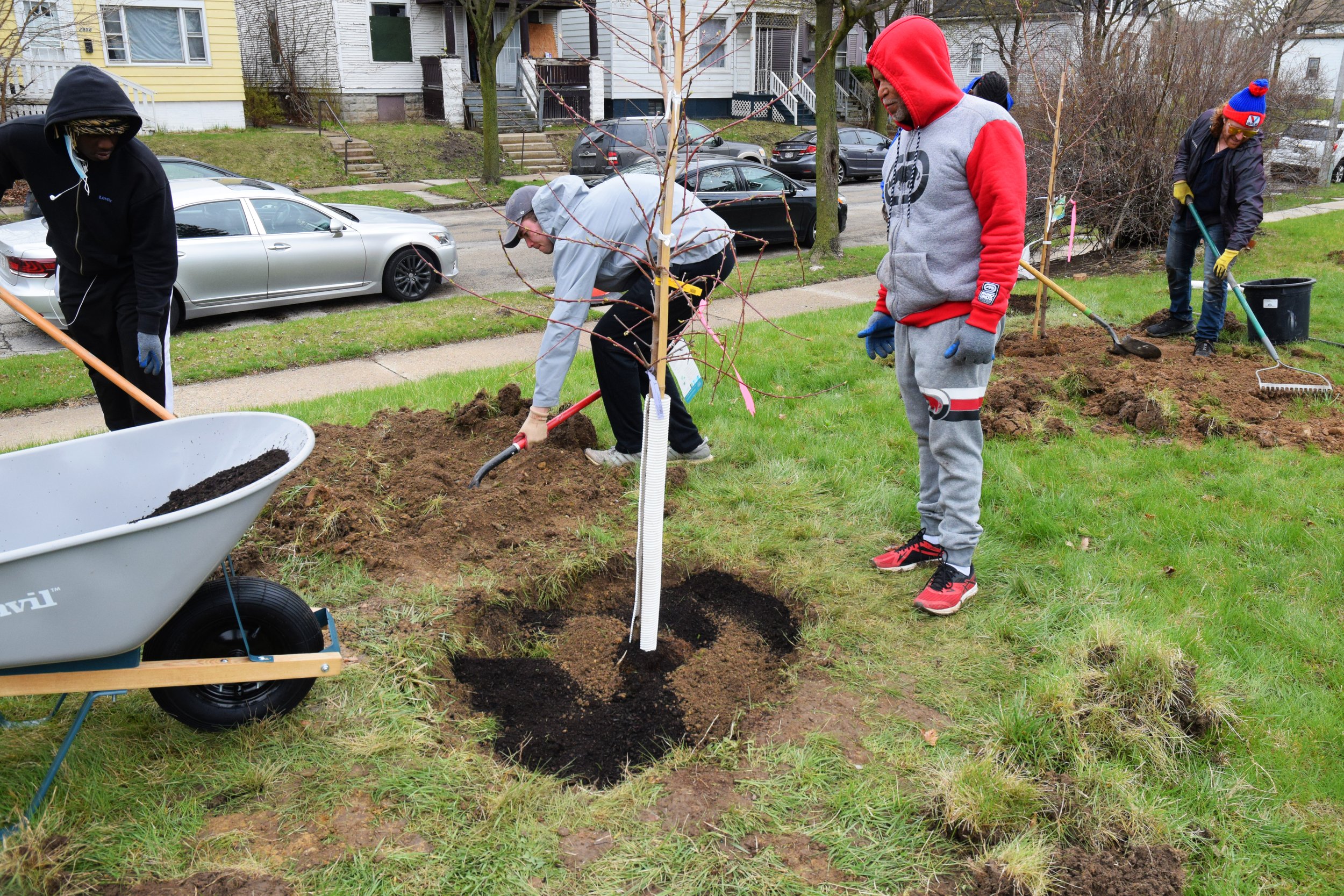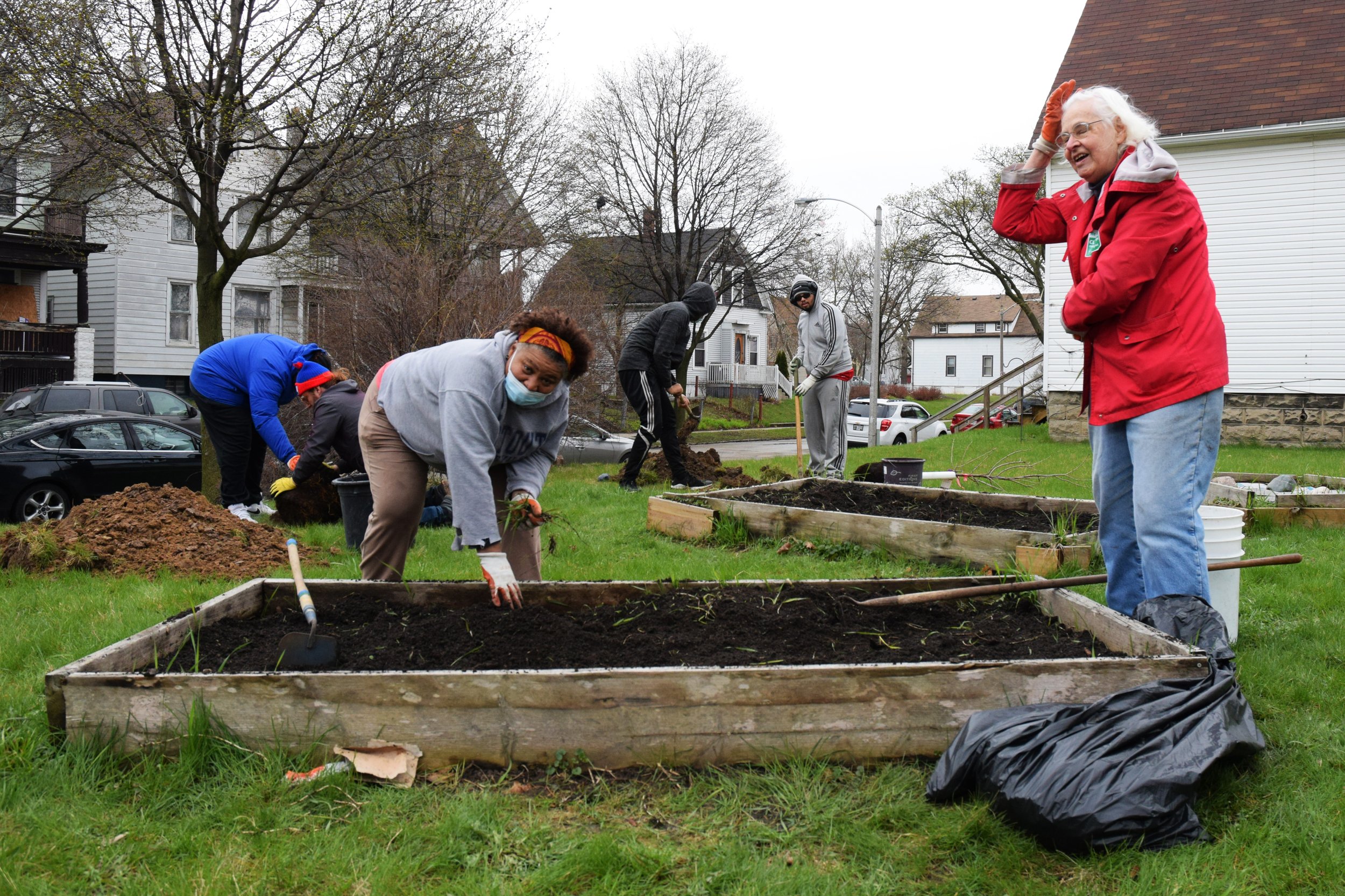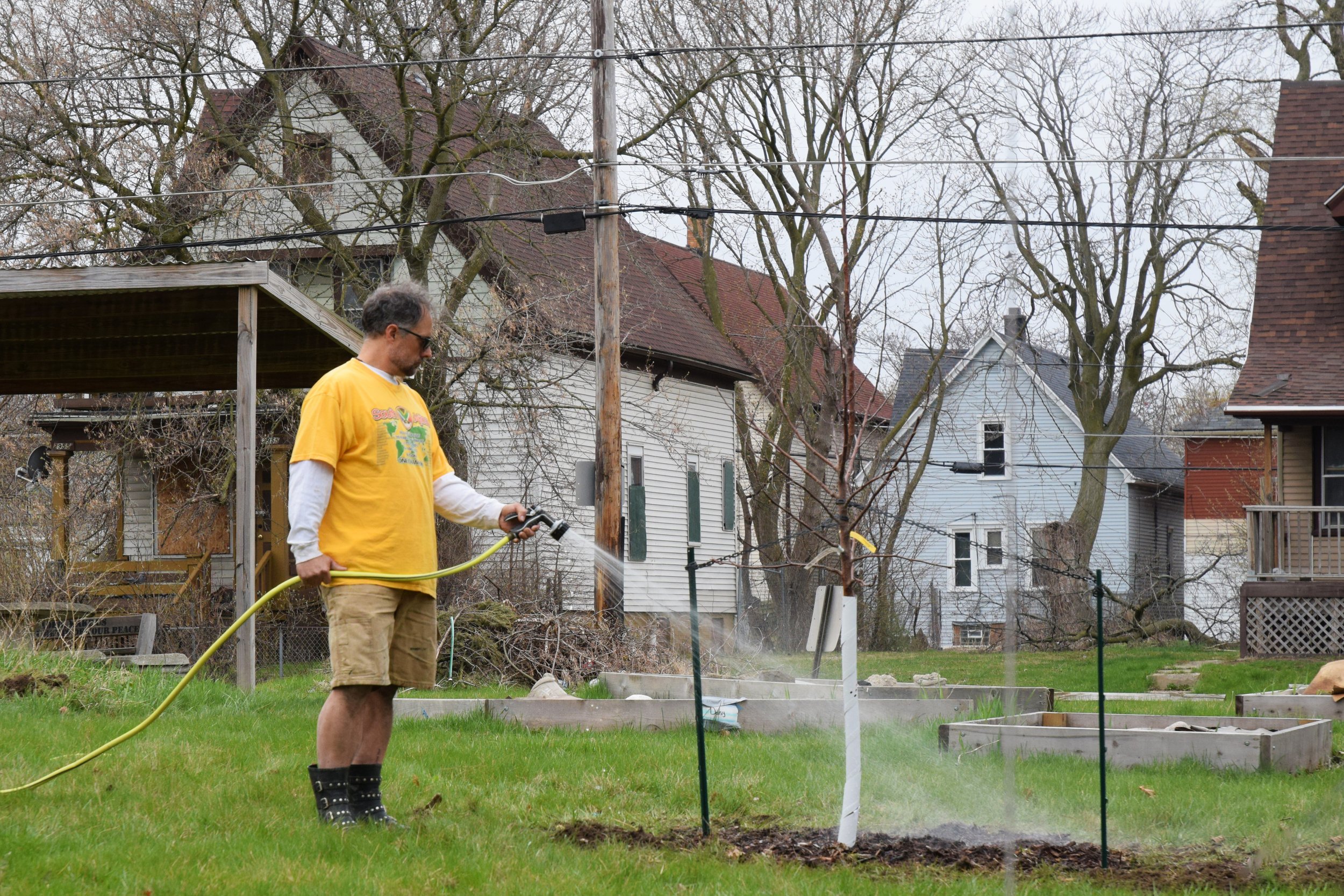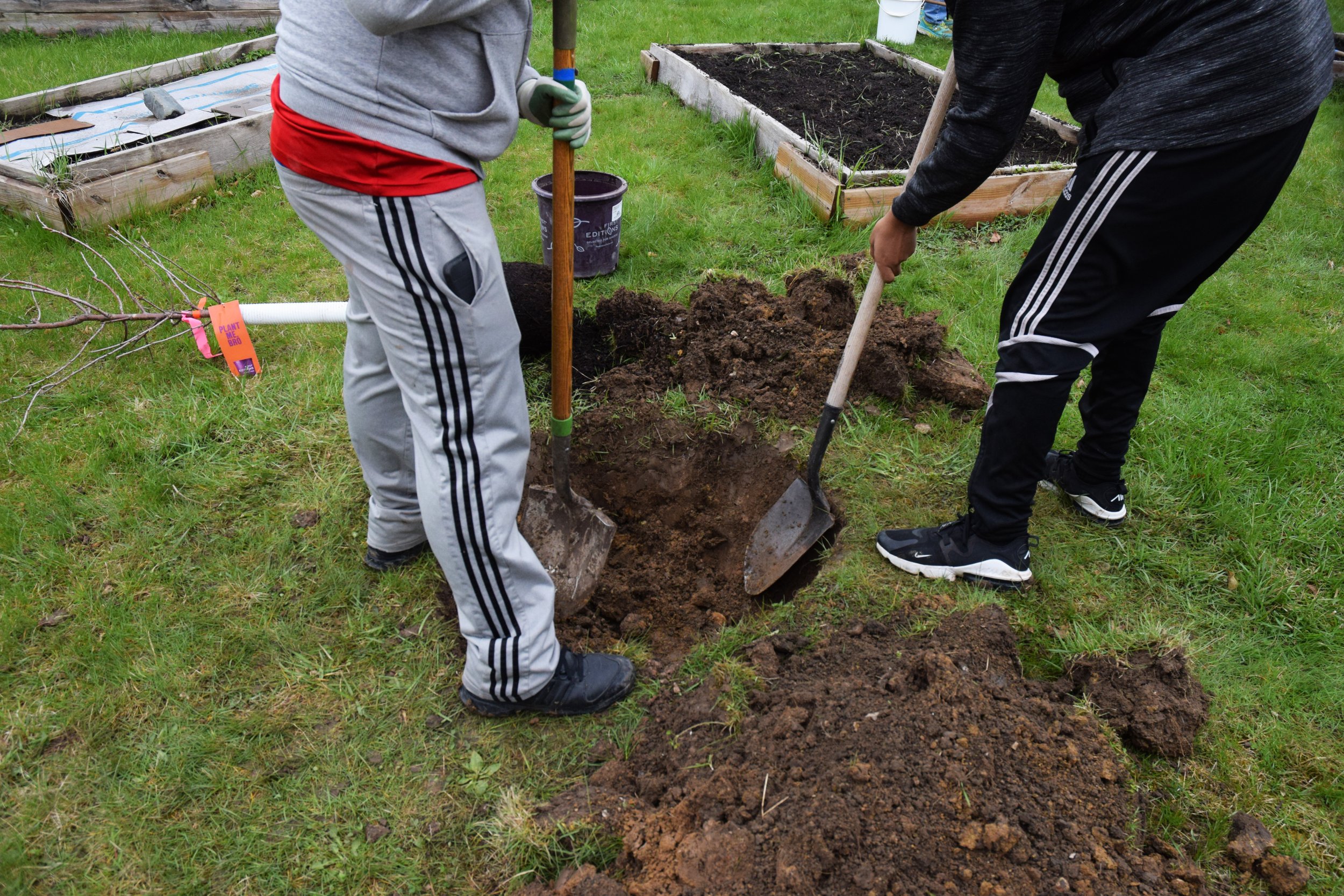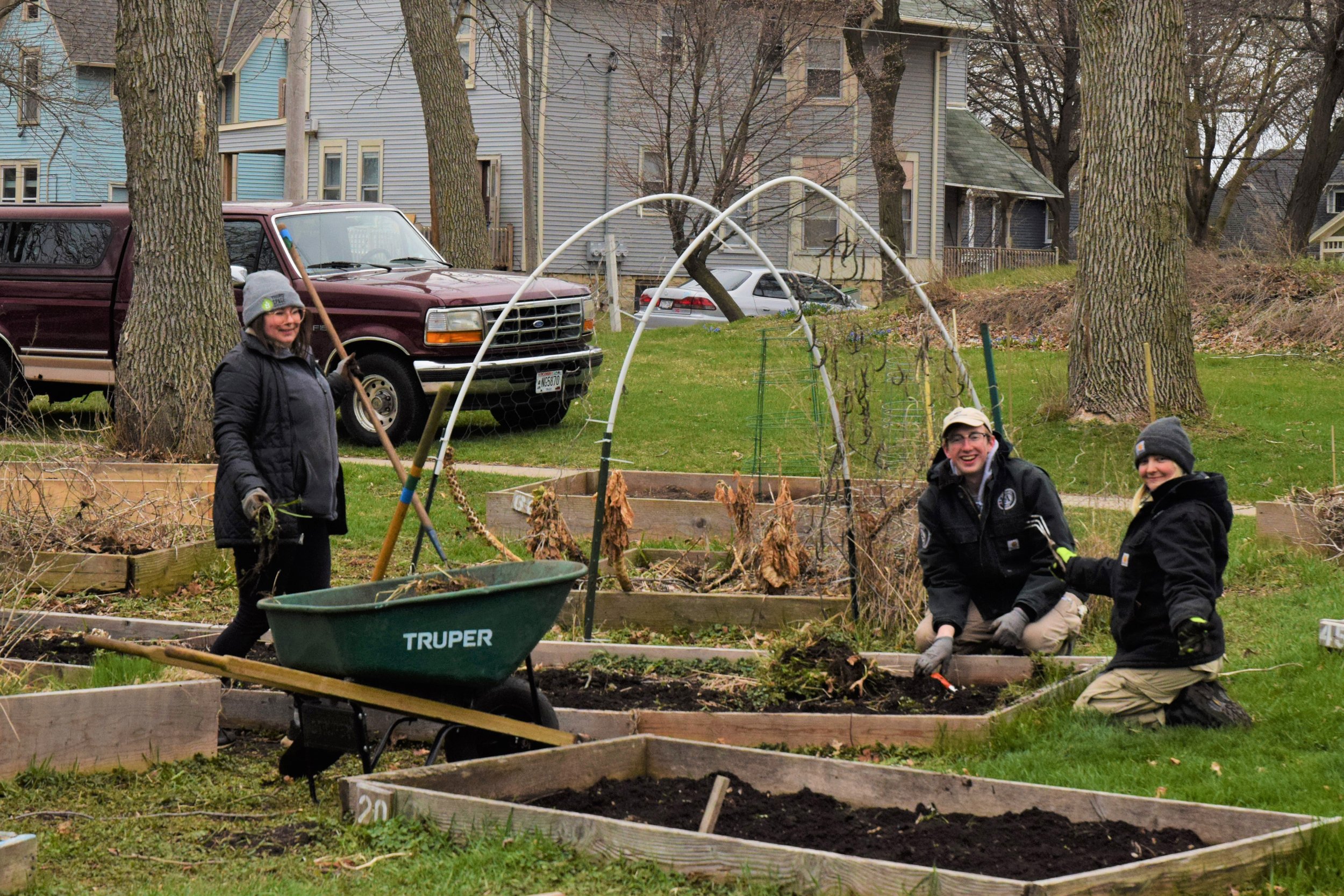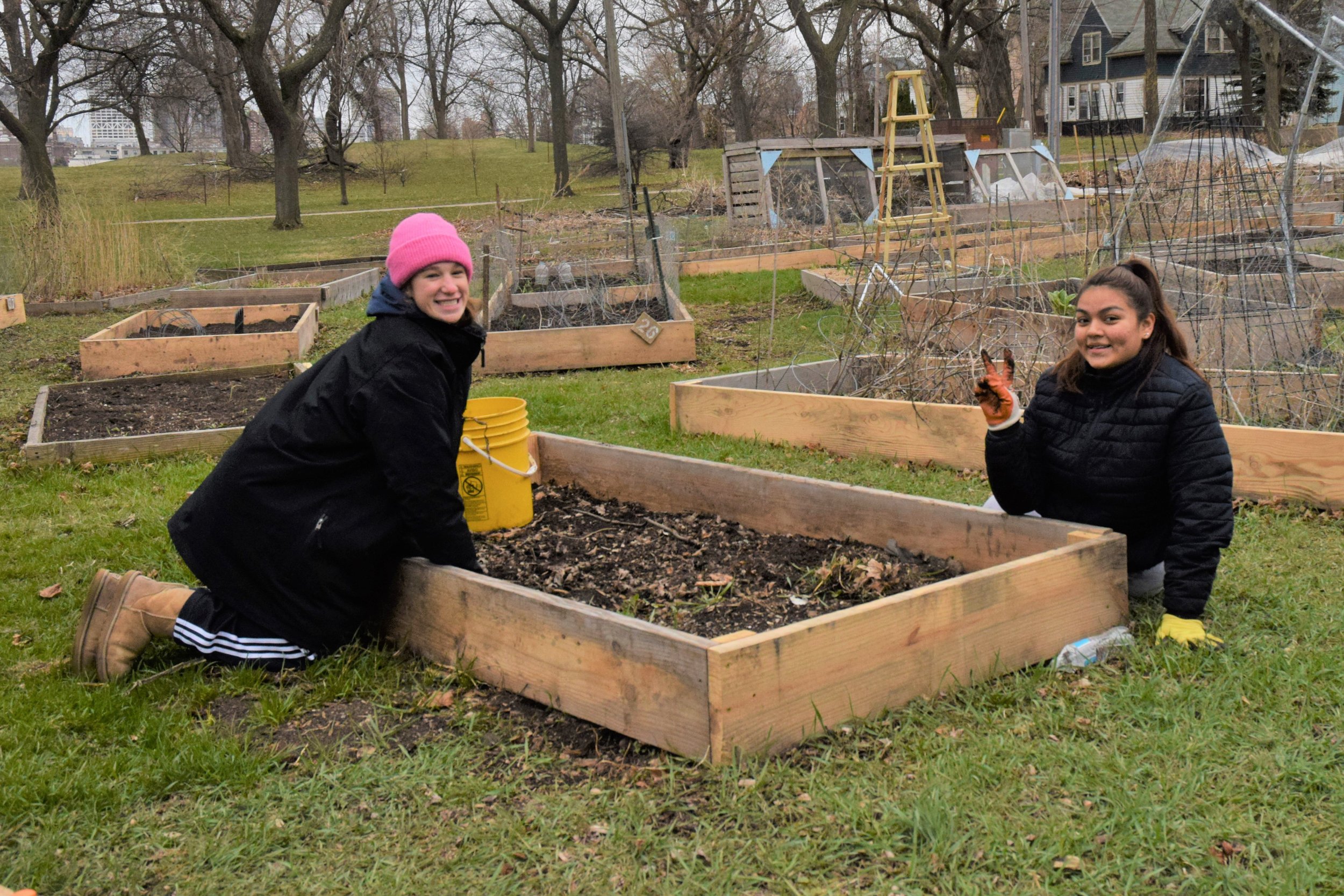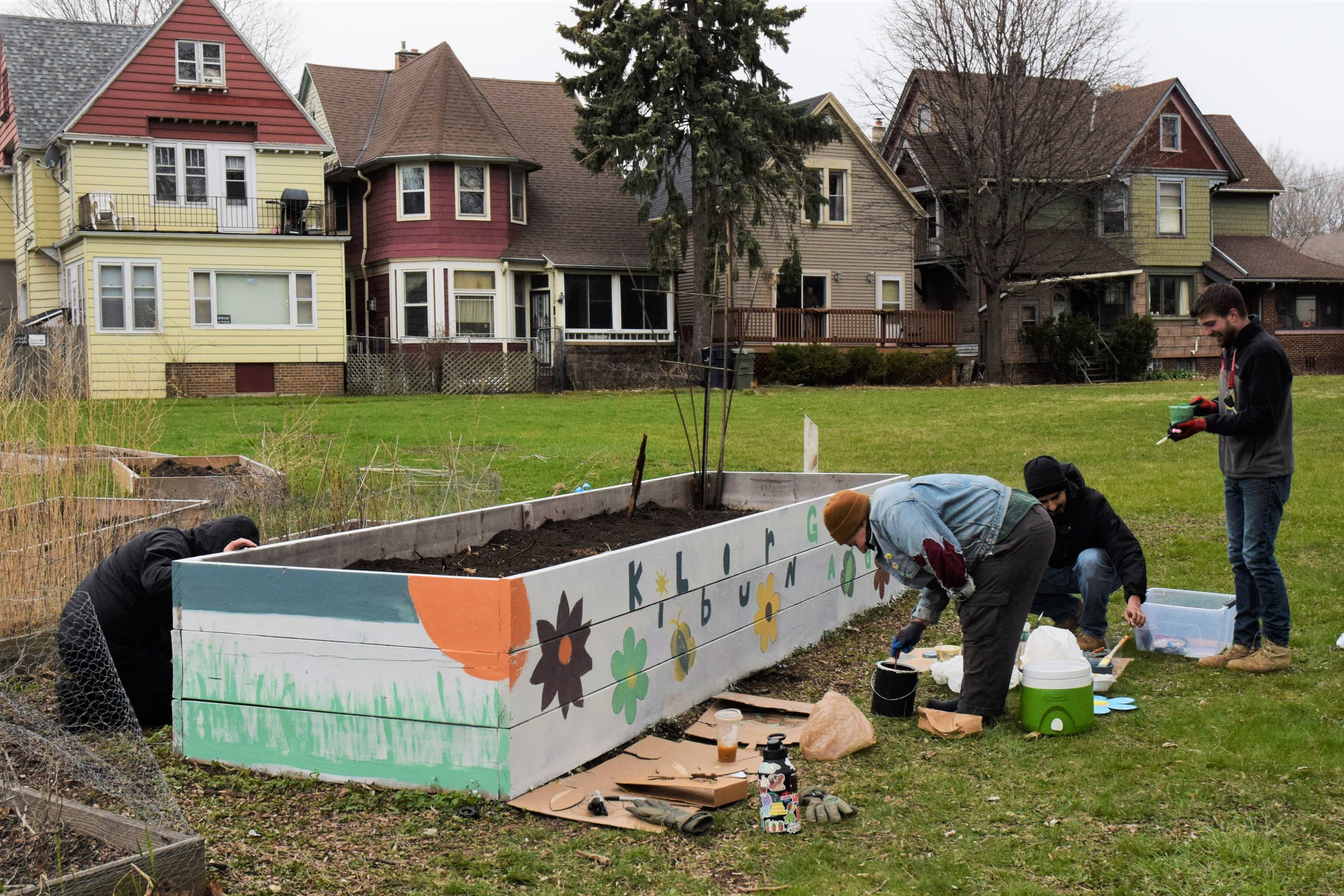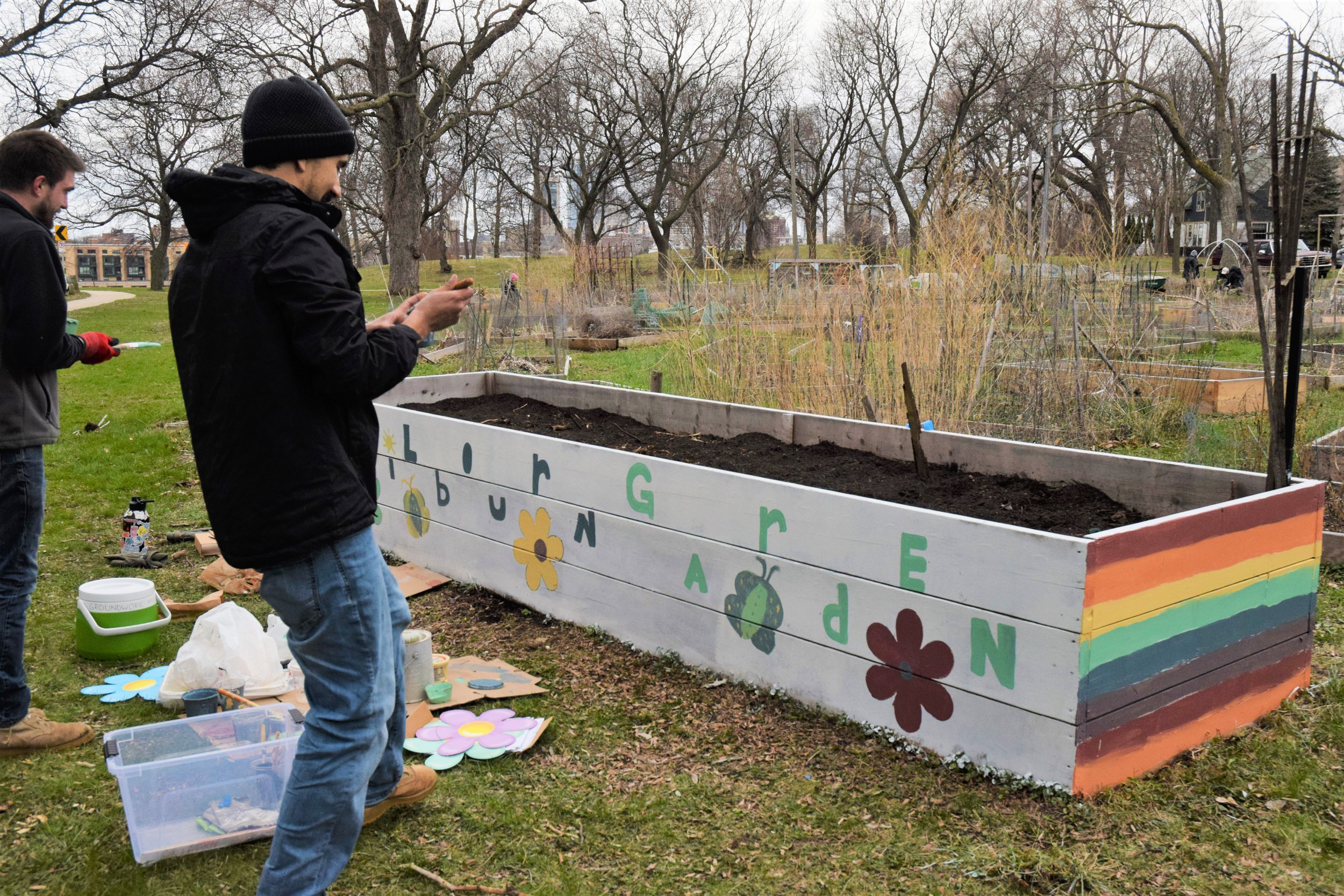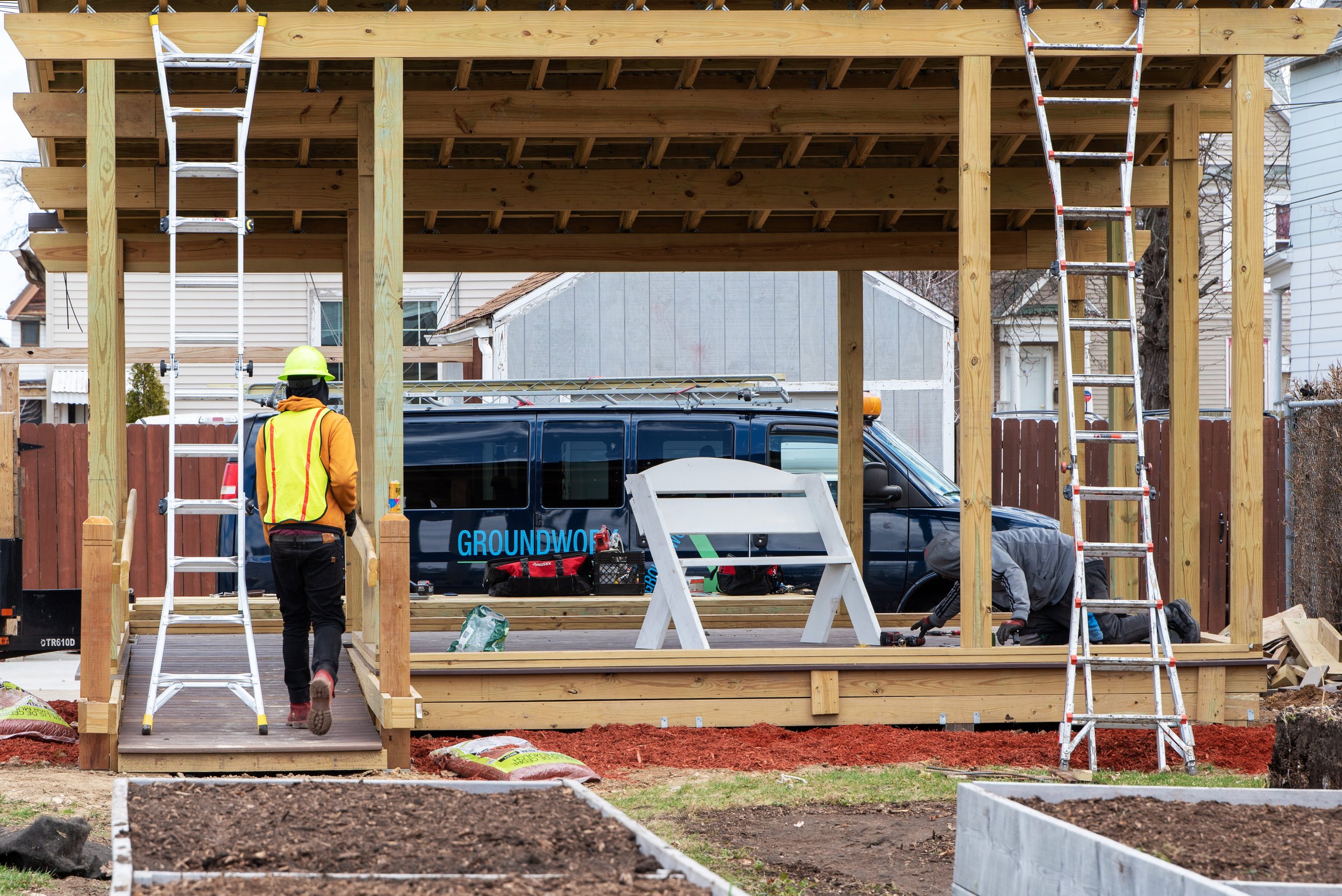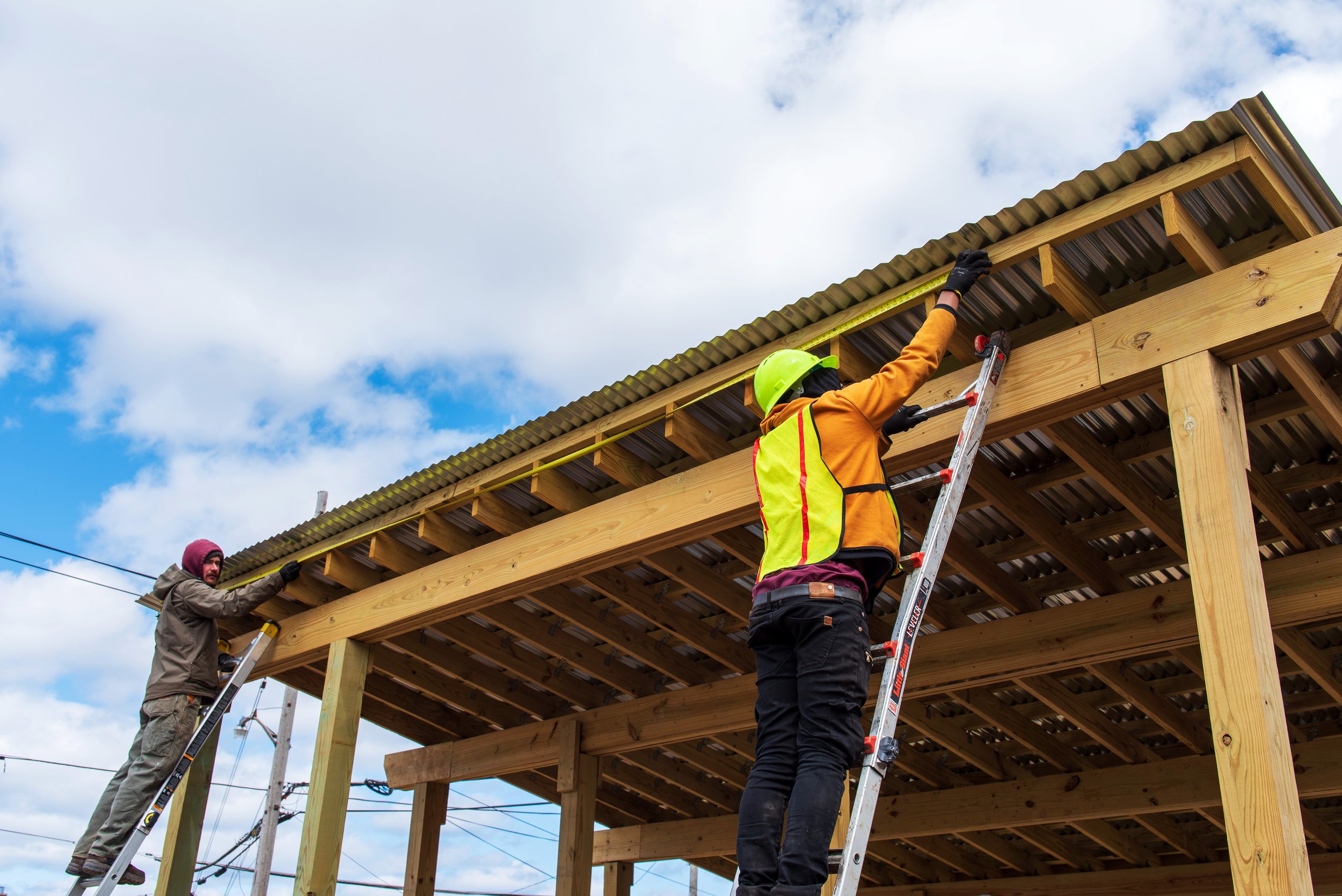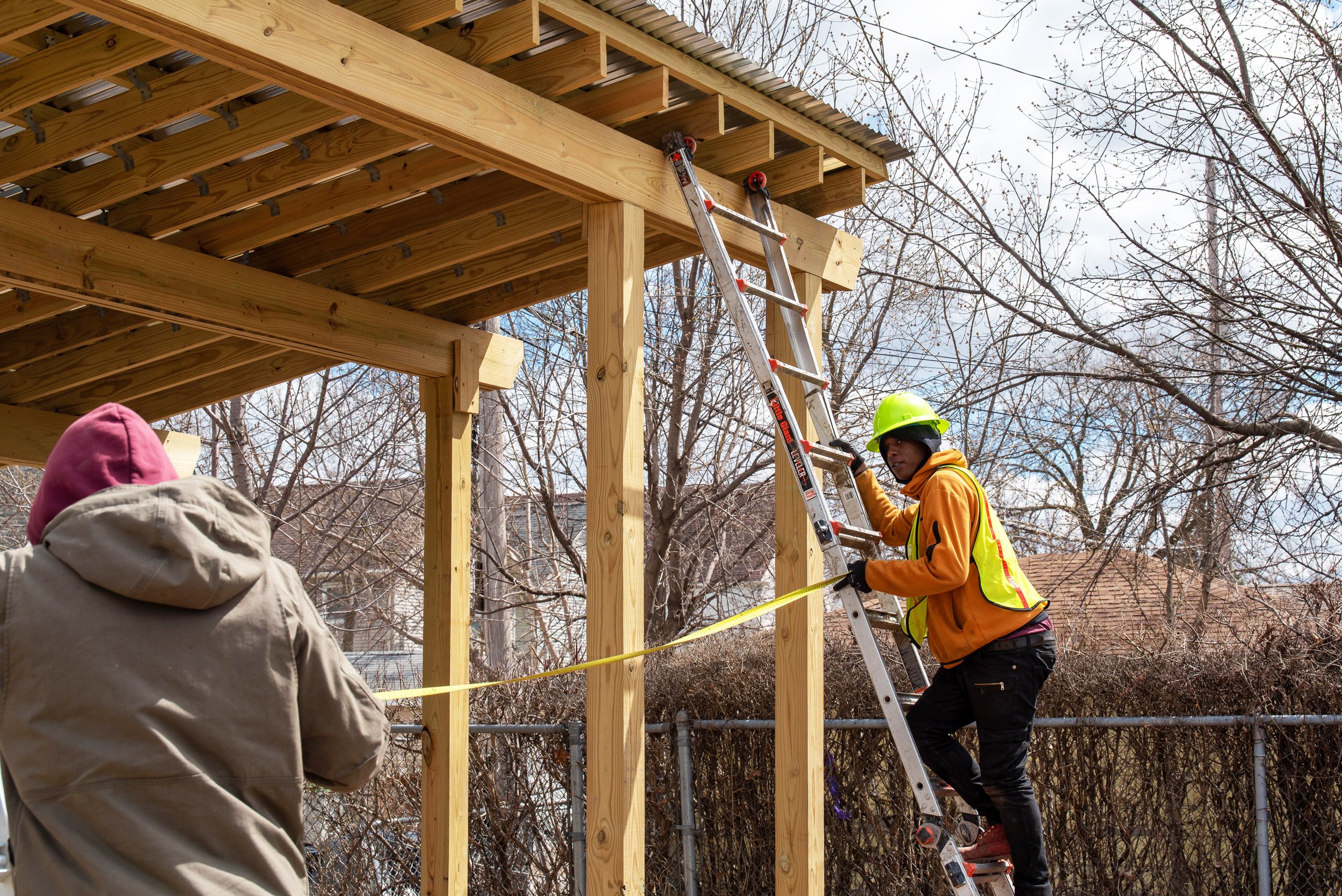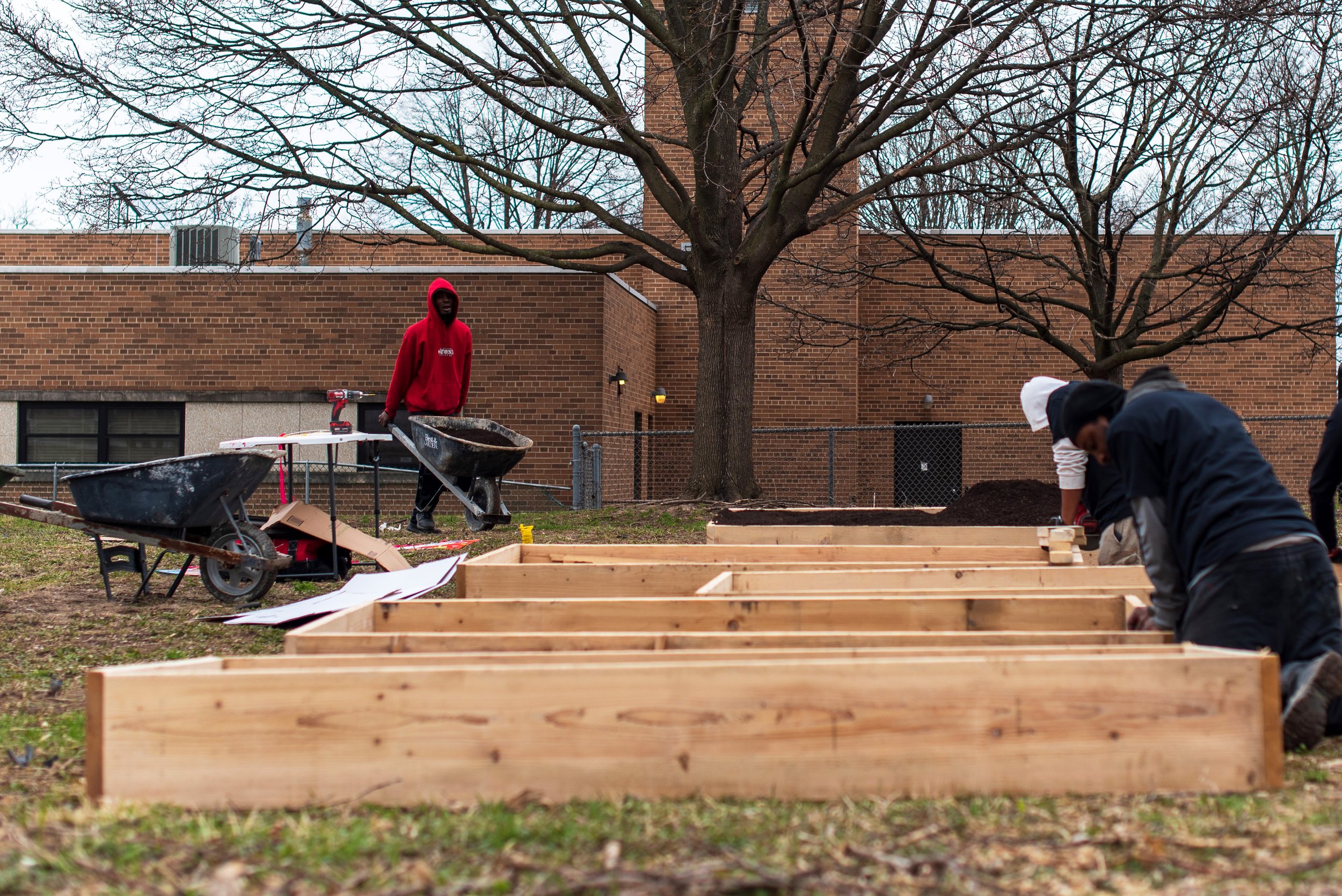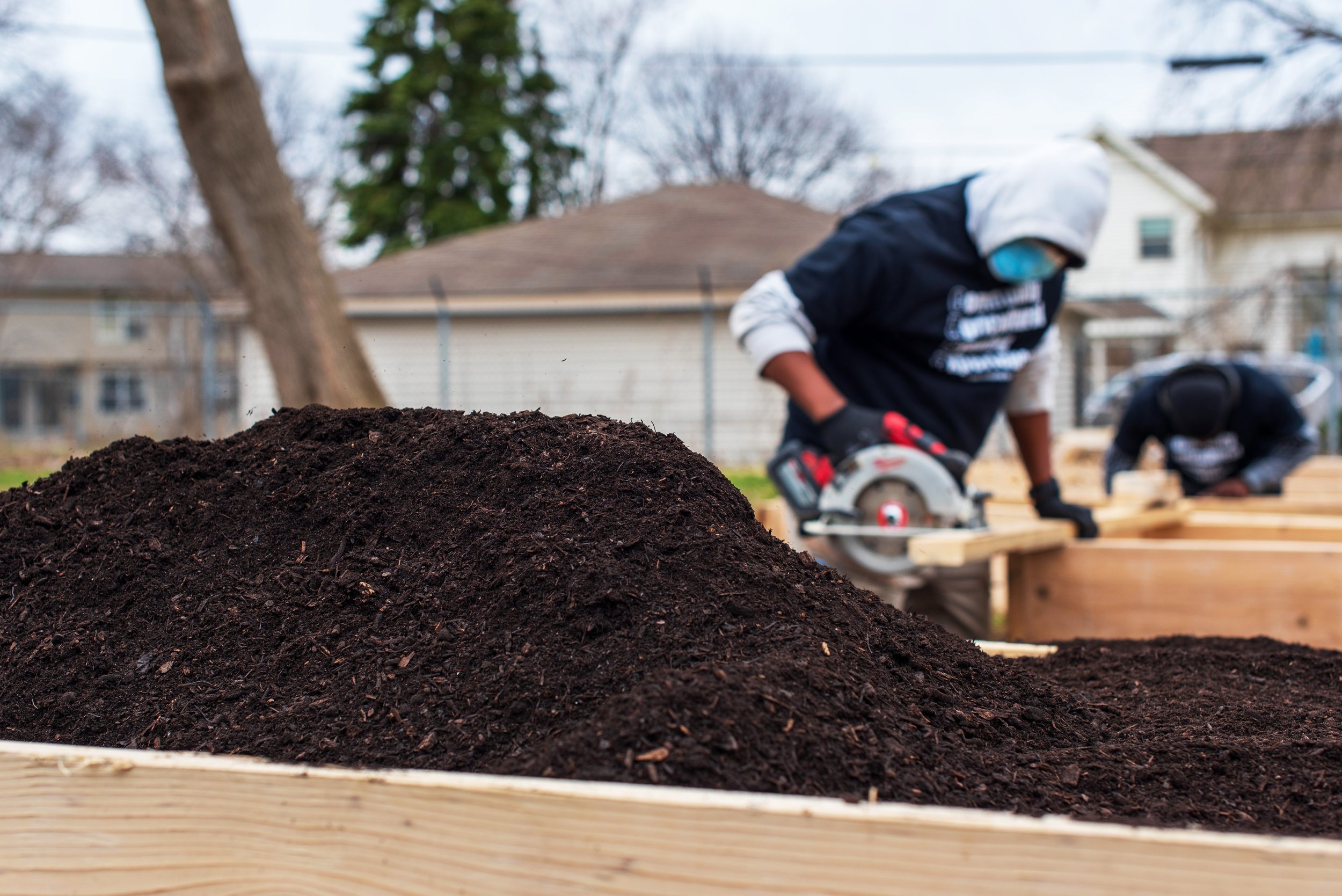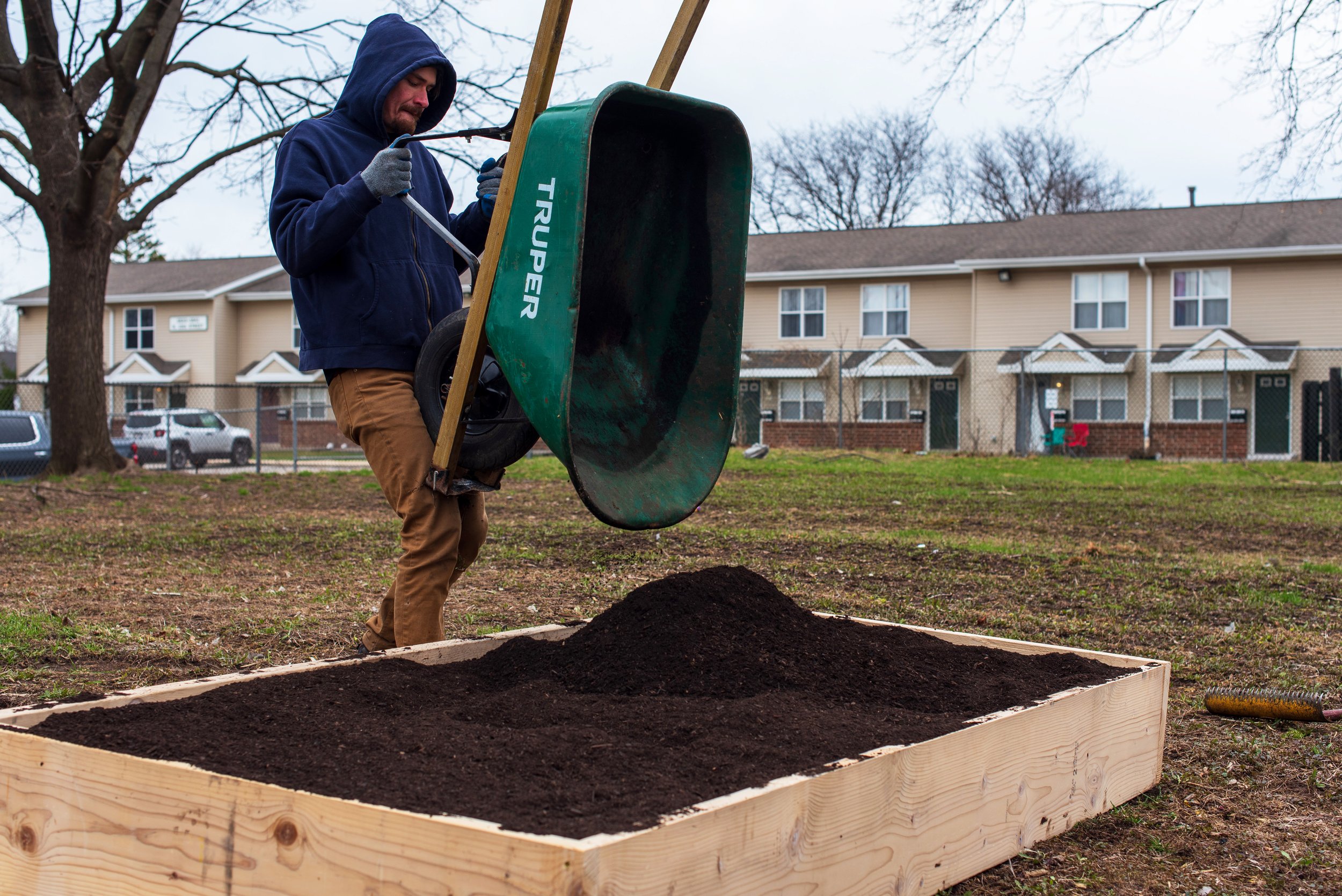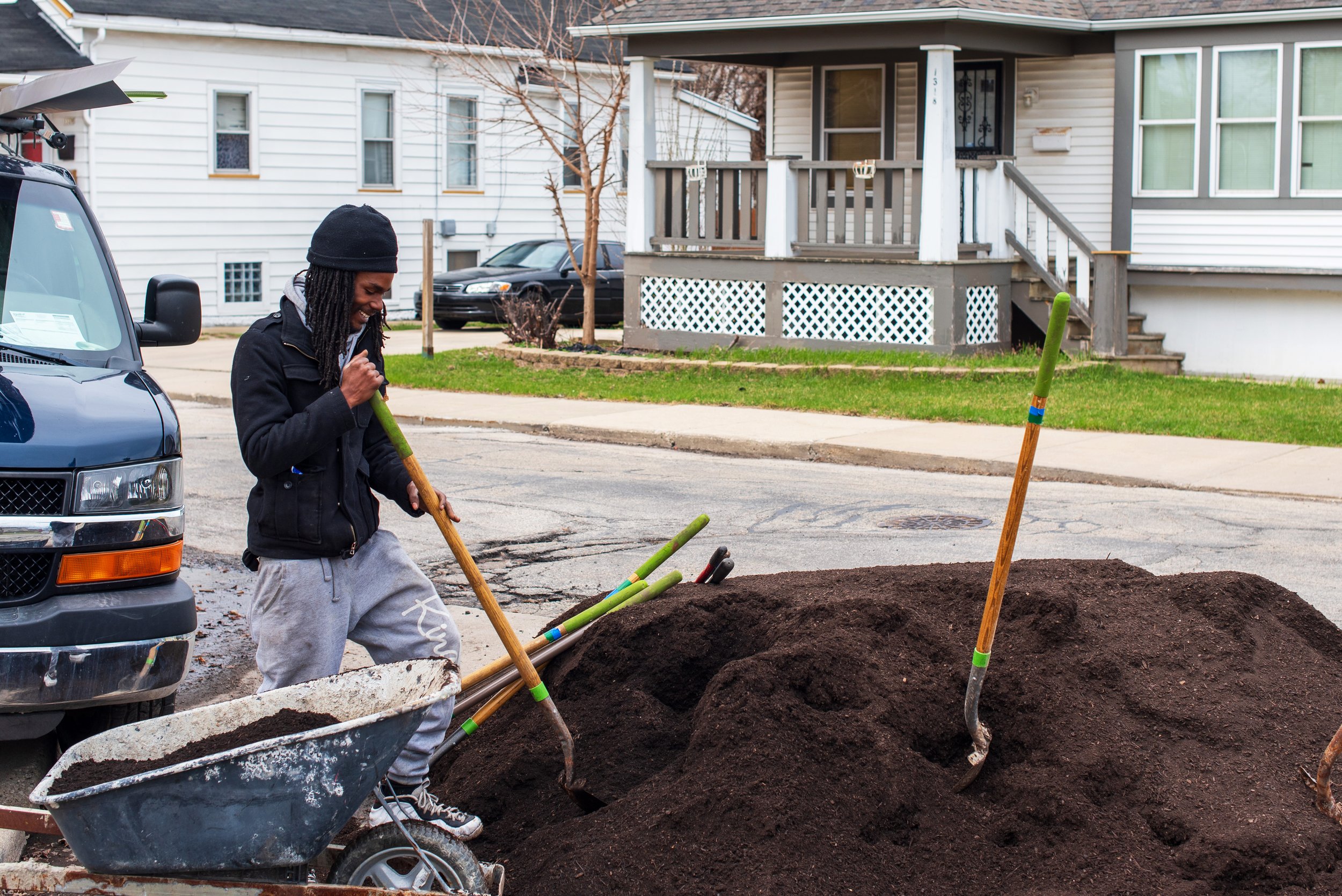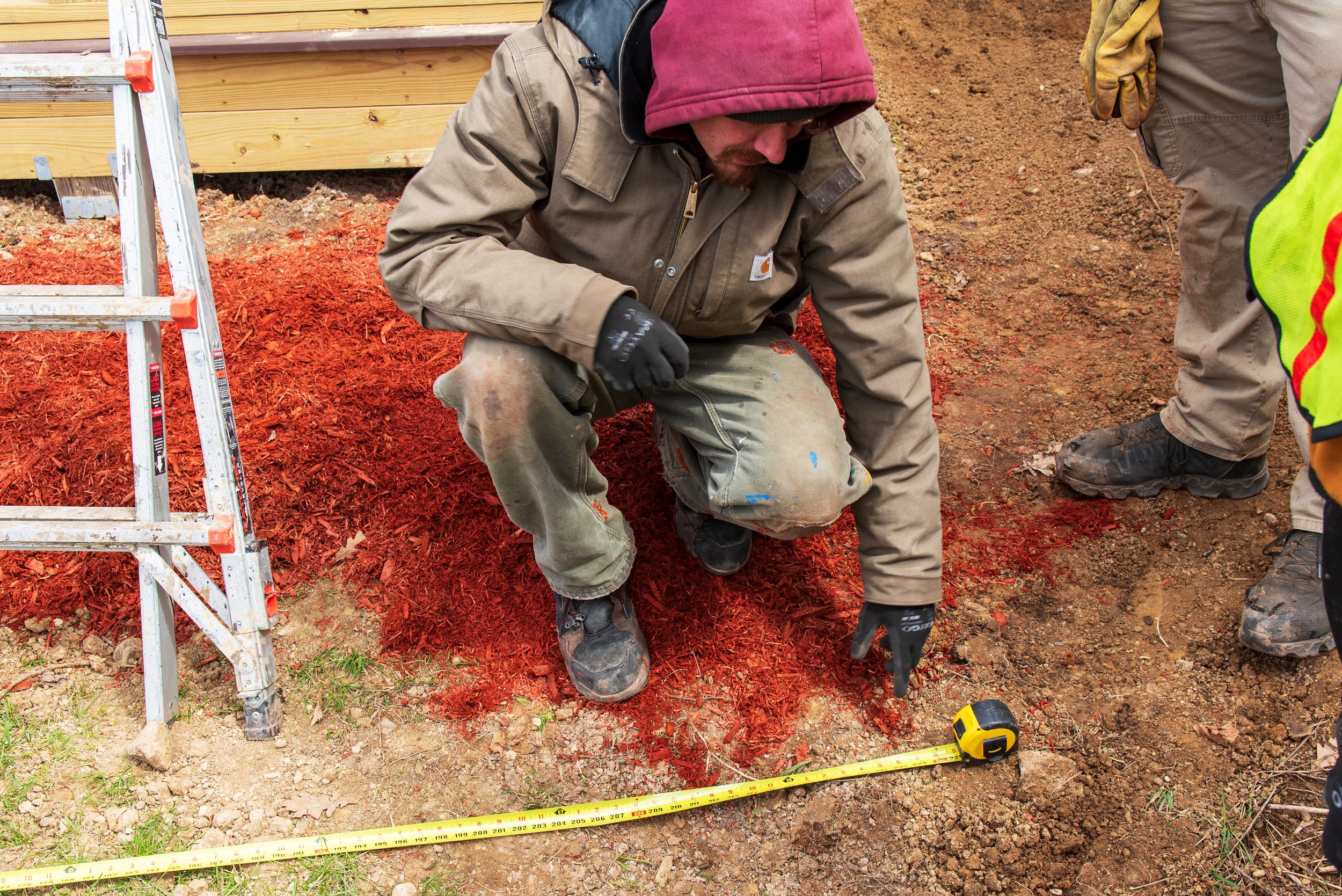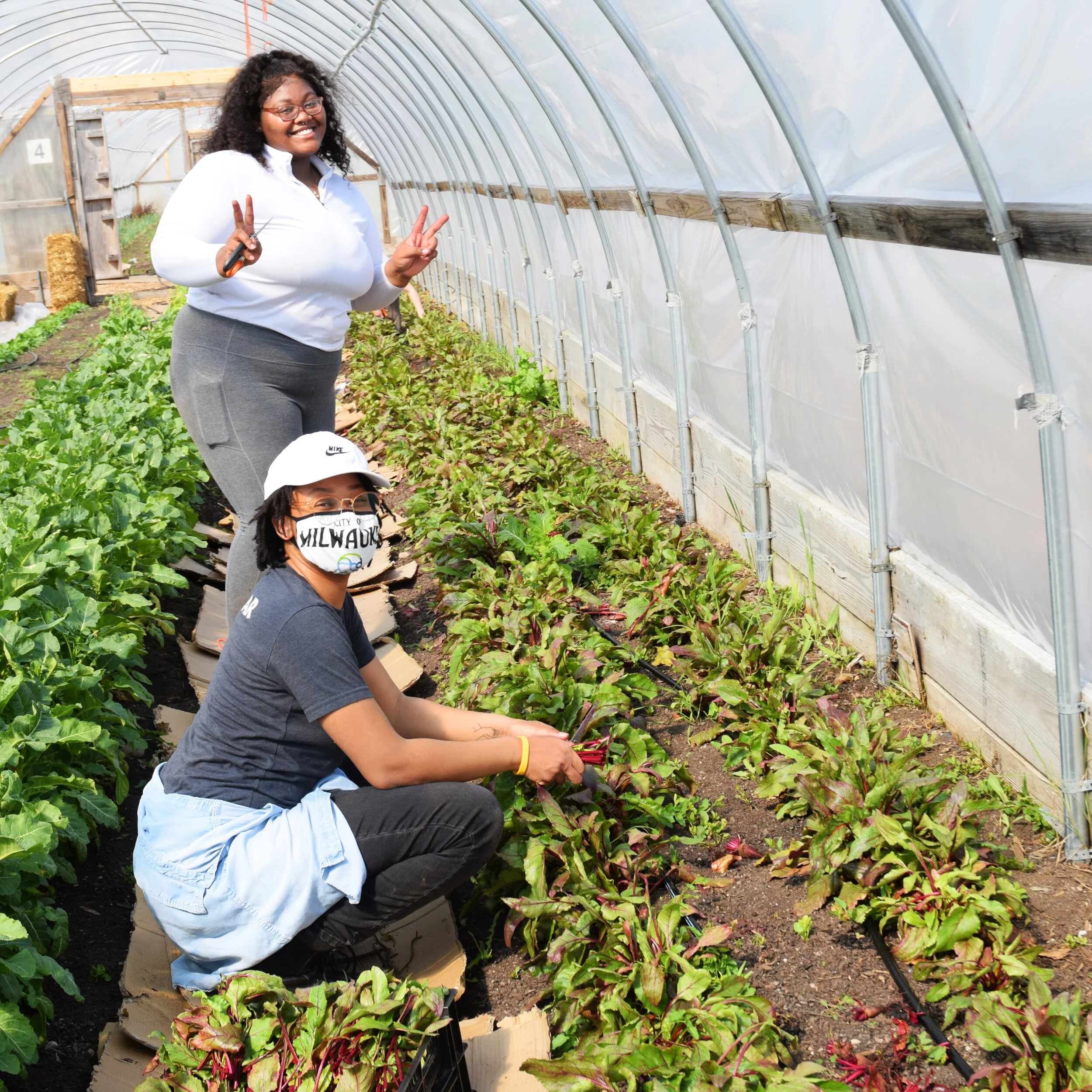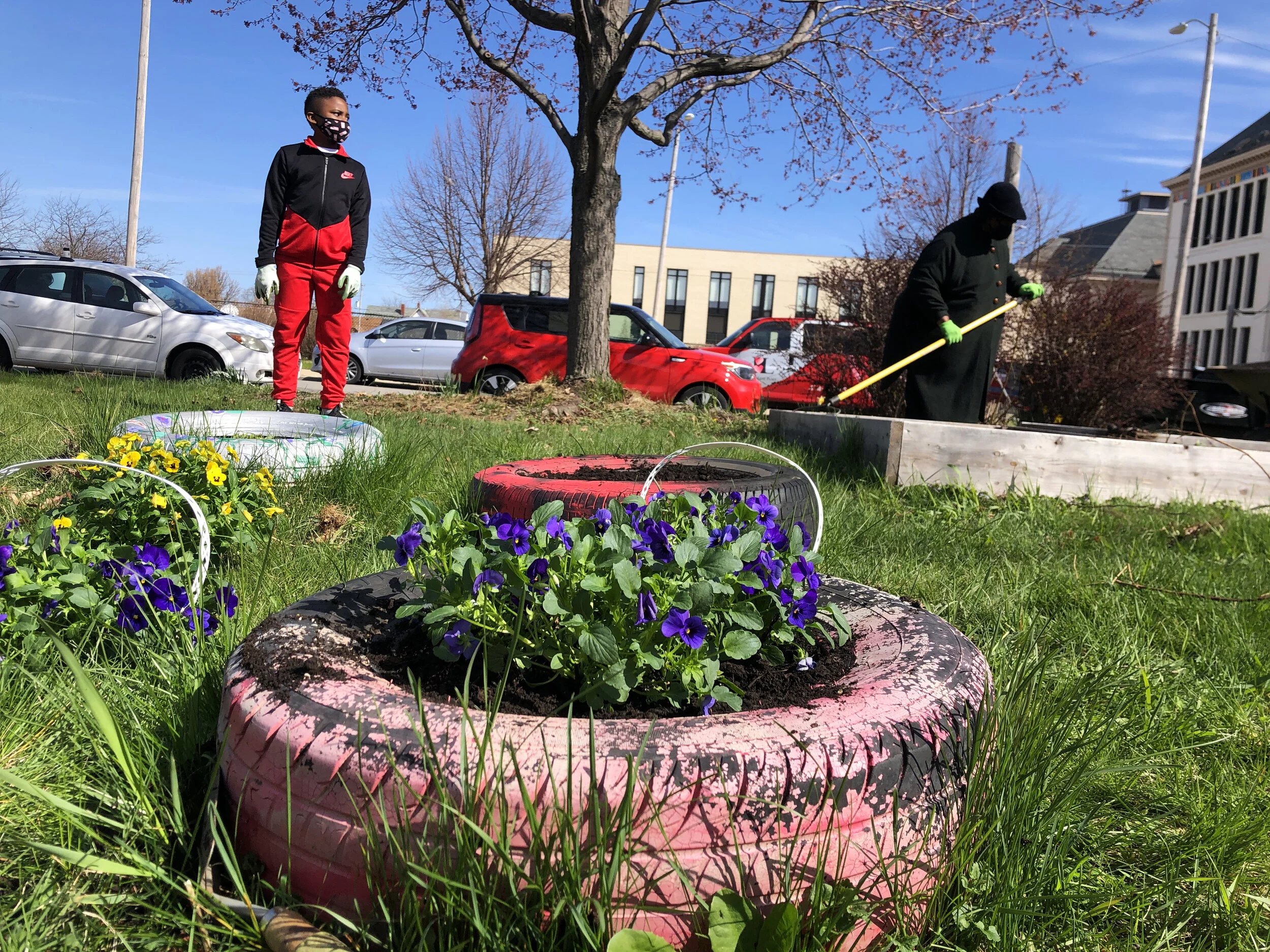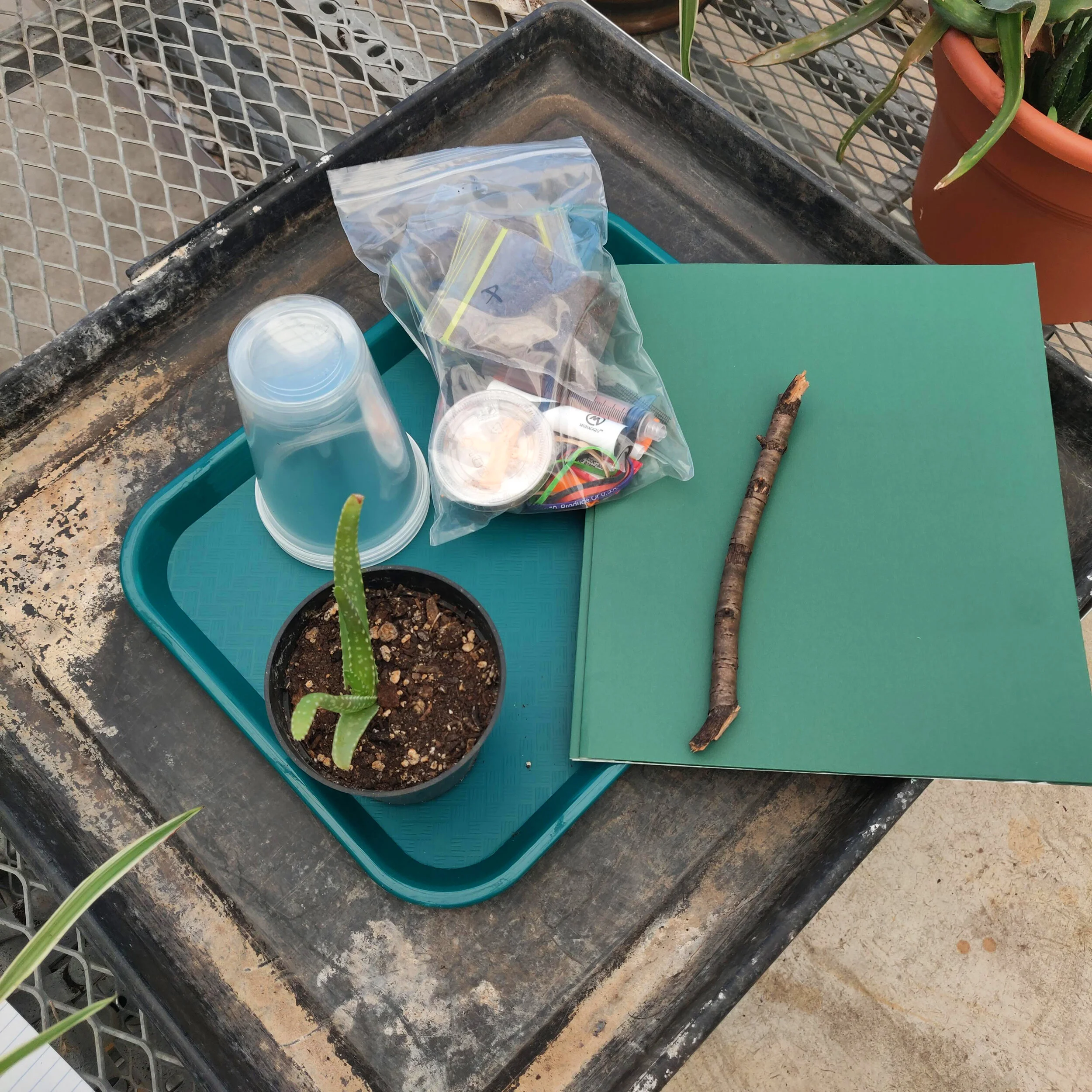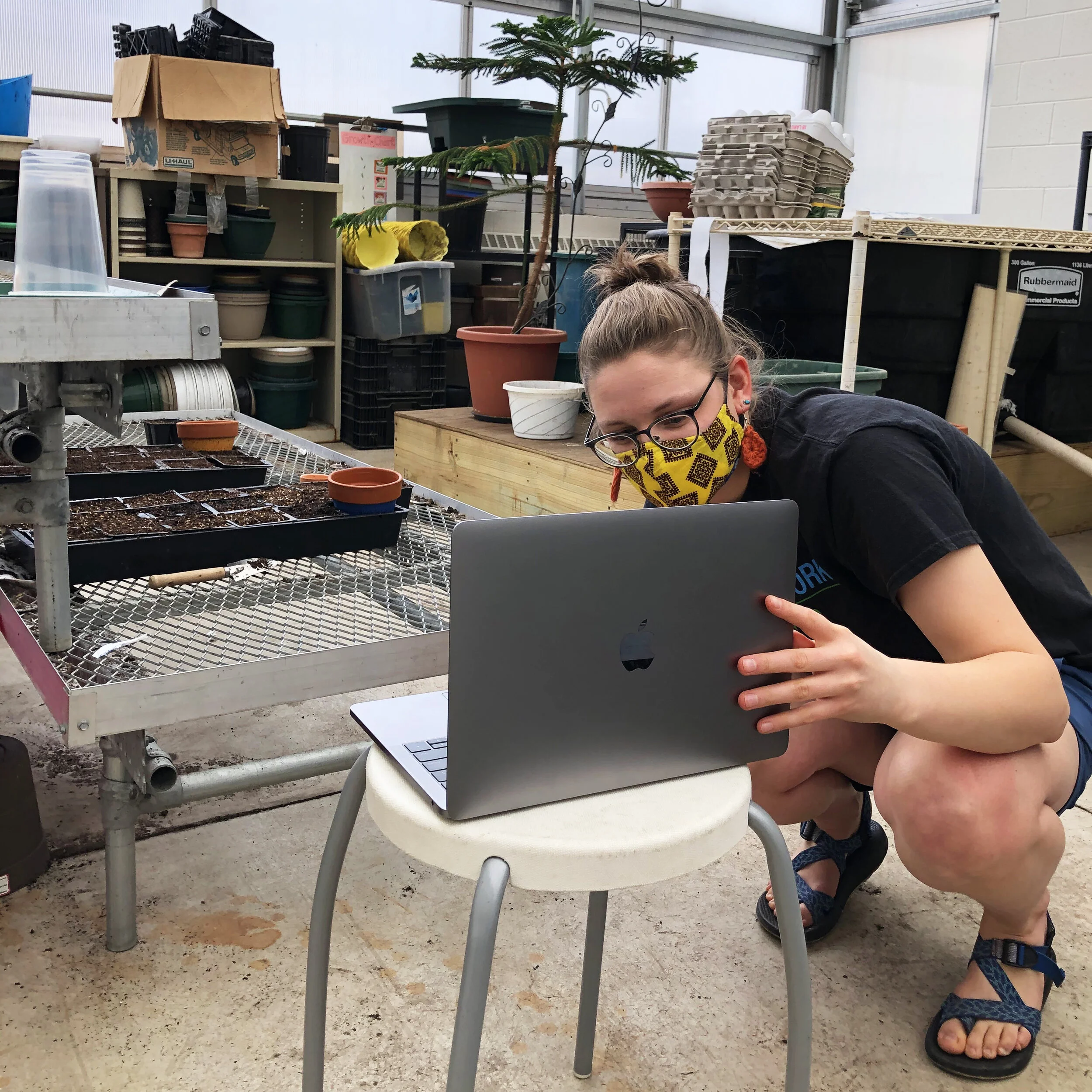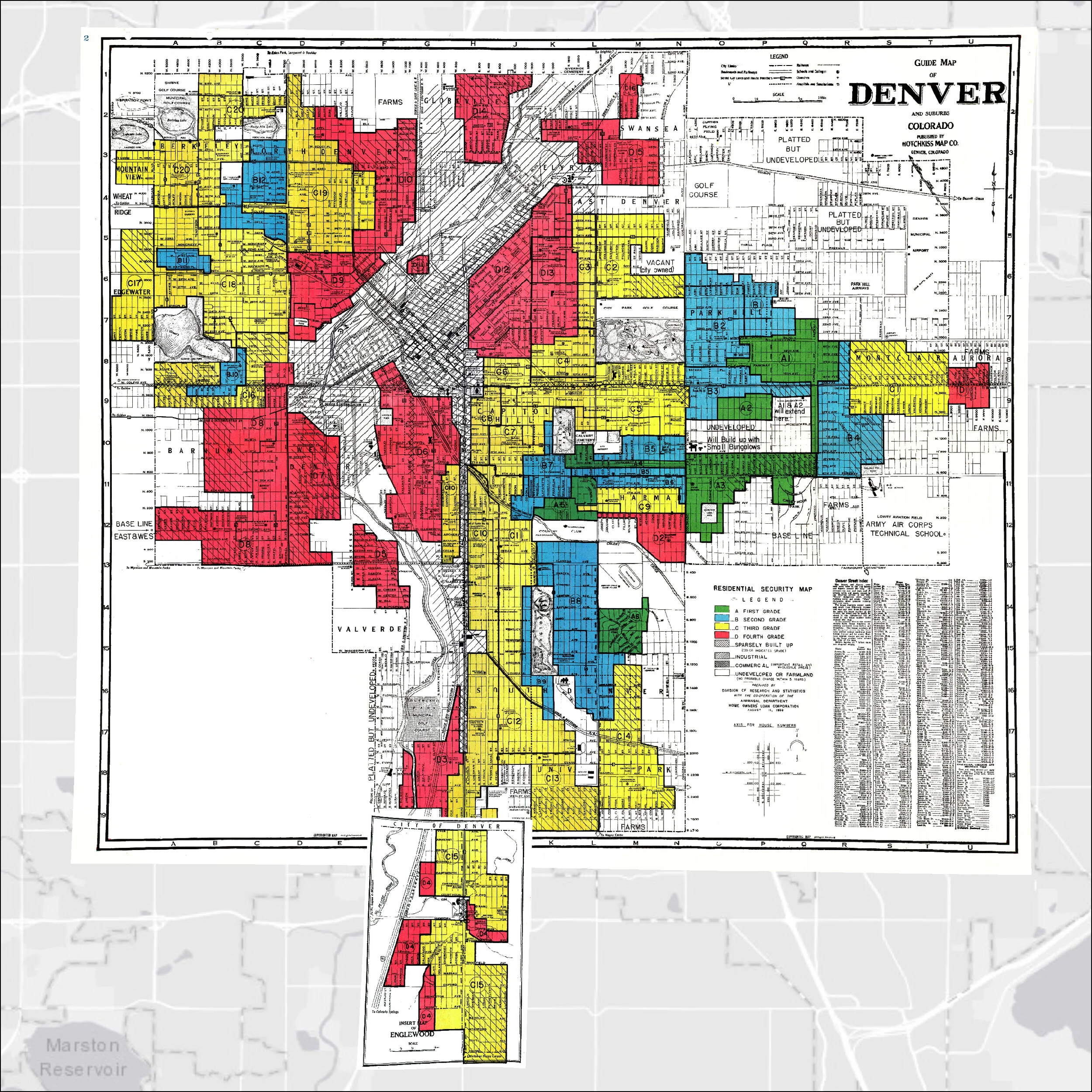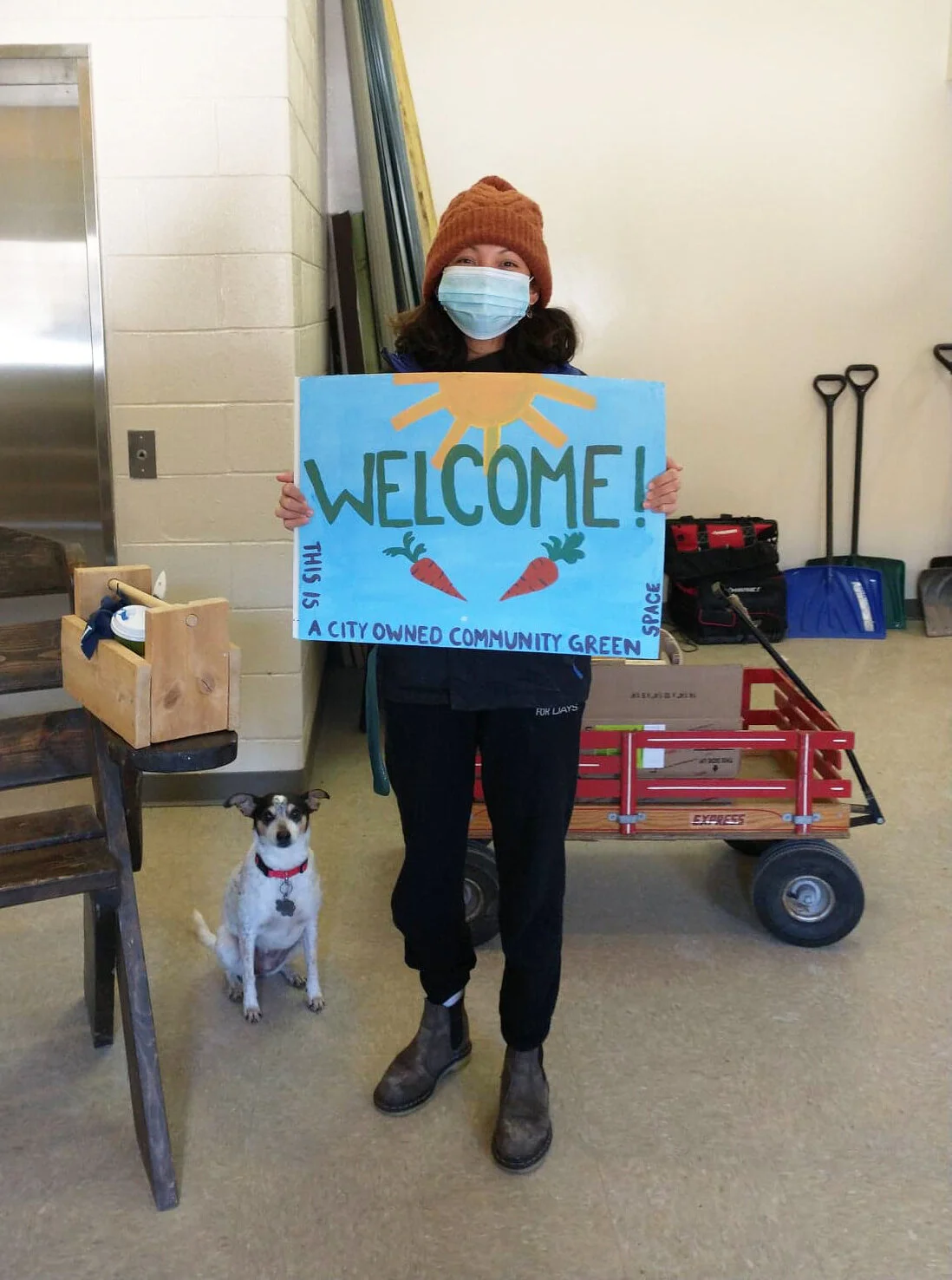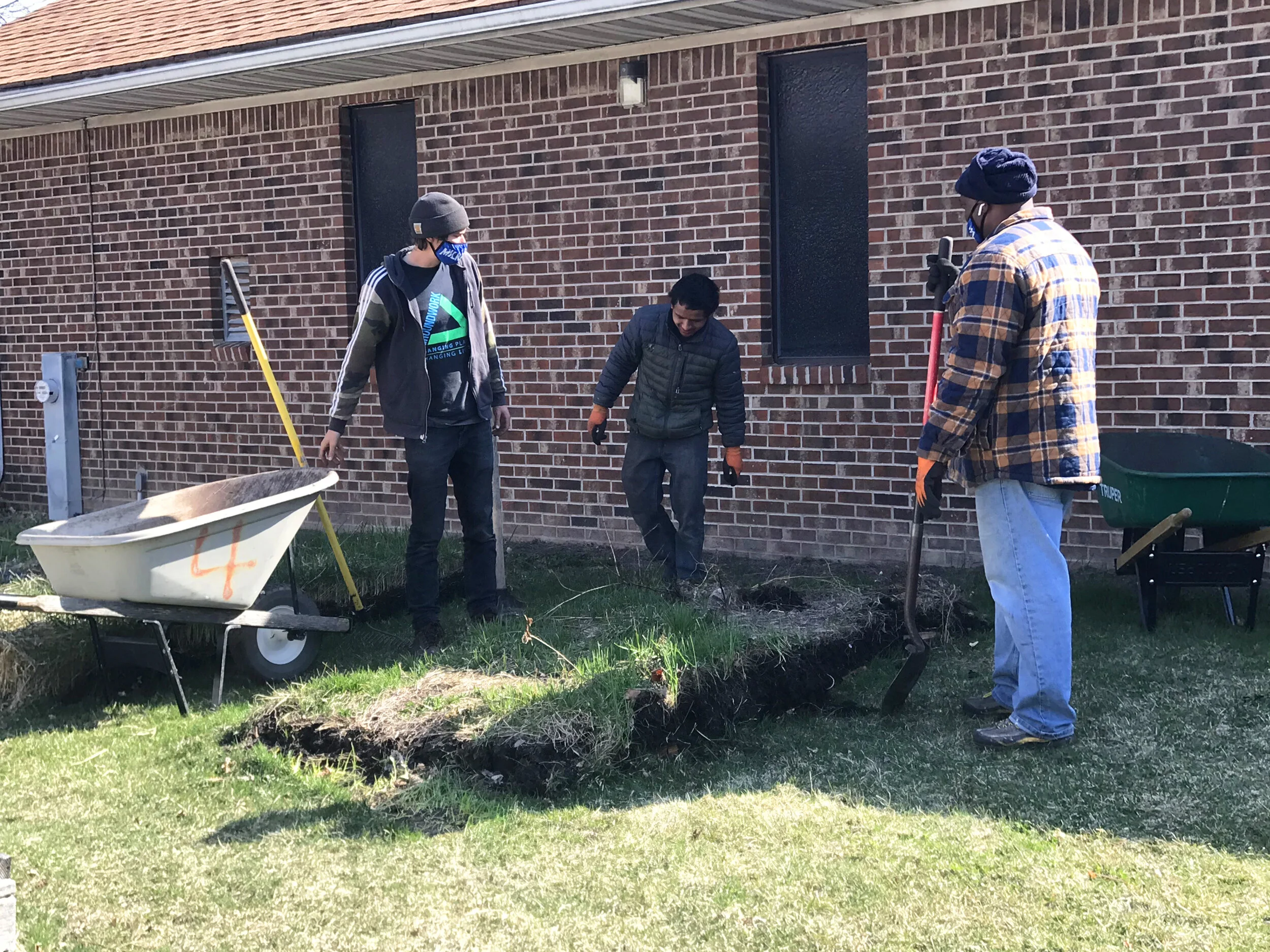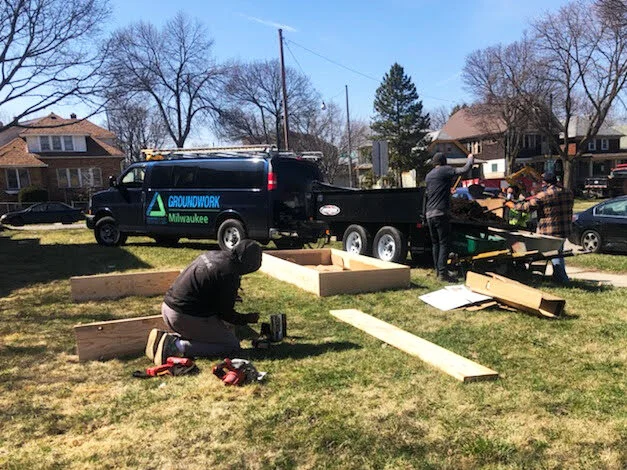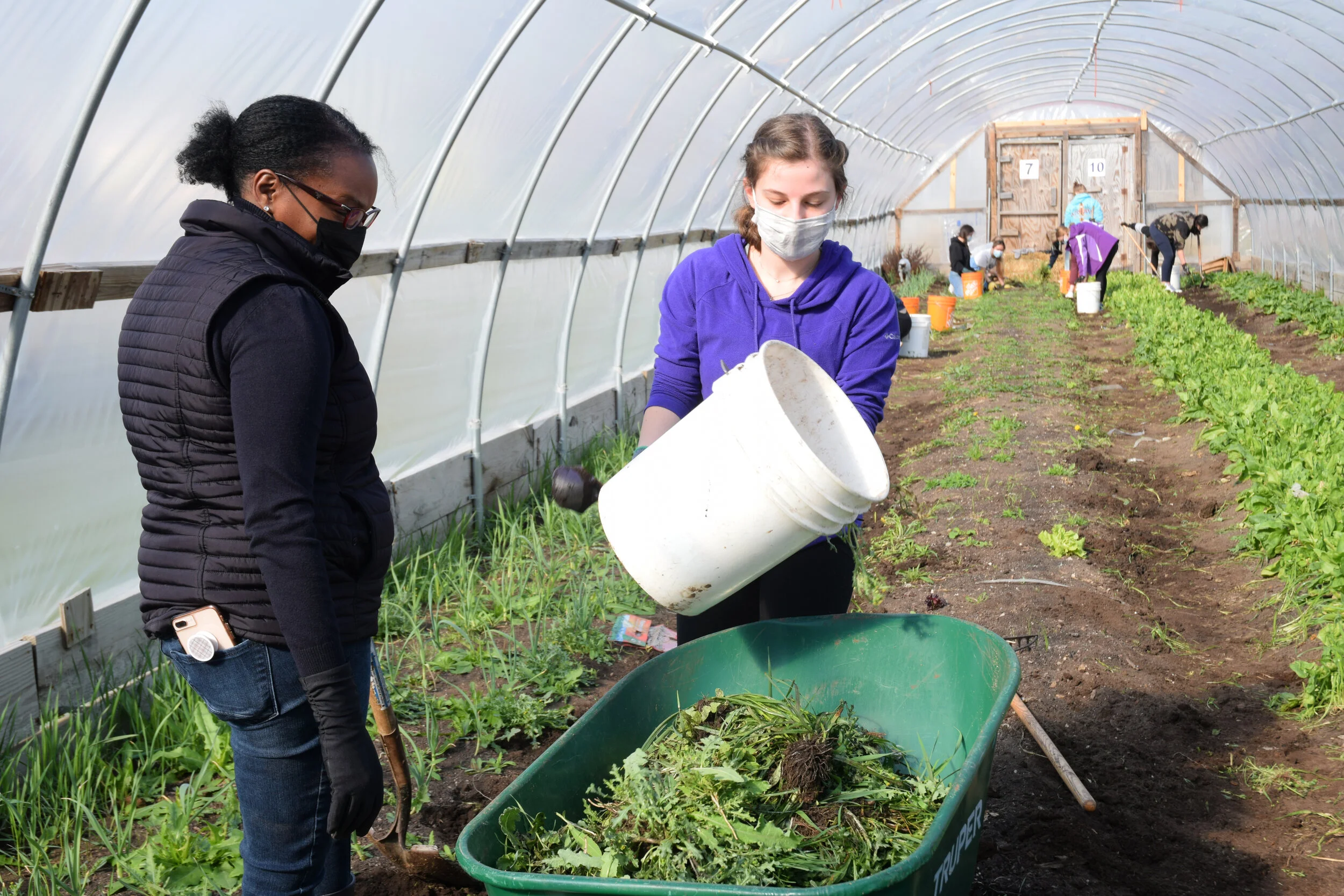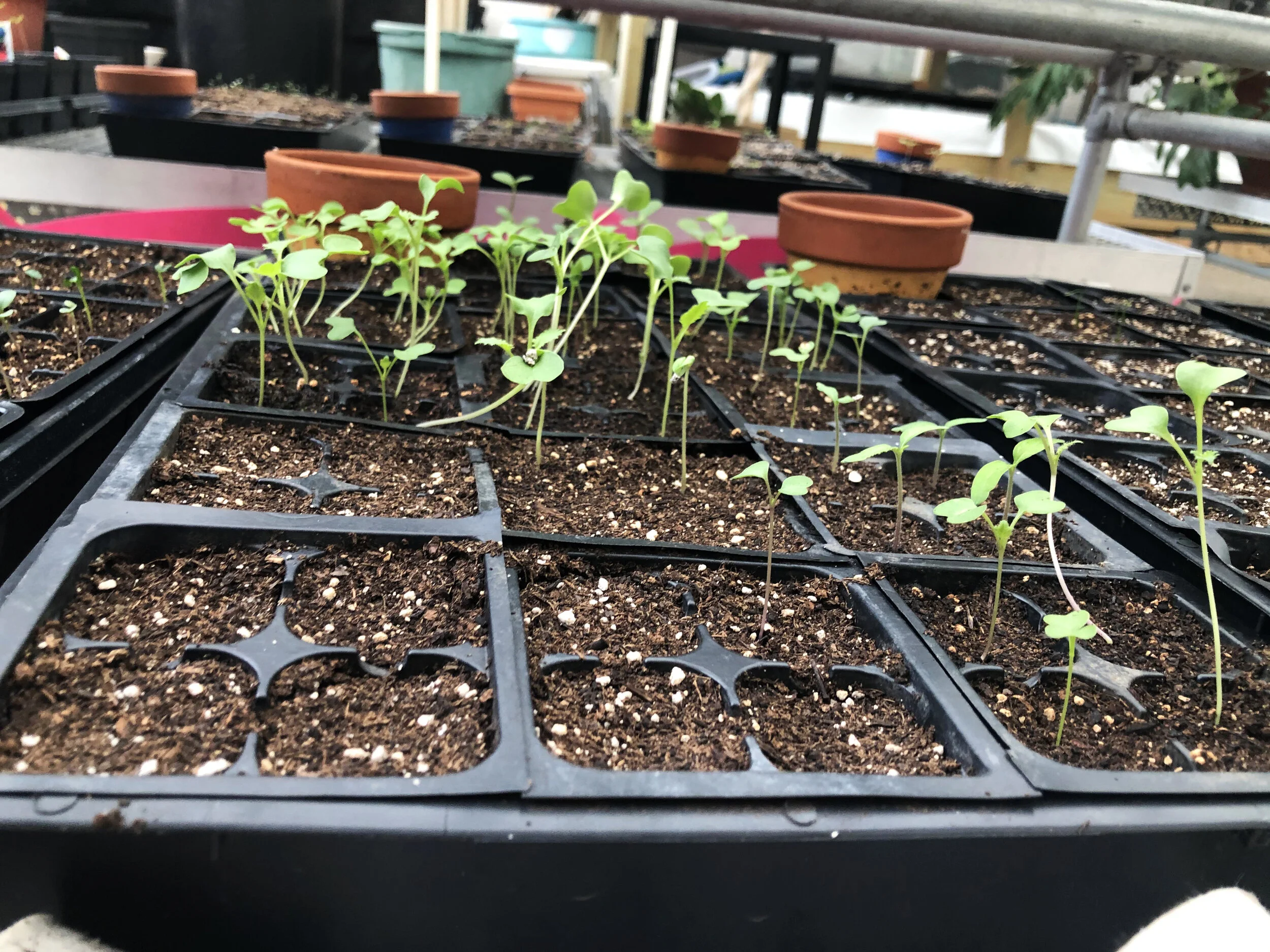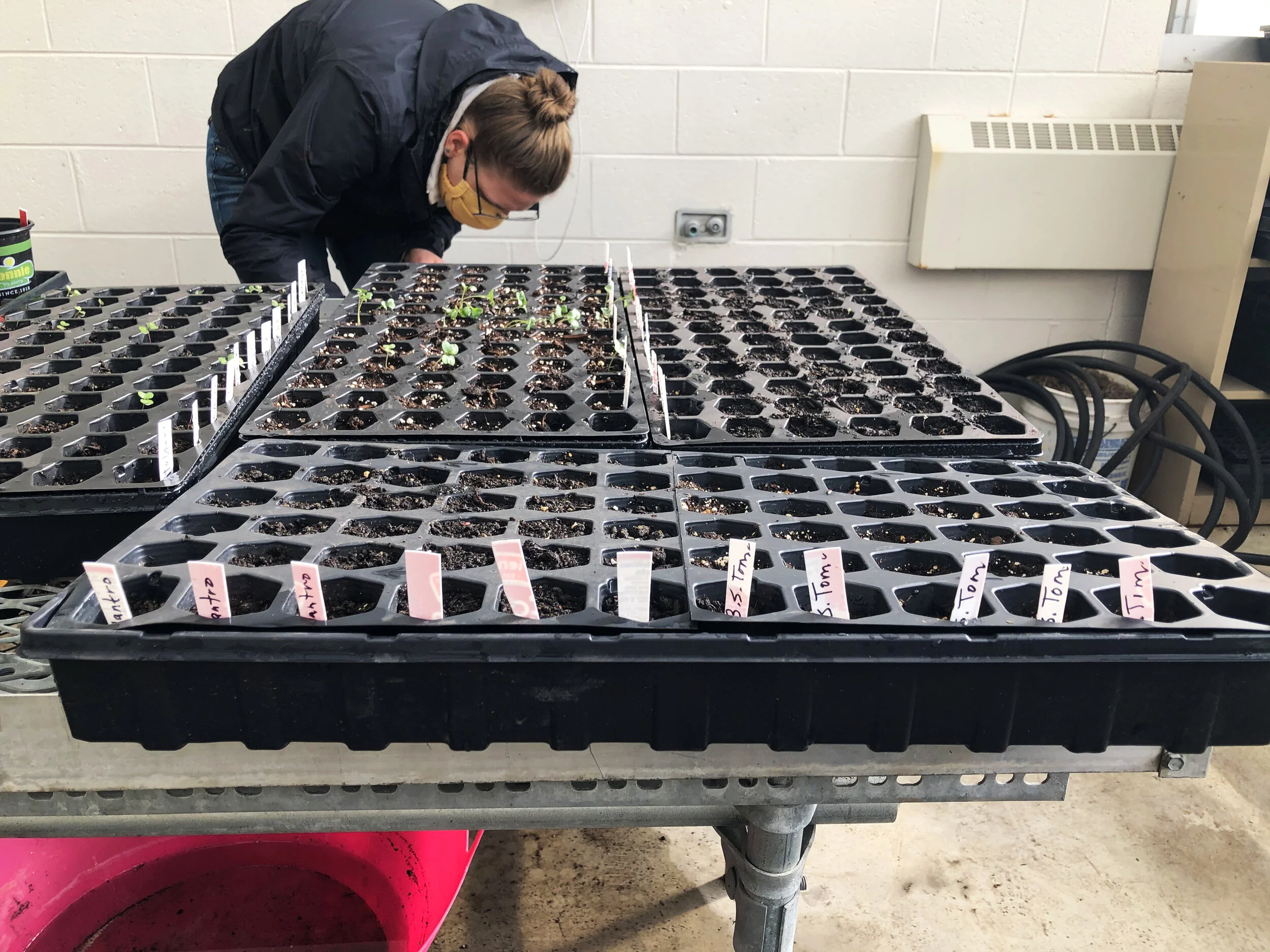September Newsletter
Postcards from Yellowstone national park
Did you know that Groundwork began as a program of the National Park Service? Ground corps crew members traveled to Yellowstone National Park this summer to restore boardwalks and learn more about conservation in real time. And yes, they visited Old Faithful!
asset based community gardening
More than ever, neighbors are collaborating with one another, and including organizations, businesses, schools in the plans to keep neighborhoods safe this summer. Karma Community Garden is a regular stop on bike tours with Red Bike and Green, a local bicycle club. Karma also collaborates with Art Lot to host family friendly events all summer!
Heart Love Place collaborated with Mt. Zion Garden and Orchard to distribute backpacks, school supplies, and vegetables!
McGovern Community Garden hosts cooking demonstrations for the month of October!
We’re teaching canning and preserves with the neighbors at McGovern Community Garden!
Tomatoes and Chacha, Soups and Salads, Apple butter and preserving pie fillings. We’re ready to selebrate autumn with the neighbors!
Register today at info@groundworkmke.org
Groundwork Milwaukee supports a network of 100 community gardens!
milwaukee grows garden network hits 100 community gardens!
Milwaukee Grows Garden Network , founded and maintained by residents with a desire to activate and beautify vacant lots in their neighborhoods has increased to 100 sites.
Each site is unique and suited for the hyper-local needs of the city block being served. Most function as gardens growing fresh vegetables, others serve as recreational greenspaces, and a few function as full-scale farms.
In addition to bringing nature and beauty into environments typically dominated by asphalt and hard urban landscapes, studies have proven that gardening increases consumption of fresh food and hours spent in physical activity, and reduces chronic disease risk. Urban gardening also facilitates the building of neighborhood bonds that are the hallmarks of socially resilient communities.
Network News
Thank you, Earth Month!
May is almost over, and almost all of the gardens have opened up for the season!
Keep up with what groundwork Milwaukee is doing is your neighborhood. at groundworkmke.org/getinvolved
New Garden Council serves as connector between gardeners, community and residents
This year Groundworks Milwaukee is adding a new resource for gardeners across the city. The Garden Council is a five-member group of veteran community leaders and gardeners. The council serves to give voice to community gardeners across the network and meets regularly to offer feedback and advice. The council aims to work and listen with community members and respond to concerns.
Dawn Powell
Dawn to Dusk Community Garden
Dawn Powell has been interested in gardening since she was 11 years old, delivering Sunday newspapers and noticing the plants and flowers in neighbor’s yards. She became a dedicated gardener in 2000 and since then has been deeply involved in the gardening network and community building organization. She was on the Milwaukee Food Council and has led numerous events and summits on food, gardening and community building. She specializes in vermiculture and manages four community gardens.
Q&A
Why gardening as a means to grow community?
Gardening is a way to get to know the community…your neighbors. We have to put the neighbor back into the neighborhood. If you know your neighbors for two to five blocks it is a more closely knit neighborhood. I have lived in my neighborhood since 1983 and you can learn from someone who is mature in age.
What do you grow in the garden and why?
I specialize in vermiculture and that's the controlled growing of worms in specialty structures. I have themed gardens, fruit and specialize in restoring gardens.
Trevis Hardman
Hardman’s Horticulturalists Scholar Society
Milwaukee native Trevis Hardman has been a lifelong gardener. He learned from his grandparents and as a kid always had raised beds, mulberry and apple trees. Hardman’s neighbors know him as a hard working man who picks up trash and takes care of his block. He is a cofounder of the well known “We Got This,” nonprofit that has mentored youth on the northside for a decade. Since co-founding the organization, Hardman says the police and crime rate in the neighborhood has dropped every year.
What do you love about your neighborhood?
We can unite on just causes, whether that be police brutality or coming together to grow food so the neighbors can eat. I also love the resolve that we have –within ourselves and within the community. I’ve seen situations that could have gone totally left but because of people like me and other leaders in the community those situations can be resolved easily without anyone getting harmed.
What is special about your garden?
Our new spot is the Hardman’s Horticulturalists Scholar Society at 4953 North 38th St., where we train young adults about anything having to do with gardens: canning, greenhouse and how to take care of produce properly. For 16 weeks we’ve been working with 8th graders at Frances Starms Discovery Learning Center and we’ve got about 26 plots started. It uses gardening combined with structured learning to really nurture and grow the students.
Katharine Goray
Solomon Community Temple Belonging Place
“I don’t feel grounded or at home without a garden. They bring hope – you don’t plant a garden unless there is hope.”
For Katharine Goray’s 72 years of life she has almost always had a garden. Whether that was as a young girl in rural Kenosha, a renter in Madison or recent transplant to Milwaukee. She said gardens make her feel at home and grounded, and that gardens spark hope.
Since moving to the city in 2021, Goray has been working with her congregation on Martin Luther King Jr. Drive to revitalize the Solomon Community Belonging Place. In less than two years the garden has grown from six beds to 17. It includes a rain garden, pollinator garden, healing spaces, library, paths and benches. And the produce grown in the garden supports dozens of people through the churches food pantry.
What has impressed you about the northside’s urban spaces?
One of the things that really impressed me about Milwaukee is going around and seeing the murals and pocket parks. The spaces where people can feel comfortable coming on to the grounds and reading or relaxing.
We named the garden at Solomon’s Community Belonging Place because we want people to feel like they belong on the grounds. We purposely put a path to connect public spaces like apartments or the bus stop to the garden so everyone feels welcome.
What do you grow in the garden and why?
All the food from the garden supports the food pantry. We surveyed people to see what items were most important to them. So now we grow okra, collards and green tomatoes. These are items that don’t come in from the Hunger Task Force or other donations to the food pantry.
Fidel Verdin
Summer of Peace Community Garden
One of Fidel Verdin’s skills as a leader is lifting up the voices of others. As the co-executive director of TRU Skool, a nonprofit organization that uses arts and Hip Hop Culture to educate and empower families, he says the garden leadership council goes beyond gardening. “Food systems and food security are super important in our environment. But this garden council can be a voice for the collective,” he said. “ Gardening and vacant lot projects – this is something people can visually see the value in. But there is a lot of thought of intention and hard work to make these spaces possible.”
What do you grow in the garden and why?
In our garden we like to say “We grow possibilities.” We are not a garden or a community space that is heavy on turning out produce. We don’t grow to take it to market or sell it. We give most of the stuff we grow away. We experiment in the garden to learn and expose young people to different herbs, plants and vegetables. We may try it and it fails but it is about learning and expanding what we think is possible.
Why gardening as a means to grow community?
For me, it is about place-making or place taking, and being able to do something productive with the vacancies in the community. It is about being able to activate and redesign how we use these spaces. It naturally just builds community because humans want to gather.
Shanice BaqueT
NIA Community Garden
Shanice Baquet says gardening has been her life. As a trained master herbalist she says that before over the counter prescriptions were available her ancestors used herbs as medicine. “For viruses, illnesses and sickness there is a plant that can be used as a cure,” she says. “But we as humans need to learn and understand how the items that are here growing from the ground, are here for us to use.” For Baquet the garden is an extension of support she hopes to offer her neighbors. She also founded Mommy Beautiful Sunrise, which is a resource hub for African American families in Milwaukee for all things child development.
How is Nia Community Garden used to build community?
Nia in Swahili means purpose. Before it became a garden it was just a vacant lot but we wanted it to have purpose and to show the community is cared about. We grow produce for our house challenged community, who can come pick out of the garden and eat fresh produce during the summertime. The garden is here to sustain everyone in the community and to bring about economic exchange within the 53206 zip code.
What does the garden grow?
We have fruit trees, vegetables and herbs. We grow some herbs and add a new herb each year. We work with different farms or gardens in the area that have an abundance of food and bring it in to support the ones that live in the community. We also offer community events like the annual pumpkin patch event. And it is a sensory sensitive garden for children and families with disabilities.
Thanks to the Garden Council, and every Garden Leader! We’ll see you outside.
One Quick Question:
How do those planters in the road work?
Those are also known as bioswales, and Ground Corps practices land and water management skills in maintaining bioswales all year long.
When it rains or snow melts, water from the street and sidewalks runs along the curb and into these planters and is filtered through plant roots, a special structural soil composed of sand and compost, and a layer of crushed stone. This filtering process removes suspended pollutants from the water and, therefore improves water quality.
After the stormwater is filtered through the layers, it drains into the existing storm sewer system on it’s way to Lincoln Creek. Pollutants from the street are left behind in the bioswale instead of flowing into the creek. This means cleaner water will flow to Lincoln Creek and ultimately into Lake Michigan.
Earth Month and All Things Spring
April Update
Since Earth Day, every aspect of Groundwork MKE have been focused on opening the season, and the community has turned out In April, Groundwork Milwaukee has held eld 35 Garden Events which included 350 volunteers who filled of 258 available volunteer shifts
We also:
Prepped 26 community gardens for planting, activating vacant lands across the city
Installed 80 new garden beds & 4 water harvesting structures,
Commissioned and nearly completed a mural inside our offices that represents Milwaukee's natural resources and
Removed 2.5 tons of trash from the riverways in Havenwoods State Forest and Milwaukee Bioswales
And to top it all off, Kilbourn Gardens is sold out! Our 80-bed garden rental is booked to capacity this season, but we've begun installations for home gardeners in Metcalfe Park Milwaukee. Forty-one families will have gardens installed this month which include raised beds with ADA access options, soil, seeds, starts, and support for the entire growing season.
Fare Well Samson!
We bid a fond farewell to an outstanding Horticulturalist and teammate, Samson Srok. He'll be working in Americorps NCCC this summer and will go on to work in South America in the fall.
Although, plants are no longer your responsibility at Groundwork, we'll keep in touch about all things plants and planting. No one beats his good advice, and we've grown good at virtual meetings soo...talk soon!
If you'd like to be involved in Groundwork Greenspaces, visit us at Groundwork Milwaukee (groundworkmke.org)
Garden Week 2023
Garden Week, which we celebrated from Earth Day until Arbor Day is complete! We’ve installed, maintained and prepared 15 community gardens during this week and they’re ready to grow!
Generous donations from local greenhouses and seed companies have supported Garden Leader’s efforts by providing additional seedlings and starter plugs so that vegetables, flowers and trees are taking root across the city.
Last year’s results are found below and if you’d like to know more, check out our garden maps Milwaukee Grows Garden Network (arcgis.com)
#GardensHeal
Thanks go to the garden leaders, ground crews and neighborhood volunteers at:
Florence Lambert Community Garden
Brady Street Community Garden
Bremen
Hepatha
Hilltop Community Garden
Madison Pocket Park
Nia Purpose (and the family gardening club!)
Nigella Commons
St. Mark AME
Scooters Garden
Solomon Community Temple
Story Garden
Uptown Community Garden
These are only the beginning- by the end of the year, we’ll have worked with almost 100 community gardens in the area.
Newsletter November, 2022
Groundwork Milwaukee Garden Leaders are responsible for more than ten acres of vacant land being activated in Milwaukee County. These volunteer environmentalists are staving off the effects of climate change by preserving greenspaces in neighborhoods that are being hit hard by the environmental hazards of urban life. They choose a city owned plot, assemble local gardeners as crew, and get busy! Some gardens are memorials dedicated to lost loved ones, others pollinator gardens meant to feed birds and bees. There are gardens meant to offer shade, or solace, or food or fun.
Hey everyone!
November is here, and we’re proud to have wrapped up the growing season with more collaborations than ever.
MESSAGE FROM THE EXECUTIVE TEAM
It’s Not Just A Garden
Groundwork Milwaukee Garden Leaders are responsible for more than ten acres of vacant land being activated in Milwaukee County. These volunteer environmentalists are staving off the effects of climate change by preserving greenspaces in neighborhoods that are being hit hard by the environmental hazards of urban life. They choose a city owned plot, assemble local gardeners as crew, and get busy! Some gardens are memorials dedicated to lost loved ones, others pollinator gardens meant to feed birds and bees. There are gardens meant to offer shade, or solace, or food or fun.
Two things that every neighborhood insists on are beauty and comfort. That means our gardens are beautiful and comfortable in as many ways as there are gardeners! Thank you, Garden Leaders, for helping make Milwaukee beautiful and Climate Safe!
Listen to one of our Garden Leaders talk about the importance of her community garden here.
Climate Safe Neighborhoods
An important part of our year end results is the release of a Flood and Health Vulnerability assessment for Milwaukee. We’ve been collaborating with Wisconsin Health Professionals For Climate Action, Data You Can Use, Medical College of Wisconsin, The New School and Groundwork USA to create an interactive tool which lets us predict the impact of climate change on urban environments, and help vulnerable neighborhoods thrive in any weather.
Join our Mailing list to receive a free copy of this groundbreaking development.
Hilltop Community Garden
Volunteer.
We’re proud to support our inspiring gardeners and look forward to working together over winter, and next season. Keep an eye out for weekly opportunities on our Volunteer Sign-Up page and social media.
Green Team
Green Team has shut down for the summer, but we did some cool weather gardening with our friends at Golda Meir School! We also spent time recruiting supporters for next year’s Green Team. potential board members joined us for breakfast at Engine Company Three
Below are pictures of the lively and productive meeting.
GROUND CORPS
Ground Corps Completes Healing Spaces, and expands Green initiatives through 2024
Ground Corps has been busy all over Milwaukee working on green infrastructure construction and maintenance; building and maintaining bioswales, rain harvest structures and ADA accessible healing gardens. We built Healing spaces in neighborhoods this season, partnered with the city of Milwaukee.
Phase Two of Healing Spaces Initiative effort is part of Groundwork Milwaukee’s commitment to make on-the-job skill building an important part of building Milwaukee’s central city.
Why is green infrastructure certification and training in the neighborhood important?
First, opening the land to absorb rainfall where vulnerable populations live in Milwaukee stops rainwater runoff into the sewer system and basements.
Second, providing shade and ground cover in high pavement areas, lowers the surface temperature on hot days, which can positively impact quality of life for residents.
Jobs and jobs training for neighbors interested in pursuing urban forestry as a career path prepares engaged neighbors for a green future in Milwaukee .
Newsletter, June 2022
Hey everyone! It’s the June newsletter! Early summer is one of the most exciting times of year for Groundwork. Last month we welcomed our Green Team and have already been out learning, building and growing in the neighborhood. We’re grateful for the good energy this crew has brought. Read what Green Team has been working on along with other program updates here, in the June edition of the Groundwork newsletter.
Hey everyone! It’s the June newsletter! Early summer is one of the most exciting times of year for Groundwork. Last month we welcomed our Green Team and have already been out learning, building and growing in the neighborhood. We’re grateful for the good energy this crew has brought. Read what Green Team has been working on along with other program updates here, in the June edition of the Groundwork newsletter.
MESSAGE FROM THE EXECUTIVE DIRECTOR
Dear Groundwork Supporters,
This month I thought I would share with you a favorite quote of mine that comes from Wendell Berry:
"It may be that when we no longer know what to do, we have come to our real work and when we no longer know which way to go, we have begun our real journey. The mind that is not baffled is not employed. The impeded stream is the one that sings."
Sometimes things don't go as planned and our best intentions are stymied. But in my experience, if I have enough like-minded people around me, there's almost always a way through. I hope that your gardens this summer are turning out to be places where you can be in community with like-minded people.
Sincerely,
Young Kim
OPEN POSITIONS
Check out these open positions! Come work with us!
GREEN SPACE ACTION
Congratulations, Marissa!
Milwaukee is a better place because of the tireless efforts and big hearts of our Public Allies, including Groundwork's Marissa Cudworth. Marissa lifts us all up, collaborates like a pro, doesn’t mind the dirt (soil ) and is a joy to be with in hard work and big fun. Congratulations to all Milwaukee Public Allie graduates! It's surely a bittersweet occasion. We wish Marissa the best in whatever path she chooses next!
Volunteer
We’re proud to support our inspiring gardeners and look forward to working together as the season continues. There are a lot of volunteer opportunities in the next month. Keep an eye out for weekly opportunities on our Volunteer Sign-Up page and social media.
Green Team
We’re always so excited to welcome our summer Green Team to Groundwork. Groundwork Milwaukee’s Green Team is a service-learning program for 14 to 19 year-olds, living in Groundwork’s most engaged communities. The program's dual goals are to prepare youth for a lifetime of environmental leadership, as well as, to support garden leaders’ power to steward community within the Milwaukee Grows Garden Network. We got started in June. Here are some highlights from the first week.
Below are pictures with commentary from Green Team members, in their own words. Enjoy!
Water Quality Monitoring by Keenan
We are the Green Team of new fun youths who help the community by planting vegetables, flowers, and helping gardens look better and more presentable.
On June 24, the Green Team completed Water Quality Monitoring on the Milwaukee River. It was a new experience for everyone. We wore waders and tested the water to see if it was clean and safe for humans and wildlife.
Hilltop Community Garden by Angel
At hilltop garden we were good sports and worked through the unpredictable weather. We picked strawberries from the garden. Auntie Lavella, one of the gardeners, gave us ingredients to make mint tea. We had the opportunity to plant different kinds of vegetables and we cut up the potato and planted the stems to regrow. We were able to see all the different projects that are in progress including an underground greenhouse that’s been a work in progress for months now. There were so many different plants and vegetables. We were able to plant squash, tomatoes, and more.
Marcus Mosiah Garvey Jr. Garden by Keenan
At Marcus Mosiah we met Robert, the garden leader, and his family. We fixed up his garden and planted vegetables. He shared homemade lavender lemonade with us. We tried getting water out of the Rainwater Harvesting Structure but the water was coming out too fast. We struggled with water access so the neighbor let us use his hose. This was a big deal because the neighbors haven’t always been interested in the garden being right next to them. I wonder what changed?
Painting Benches by Charles
I had experience painting things like shirts before, but I'd never had experience painting benches. It was fun to get to do it with other people. We were just painting and vibing. There was music playing and talking. I did the people. They had crazy hair and outfits. The benches will be for garden leaders. We will get to paint and design two benches with Peace Park this summer.
GROUND CORPS
Ground Corps Supports the Andre Lee Ellis & Company Community Garden
Ground Corps has been busy all over Milwaukee working on green infrastructure construction and maintenance. One highlight from the past month was a work day at a new garden being started by a long-time Groundwork friend. On June 18th, Groundwork’s Ground Corps supported Andre Lee Ellis’ new project called CAGE (Community Agricultural Growing Experiences). The crew measured out the soon-to-be-constructed labyrinth garden at 1313 West Reservoir Avenue. Andre is an inspiration to many and we are proud to play a role in realizing his vision for this space.
Newsletter, May 2022
Groundwork Supporters! The May newsletter is here. We’ve been outside with our network of inspired gardeners and volunteers growing things, planting trees, planning for a climate safe future, and partying! Keep scrolling to learn more about what we’ve been up to. Watch for opportunities to get involved!
Groundwork Supporters! The May newsletter is here. We’ve been outside with our network of inspired gardeners and volunteers growing things, planting trees, planning for a climate safe future, and partying! Keep scrolling to learn more about what we’ve been up to. Watch for opportunities to get involved!
MESSAGE FROM THE EXECUTIVE DIRECTOR
Staked out garden plots at 26th and Clybourn.
Those of you who have lived in Milwaukee for a bit probably remember Marty Stein, the noted businessman, philanthropist, and community leader who passed away in 2008. 19 years ago, I had the fortune to work with him, and I'll never forget one of the pieces of wisdom that he passed onto me: "Young, never make anyone do something that you're not willing to do yourself."
And so, with Marty's admonition echoing in my head, last week I laid out the plots at our garden at 26th and Clybourn. What I thought would be a 90 minute job took me four hours. Each garden plot corner required a wooden stake, and my right forearm was not prepared to hammer 78 of them into the ground. Then there was the twine that had to be stretched between the stakes to mark out each plot, and this office worker body of mine was not ready to bend over as many times as it did. But when I was done, I took a photo of the laid out plots, and it felt good. And I have a new appreciation for how hard our garden leaders work.
And so to all of the volunteers who make our garden network go, I give you my heartfelt (and backfelt) thanks.
-Young
OPEN POSITIONS
Check out these open positions! Come work with us!
GREEN SPACE ACTION
One Tree Planted
As of the end of May, we have collaborated with numerous gardens, and industrious volunteers to plant 47 of the 50 fruit trees we acquired through a One Tree Planted grant. We are so grateful to the many volunteers and community members that have given their time to this initiative.
Great Groundwork Grill Out
Last week, we held our latest Great Groundwork Get Together - Grill Out Edition! Over 75 gardeners, volunteers, organizational partners, friends and family came together at Kilbourn Garden for a spread of food, prizes, games, community and the natural beauty of the garden in the backdrop. Thank you for coming out to celebrate all that we accomplish together. We couldn’t do it without you.
We couldn’t have orchestrated such a lovely evening without a group of generous local businesses who supported the event! We had plenty of food and drinks thanks to the generosity of Newaukee. We appreciate their support of our mighty but humble organization and the hundreds of volunteers and garden leaders who pour their hearts into our city. Special thanks also to the following businesses and organizations who donated awesome and fun items for our drawing:
Volunteer
We’re proud to support our inspiring gardeners and look forward to working together as the season continues. There are a lot of volunteer opportunities in the next month. Keep an eye out for weekly opportunities on our Volunteer Sign-Up page and social media.
KILBOURN GARDEN
BAIRD Volunteer Day
Huge thanks to BAIRD for their day of service cleaning and weeding at Kilbourn Garden! It’s because of support like this that were able to keep the garden looking fresh.
One Bed Left for the 2022 Season!
As of May 31st, there is still one garden bed available at Kilbourn for the 2022 season (#132). If you’re still looking for somewhere to grow, come join us! Reserve the last bed below.
Volunteer
Throughout the growing season we’ll be hosting regular volunteer workdays at Kilbourn on Wednesday evenings from 5-7pm. Stop by and help us keep the space beautiful!
Climate Safe Neighborhoods
Organizing work for Milwaukee Climate Safe Neighborhoods (CSN) continues. We are canvassing neighborhoods, holding information sessions, and gathering insights and feedback from residents. We hosted an information table at the recent COLE (Coalition on Lead Emergency) Block Party at Hephatha Church and had a really good time meeting with residents, lots of kiddos, and partners from other organizations. We also helped support the work of the Milwaukee Climate and Equity Plan at the Milwaukee River Greenway Public Stakeholder Meeting. We’re grateful that the Milwaukee community offers many opportunities to get involved and weigh in on climate and green initiatives.
Energy Burden
In last month’s newsletter, we provided a brief on the issue of energy burden in Milwaukee. Energy burden is the comparison of household income to energy expenses (residential gas and electric). Data shows that Black, Latinx and Hispanic households in Milwaukee, and those who live in formerly redlined areas, are paying the most of their income toward energy bills, compared to other Milwaukee residents. The Milwaukee Journal Sentinel followed up with Groundwork’s Keviea Guiden who is advocating around this equity issue.
Heat Mapping Campaign
Jess Haven, outreach and organizing director for Groundwork Milwaukee, got to talk with Wisconsin Public Radio about an urban heat mapping campaign we are partnering on with the Wisconsin DNR, Milwaukee Metropolitan Sewerage District, Wisconsin Health Professionals for Climate Action, and several other local organizations. Read about the campaign and why the resulting data will be so important to understanding the impacts of summer heat in Milwaukee so we can work to address it in ways that residents determine.
Heat Mapping Volunteers Needed!
Did we mention a heat mapping campaign? We did! We’re inviting enthusiastic volunteers to join us for a day of people-powered climate action. The project to capture data on ambient air temperature throughout Milwaukee on one of our hottest summer days means that several volunteers are needed to drive throughout the city, along predetermined routes, with air temperature sensors attached to their vehicles. It will be an energetic collective effort and a great way to help residents in areas of the city that are most severely impacted by sweltering heat when those temperatures and humidity are at their worst. We will use this information to identify and call for an equitable response by city leaders and organizations, to ensure the health and safety of our most vulnerable neighbors - especially as our hottest days become even hotter due to climate change.
What will volunteers do? Volunteers are needed to drive along predetermined routes in the City of Milwaukee over three separate one-hour periods during a hot day. Volunteers will use a simple data-collection device attached to the vehicle. You can also volunteer as a navigator and help direct drivers’ turns along their route.
Are there any requirements to volunteer? Drivers will need a valid driver’s license, auto insurance, and access to a vehicle. In addition to the three hours of data collection, volunteers will first be asked to attend a virtual one-hour Volunteer Training Session, complete a short knowledge quiz, and sign a liability waiver. Based on previous campaigns, volunteers will spend a total of about 5 to 6 hours on the project, though the majority of time (~4 hours) will occur on the selected campaign day.
On what day will the heat mapping campaign occur? That will depend on the weather forecast. Heat mapping is best done on a hot and clear-skied day. Using historical weather patterns, and support from the National Weather Service, we are looking at a July or August date. While weather does change, this selected campaign date will be confirmed about one week prior, as forecasts become more reliable.
Because we must wait for the heat—and the fact that summer is such a busy time—we need to assemble an “on-call” roster of volunteers -- which means that we’ll want more people signing up than we need. We will confirm your participation about one week prior to the campaign once we finalize the date.
Please note that signing up does not commit you to the project. Rather the process will begin by building out a roster of potential volunteers, and confirmation will occur about one week in advance.
If you are interested in participating in this opportunity, or would like to learn more, please respond to this Volunteer Interest Form.
Left Turn with Dr. Rene Settle-Robinson
What is 'environmental justice?' Milwaukee practitioner Dr. René Settle-Robinson sat down with Alex and James of Riverwest Radio’s Left Turn production and discussed impacts of climate change and pollution on our most vulnerable neighborhoods. They discuss the political will it will require to address the greatest impacts and prioritize equity.
Green Team
Henry David Thoreau Elementary School
Groundwork team members Elena and Marissa helped Henry David Thoreau Elementary build TWO new garden beds for their inaugural growing season! Students learned how to use power tools and were able to get creative by decorating blocks to border the outside of the garden beds. When the bed was built, the students took a nap inside. As you can tell from the pictures, this was a lot of fun.
Craig Montessori School
In addition to the garden build at Thoreau, Elena and Marissa provided trainings on soil and compost at Craig Montessori. We’re grateful for the opportunity to share time with all these budding young minds. See you again, soon!
Newsletter, April 2022
Hey Groundwork Supporters! Here’s the April newsletter! It hasn’t felt quite like spring yet, but we know the growing season is just around the corner. We’ve been busy prepping and building new gardens, cleaning waterways, planting trees and connecting with residents. Keep reading to learn more!
Hey Groundwork Supporters! Here’s the April newsletter! It hasn’t felt quite like spring yet, but we know the growing season is just around the corner. We’ve been busy prepping and building new gardens, cleaning waterways, planting trees and connecting with residents. Keep reading to learn more!
MESSAGE FROM THE EXECUTIVE DIRECTOR
Today is Earth Day and with all of the disturbing stories in the news lately, I've been thinking of "The Real Work," a poem by Wendell Berry:
It may be that when we no longer know what to do
we have come to our real work,
and that when we no longer know which way to go
we have come to our real journey.
The mind that is not baffled is not employed.
The impeded stream is the one that sings.
The world is baffling but we have to keep going. One carrot won't change the world but an empty vacant lot that's turned into a garden full of carrots, tomatoes, peppers, and collards, in a small way, will. When you multiply that positivity by the 80+ gardens in our garden network and consider all of the networking, social bonding, improved nutrition, low-intensity exercise, and healing that happens when people grow things together – then you have a difference maker for Milwaukee.
It's easy to feel overwhelmed when we think of ourselves as solitary individuals, but when I remember to put things into the context of a community, I start to feel better. It's the small things we all can do – like a kind word to the cashier at your grocery store, checking in on an elderly neighbor, or planting heirloom tomatoes – that will make a difference. Taken together our actions will move the needle for Milwaukee and our planet.
Sincerely,
Young
OPEN POSITIONS
Check out these open positions! Come work with us!
GREEN SPACE ACTION
Earth Day
Groundwork Milwaukee participated in an Earth Day green resource fair at the Urban Ecology Center at Washington Park with Nearby Nature. There were over 100 volunteers participating in a clean-up at Washington Park and several different partner organizations. The weather was beautiful! This was part of a citywide effort organized by Milwaukee Riverkeeper Spring Clean-Up. Thousands of volunteers participated at over 80 sites throughout the Milwaukee River Basin. Mayor Cavalier Johnson and Milwaukee County Chairwoman Marcelia Nicholson both were in attendance as well. On Earth Day we also cleaned up our adopt-a-river site at Havenwoods State Forest and kicked off the Discovery World Garden.
Southside Spring Clean-Up
In April, we held our first spring clean-up event on the southside, in partnership with Story Garden and Madison Pocket Park. Ten volunteers showed up at Story Garden. They collected debris, retired old hoses, clipped bushes, and collected branches. We were also able to plant seeds in seven planter benches and install two welcome signs, which were painted by Groundwork volunteers! Garden Leader, Brenda Rios, was very excited to have one of her students show up to help. He learned to operate a drill and connected the garden sign to its post. Other volunteers then helped install it in the ground. At Madison Pocket Park, we had support from five volunteers. Together with Groundwork staff and Garden Leader Sarah Luther we weeded and filled garden beds with soil. The weeds were no match for our teamwork! The garden is now ready for the upcoming season.Both of these events were powered by people who canvassed, and brought materials, ideas, and a willingness to work.
Tree Planting at Hepatha Community Garden
We’re very excited to have held our first tree planting of the season at Hepatha Community Garden. Thanks to funding from One Tree Planted, we were able to plant five trees: one sweet cherry pie, two red haven peach trees, one golden delicious apple tree, and one haralred apple tree. Thanks to all the community leaders and volunteers that came out to help!
Volunteer
We’re proud to support our inspiring gardeners and look forward to working together as the season continues. There are a lot of volunteer opportunities in the next month. Keep an eye out for weekly opportunities on our Volunteer Sign-Up page and social media.
KILBOURN GARDEN
Gardening has been kicked off at Kilbourn. We’ve already rebuilt 33 beds and have begun filling them with soil. Keep your eyes peeled for the front bed to be painted with the garden’s name. We’ll finally have a sign!
If you’re looking for a growing space for this season, registration for Kilbourn is open and there are still beds available. Reserve your bed below!
Great Groundwork Grill Out
Volunteer
Throughout the growing season we’ll be hosting regular volunteer workdays at Kilbourn on Wednesday evenings from 5-7pm. Stop by and help us keep the space beautiful!
Climate Safe Neighborhoods
We’re out here! On Saturday, April 23, we hit the streets to start introducing Climate Safe Neighborhoods to Milwaukee residents. We love meeting neighbors and it’s very important to hear about their health, safety and climate related experiences and concerns. We’ll be out regularly to learn more about the issues and put our minds and energy together to build a grassroots movement for local change.
Energy Burden
Energy burden is the comparison of income to energy expenses per household. Data shows that Black, Latinx and Hispanic households in MIlwaukee, and those who live in formerly redlined areas, are paying the most of their income toward these bills, and experiencing shut-offs and credit impacts as a result. This is an equity issue we are highlighting with our grassroots Climate Safe Neighborhoods initiative. To learn more, contact keviea@groundworkmke.org. Together, we can make change happen!
Check out the press event video here to learn more, and head to this link to calculate your household energy burden.
Heat Watch Mapping Campaign this Summer
Groundwork Milwaukee is partnering with the Wisconsin DNR, Milwaukee Metropolitan Sewerage District, and several other local organizations in an urban heat mapping project this summer. Thanks to the application submitted by the DNR forestry division, Milwaukee was chosen along with 13 other cities across the country to receive heat sensor equipment, logistical support, and data analysis by NOAA (National Oceanic and Atmospheric Administration) and CAPA Strategies in 2022 for a summer day of people-powered mapping action. This means we’ll be recruiting volunteers to drive planned routes with sensors on their vehicles a few times during one of the hottest projected days of this summer (probably in July, TBD - stay tuned!). This data can be used to better understand the disproportionately high temps in some residential areas, and around schools and other populated areas in the city. With this information, city leaders and organizations can take measures to ensure safety for all Milwaukeeans on hot days, especially as we experience more extreme weather conditions due to climate change. More info to come. We hope you’ll get involved!
GREEN TEAM
Starting in May, Groundwork will be providing Green Team youth programming with three partner organizations, Thoreau Elementary School, Craig Montessori School and with SPLASH, Belonging Place at Solomon Community Temple. We can’t wait to get started!
GROUND CORPS
April marked the start of Ground Corps programming and their calendar was packed. They began their maintenance of city bioswales while completing an ADA accessible stage and rain harvesting structure at the MacCannon Brown Community Garden. They also built new garden beds, complete with soil, for the Community Agriculture Growing Experience (CAGE) Garden, Andre Lee Ellis’ new project. The garden was featured in this story on TMJ4.
Newsletter, March 2022
Groundwork Supporters! The newsletter is back! It’s been a minute, but we weren’t hibernating. We were working behind the scenes to prepare ourselves for the 2022 season. We’ve got open positions. We’ve got new Ground Corps members. We’ve got spring clean-ups planned. Kilbourn registration is open. Read all about it below!
Groundwork Supporters! The newsletter is back! It’s been a minute, but we weren’t hibernating. We were working behind the scenes to prepare ourselves for the 2022 season. We’ve got open positions. We’ve got new Ground Corps members. We’ve got spring clean-ups planned. Kilbourn registration is open. Read all about it below!
MESSAGE FROM THE EXECUTIVE DIRECTOR
“It is spring again. The earth is like a child that knows poems by heart.”
-Rainer Maria Rilke-
Spring is here! I’m sure because I spotted a robin last week. But I've lived in Milwaukee long enough to know that sometimes snow happens in April. So, I’m trying not to get too excited. I've lived all over the United States (Alabama, Louisiana, Hawaii, Maryland, North Carolina, Ohio, California, Texas, and Washington) and I tell you: No place celebrates spring and summer like Milwaukee does. Groundwork is here to help you celebrate. So, get ready Milwaukee, we've got some cool stuff planned.
Sincerely,
Young
OPEN POSITIONS
Check out these open positions! Come work with us!
The Great Groundwork Get Together
On March 9th, Indeed Brewing Company graciously hosted us for an evening of family, friends, and fun, aka The Great Groundwork Get Together. Indeed donated all proceeds from the day to Groundwork Milwaukee’s work in the community. DJ Bohdan generously contributed awesome music, we held a quirky little raffle, and the trivia contest was a hit. It was great to meet and spend time with Groundwork Milwaukee supporters, volunteers, garden leaders, board members, and thirsty bystanders. We enjoyed introducing all these folks to one another! The greatest successes of the event were the connections formed and fun memories made. Thanks to everyone who made it out! We hope to do it again.
GARDEN NETWORK
Seedlings
Seedlings under a grow light in the Groundwork Milwaukee office.
Seedlings have been started in our new grow tower. Thank you to the generous volunteers who helped plant the seeds! Collards, peppers, tomatoes, and more have started their great journey to find homes in the Milwaukee Grows Garden Network this spring and summer.
One Tree Planted
Photo by Shuai Want via Unsplash.
This year, with funding from One Tree Planted, we will be planting 60 fruit trees across the city in 13 different sites. We will bask in the glory of fresh local fruit! Our first planting day is April 30th @ Hepatha Community Garden. Come volunteer to dig some big holes with us.
Spring Clean-Ups
As the growing season begins, we’ll be traveling garden to garden picking up trash, repairing beds, and setting these greenspaces up for spring success! We’re looking for volunteer support on the following clean-up days. Come join us!
Volunteer
We’re proud to support our inspiring gardeners and look forward to working together as the season continues. There are a lot of volunteer opportunities in the next month. Keep an eye out for weekly opportunities on our Volunteer Sign-Up page and social media.
KILBOURN GARDEN
Kilbourn in full bloom.
Registration for Kilbourn Garden is open for the 2022 season! There are still plenty of available beds. Come garden with us! Reserve your bed below.
Volunteer
Throughout the growing season we’ll be hosting regular volunteer workdays at Kilbourn on Wednesday evenings from 5-7pm. Stop by and help us keep the space beautiful!
Climate Safe Neighborhoods
A map of Lindsay Heights showing historical waterbodies, closed depressions, and a 100yr storm flood model. A key component of Climate Safe Neighborhoods is resident engagement using maps. This example shows areas that are vulnerable to flooding. We’ll use maps like this to start conversations around resource distribution and mitigation strategies.
Our Milwaukee Climate Safe Neighborhoods initiative is taking shape, as we build the foundation for activating residents in a movement to understand climate impacts at the neighborhood level; examine the disparities of those impacts affecting Black, Indigenous, and People of Color communities significantly more than predominantly white neighborhoods; and to call for relevant local change for the health and wellbeing of Milwaukee residents.
We are partnering in upcoming work including a grassroots urban heat mapping project, a neighborhood air monitoring program, a report on flood risk and health impacts, and more. Please stay tuned to support resident-led actions in the coming months, and contact Jess if you would like to learn more about Climate Safe Neighborhoods (jess@groundworkmke.org).
GROUND CORPS
Darryl (left) and Devin (right) prepare an ADA accessible permeable pathway as part of the Healing Spaces Initiative in 2021.
This month we hired four members of our 2022 Ground Corps Crew. We’re proud that three of the four members are returning members from previous years. They’re already out in the field with Nick making things happen. From everyone at Groundwork, welcome (back) to the team, Darryl, Devin, Jaylen and Nate!
Newsletter, October 2021
How is it possible that October is already ending?! I guess time flies when you’re working hard. Last month we continued work on the Healing Spaces Initiative, prepared gardens for winter, and harvested more than 1,000 lbs. of fresh produce. We were also emboldened by the good energy that our neighbors brought to our first series of Garden Markets. We’re definitely doing more of those! Last but not least, we welcomed a new Executive Director to our team. Welcome, Young! Read more about what we’ve been up to below.
How is it possible that October is already ending?! I guess time flies when you’re working hard. Last month we continued work on the Healing Spaces Initiative, prepared gardens for winter, and harvested more than 1,000 lbs. of fresh produce. We were also emboldened by the good energy that our neighbors brought to our first series of Garden Markets. We’re definitely doing more of those! Last but not least, we welcomed a new Executive Director to our team. Welcome, Young! Read more about what we’ve been up to below.
MESSAGE FROM THE EXECUTIVE DIRECTOR
Greetings, Groundwork Milwaukee supporters! Today marks my sixth week as the new Executive Director here at Groundwork Milwaukee. The priority for nonprofit Executive Directors is fundraising, which is simply convincing people to give money to their agency or cause. We're told to develop something called an "elevator speech" in case we find ourselves in an elevator with Bill Gates or Elon Musk and have 15 seconds to request a donation.
My first week on the job, I was having a hard time coming up with an elevator speech for Groundwork Milwaukee, but then I remembered that old BASF commercial from the '80s and '90s that went, "We don't make the products you buy, we make them better." (Those of you too young to know the BASF ads - you can see them on YouTube.)
Similarly, Groundwork doesn't actually run the 80+ urban gardens in the Milwaukee Grows network - we leave that up to the residents as they meet their neighborhood's unique needs with their talents and leadership styles ... but I'd like to think we do make them better. We help garden leaders navigate the paperwork that comes with growing on city-owned vacant lots. We help with mini-grants, insurance, water access, training, and family-friendly programming. In doing so, we're helping people develop friendships and relationships that make our city less of a city. All of us are social beings looking for connection, and I can't think of a better place to get to know someone than in a community garden, sharing seeds and exchanging recipes. Thank you for your interest in what we do!
Wishing for peace and health for you and your loved ones,
Young Kim
HEALTH HUBS
Garden Markets
In October, as part of our Fall 2021 Health Hubs programming, Groundwork Milwaukee ran a series of three garden markets in which free produce and other nonperishable food items were available to the community. Two garden markets took place at our Health Hub Gardens, Peace Place and Scooters Garden of Hope, while the third took place at the St. Francis of Assisi Church. During the garden markets, visitors could also enjoy a preservation workshop, cooking demonstrations, cider pressing, and art activities for the kids. In total, over 150 people attended our garden markets across the three dates. Thank you to all of the attendees and partners who made the garden markets possible!
Scooters Garden Market
St. Francis Assisi Garden Market
Want to participate in Health Hub programming?
If you live near one of our Community Garden Health Hubs and would like to participate in healthy outdoor programming, fill out this form to let us know what types of activities you’d like to see in the gardens. We would love to see you there!
GARDEN NETWORK
Historic Walnut Hill
The Groundwork Milwaukee team supported the Historic Walnut Hill Community Garden at 3118 W. Brown Street to prepare their garden for winter. Together with gardeners, we collected debris and trash, supported harvesting greens and peppers, and winterized garden beds. Shout out to Angela Pruitt, the garden leader of Historic Walnut Hill Community Garden, for dedicating her time and energy to caring for this valuable community space!
Bumblebee Haven
Bumblebee Haven Community Garden held their end of year social gathering and invited Groundwork staff, Elena and Samson to join! We’ll be publishing a Community Spotlight on this amazing garden soon. Check it out to learn more about what Bumblebee Haven gardeners are doing to inspire their neighbors to take action around vacant lots in their neighborhood.
Office Hours
Office Hours! Huge shout out to the volunteers who have assisted in office hours this fall! We truly cannot do the work in the field without these behind the scenes activities. If you’re new to Groundwork Milwaukee, but interested in getting involved, this is a great weekly opportunity to familiarize yourself with staff and to support with fun painting, organizing and cleaning projects! A big thank you to Marquette students, Maya and Mac, who have been consistent supporters of these projects. Thanks, also, to the group of Marquette students who supported us during their fall break. Check out our new and improved annex space, all ready for winter indoor projects like bench construction, little library building and of course, painting! We couldn’t have done this without our volunteers.
Volunteer
We’re proud to support our inspiring gardeners and look forward to working together as the season continues. There are a lot of volunteer opportunities in the next month. Keep an eye out for weekly opportunities on our Volunteer Sign-Up page and social media.
KILBOURN GARDEN
Activities at Kilbourn Community Garden are wrapping up for the season. The remainder of the year will be focused on infrastructure repair in preparation for the 2022 gardening season. To keep up to date on news at Kilbourn for 2022, please periodically visit the Kilbourn Garden page on our website.
Volunteer
There will be end of season volunteer days at Kilbourn. They should be set soon. Circle back to us if you’re interested in helping prepare the garden for the off-season.
Maglio Farm
September had another huge harvest at the Maglio Farm. More than 1,100 lbs. of fresh produce was harvested and donated to local food pantries. Now, we’re gearing up for winter at the farm! The plastic endwalls have been reinstalled sealing the inside of the hoop houses creating their own little micro climates. The hoop houses can get 20-30 degrees warmer than the outside air when the sun is out. It’s always summer at the Maglio Farm.
Volunteer
If you’re interested in supporting the Maglio Farm, follow the link below to see available work opportunities. We’re planning to grow all winter long, but we’ll need your help. This work depends heavily on volunteers. Thank you for dedicating your time and energy toward healthy eating and food sovereignty in Milwaukee!
shared harvest
Fruit Gleaning
Thanks to all the volunteers who supported this year’s Shared Harvest fruit picking outings. With your help, we rescued 1,144 lbs. of local fruit! There are big plans in store for gleaning next season. Stay tuned over the winter to learn more and get involved!
Register a Fruit Tree
Did you know we’ll harvest your fruit as well as your veggies! Register a fruit tree with us today and we’ll organize a crew of volunteers to come save those cherries, apples and pears from going to waste. We’ll rescue your fruit and bring it to a local food pantry. Register your tree at the link below.
Urban Waters
Water School
Over the past month, some of Groundwork’s programs staff have participated in Milwaukee Water Commons’ Water School. Water School provides local organizations opportunities to experience Milwaukee’s waterways through recreation (boat rides, art walks, etc.) and then share their experiences in the form of projects, events or collaborative projects. Our team attended an art walk at one of the largest green spaces in the Milwaukee Grows Garden Network, KRIC Peoples Park, and took a tour of the Community Sailing Center. Thank you Milwaukee Water Commons for providing these valuable water-centric experiences!
GREEN FUTURES
New Horizons
Groundwork Milwaukee’s partnership with the New Horizons School in Shorewood is in full swing for the fall! In October, the New Horizons students assisted with work and learned about composting and seed saving at the Hilltop Community Garden. In addition, they learned about the back-end work to achieve what we do in the field by assisting us with various tasks at our office such as putting together little libraries and signs as well as organizing equipment and tools.
Lloyd Barbee Montessori
Through the Big Green grant, many schools are investing in outdoor learning experiences to foster students’ wellbeing, especially during the COVID-19 pandemic. Lloyd Barbee Montessori called on us to support their school’s garden. We worked with them to build four raised beds. Unique stamped tiles were added to the beds giving the garden a unique sense of place. There were plenty of weeds, but we took care of them with help from the staff and students. All activities involved student participation. The students were particularly interested in using the drill and learning techniques to pull out stubborn weeds!
GROUND CORPS
This month, Ground Corps has kept up with bioswale maintenance along Sherman Boulevard and continued progress on the Healing Spaces Initiative. Pathways for most of the Healing Spaces have already been excavated with gravel installed. We’re near completion at Tranquility on the Beerline Trail near Townsend and Holton. All Peoples Community Garden is also nearing completion. Along with all of this work, we set aside time to explore careers in green infrastructure. Members of our team attended the One Water Career Fair hosted by Employ Milwaukee. At the fair, Ground Corps members explored their options for continuing to a career in green jobs once the Groundwork season has ended.
Newsletter, September 2021
Another eventful month for Groundwork Milwaukee. We harvested 500lbs of fruit, taught high school students how to monitor water quality and completed major construction at multiple sites for the Healing Spaces Initiative. We’re moving towards the off-season and have been doing a lot of harvesting and winterizing with our gardeners. Thanks to all of our dedicated volunteers who make our work possible! Read more about what we’ve been up to below.
Another eventful month for Groundwork Milwaukee. We harvested 500lbs of fruit, taught high school students how to monitor water quality and completed major construction at multiple sites for the Healing Spaces Initiative, and that’s not all. We’re moving towards the off-season and have been doing a lot of harvesting and winterizing with our gardeners. Thanks to all of our dedicated volunteers who make our work possible! Read more about what we’ve been up to below. Click the tiles below for program-specific updates or just scroll down to read it all.
HEALTH HUBS
Upcoming Health Hub Workshops
If you’re interested in participating in Health Hub programming, we’d love to see you in the gardens! Check-out the list below for upcoming Health Hub events. We’re excited to announce we’ll be hosting garden markets and preservation workshops running through October. Fresh produce provided by Groundwork and the Riverwest Food Pantry’s collaboration at the Maglio Farm.
Garden Market Volunteers
We’re looking for volunteers to help promote, set up and work our upcoming Free Garden Markets. If you’re interested in supporting these events click the button to sign-up for a volunteer role. Thank you!
Want to participate in Health Hub programming?
If you live near one of our Community Garden Health Hubs and would like to participate in healthy outdoor programming, fill out this form to let us know what types of activities you’d like to see in the gardens. We would love to see you there!
GARDEN NETWORK
In the past month, we made a lot of improvements to the garden network. Among other efforts, we oversaw a work day with Kappa Delta Chi Sorority at Garden of Delight, conducted maintenance at KRIC People’s Park with Sixteenth Street Health Clinic, and serious updates at the Sherman Park Young Farmers Garden in collaboration with Boys & Girls Clubs of Greater Milwaukee.
Garden of Delight
Groundwork Milwaukee worked with seven volunteers from Kappa Delta Chi Sorority, Inc. chapter in Milwaukee for a workday at Gardens of Delight on 64th Street. The volunteers worked on weeding and winterizing the entire garden to prepare for great soil health for the 2022 season. Two new beds were also constructed. Thank you to all of our great volunteers!
KRIC People’s Park
Groundwork Milwaukee supported the weeding and wood chip spreading at the KRIC People’s Park on South 14th Street and West Harrison Avenue. Welcome to new garden leader, Yesi P. from the Sixteenth Street Health Clinic. Welcome to the Milwaukee Grows Garden Network, Yesi!
Sherman Park Young Farmers Garden
Over the course of three September workdays, Michael Waite of Boys & Girls Clubs of Greater Milwaukee worked with volunteers to remove 12 defunct beds and prepare the space for the construction of new beds next season. Just this past Wednesday, the Black Store Managers Council of Lowes’ Region #4 supported a full workday at Sherman Park along with the giveaway of home winterizing safety supplies. With their help, we were able to winterize 12 beds and till and lay wood chips down on the walkway between them.
Volunteer
We’re proud to support our inspiring gardeners and look forward to working together as the season continues. There are a lot of volunteer opportunities in the next month. Keep an eye out for weekly opportunities on our Volunteer Sign-Up page and social media.
KILBOURN GARDEN
We have been working every week to slowly shut down Kilbourn Garden for the year. We had an amazing year at the garden with 100% of available beds being rented. Volunteers have had the opportunity to work on compost management, bed repairs, and winterizing garden beds. Thank you to all of our gardeners and volunteers that make Kilbourn Garden possible every year!
Volunteer
There will be end of season volunteer days at Kilbourn. They should be set soon. Circle back to us if you’re interested in helping prepare the garden for the off-season.
Maglio Farm
In August, we harvested 2,668 pounds of produce! August marked the beginning of the end for our main summer harvest. We’ve started rolling down the hoop house plastic sides and putting up end walls in preparation for cold weather. We’ll be growing all winter long so watch for opportunities to volunteer!
Volunteer
If you’re interested in supporting the Maglio Farm, follow the link below to see available work opportunities. We’re planning to grow all winter long, but we’ll need your help. This work depends heavily on volunteers. Thank you for dedicating your time and energy toward healthy eating and food sovereignty in Milwaukee!
shared harvest
Garden gleaning is over for the season. Fresh Food Connect and donation drop-off locations have ended for 2021. We're proud to report that with help from our dedicated gardeners and volunteers, we were able to rescue nearly 500lbs of fresh produce and donate it to four different Milwaukee food pantries. Thank you to all who contributed to a successful Shared Harvest season!
A special thanks to St. Marcus for dedicating a section of their garden to donate to Shared Harvest all summer long. You can read more about their space in our community spotlight here.
Fruit Gleaning
Our volunteer fruit picking operation is going strong. We’ll be out picking apples until the first frost (nighttime temperatures dipping below 32 degrees). We’ve harvested over 550lbs of fruit so far this season! You can sign up for fruit gleaning work days here.
Register a Fruit Tree
Did you know we’ll harvest your fruit as well as your veggies! Register a fruit tree with us today and we’ll organize a crew of volunteers to come save those cherries, apples and pears from going to waste. We’ll rescue your fruit and bring it to a local food pantry. Register your tree at the link below.
Urban Waters
New Horizon Students helped us conduct water quality monitoring sessions on the Milwaukee River. A fun and educational time on a beautiful day!
GREEN FUTURES
New Horizons
This Fall, Groundwork Milwaukee is continuing its partnership with the students and faculty of New Horizons Charter School in Shorewood. The students will be learning about and assisting with topics such as winterizing garden beds, the importance of soil health in gardening, along with testing and improving water quality. We’ve got a lot of good memories with the team at New Horizons and look forward to making more!
GROUND CORPS
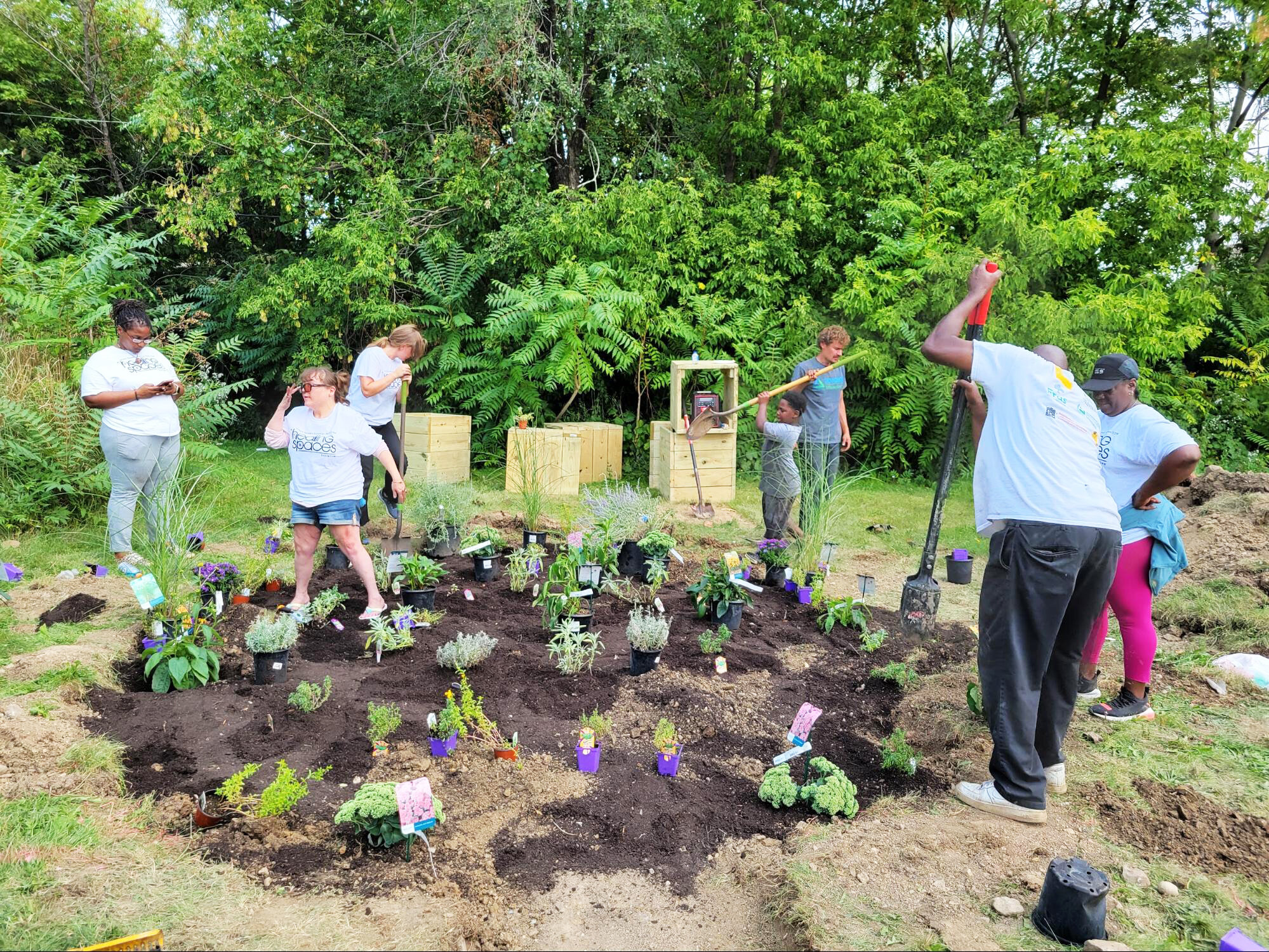
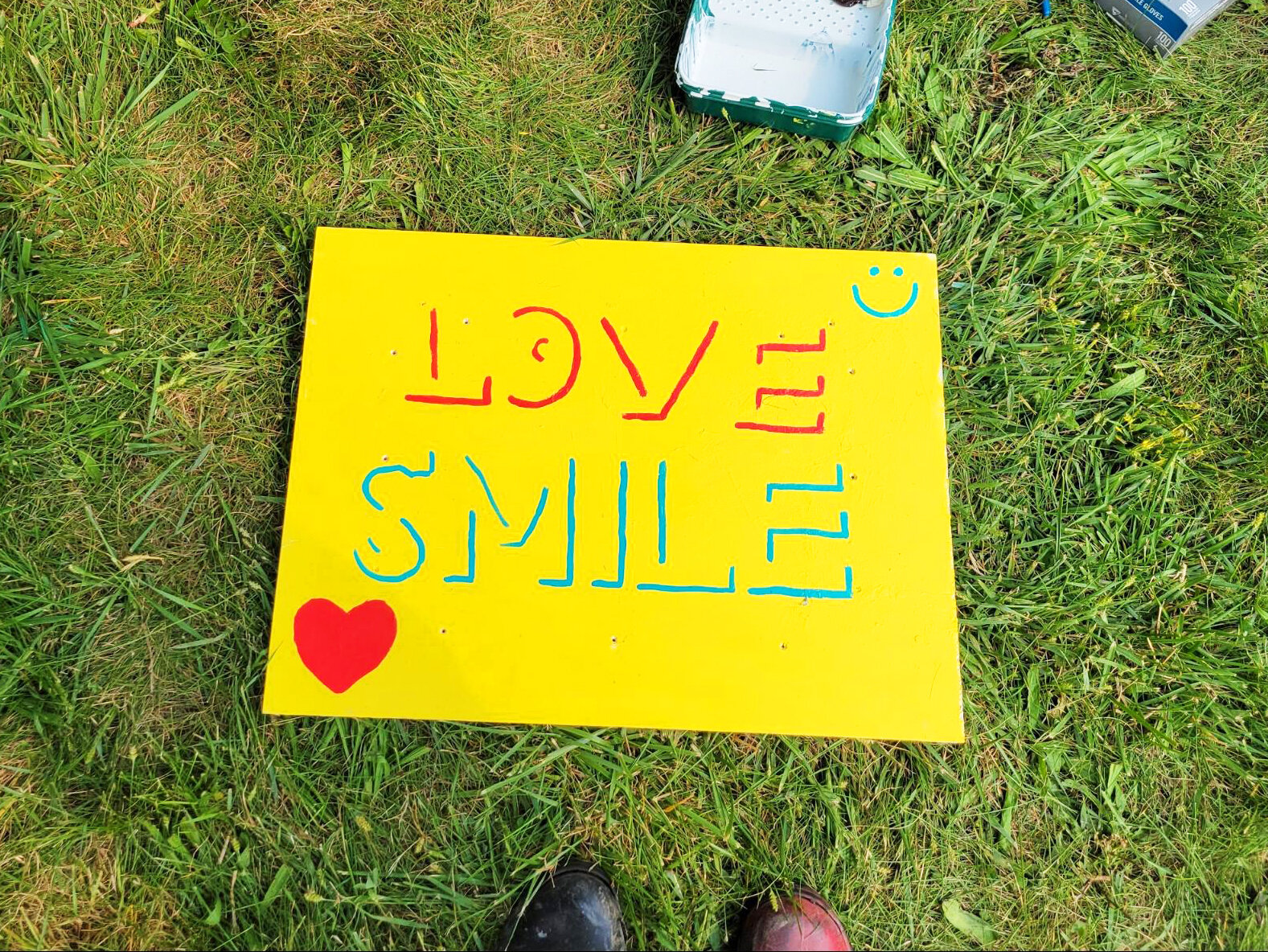
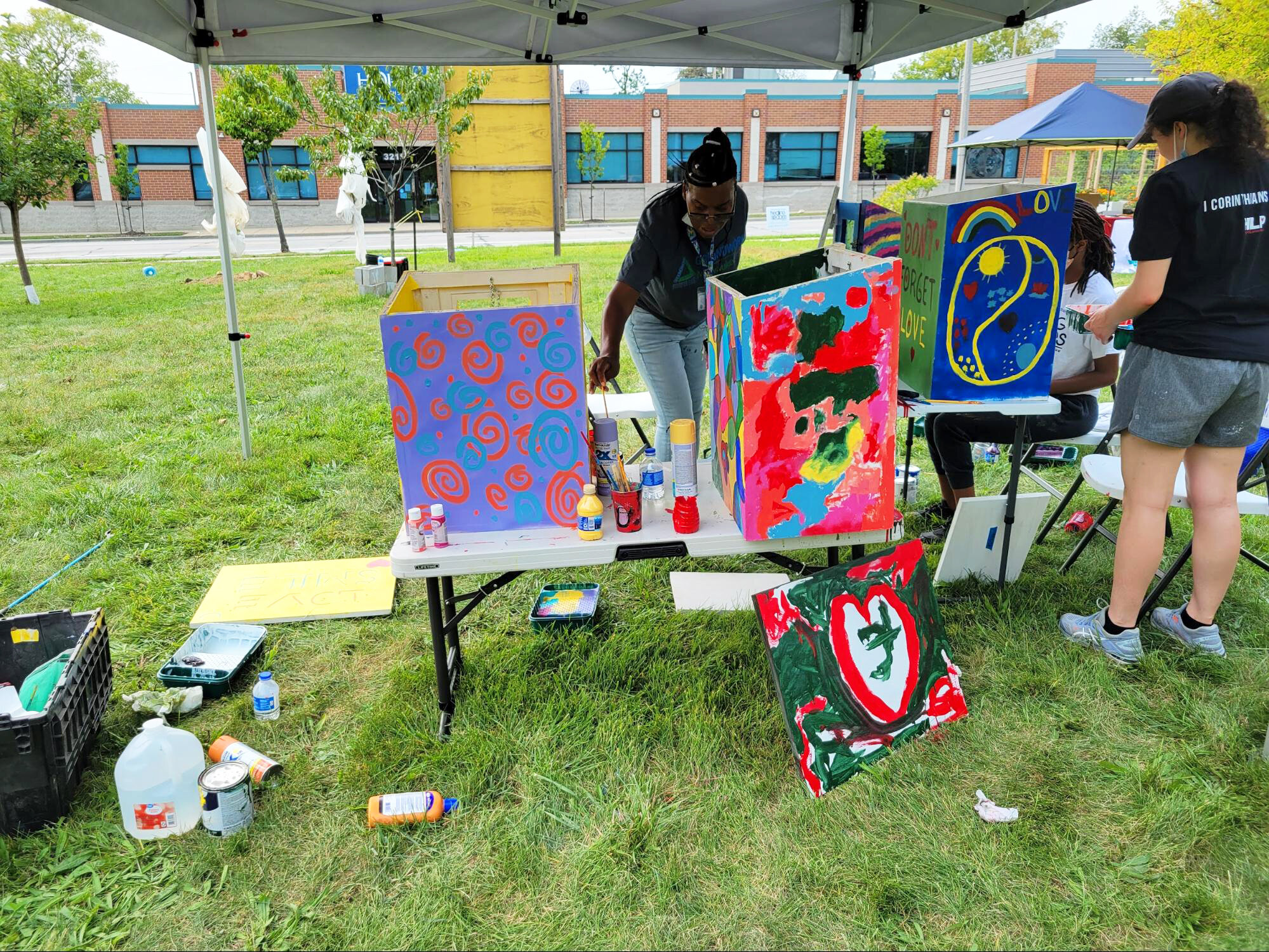
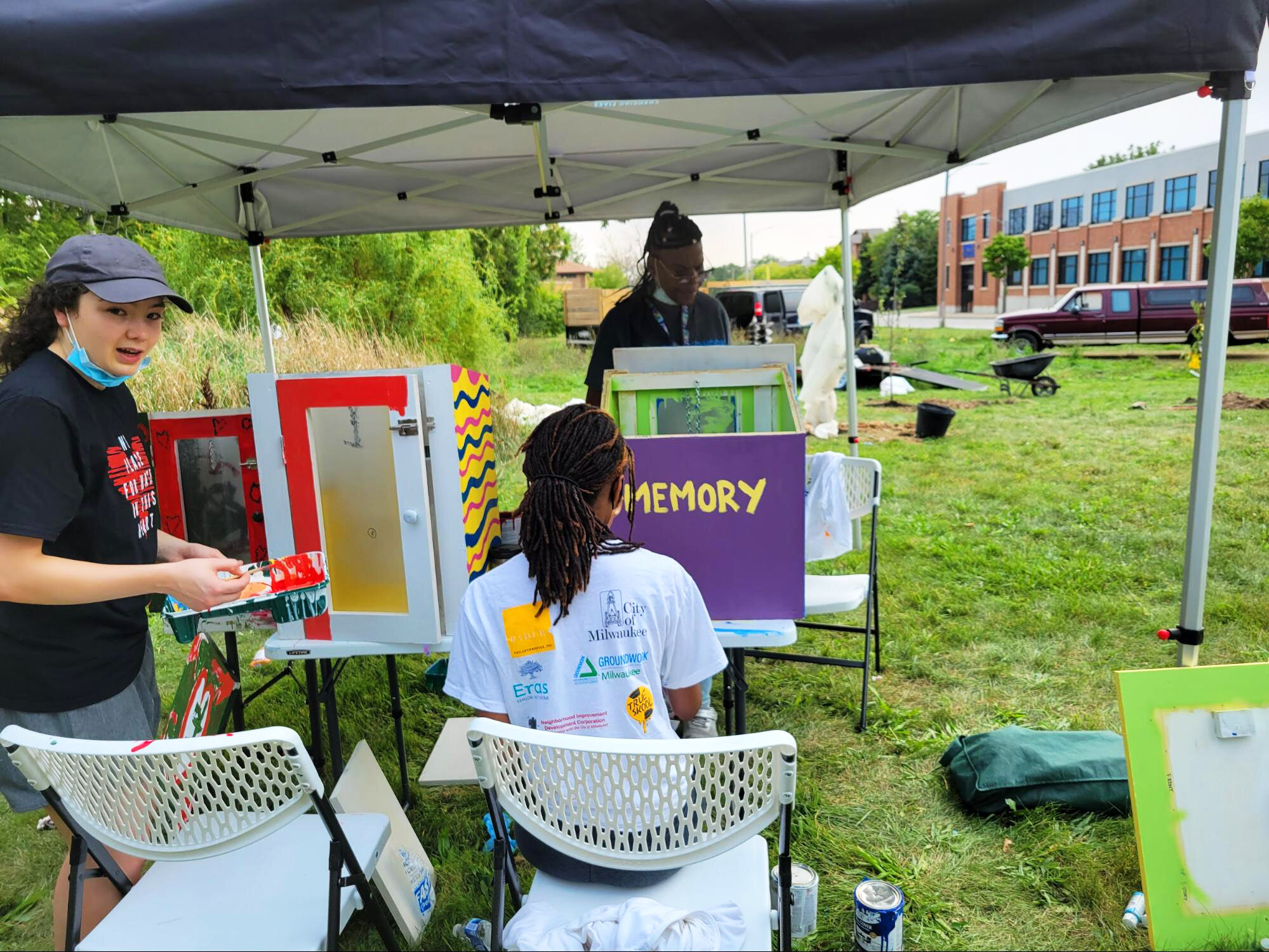
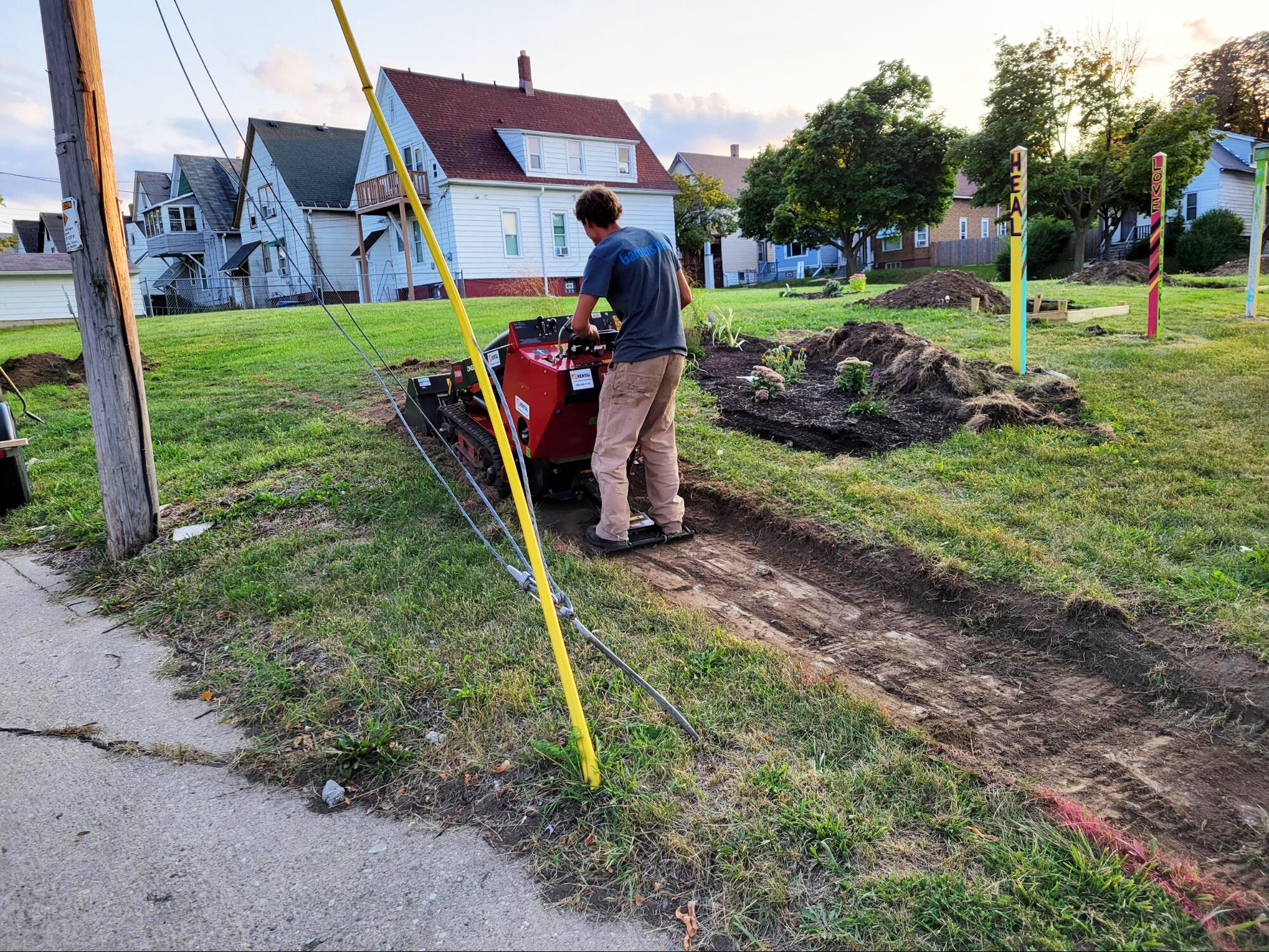
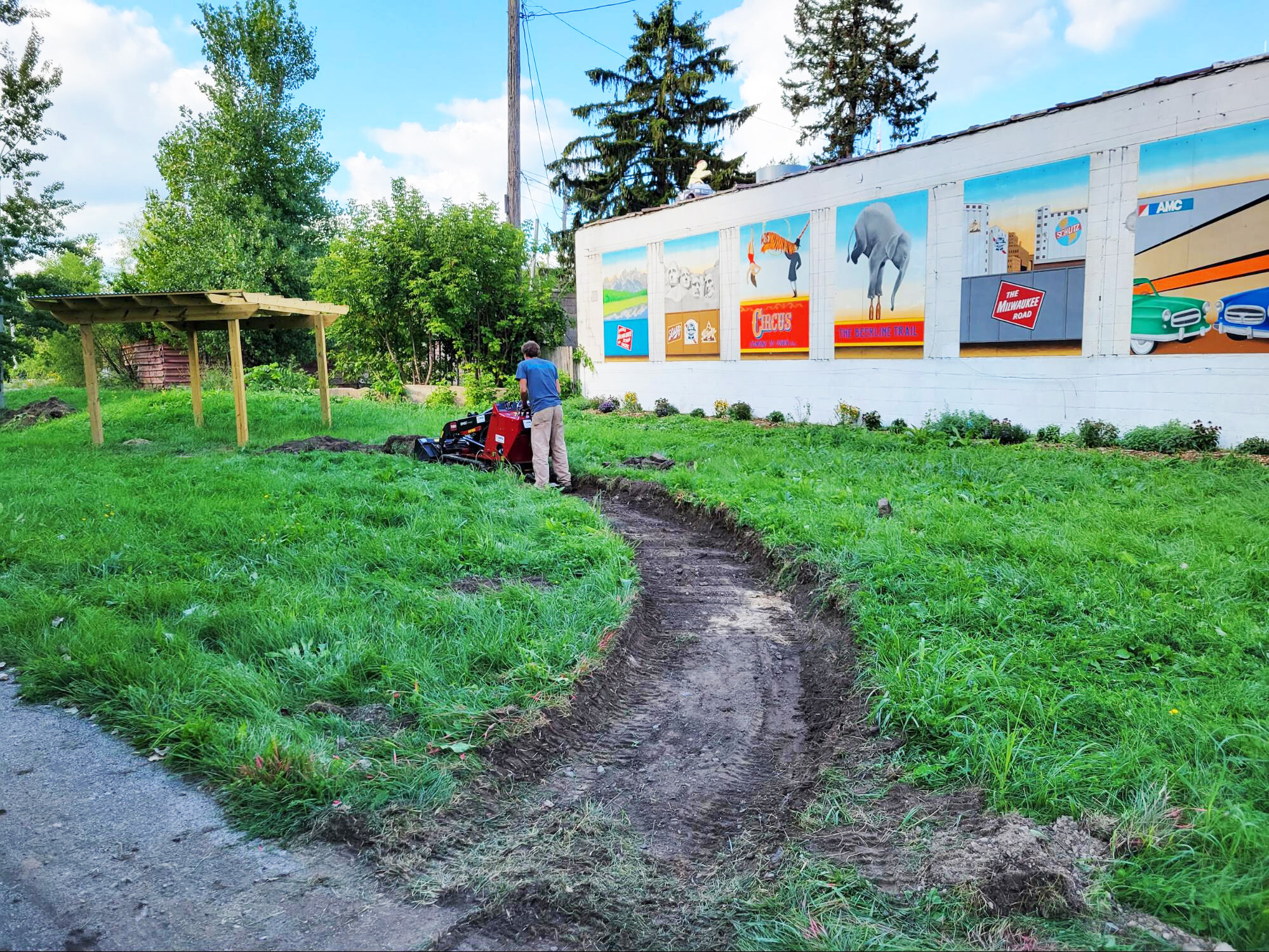
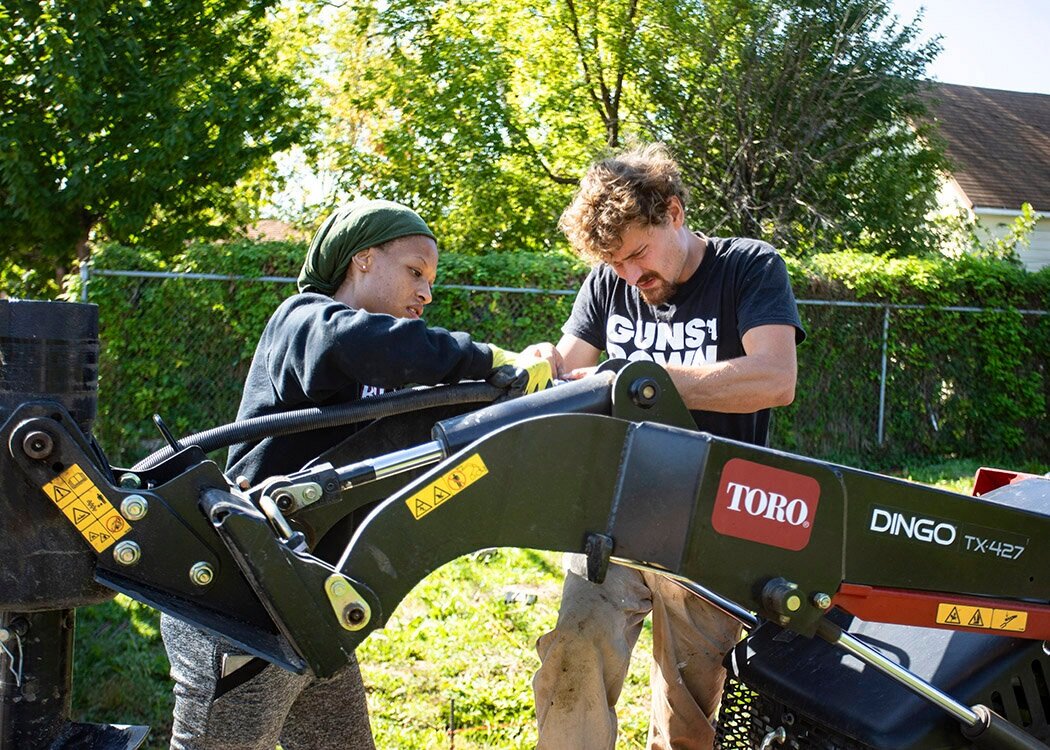
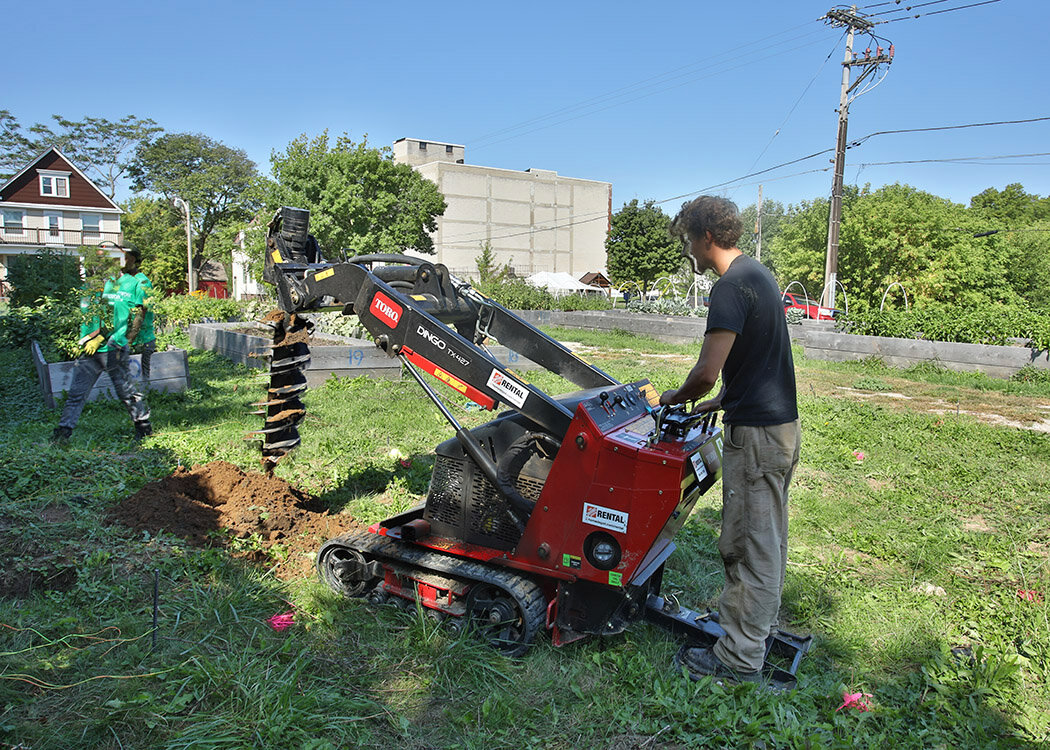
This month as volunteer days for Healing Space Initiative (HSI) sites begin to wrap up, the Ground Corps has continued construction for HSI sites, beginning pathway and patio excavation at Beerline Trail, Harambee Tot Lot, Richards Sculpture Garden, and Peace Park. Our team, along with Harambee community members and Eras Senior Network, were able to plant more than 100 perennials and six fruit trees between three volunteer days at Peace Park, Adams Park and the playground on 1st and Wright. We were also able to begin construction for the much anticipated MacCannon Brown Homeless Sanctuary. Plans for the sanctuary, designed by Nagel Architects, includes a rainwater catchment structure capable of catching 1000 gallons of fallen rainwater.
Newsletter, August 2021
Health Hubs! Healing Spaces! Green Team! Young Farmers! All of our programming is in full swing, and it’s all here for you to explore. Watch for opportunities to get involved. Click the tiles below for program-specific updates or just scroll down to read everything.
Health Hubs! Healing Spaces! Green Team! Young Farmers! All of our programming is in full swing, and it’s all here for you to explore. Watch for opportunities to get involved. Click the tiles below for program-specific updates or just scroll down to read everything.
HEALTH HUBS
This past month, our Community Garden Health Hubs hosted yoga and planting workshops galore. We led ten classes in total across our six Health Hub sites on topics related to garden pests, soil health, and composting systems. We’re very excited that we’ve secured funding to continue season extension and indoor growing workshops from now until January. Watch for upcoming events on social media and on the Health Hubs page of our website.
Upcoming Health Hub Workshops
If you’re interested in participating in Health Hub programming, we’d love to see you in the gardens! Check-out the list below for upcoming Health Hub events.
Want to participate in Health Hub programming?
If you live near one of our Community Garden Health Hubs and would like to participate in healthy outdoor programming, fill out this form to let us know what types of activities you’d like to see in the gardens. We would love to see you there!
GARDEN NETWORK
We’re proud to support our inspiring gardeners and look forward to working together as the season continues. There are a lot of volunteer opportunities in the next month. Keep an eye out for weekly opporutnities on our Volunteer Sign-Up page and social media.
Compost Crusader Discount
We are excited about a new collaboration with Compost Crusaders! Compost Crusaders is offering discounted compost to gardens or partners affiliated with Groundwork Milwaukee. Compost will be discounted from $35 per yard to $30 per yard for orders of 3 yards or more.
Garden Network Volunteer Opportunities
We’ll be hosting volunteer work days at the below times on a weekly basis. View our sign-up page for specific times and locations.
KILBOURN GARDEN
On August 12th, we organized a day of support with approximately 20 incoming first year medical students at the Medical College of Wisconsin. They assisted us with various tasks at Kilbourn Garden including making new number labels for beds, sealing garden signs, mowing, compost management, and debris removal. For the Medical College of Wisconsin, the goal of this service program is to send their students into the community with an upperclassman mentor to learn about the city and get to know populations they will soon be serving as physicians.
Volunteer
Each Thursday at Kilbourn, we host a volunteer workday to keep the garden looking fresh throughout the season. Thanks to all the volunteers who have helped us to keep the space tidy so far this season. If you’d like to come help out, follow the link below and sign-up for a ‘Weekly Kilbourn Workday’ time slot.
Maglio Farm
The height of harvest season is upon us! We are surrounded by huge squash and bright red tomatoes. In July we harvested more than 2,000 pounds of fresh produce! All of it was donated to local food pantries. Thank you to all of our hardworking and dedicated volunteers. We truly could not do this without you!
Volunteer
If you’re interested in supporting the Maglio Farm, follow the link below to see available work opportunities. This work depends heavily on volunteers. Thank you for dedicating your time and energy toward healthy eating and food sovereignty in Milwaukee!
shared harvest
Fruit Gleaning
Season’s gleanings, everybody! Fruit gleaning season is upon us. We’ll be gleaning on Tuesdays and Fridays (5:30pm-7:30pm), August through September. Fruit is donated locally and volunteers are encouraged to bring as much home as they’d like. Sign up at the link below. Select the ‘Fruit Picking (Gleaning)’ slots and we’ll reach out to coordinate the rest.
Register a Fruit Tree
Did you know we’ll harvest your fruit as well as your veggies! Register a fruit tree with us today and we’ll organize a crew of volunteers to come save those cherries, apples and pears from going to waste. We’ll rescue your fruit and bring it to a local food pantry. Register your tree at the link below.
Fresh Food Connect
Does your home garden have too many zucchinis? Overgrown collards? An abundance of kale?! We can help you donate it! If you’re a backyard gardener and would like to donate your extra garden produce to local food pantries, sign-up for Fresh Food Connect and our volunteer couriers will come pick-up your donation once a week. To sign-up, download the Fresh Food Connect app from the app store and create an account.
Urban Waters
Week 6 of Green Team was designated WATER WEEK! We did a week's worth of water-based curriculum and activities. This included rainwater harvesting system education, water quality testing, trash pickup along Lincoln Creek, and a water challenge (drinking enough water throughout the week). The Green Team tested water quality along the Milwaukee River at Estabrook Park. They tested for temperature, turbidity, dissolved oxygen, and identified different classes of macroinvertebrates. At Lincoln Creek, a tributary of the Milwaukee River, the Green Team collected litter. They collected roughly 1,400 pieces of trash! The crew also learned about the importance of green infrastructure like rain barrels and rainwater harvesting systems and discussed other ways that our garden network leaders obtain water for their spaces (fire hydrant permits and nearby houses with outdoor spigots). The week finished with a tour of the MMSD wastewater treatment plant on Jones Island. It was stinky, but the team perked up a bit when they learned they could start at $35/hour with a high school diploma.
YOUNG FARMERS
Sherman Park
The end of July marked the end of Young Farmers for the two groups of Boys & Girls Clubs members growing at Sherman Park: Mary Ryan Boys & Girls Club and Milwaukee Academy of Sciences Boys & Girls Clubs. Over the six week training, youth learned about planting, caring for their plants, and, of course, how to safely harvest, wash and cook what they grew. The Young Farmers tasted all kinds of new fresh flavors. Some of their favorites were sour cherries, chocolate mint, kale chips, and mulberries. They really enjoyed cooking together!
Cherry Street Community Garden
Young Farmers at the Cherry Street Community Garden learned to test soil for nitrogen, potassium, phosphorus and pH level. They also learned to use special tools to remove the pits from and caramelize cherries. Obviously, when they were done, they tested out the final product on some ice cream!
Thurston Woods Community Garden
The Thurston Woods Young Farmers have been hard at work taking care of their beans, squash and pepper plants. They planted 30+ flower plants in five of their raised beds. They also learned to prime the inside of the raised beds by carefully removing any soil and applying primer with a sponge brush. With each painter at their station, they completed the priming of three beds in the record time of 10 minutes!
GREEN TEAM
Green Team has officially ended for the 2021 season. We had a great time with our crew and wish them all the best as they head back to school. Some highlights from the summer were: hiking through Havenwoods Forest and learning about the importance of physical activity for our mental and long term health; learning about resume and cover letter writing from Groundwork Milwaukee’s Deputy Director of Programming and Operations, Damien DeBuhr; learning about remote sensing and how it can be a tool to address environmental injustice from NASA scientists with help from Groundwork Milwaukee’s Deputy Director of GIS, Lawrence Hoffman; meeting artist, Akira Yashema Mabon, who taught the crew how art can be a catalyst for social change; and, on the final day, they all played basketball and went to the beach. To hear about the Green Team’s experience this summer directly from the crew, check out the Green Team Blog 2021.
GROUND CORPS
Ground Corps completed monthly maintenance at the bioswales early in the first week of the month and ended that week with nearly all of our Ground Corps receiving limited CPR AED training. The team is now certified for one year. This month we were able to begin construction on three Healing Spaces Initiative sites (All Peoples Church, Solomon Church and Harambee Tot Lot on 1st and Keefe) digging pathways and erecting structures for shade sails. We also painted little libraries scheduled to be delivered to other Healing Space Initiative locations and planted 30+ perennials with the help of members of the NDIC and Eras Senior Network volunteers.
Newsletter, July 2021
June was another busy month for the Groundwork Milwaukee crew. We provided direct support through infrastructure improvement, programming and volunteer workdays to more than 14 of our garden locations and so much more. Thank you to all the supportive community members and volunteers that have made invaluable contributions! Scroll down to learn more. Watch for opportunities to get involved! Click the tiles below for program-specific updates or just scroll down to read it all.
June was another busy month for the Groundwork Milwaukee crew. We provided direct support through infrastructure improvement, programming and volunteer workdays to more than 14 of our garden locations and so much more. Thank you to all the supportive community members and volunteers that have made invaluable contributions! Scroll down to learn more. Watch for opportunities to get involved! Click the tiles below for program-specific updates or just scroll down to read it all.
HEALTH HUBS
Groundwork’s Health Hub programming is in full swing. We’ve been providing educational opportunities at Health Hub gardens. Our Food Systems Specialist, Samson has been holding training events at the gardens. Below are a few great photos from these events as well as a list of upcoming gardening and yoga workshops being held at Health Hub gardens in the near future.
Upcoming Health Hub Workshops
If you’re interested in participating in Health Hub programming, we’d love to see you in the gardens! Check-out the list below for upcoming Health Hub events.
Want to participate in Health Hub programming?
If you live near one of our Community Garden Health Hubs and would like to participate in healthy outdoor programming, fill out this form to let us know what types of activities you’d like to see in the gardens. We would love to see you there!
GARDEN NETWORK
Last month Groundwork provided direct support through volunteer workdays or original programming to 14 gardens in the Garden Network, including: Peace Park, Uptown Crossing, Kilbourn, Discovery World, Maskani Gardens, Beauty from the Root Healing Garden, Thurston Woods, We Got This, Cherry Street Garden and Scooters Garden of Hope. We’re proud to support our inspiring gardeners and look forward to working together as the season continues. Here are a few of the highlights from last month.
Planting at Maskani Apartment Gardens
With help from residents we held a community event for the Maskani Apartment Gardens. We turned over the soil in garden beds, added new soil and planted various plants such as tomatoes, peppers, sunflowers, and squash. Over a dozen residents and their families came out to enjoy the nice weather and plant with us!
Vel R. Phillips Block Beautification
On June 5th, we partnered with Safe and Sound and local residents of the 3800 block of Vel R. Phillips Avenue to orchestrate a neighborhood-wide clean up and beautification. Groundwork Milwaukee volunteers worked with residents of the block to cut their grass, remove debris and trash and plant beautiful flowers along all of the homes.
Compost Crusader Discount
We are excited about a new collaboration with Compost Crusaders! Compost Crusaders is offering discounted compost to gardens or partners affiliated with Groundwork Milwaukee. Compost will be discounted from $35 per yard to $30 per yard for orders of 3 yards or more.
Garden Network Volunteer Opportunities
We’ll be hosting volunteer work days at the below times on a weekly basis. View our sign-up page for specific times and locations.
KILBOURN GARDEN
Each Thursday at Kilbourn, we host a volunteer workday to keep the garden looking fresh throughout the season. Thanks to all the volunteers who have helped us to keep the space tidy so far this season. If you’d like to come help out, follow the link below and sign-up for a ‘Weekly Kilbourn Workday’ time slot.
Maglio Farm
We’re entering a full harvest season! We’ve been picking peas & beans for a few weeks now, and are just entering harvests of zucchini, cucumber, and tomatoes!
As always, our “harvest help” shift is a great way to come out to the farm if your time is short.
shared harvest
We’re six weeks into our food rescue program Shared Harvest. Combining gleaned produce (produce rescued from backyard gardens) with harvest supplemented from our farm, that’s 180 lbs of produce donated to local food pantries together.
Fresh Food Connect
Does your home garden have too many zucchinis? Overgrown collards? An abundance of kale! We can help you donate it! If you’re a backyard gardener and would like to donate your extra garden produce to local food pantries, sign-up for Fresh Food Connect and our volunteer couriers will come pick-up your donation once a week. To sign-up, download the Fresh Food Connect app from the app store and create an account.
Register a Fruit Tree
Did you know we’ll harvest your fruit as well as your veggies! Register a fruit tree with us today and we’ll organize a crew of volunteers to come save those cherries, apples and pears from going to waste. We’ll rescue your fruit and bring it to a local food pantry. Register your tree at the link below.
Urban Waters
In June, we planted nearly 300 plants from MMSD’s annual plant sale! We also installed two pollinator garden beds at Kilbourn Garden and another perennial garden was planted at Village Roots in Bay View.
Milwaukee River Water Monitoring in Estabrook Park
This year, Groundwork Milwaukee is partnering with Milwaukee Riverkeeper to monitor the quality of our waterways. We monitored our section, near Estabrook Park, with the help of Rebecca from Milwaukee Riverkeeper in May. These were our first samples of the season.
Seeking Youth Water Monitors
We are looking for a youth group that may be interested in monitoring with us the last week of August. Reach out to jacelia@groundworkmke.org for more information!
GROUND CORPS
This month The Ground Corps began working on the first of 10 Healing Spaces to be constructed throughout the city from now through September. On Saturday, July 10th, with the help from some phenomenal volunteers we began to revitalize a portion of the Beerline Trail near Holton and Townsend. A Pergola was constructed, 40 perennials were planted, and the frames for what will be two garden bed benches were built. We expect to begin work on another healing space along the Beerline Trail next week. During this month we have also started a farmstand and rainwater catchment structure at Scooters garden and constructed five additional garden beds on site, while continuing to wrap up construction on the outdoor kitchen at We Got This on 9th and Ring. This week the outdoor triple burner stove for the kitchen arrived for pick up and we managed to find a free sink perfect for the kitchen donated to us by one of our Riverwest neighbors.



Newsletter, June 2021
We got so much done in May! We hosted Health Hub plantings and cook-outs, built a lot of infrastructure for the Garden Network and harvested 428 pounds of food at the Maglio Farm! Scroll down to learn more. Watch for opportunities to get involved! Click the tiles below for program-specific updates or just scroll down to read it all.
We got so much done in May! We hosted Health Hub plantings and cook-outs, built a lot of infrastructure for the Garden Network and harvested 428 pounds of food at the Maglio Farm. Thank you to all the supportive community members and volunteers that have made invaluable contributions! Scroll down to learn more. Watch for opportunities to get involved! Click the tiles below for program-specific updates or just scroll down to read it all.
HEALTH HUBS
Last month in our Community Garden Health Hubs, we hosted major garden builds, plantings and cook-outs. Along with garden leaders, volunteers, and our Ground Corps, we built five garden beds, a new compost structure and new platforms for rainwater tanks. Thanks to Tricklebee Cafe who donated lunch for all the workers!
At Thurston Woods Community Garden, Ground Corps built a much anticipated rainwater structure and three new ADA accessible beds. Neighbors were excited to see this new addition and impressed with the speed of the Ground Corps crew.
We also hosted a planting and cook-out event at Scooter’s Garden of Hope. Thanks to Chef Martin of Unsalted Life for his creative healthy cooking lessons and delicious food!
Upcoming Health Hub Yoga Sessions
We’re excited to announce that we will be hosting weekly yoga sessions at our Community Garden Health Hubs throughout the summer. Emily McDoniels of SoulShine Yoga will be leading all sessions. Sessions will rotate between Peace Park Community Garden, Uptown Crossing Community Garden and Hilltop Community Garden. Follow the link below to see all times and dates.
Want to participate in Health Hub programming?
If you live near one of our Community Garden Health Hubs and would like to participate in healthy outdoor programming, fill out this form to let us know what types of activities you’d like to see in the gardens. We would love to see you there!
GARDEN NETWORK
There’s so much going on in the Garden Network. Last month, we added another garden to the network, prepared our huge urban farm at 26th and Clybourn for planting and collaborated with Walnut Way to do the same at their location. We also made infrastructure updates to a number of gardens including, Mulberry Urban Eden, Solomon Community Garden, Historic Walnut Hill and the Young Farmers Garden at Mary Ryan Boys & Girls Club in Sherman Park. Check out the pictures below from this eventful month.
New Garden Alert
Yet another new garden joined the network this month. Welcome, St. Mark AME Church to the Milwaukee Grows Garden Network! We look forward to growing together!
Compost Crusader Discount
We are excited about a new collaboration with Compost Crusaders! Compost Crusaders is offering discounted compost to gardens or partners affiliated with Groundwork Milwaukee. Compost will be discounted from $35 per yard to $30 per yard for orders of 3 yards or more.
Garden Network Volunteer Opportunities
We’ll be hosting volunteer work days at the below times on a weekly basis. View our sign-up page for specific times and locations.
KILBOURN GARDEN
Each Thursday at Kilbourn, we host a volunteer workday to keep the garden looking fresh throughout the season. Thanks to all the volunteers who have helped us to keep the space tidy so far this season. If you’d like to come help out, follow the link below and sign-up for a ‘Weekly Kilbourn Workday’ time slot.
Maglio Farm
The sun is out and the hoop house sides are rolled up at the Maglio Farm. We’re entering peak production months and need all the help we can get!
The last of the winter greens were ripped out, and as of this Saturday, June 5th, all beds are planted with new summer crops. Get ready for the bounty - peas, tomatoes, cucumbers, and more. Join us for weeding, harvesting, or for this month’s garden workshop!
May Harvest
COMPOST WORKSHOP
This month’s workshop is on composting. Learn to turn your organic waste into super soil with Samson Srok. Follow the link to register in advance.
shared harvest
June is here! That means we’ve kicked off our Shared Harvest programming. If you’re a backyard gardener and would like to donate your extra garden produce to local food pantries, sign-up for Fresh Food Connect and our volunteer couriers will come pick-up your donation once a week. To sign-up, download the Fresh Food Connect app from the app store and create an account.
Urban Waters
Adopt-a-River Annual Spring Clean-Up
Groundwork Milwaukee has partnered with Milwaukee Riverkeeper to adopt a section of Lincoln Creek between Hopkins and Sherman. In April, we collaborated with Milwaukee Riverkeeper to lead the annual clean-up kickoff! We filled 15 contractor bags with trash, and removed street signs and tires from the creek. A huge thank you to our tremendous volunteers who brought energy and joy to the event. We appreciate you! Thank you to all the community members who stopped to let us know the space was looking great. We look forward to our continuing stewardship of this tributary with Milwaukee Riverkeeper!
Please, come join us on June 26th from 9:00 a.m. to 11:30 a.m. for our next clean up event. Find more details below.
Prairie Planting at Lakeshore State Park
A huge thank you to everyone who participated in our prairie planting extravaganza with the Friends of Lakeshore State Park! We transplanted 1,052 prairie grasses and flowers along the Hank Aaron Trail. We couldn’t have done it without all your help, thank you!
Milwaukee River Water Monitoring in Estabrook Park
This year, Groundwork Milwaukee is partnering with Milwaukee Riverkeeper to monitor the quality of our waterways. We monitored our section, near Estabrook Park, with the help of Rebecca from Milwaukee Riverkeeper in May. These were our first samples of the season.
Seeking Youth Water Monitors
We are looking for a youth group that may be interested in monitoring with us the last week of August. Reach out to jacelia@groundworkmke.org for more information!
GROUND CORPS
Welcome, Bree!
In May, Bree joined Groundwork Milwaukee as the Ground Corps Crew Leader. In her short time with us, she has already brought a ton of energy and support to our field operations. Welcome to the team, Bree!
Newsletter, May 2021
Groundwork Milwaukee has been working hard! April was a very eventful month. We held Health Hub kick-off events, led garden cluster and adopt-a-river clean-ups and grew 638 pounds of food! Scroll down to learn more. Watch for opportunities to get involved! Click the tiles below for program-specific updates or just scroll down to read it all.
Groundwork Milwaukee has been working hard! April was a very eventful month. We held Health Hub kick-off events, led garden cluster and adopt-a-river clean-ups and grew 638 pounds of food! Scroll down to learn more. Watch for opportunities to get involved! Click the tiles below for program-specific updates or just scroll down to read it all.
HEALTH HUBS
Last month we held Health Hub kick-off events in participating gardens. Kick-offs took place at Scooter’s Garden of Hope, Thurston Woods, Peace Place and Hillside Garden. We were thrilled to have to the opportunity to work with residents to prepare these gardens for the upcoming growing season. We were also proud to facilitate a cooking class in partnership with HeartLove Place at We Got This garden with Chef Martin of Unsalted Life as part of our Health Hub programming. Look for more programming like this in coming months. Check out these great pics we snapped in the Health Hubs!
Scooter’s Garden of Hope
Thurston Woods
Peace Place
Uptown Crossing
We Got This
Health Hub Planting & Cooking Event - May 21st
Join us at Scooters Garden of Hope for an afternoon of planting and cooking fun! We’ll be planting vegetables, herbs, and flowers in community garden beds between 3:00pm and 4:30pm. There’ll be a cooking demonstration from Chef Marvin between 4:30pm-6:00pm. Pre-register to guarantee a plate for the cooking demonstration by calling 414-763-9947 ext. 1009.
No experience required. Come prepared to work outside. We look forward to seeing you there!
Scooters Garden of Hope
2462 N. Buffum Street
May 21st, 3:00pm-6:00pm
Want to participate in Health Hub programming?
If you live near one of our Community Garden Health Hubs and would like to participate in healthy outdoor programming, fill out this form to let us know what types of activities you’d like to see in the gardens. We would love to see you there!
GARDEN NETWORK
Garden Welcome Signs
Over the past couple months, volunteers have created 45 welcome signs for our Milwaukee Grows Garden Network. This project has been a hit with volunteers and garden leaders alike. This month, we began installing them in Groundwork Gardens. Cherry Hill Garden was among the first gardens to receive its new welcome sings. While we were there, we helped prepare the garden for the growing season.
Neighborhood Cluster Clean-Up
In April, we were able to lead our first Neighborhood Cluster Clean-Up. A group of volunteers joined us at four of our gardens in the Midtown and Walnut Hill neighborhoods. We filled 15 bags of debris and got them picked up by the City of Milwaukee’s Project Clean & Green. Thank you volunteers!
More New Gardens!
We have more new gardens to introduce this month! Riverview Community Garden joined the Milwaukee Grows Garden Network and kicked-off their growing season with a work day. We are also very excited to announce that Walnut Way Conservation Corps has joined the network. We look forward to working together toward a greener more equitable Milwaukee!
Milwaukee Seed Library
A Seed library program will be launching soon in Milwaukee. The Seed Library program will be similar to the Little Free Library "take a book, leave a book" model. Gardens are free to start their own seed library, which they can register with the Milwaukee Seed Library, so community members can find seed library locations. A website will be launching soon, but for more information or to register a seed library, please contact milwaukeeseedlibrary@gmail.com
Compost Crusader Discount!
We are excited about a new collaboration with Compost Crusaders! Compost Crusaders is offering discounted compost to gardens or partners affiliated with Groundwork Milwaukee. Compost will be discounted from $35 per yard to $30 per yard for orders of 3 yards or more.
Garden Network Volunteer Opportunities
We’ll be hosting volunteer work days at the below times on a weekly basis. View our sign-up page for specific times and locations.
Walnut Way Campus Lift Up 2021
Come support our newest Garden Network members, Walnut Way Conservation Corps this Thursday, May 13th, 9am-1pm at 2240 N. 17th St. We’ll be building rows of soil, planting seeds and cleaning up the block. Sign up here.
KILBOURN GARDEN
All beds at Kilbourn Garden have been reserved for the 2021 season. Thank you to all our gardeners for registering. We look forward to seeing the fruits and vegetables of your labor!
Maglio Farm
We’re so excited for summer, we wet our plants! April was filled with some incredible volunteer days. We’ll continue to plant all May long. Come join us!
April Harvest
Art at the Maglio Farm
We’re excited to host family-focused events at the garden this May! We’re launching our raised bed youth education garden at the farm. If you have a youth group that’s interested in visiting the farm, email urbanfarm@riverwestfoodpantry.org and we’ll coordinate with you to offer hands-on urban agriculture education for youth.
Workshop: Addressing Insects & Disease in your Home Garden
Join us June 4th for our monthly gardening workshop at the Maglio farm. We’ll cover ecologically conscious ways to address insects and disease in your home garden.
Volunteer Hours
Planting has already begun at the Maglio Farm! Starting this April 6th, we’re officially launching our growing season hours. We’re out at the farm four days a week and need all the help we can get! Our harvest help shift is great for folks who want to support our work, but can’t commit to a full workday. It’s also the most family-friendly activity on the farm!
shared harvest
We’re looking for Fresh Food Connect couriers! Are you interested in picking up donated produce from your fellow Milwaukeeans? We’d ask you to collect once a week and bring the produce to us during one of our specified times. Groundwork then delivers the produce to local food pantries. Learn more on our Shared Harvest page. If your interested, email samson@groundworkmke.org or sing up for an upcoming orientation.
Urban Waters
Adopt-a-River Annual Spring Clean-Up
Groundwork Milwaukee has partnered with Milwaukee Riverkeeper to adopt a section of Lincoln Creek between Hopkins and Sherman. In April, we lead the annual clean-up kickoff! We filled 15 contractor bags with trash, and removed street signs, tires and a car bumper from the creek. A huge thank you to our tremendous volunteers who brought energy and joy to the event. We appreciate you! Thank you to all the community members who stopped to let us know the space was looking great. We look forward to our continuing stewardship of this tributary with Milwaukee Riverkeeper!
Please plan to join in the fun at our next clean-up on June 26th, 9:00am-11:30am (sign-up details yet to be published). Individuals and groups are welcome. Bring everyone you know! Let’s keep our waterways clean.
Friends of Lakeshore State Park Prairie Planting Extravaganza!
The Friends of Lakeshore State Park are happy to see all visitors using the park this spring already! The Friends and donors have provided funding to assist with restoration of Lakeshore’s second largest prairie. Known by DNR staff as Fox Prairie. This area is on the Lake Michigan shoreline and just south of the marina. DNR staff have been busy prepping the site and laying native prairie seed. 1,052 plant plugs have been ordered for the planting. We need your help getting them in the ground, and are looking for 15 volunteers to work alongside the Friends and Groundwork Milwaukee crew for each shift. Sign up for one or multiple plantings!
We will be meeting at Lakeshore’s marina. 3-hr street parking is available near the north entrance on Harbor St. and Clybourn St., or at the south entrance near the Milwaukee Pierhead Lighthouse. Masks are required when social distancing is not possible, and we will be breaking up into small groups. Participants are encouraged to bring their own hand sanitizer, work gloves and spade or hori hori knife. A limited amount of loaner supplies will be available.
Saturday, May 22nd: 11am-1pm
Saturday, May 22nd: 1pm-3pm
Friday, May 21st: 11am-1pm
Friday, May 21st: 1pm-3pm
If you’re interested in volunteering at one of these plantings, sign up here!
Youth Green Literacy
Our Craig Montessori Green Literacy students have been operating a Mother’s Day Plant Sale internally at the school. They’re selling the plants they grew themselves! Students prepared promotional materials and spread the word at the school. They also priced each plant based on the effort it took to grow, its size, health and decoration. Plants are being sold at the school to staff and parents. Everyone is having a lot of fun with this event!
Today was our last day with our students at Craig. We had a celebration to recognize the students’ hard work. Part of the celebration was a meme-making exercise. Students made memes based on plant-related prompts. This is the one that made us laugh the hardest. They turned Elena into a meme!
Newsletter, April 2021
Groundwork Milwaukee is gearing up for the growing season. Below is a recap of what we did in March and what we’ll be working on in the near future. In April, we’re looking forward to our Community Garden Health Hub kick-off events which are underway in participating gardens. We’re also excited to lead the annual clean-up of Lincoln Creek with community partners - just to name a few events. There’s so much going on! Come join us!
Groundwork Milwaukee is gearing up for the growing season. Below is a recap of what we did in March and what we’ll be working on in the near future. In April, we’re looking forward to our Community Garden Health Hub kick-off events which are underway in participating gardens. We’re also excited to lead the annual clean-up of Lincoln Creek with community partners. There’s so much going on! Come join us! Click the tiles below for program-specific updates or just scroll down to read it all!
HEALTH HUBS
Last Friday, Groundwork Milwaukee kicked off its Community Garden Health Hub programming with We Got This and Running Rebels. Participating in urban gardening can have the effect of improving the number of servings of fresh food eaten, number of hours spent engaged in moderate physical activity, and the number of positive social interactions for gardeners. Studies have shown that when people engage in more of these activities they also reduce their risk factors for chronic disease. Gardens designated as Health Hubs will be provided intensive support and guidance for gardeners over the coming season. Groundwork plans to lead trainings on planting, preparing, and preserving fresh food through in-person and virtual, cohort based activities. Join us for upcoming Health Hub kick-offs.
Health Hub Kick-Off Events
*UPDATE: Both of these events were originally scheduled for April 10th, but have been rescheduled for April 17th due to rain on the original date.
Uptown Crossing Garden
2321-25 N 45th Street
Saturday, April 17th
2:00pm-5:00pm
Peace Place Garden with Heartlove
3240-48 N Martin Luther King Drive
Saturday, April 17th
9:00am-12:00pm
GARDEN NETWORK
Garden Welcome Signs
Over the past couple months, volunteers have created 45 welcome signs for our Milwaukee Grows Garden Network. This project has been a hit with volunteers and garden leaders alike. This month, we will begin placing them at our 80+ sites to welcome community members to the spaces!
New Gardens
Shout out to our new gardens! Last month, Solomon Community Temple and NIA Purpose Garden joined the Milwaukee Grows Garden Network. We can’t wait to see what you’ll grow in your new green space!
Neighborhood Cluster Clean-Up
*THIS EVENT HAS BEEN CANCELLED*
Please check back at a later time for more information on Cluster Clean-Ups.
Spring cleaning of Groundwork gardens has begun! We’ll be doing Neighborhood Cluster Clean-ups throughout April and May to ready community green spaces within our Milwaukee Grows Garden Network for the growing season. Clean-ups will take place at a series of gardens located within walking distance from one another.
The first clean-up is on Saturday, April 17th from 9am - 2pm in the 53212 zip code. We’ll begin at Summer of Peace Park and Garden (2904 N. 5th St.) and continue southeast to five other sites, ending at Riverwest Garden School (831 E. Clarke St.).
We will have trash bags, leaf bags, garbage pickers and gloves for safe pick-up.
If you are interested in participating, please sign-up at our sign-up genius link, here. Elena Olsen-Valdez, our Volunteer & Community Programs Specialist will follow-up with liability forms and waivers.
Summer of Peace Park and Garden
2904 N 5th Street
Saturday, April 17th
9:00am-2:00pm
Thank You Stein’s Garden & Home!
Thank you to our partners at Stein’s. Their generous gift of seeds, tools and soil supplements will help our gardeners grow this season!
KILBOURN GARDEN
Registration is open for Kilbourn Garden. There are still beds available. Follow the link below to reserve your garden bed today! We look forward to seeing you in the garden!
Maglio Farm
Planting has already begun at the Maglio Farm! Starting this April 6th, we’re officially launching our growing season hours. We’re out at the farm four days a week and need all the help we can get! Our harvest help shift is great for folks who want to support our work, but can’t commit to a full workday. It’s also the most family-friendly activity on the farm!
As we lay the groundwork for a big summer harvest, the greens we cared for this winter have grown mature, and we’ve been able to harvest throughout this March.
shared harvest
A huge thanks to Little Laurentide Farm for dropping off a huge donation (48 lbs!) of salad greens, brought directly to Solomon Community Temple. Do you want to donate produce for Shared Harvest this summer?
Free Seeds
We’re offering *free seeds* for gardeners who commit to donating part of their harvest. Sign up on the Fresh Food Connect app now, or, if you’re not in an activated zipcode, email samson@groundworkmke.org to receive more information on how to pick up seeds.
Free Gardening Workshop
Join us for a free gardening workshop on April 30th at Maglio Farm, open to the public!
Soil Health 101 for Gardeners: Good gardeners grow food, but GREAT gardeners grow soil! We'll break soil science down to plain language, so what you need to know as a gardener.
Friday, April 30th
5:30pm-6:30pm
at Maglio Farm
Urban Waters
Come join Groundwork Milwaukee and Milwaukee Riverkeeper in the Annual Spring Cleanup from 9am-12pm on Saturday, April 24th. We will be hosting the cleanup at Groundwork’s Adopt-A-River site between Sherman Boulevard and Hopkins Street along Congress. Our section is along Lincoln Creek which is a tributary of the Milwaukee River. We will meet on the northwest corner of Congress and Hopkins St, near 3510 West Congress Street. Park on Congress Street on either side of the river. We will supply all necessary gear, just be sure to wear comfortable clothing and durable shoes as there is a steep decline to the creek. Our site is designated as a Class III, meaning there is a lot of cleaning up to do. We will need your help! Register to help by clicking the button below.
Youth Green Literacy
Through generous donations, a SeedMoney Garden Grant, community members’ plant propagation donations and students’ efforts to collect repurpose-able materials, we assembled 50 take-home kits for 6th-8th graders at Craig Montessori! Throughout March, Groundwork Milwaukee has provided experiential learning remotely. Students have learned how to find the best sun in their home, check the moisture level of their plants and how to troubleshoot small issues using their observations.
Sky Schools Wellness Circles
Groundwork Milwaukee is happy to host a Wellness Circle in partnership with SKY Schools Milwaukee. We invite ALL of Milwaukee to join us in this community conversation and empathy-expanding experience. How? Participants are invited to explore areas of their own identity, their wellness needs and the wellness needs of their community using diversity/equity tools and mindfulness/social/emotional learning processes.
Please come join us this Thursday, April 8th from 4:30pm-6:00pm, here.
climate safe neighborhoods
Climate Safe Neighborhoods was mentioned in the media again. This time in Yale Climate Connections. Check out the full article below.
Newsletter, March 2021
Welcome to the Groundwork Milwaukee newsletter! We will be publishing an all things Groundwork newsletter each month providing our followers with program updates, community stories, and upcoming events. Find the newsletter monthly on the News page of our website. Below is the March 2021 edition. Enjoy!
Welcome to the Groundwork Milwaukee newsletter! We will be publishing an all things Groundwork newsletter each month providing our followers with program updates, community stories, and upcoming events. Find the newsletter monthly on the News page of our website. Below is the March 2021 edition. Enjoy!
Cold Weather at the Maglio Farm
Groundwork staff harvest greens at the Maglio Farm with the snow piled high on the outside of the hoop house.
The Maglio Farm is a collaborative project between the Riverwest Food Pantry, Maglio Companies, and Groundwork Milwaukee. Staff and volunteers work year round to grow food for local food pantries on the 11 hoop house site. February was our coldest month of the winter. It tested the resilience of both our staff and the greens. Luckily, the previous two weeks of warmth have seen the greens making a nearly full recovery from the icy shock of February. The hoop houses are now consistently warmer (60-70 degrees) and should be for the rest of the season. If you come out to volunteer - remember to bring layers. Spring in Milwaukee can be very unpredictable!
April Volunteer Hours:
Tuesday, Thursday, and Saturday
8:30am-12:00pm; Wednesday 5:00pm-7:30pm
March Volunteer Hours:
Thursdays 8:30am-12:00pm
Fridays, 2:00pm-4:00pm
URBAN AGRICULTURE APPRENTICESHIP
Groundwork Milwaukee is in search of an Urban Agriculture Apprentice for the 2021 growing season. The apprentice will learn agriculture fundamentals over the course of a 12 week curriculum led by our experts while taking on a leadership role at an urban farm. To view the full position description and to apply click below.
SHARED HARVEST
Groundwork staff pose with a harvest of pears from a fruit gleaning outing in summer of 2020.
Last year, Groundwork Milwaukee piloted two produce gleaning programs: Glean Milwaukee and Fresh Food Connect. This year, both of these programs are combining to launch our food rescue program: Shared Harvest.
Shared Harvest collects produce donations from community gardens and private gardens to donate to food pantries. We're excited to connect with individuals to increase food security across the city. There are many ways to contribute to this year's program!
Donate Your Extra Garden Produce with Fresh Food Connect
More info on our Fresh Food Connect page.
Volunteer to Glean and Transport Produce
If you're interested in becoming a produce gleaning bike courier - we'll provide the trailer, as well as road safety & bike maintenance orientations. Special thanks to DreamBikes for assisting with custom trailer build and road maintenance trainings. To volunteer follow the link below.
Milwaukee Grows Garden Network
March is in full swing! The Milwaukee Grows Garden Network, our anchor between our many programs, has exciting plans for this summer with plenty of room for volunteer support. Below you can find some highlights through mid-February to April, and ways to be involved.
African American Environmental Pioneers
Nearby Nature hosted their Second Annual African American Environmental Pioneer Awards. At the awards, Groundwork was able to honor two board members, Sherry Terrell-Webb and Michelle Dowl and former staff member, Antoine Carter. We are grateful for their continued contributions to Groundwork Milwaukee and the greater Milwaukee community. It is with their shared vision and guidance that we are excited to move forward with our health equity programming this summer.
Former staff member, Antoine Carter (left), board member, Sherry Terrell-Webb (center) and board member, Michelle Dowl (right).
Become a Milwaukee Grows Supporter
In 2021, Groundwork is offering the opportunity to become a Milwaukee Grows Supporting Member. The Milwaukee Grows Garden Network directly impacts the lives of over 1,200 people in Milwaukee who use the gardens for a variety of purposes such as growing food for their families and using them as safe spaces for children to play. Overall, the gardens have close to 1,080 raised garden beds growing food and flowers. These beds combined with the area of in-ground planting across the network, equates to 2.8 acres of total growing space. The gardens in the Milwaukee Grows Garden Network are important assets for their respective communities. Sign up for the Supporter Membership to bring resources to the Milwaukee Grows Garden Network.
Community Health Hubs
Thank you to our program partners, Medical College of Wisconsin and the American Cancer Society for their support of Groundwork’s Community Health Hub program. Through their generous support, we are expanding programming to six garden sites within our network. More to come about our Health Hubs programing, soon!
Groundwork GIS featured on npr
A map animation comparing historical redlining boundaries to current landcover and surface temperature in Haverhill, MA. Groundwork Milwaukee has made maps similar to these for nine cities. In each instance their is a strong relationship between historical practices of segregation and current vulnerability to climate change.
Check out this story on Boston’s local NPR station, WBUR. It discusses Groundwork USA’s Climate Safe Neighborhoods efforts in the Lawrence, MA area. All of the maps discussed in this story were made by Groundwork Milwaukee! Learn more about Climate Safe Neighborhoods below.
